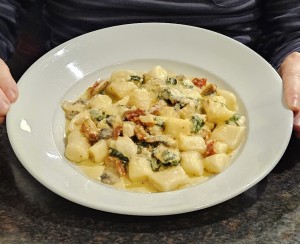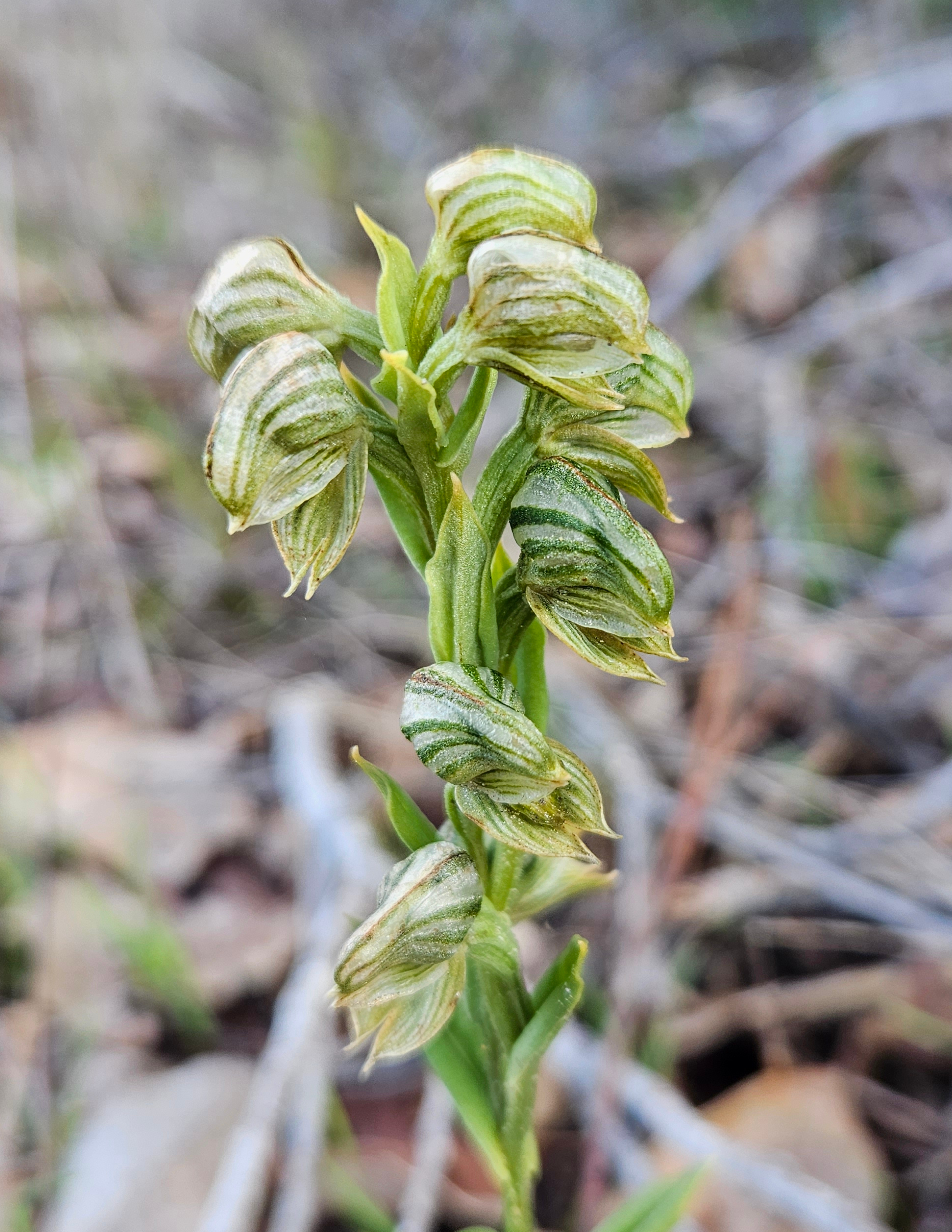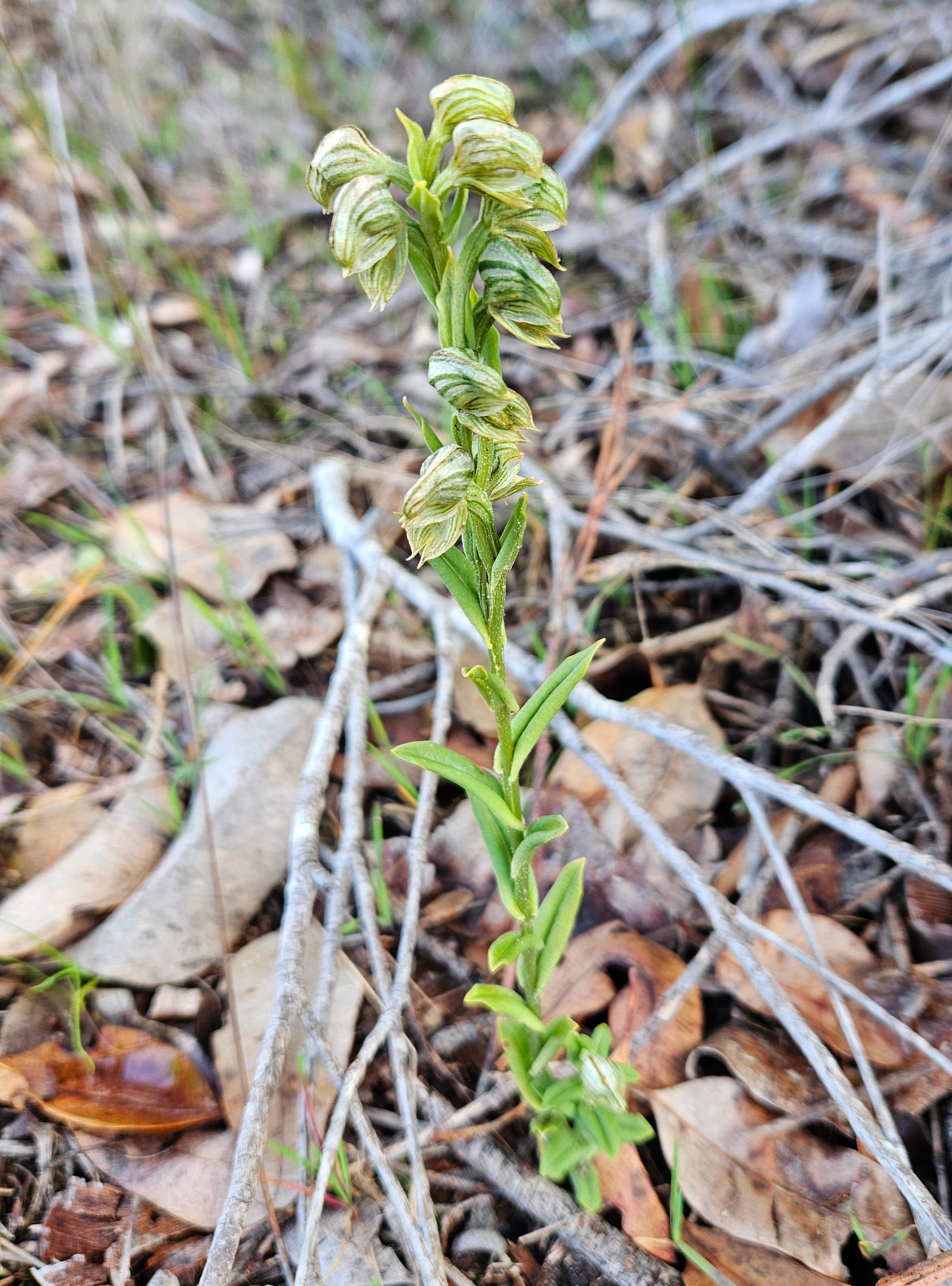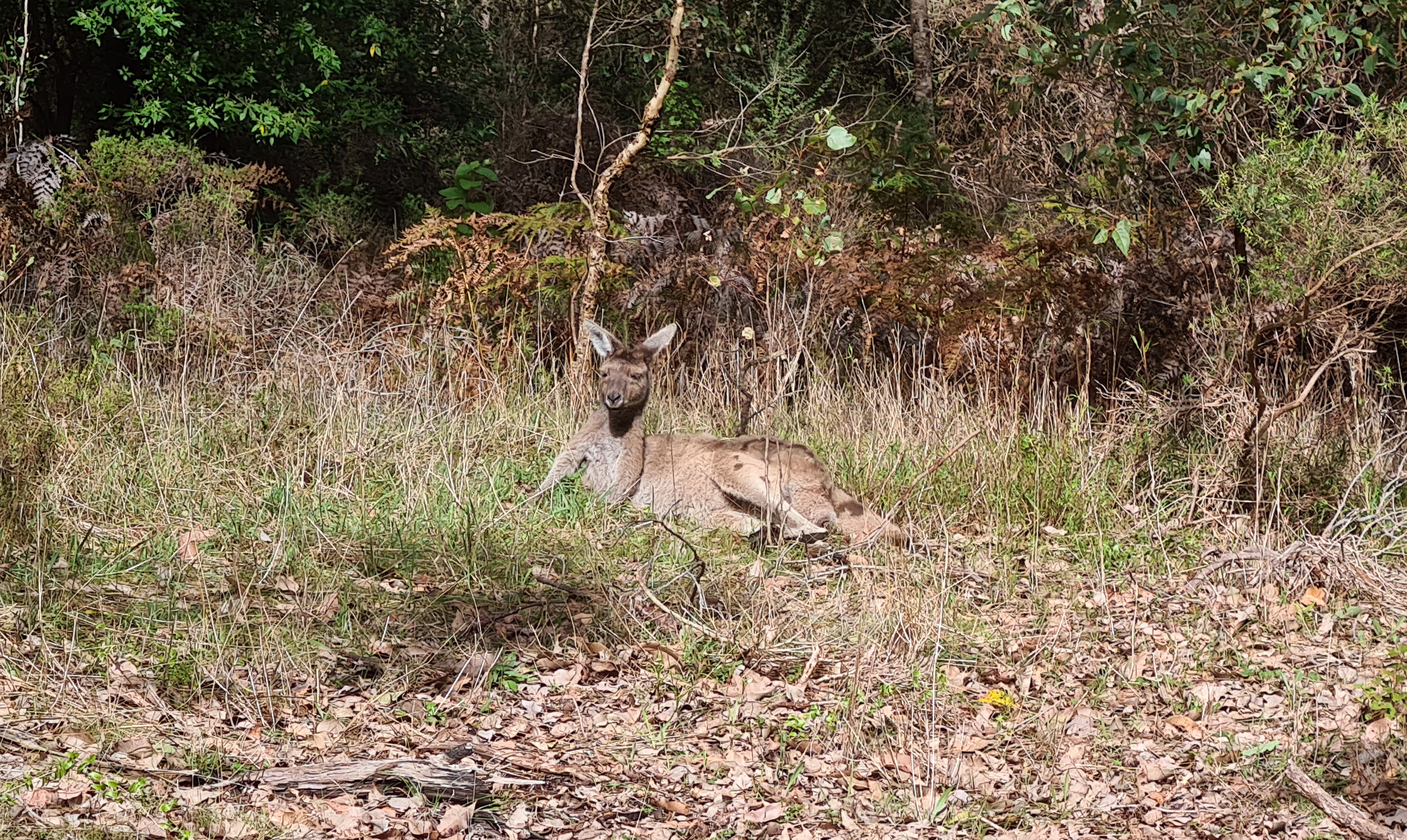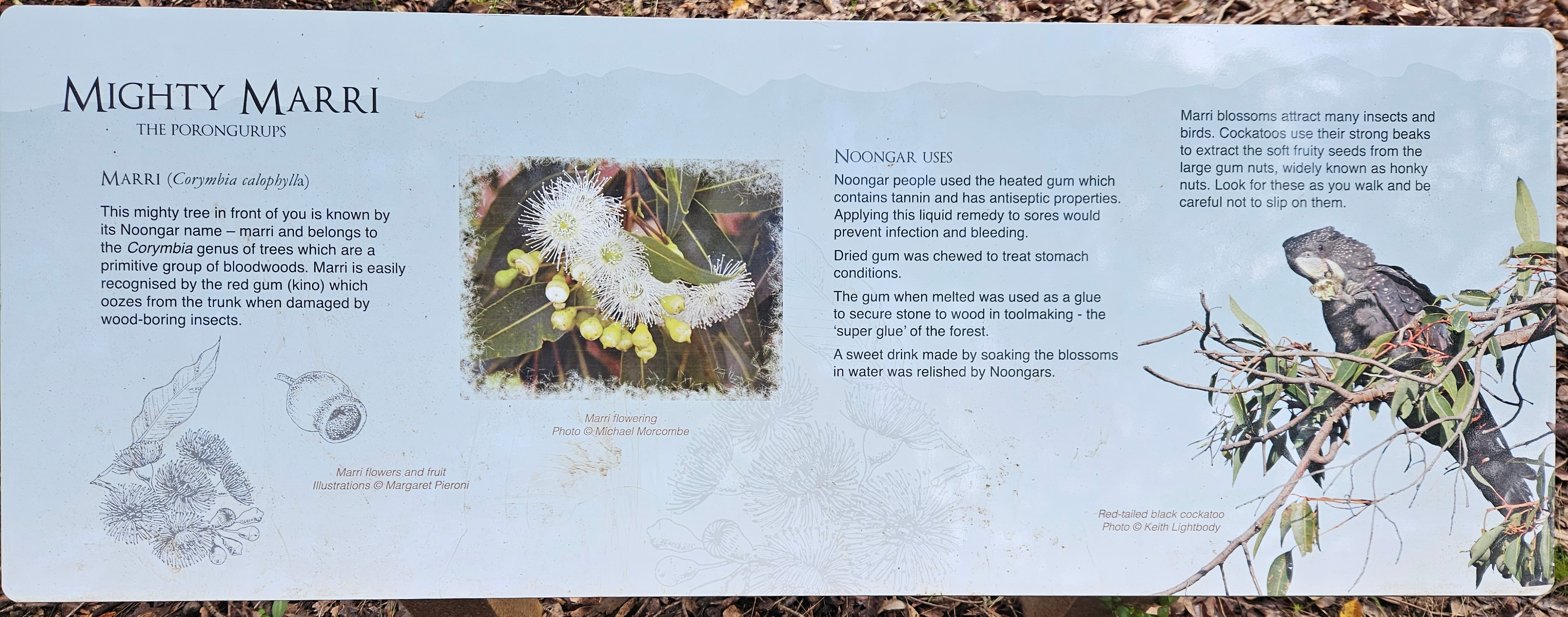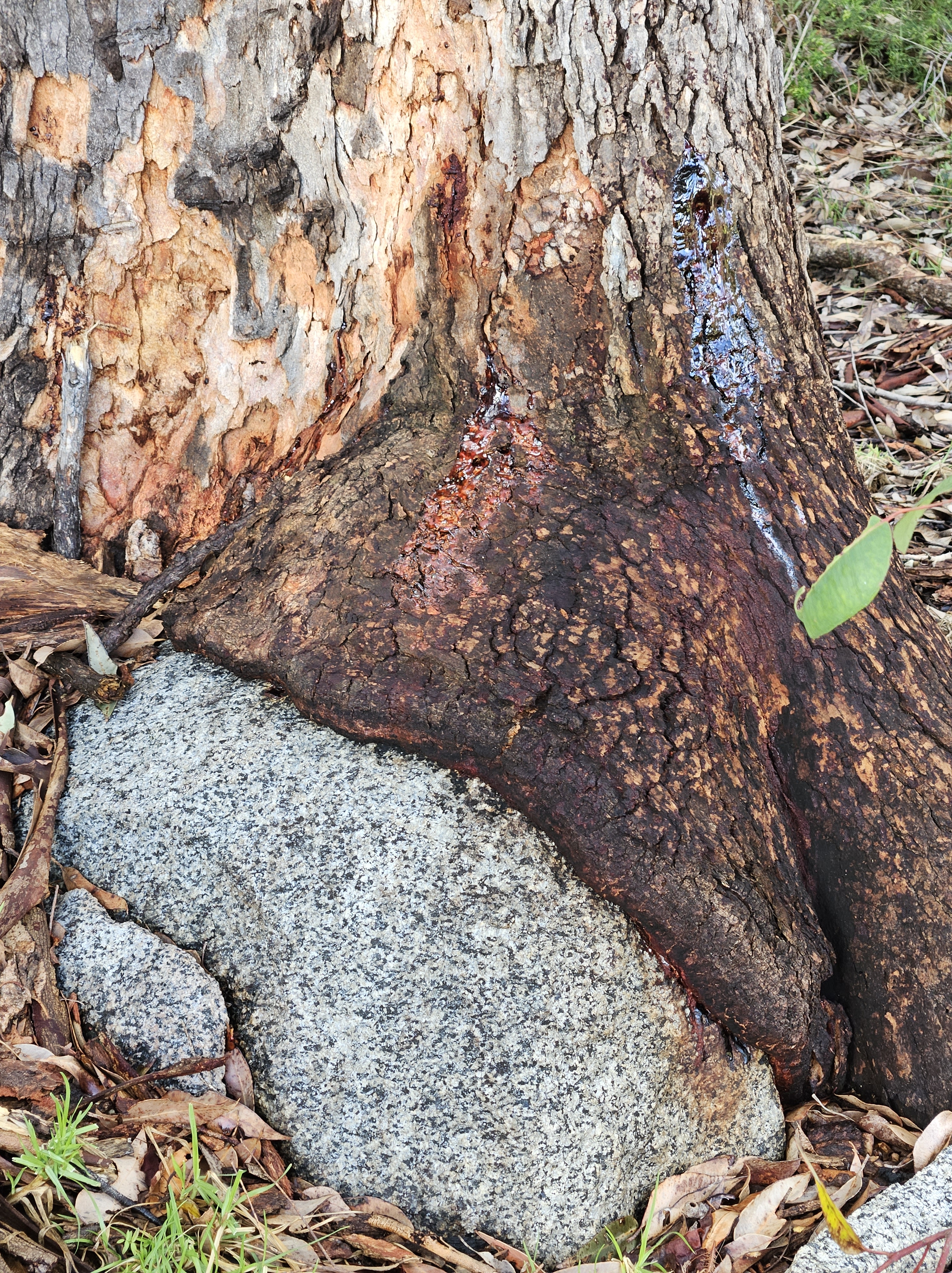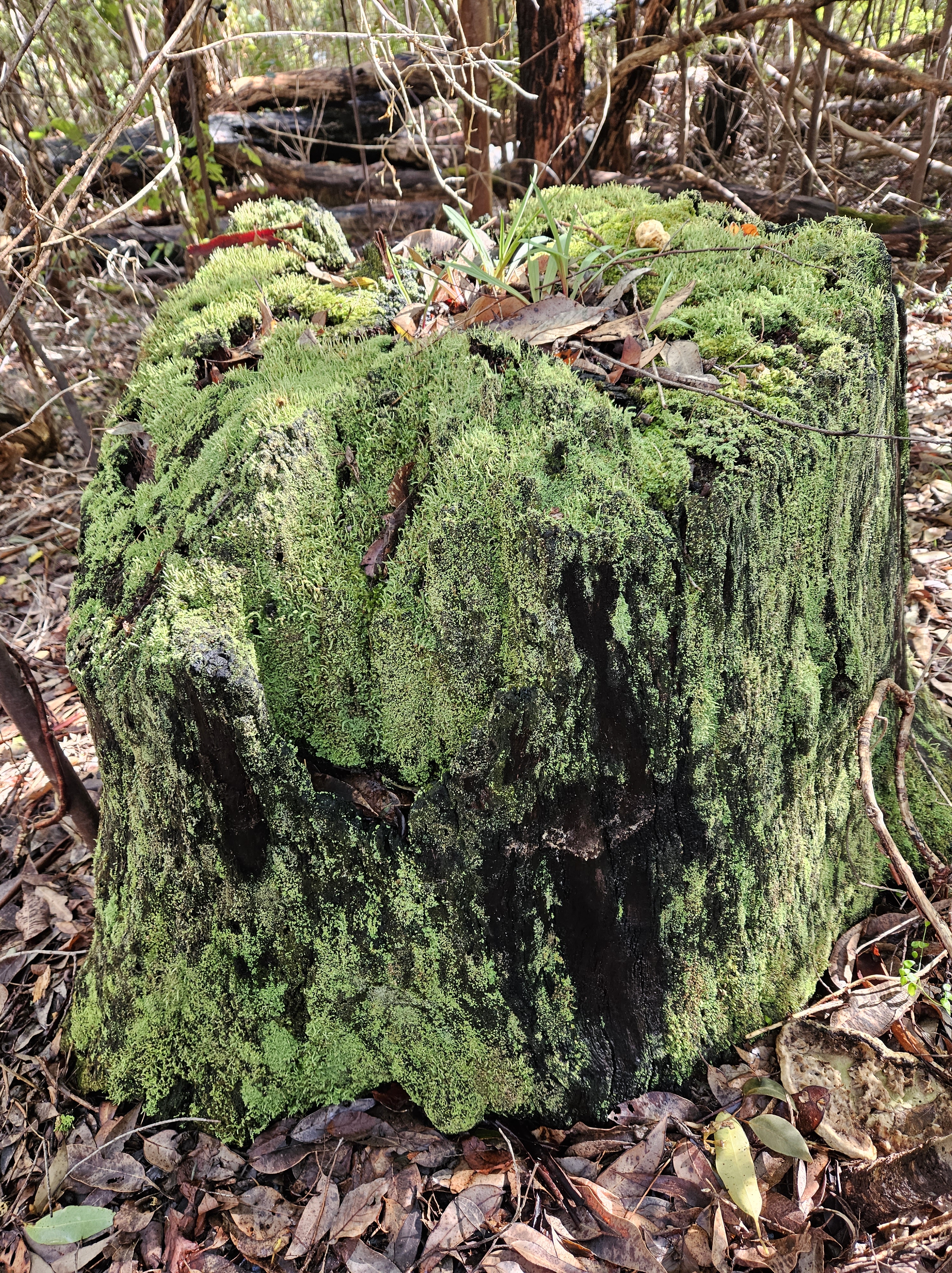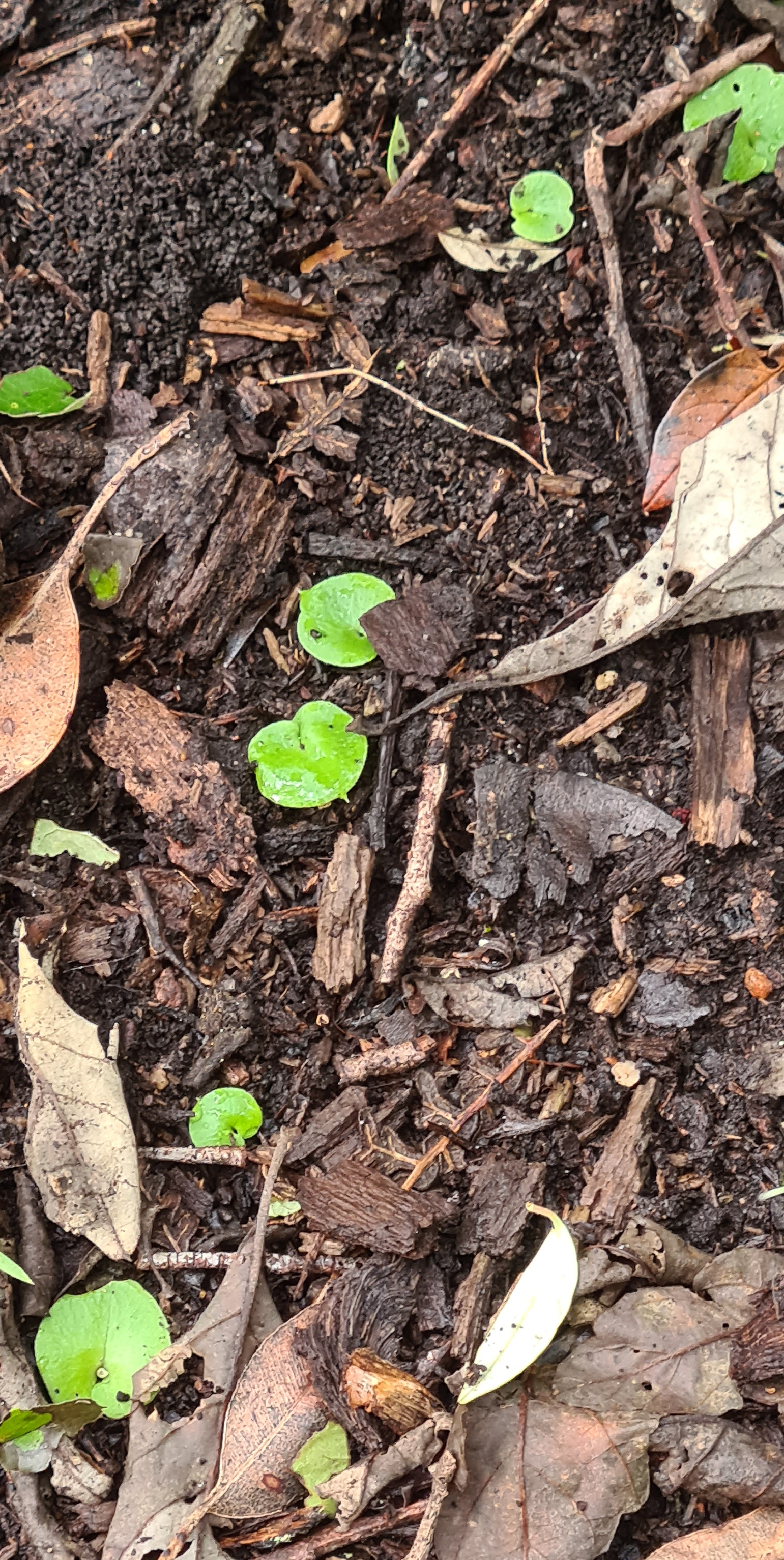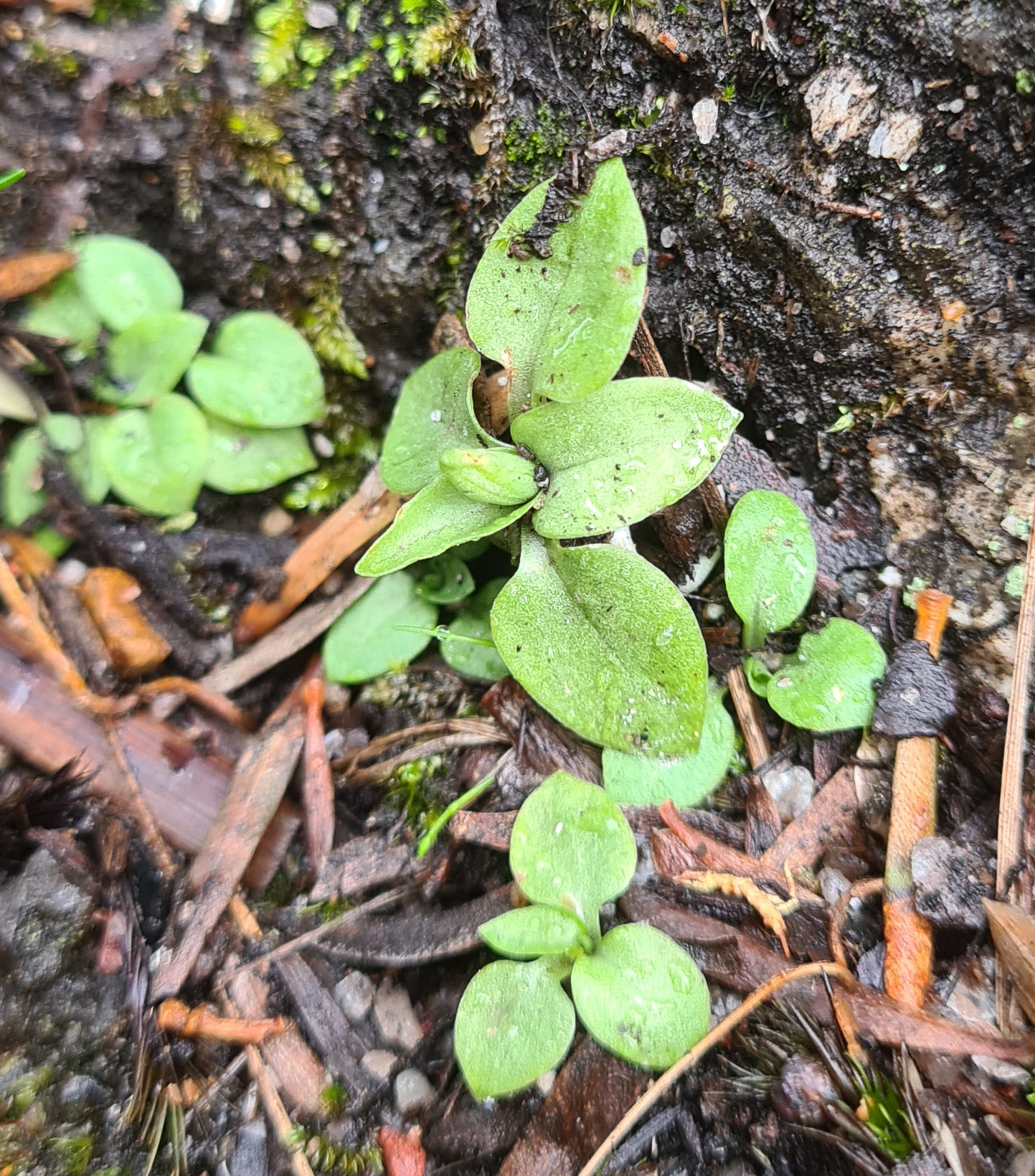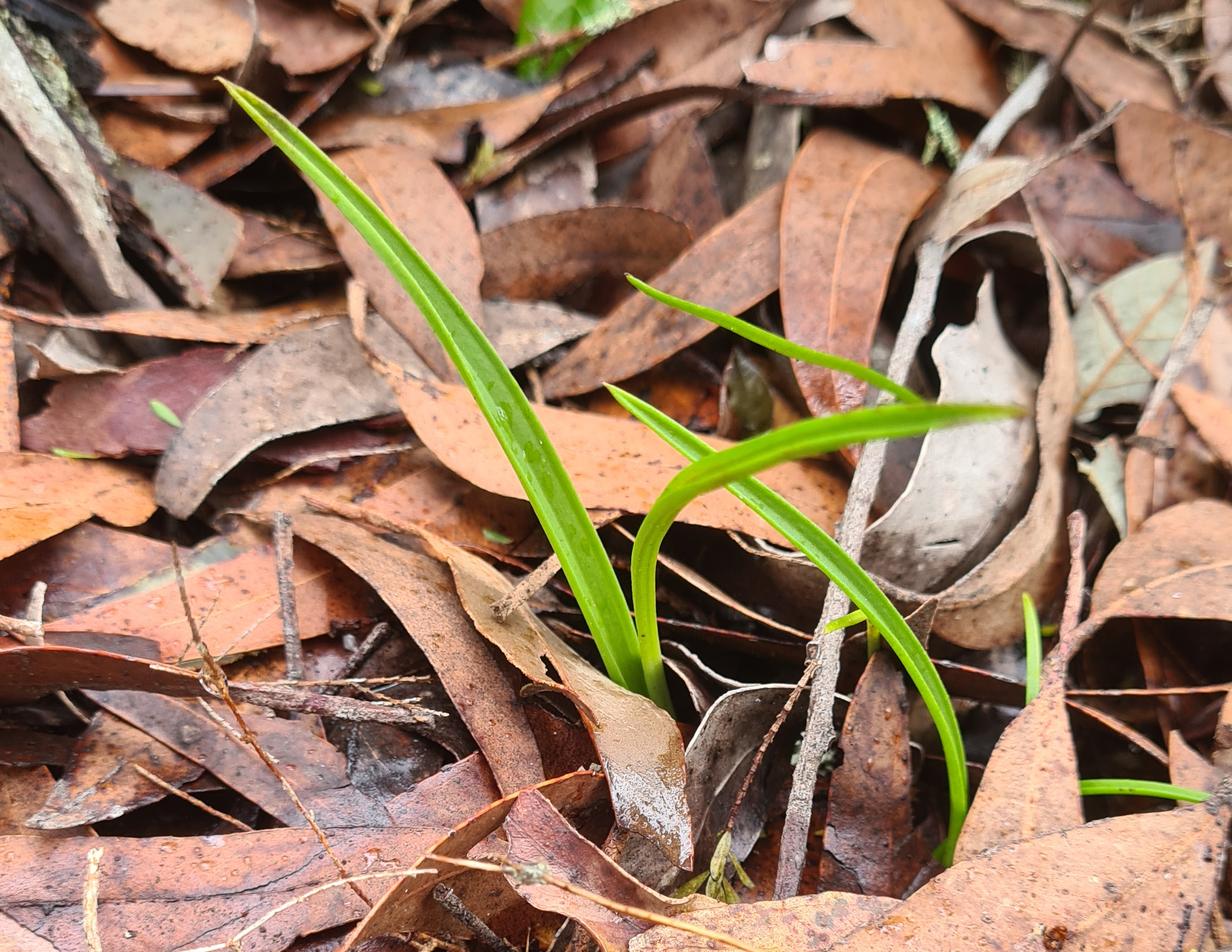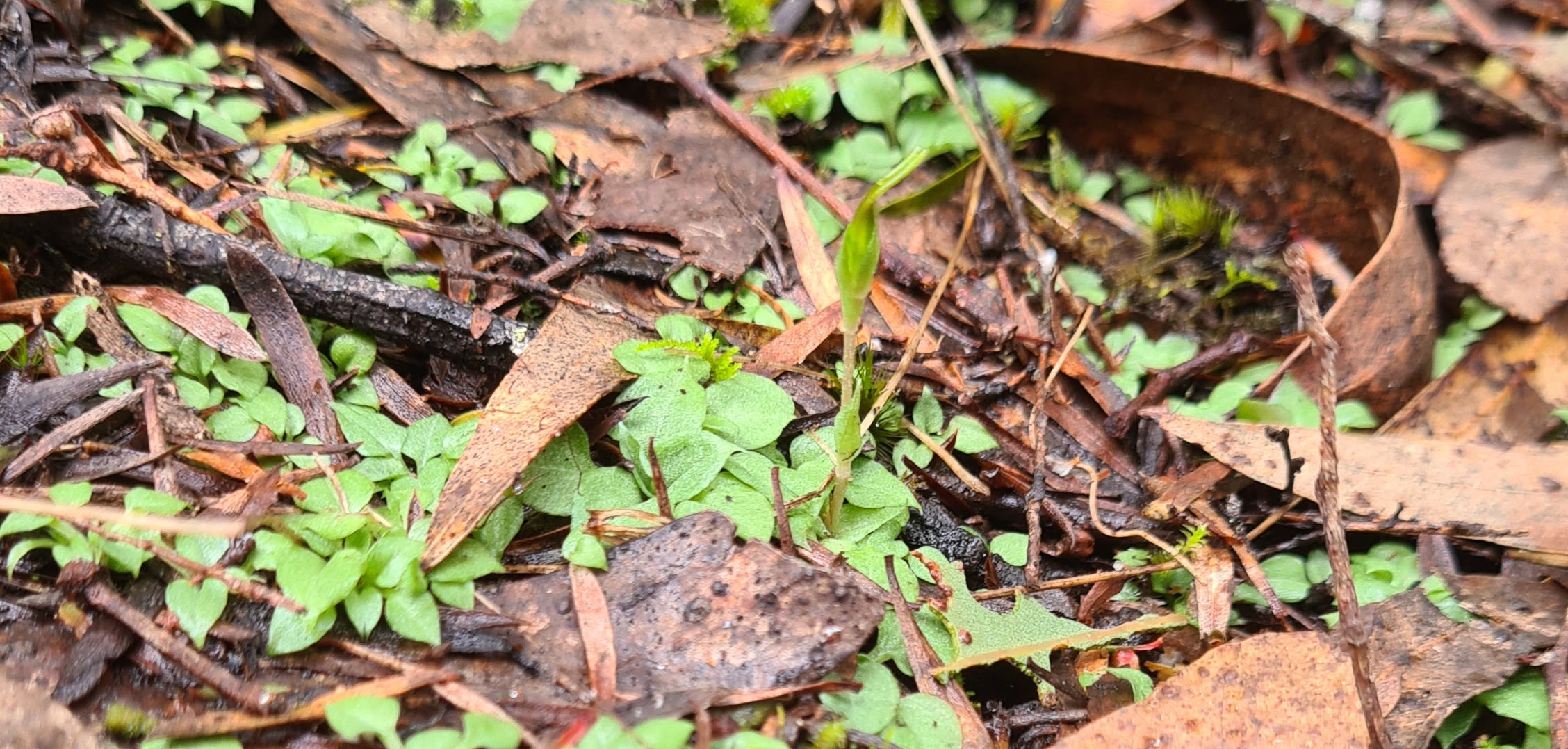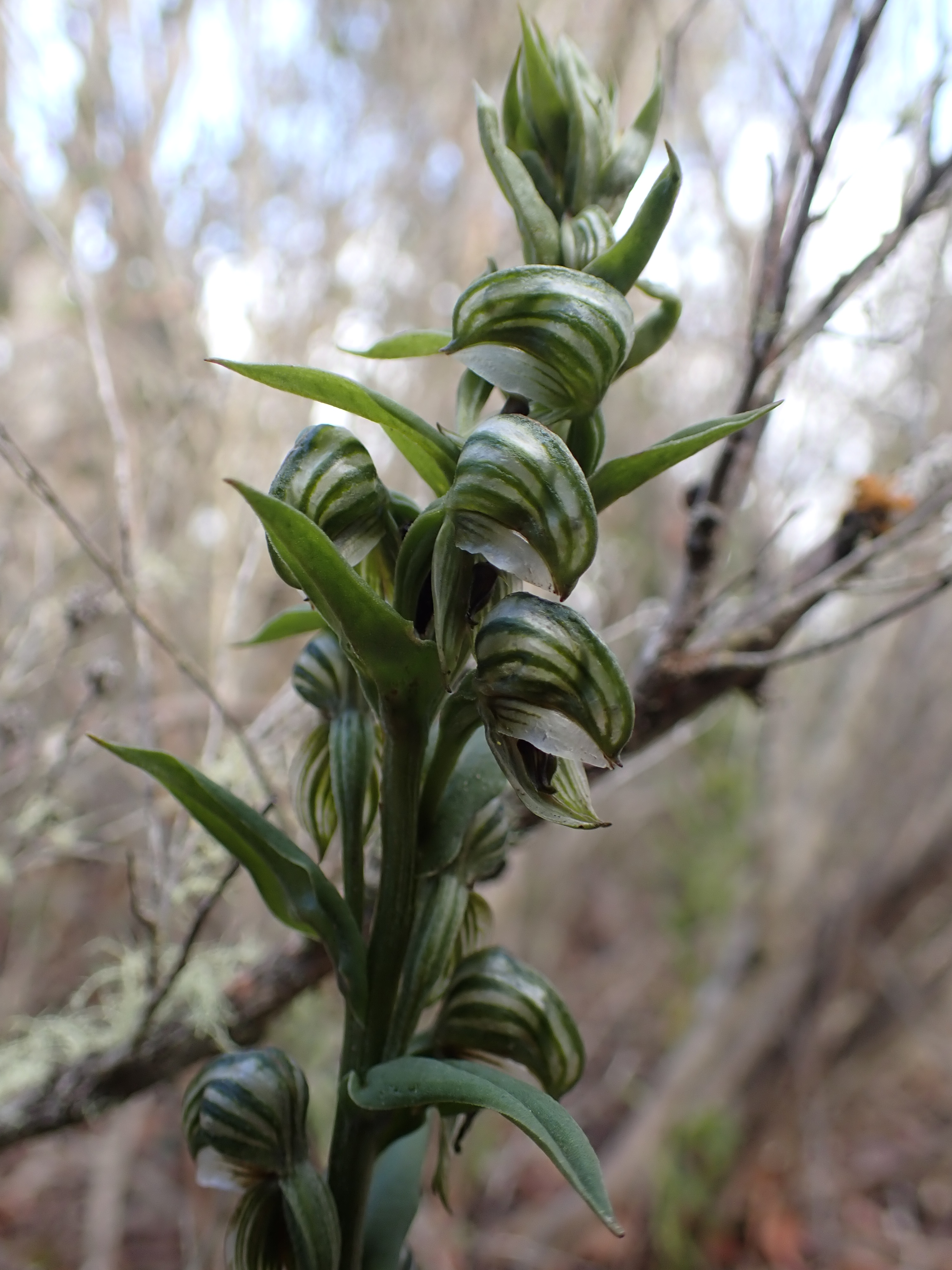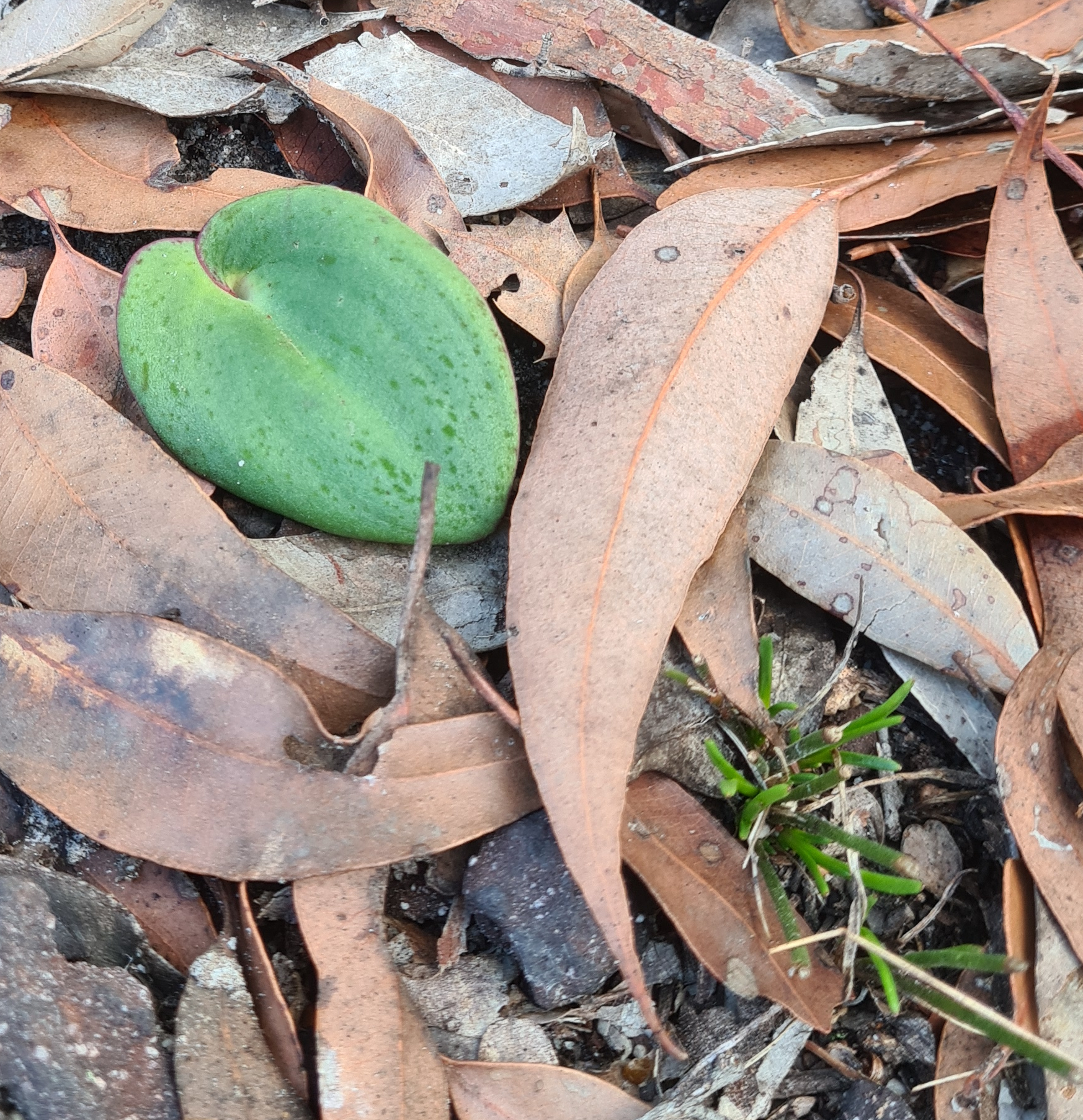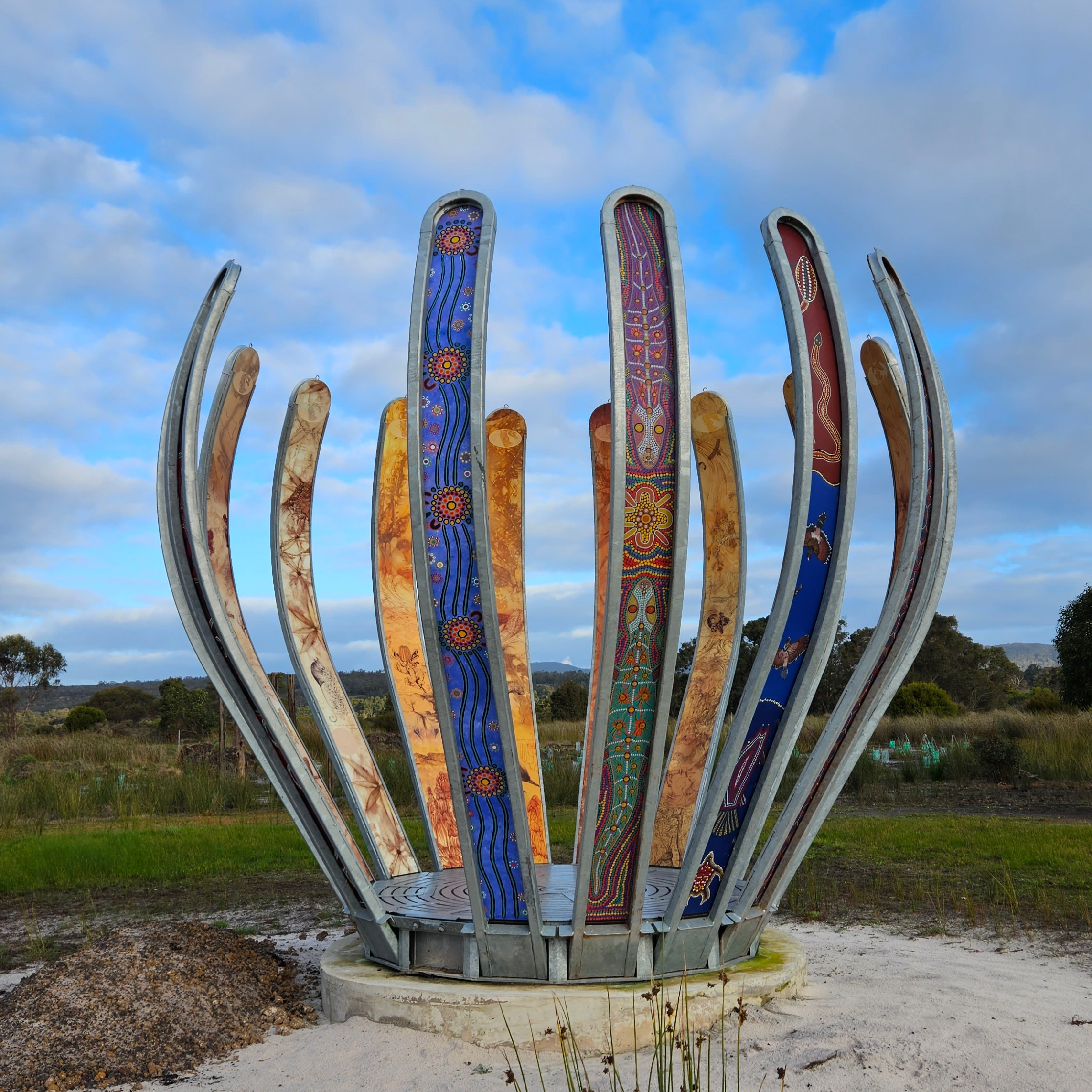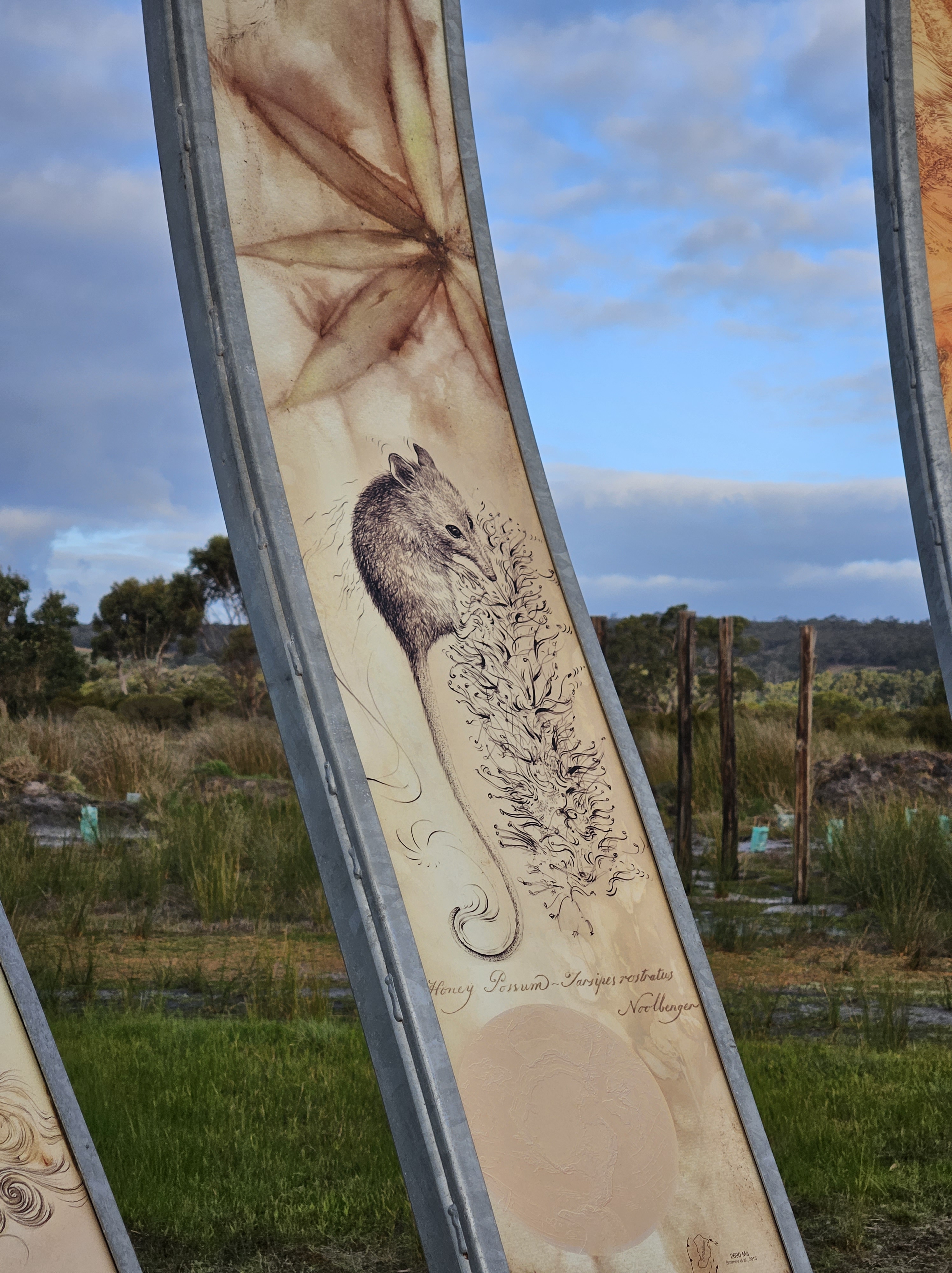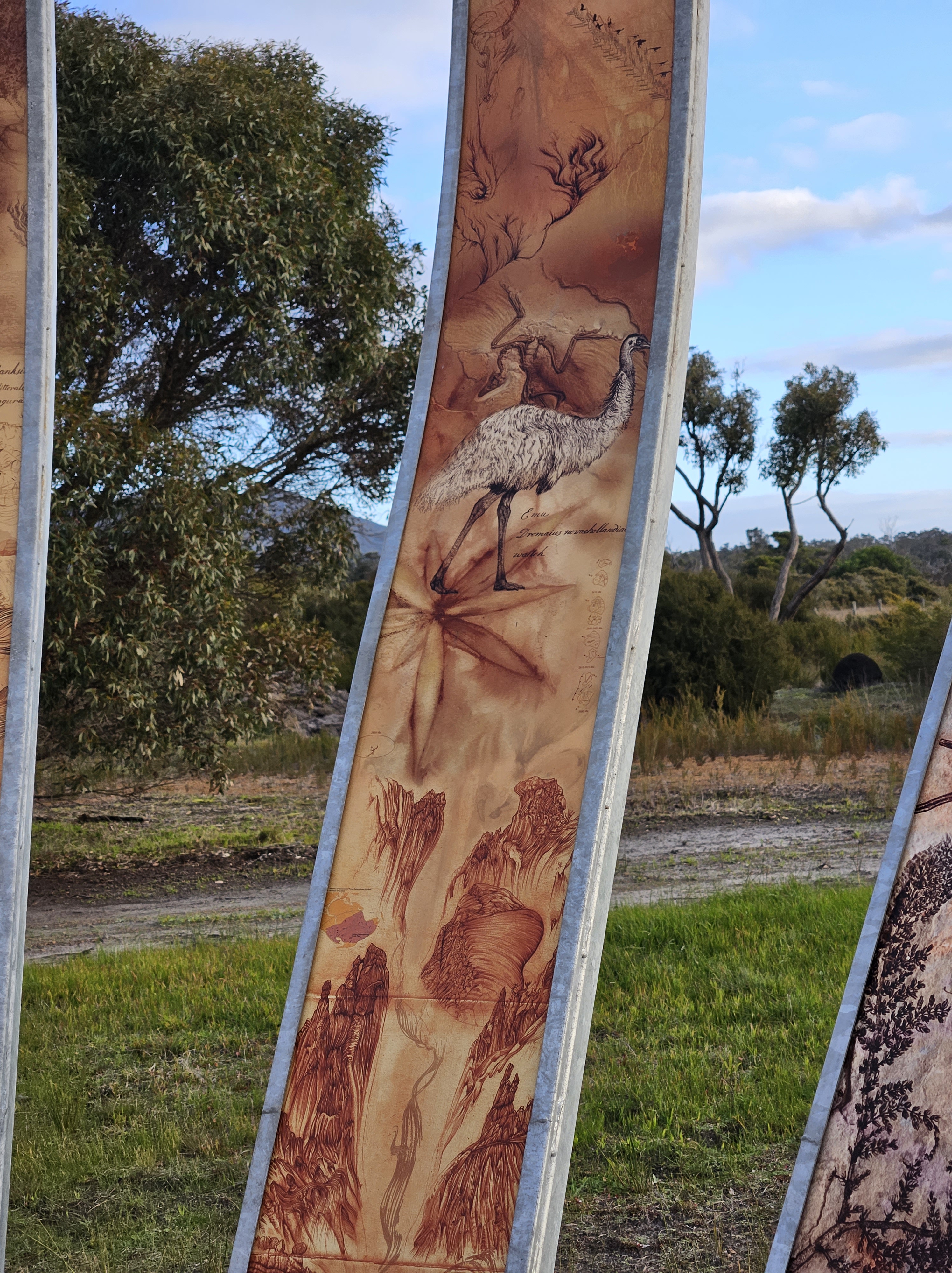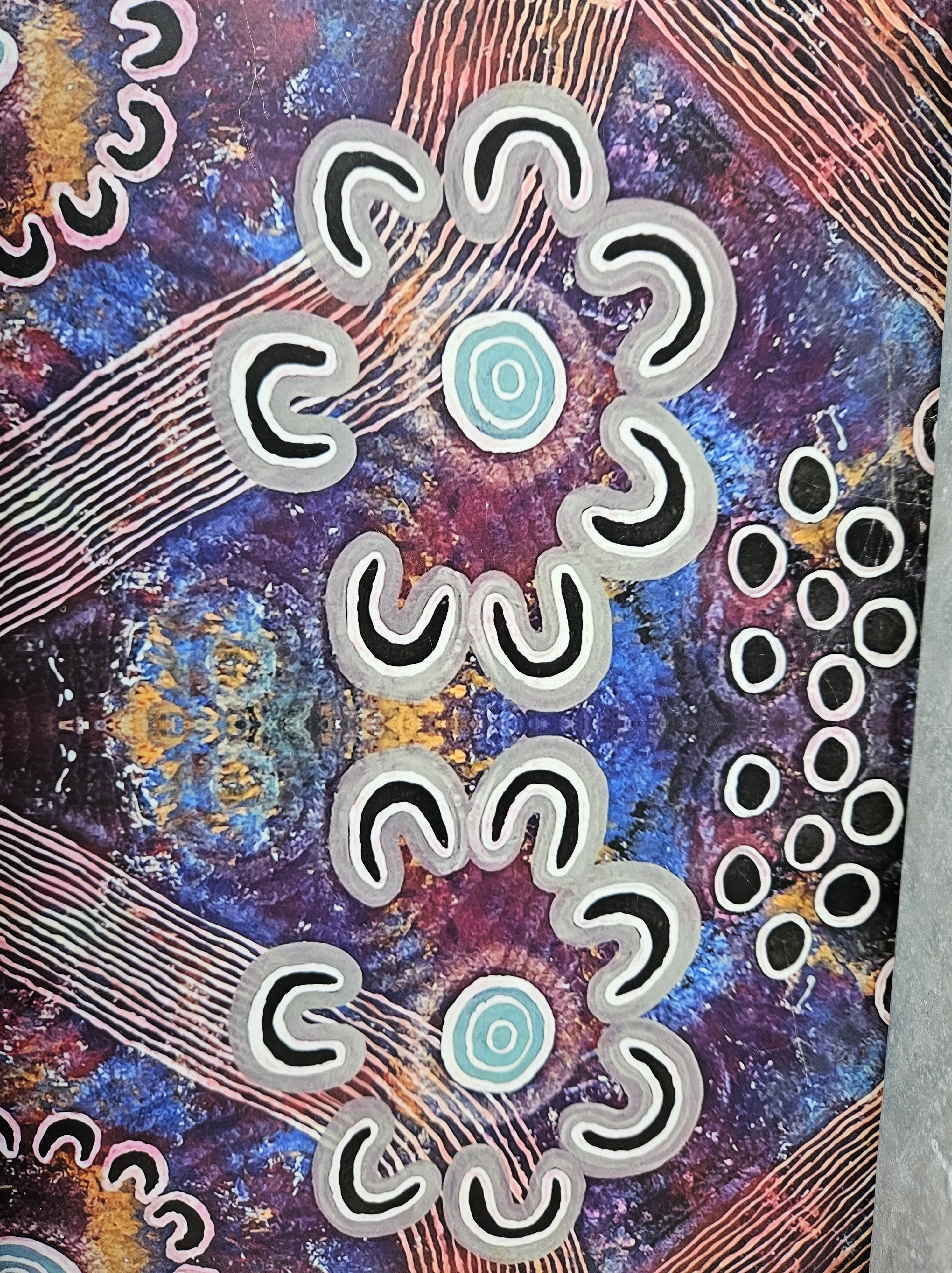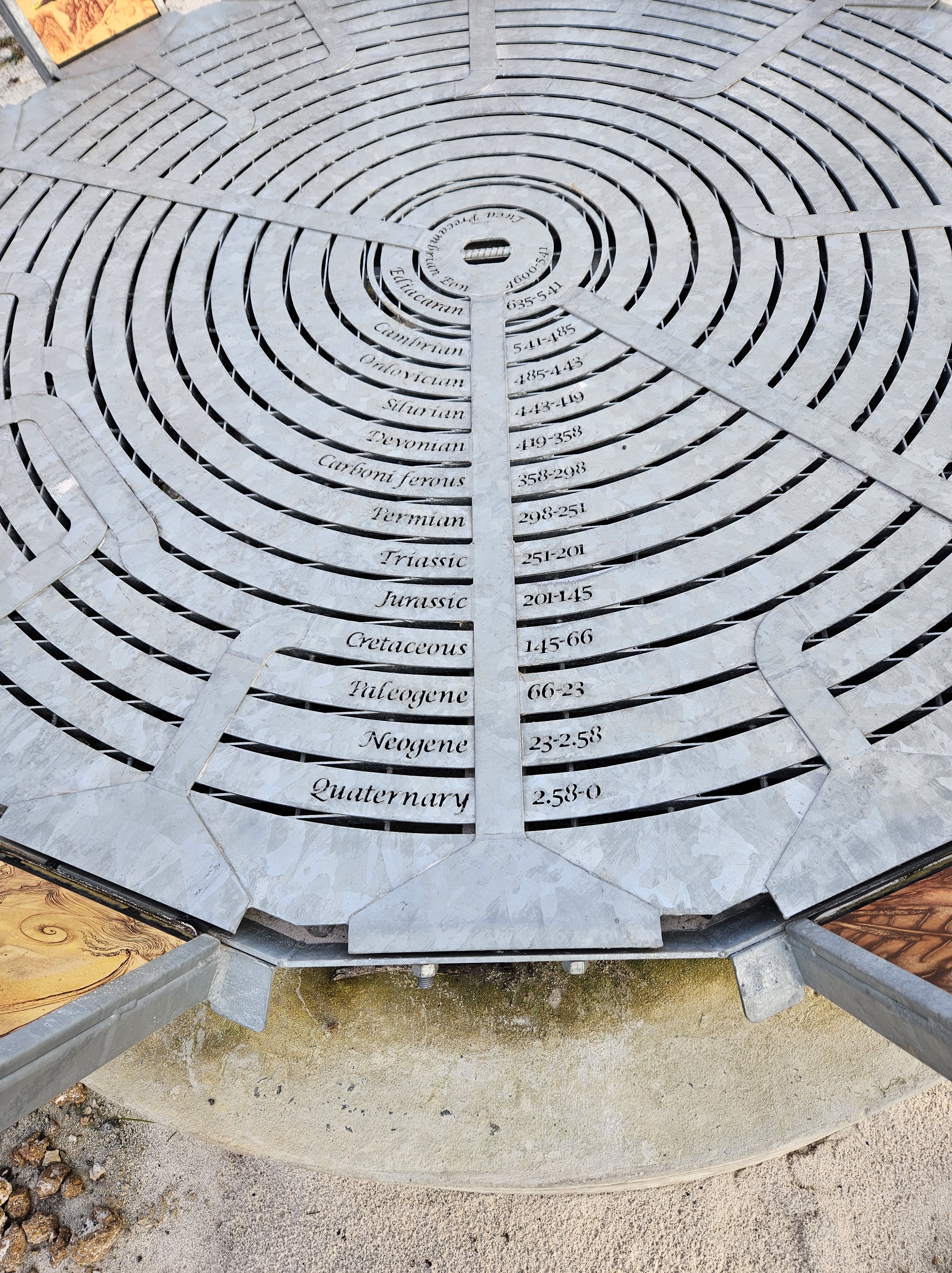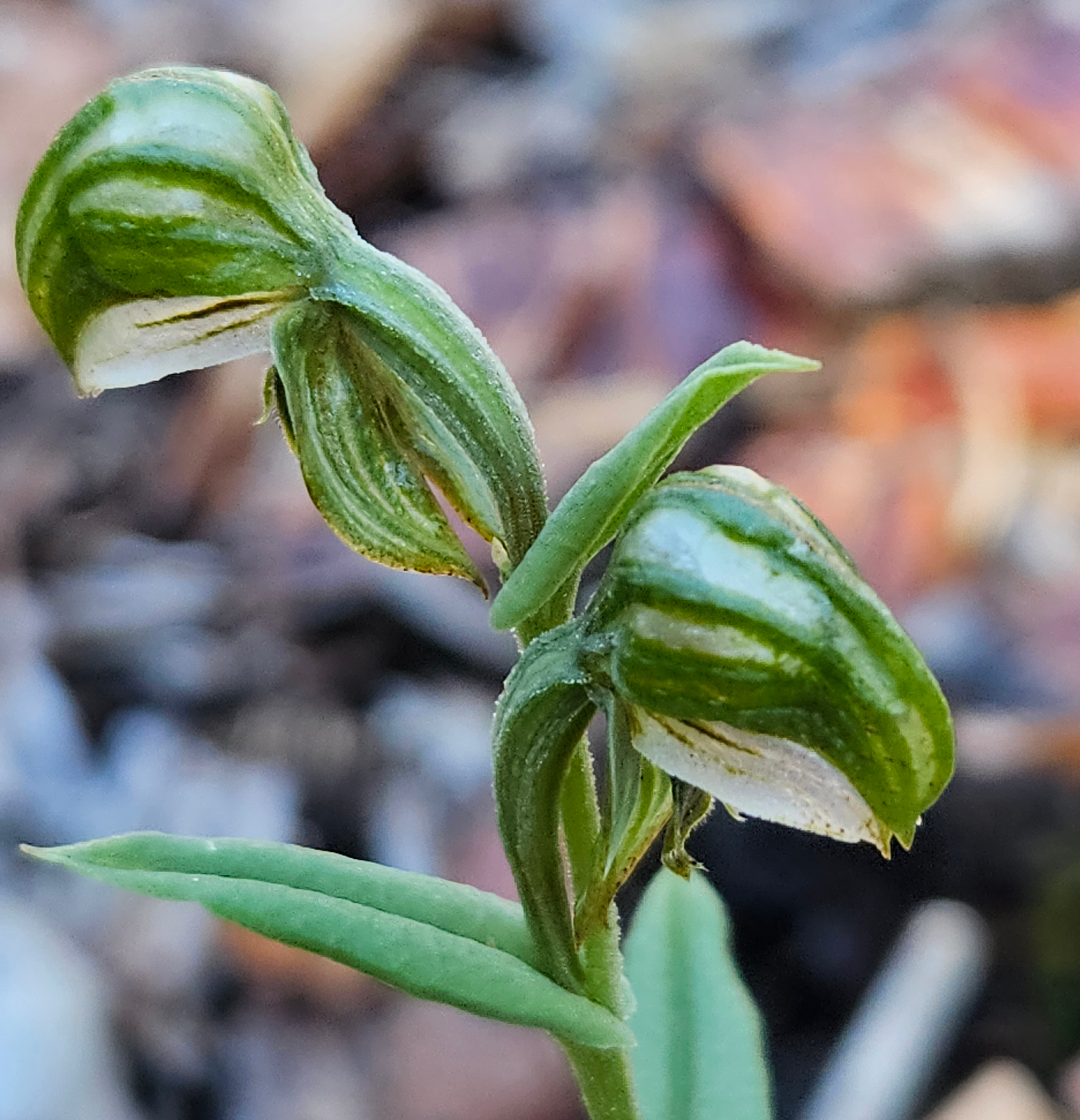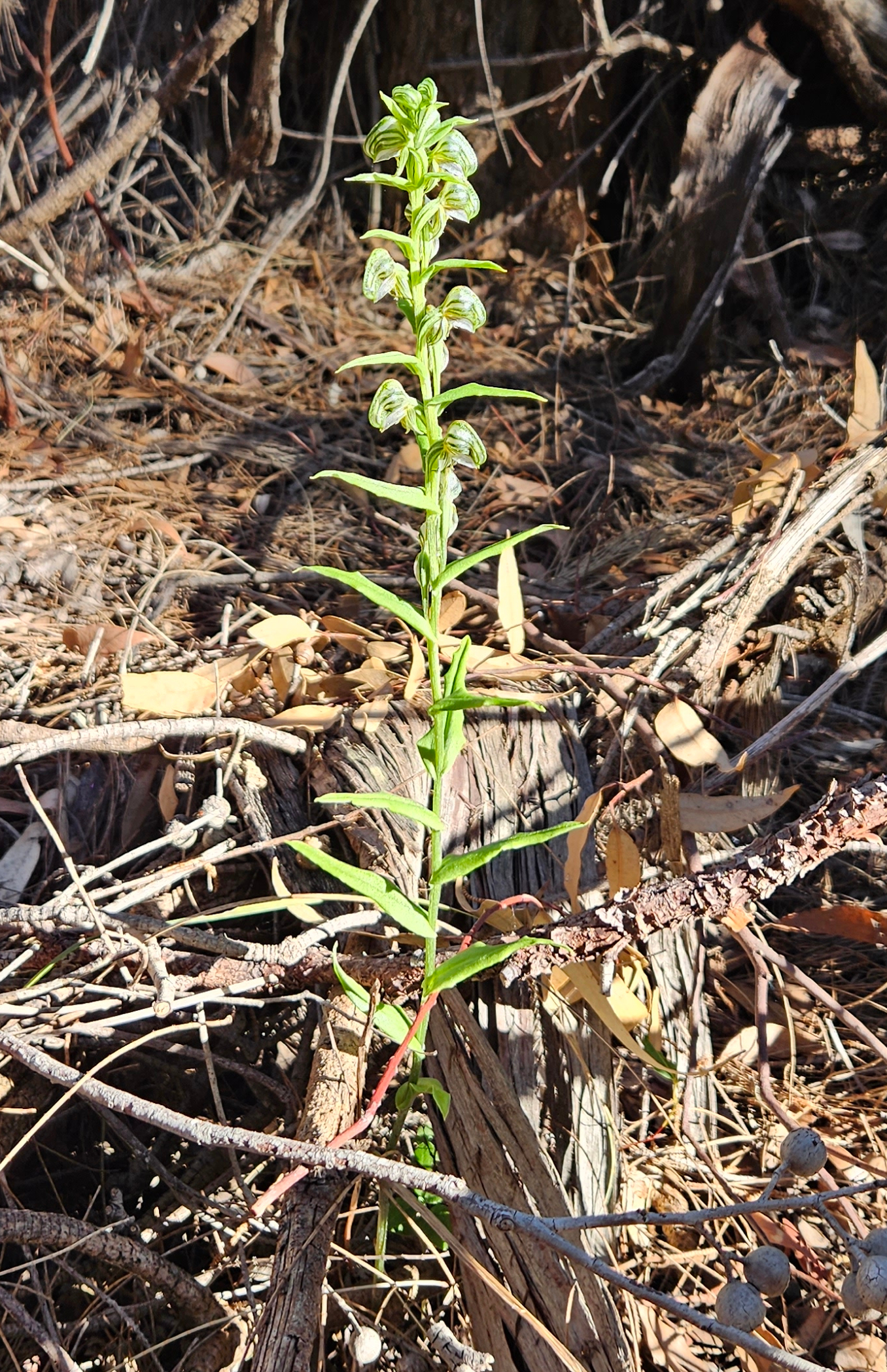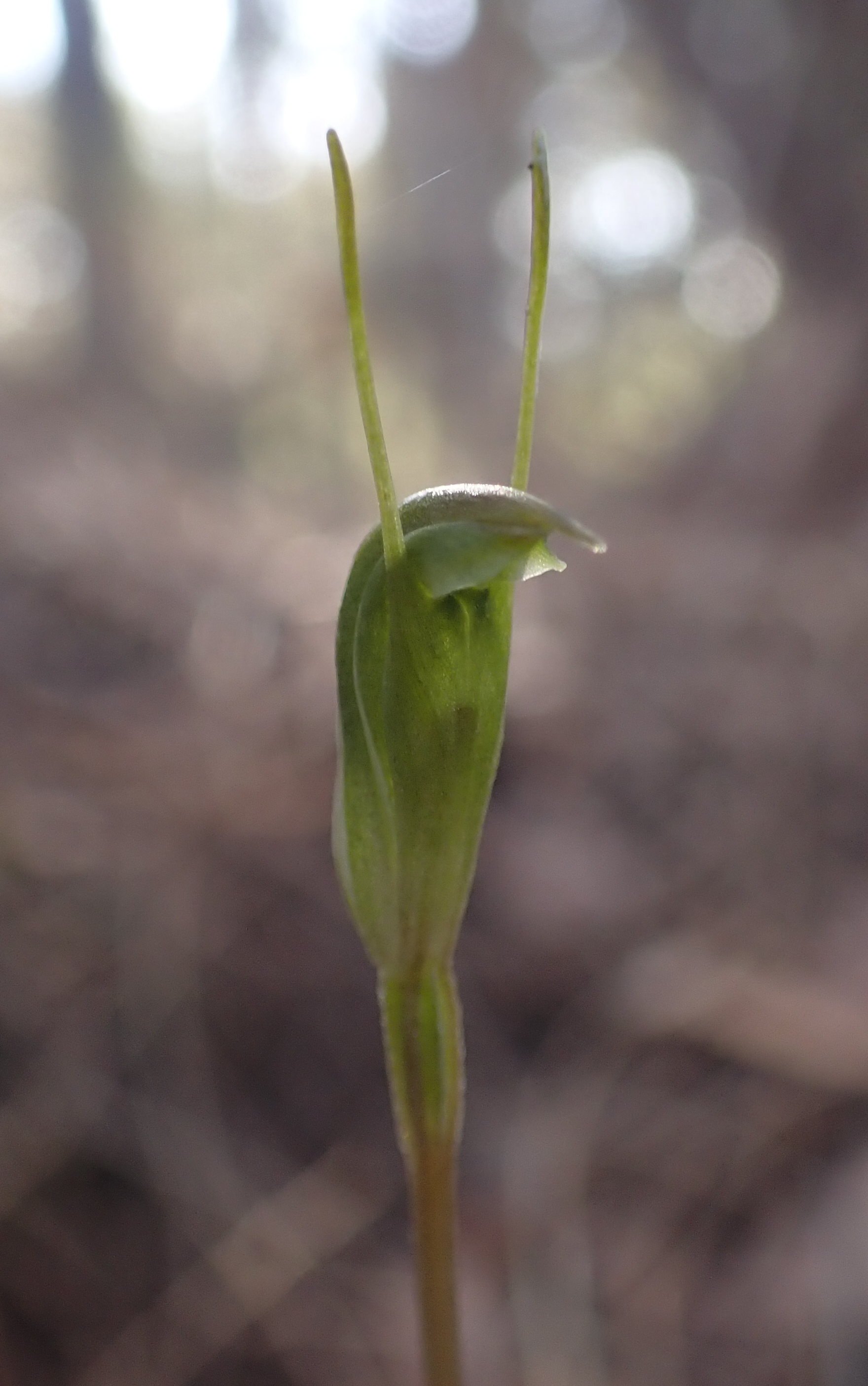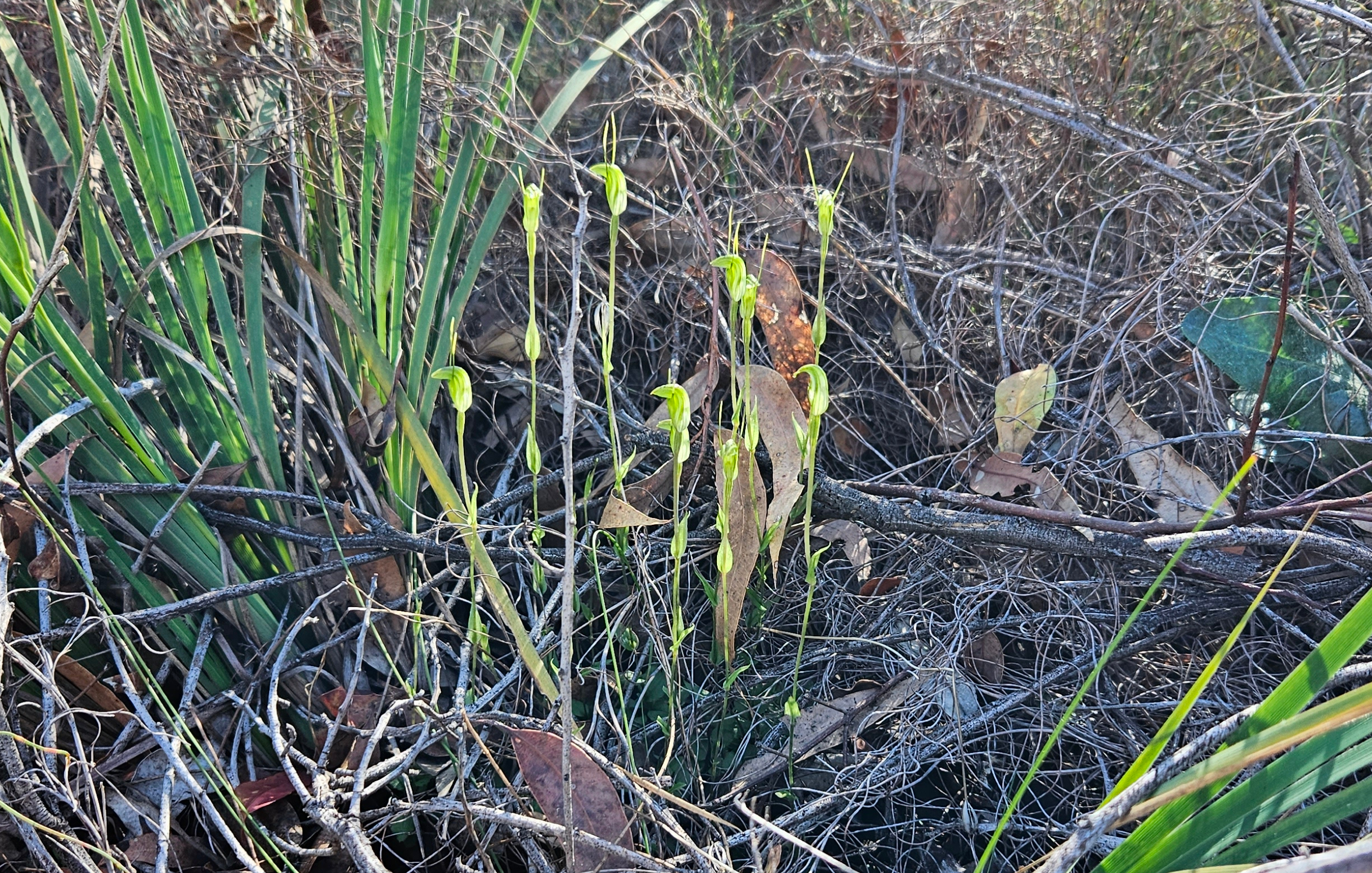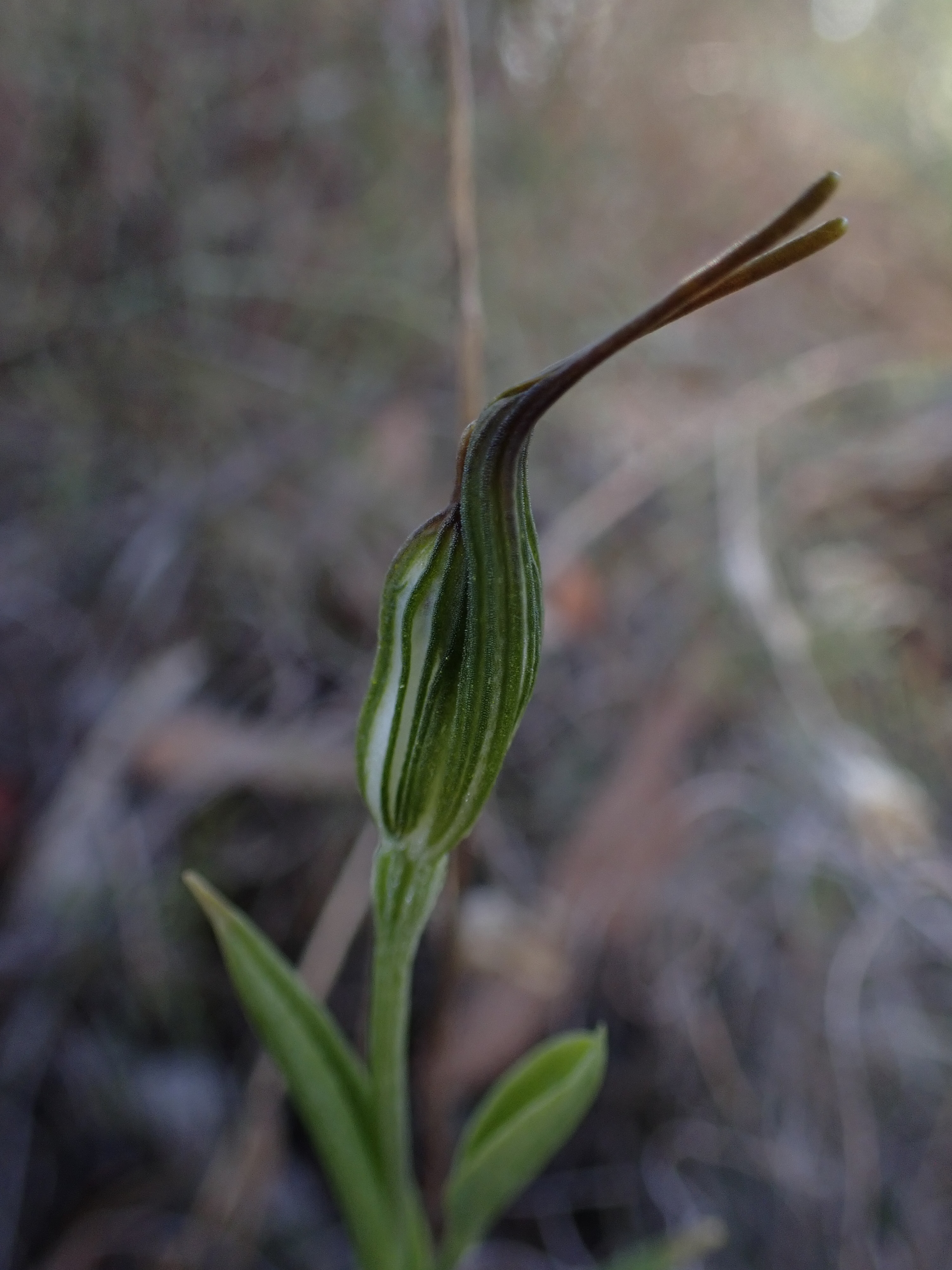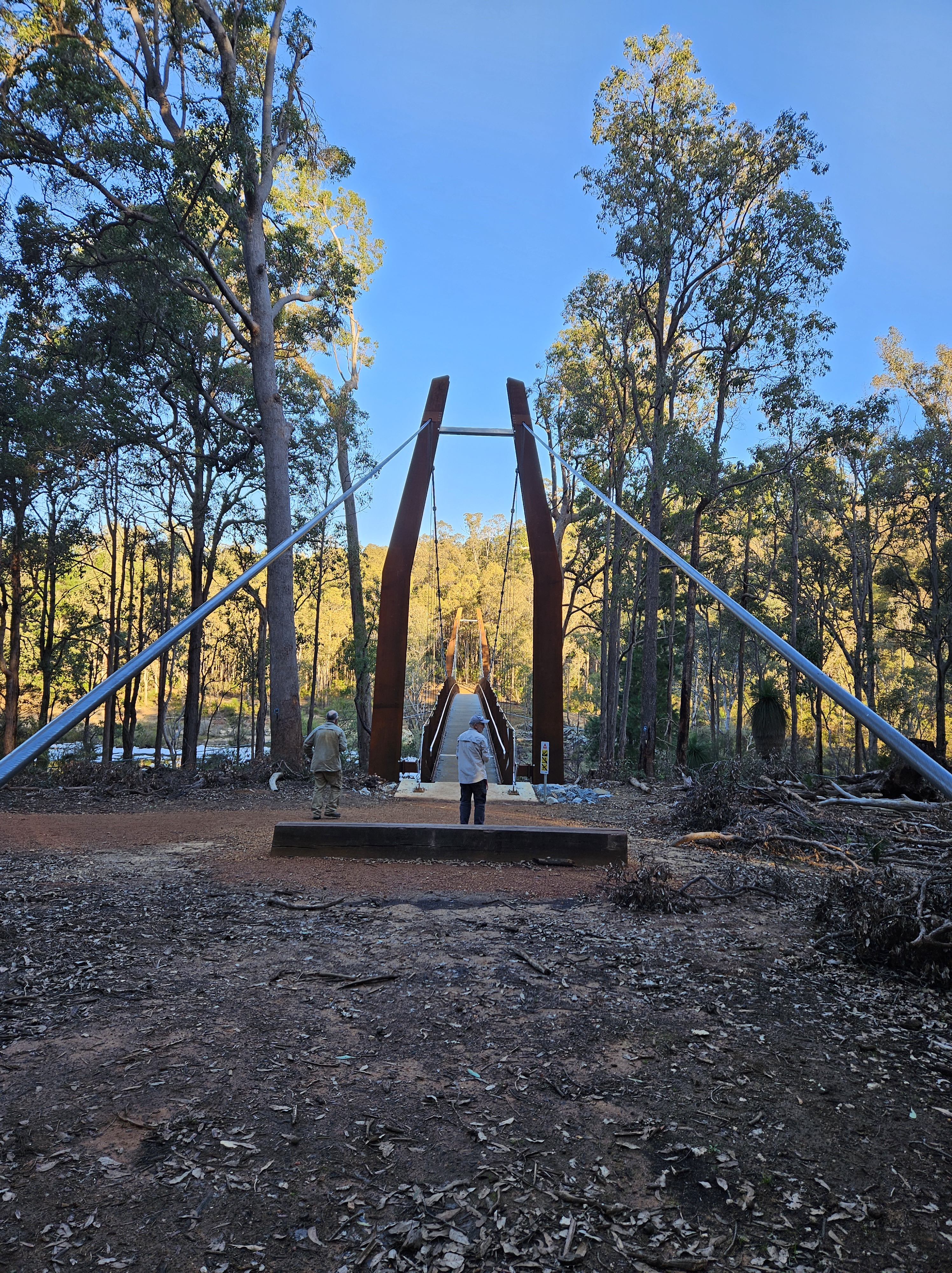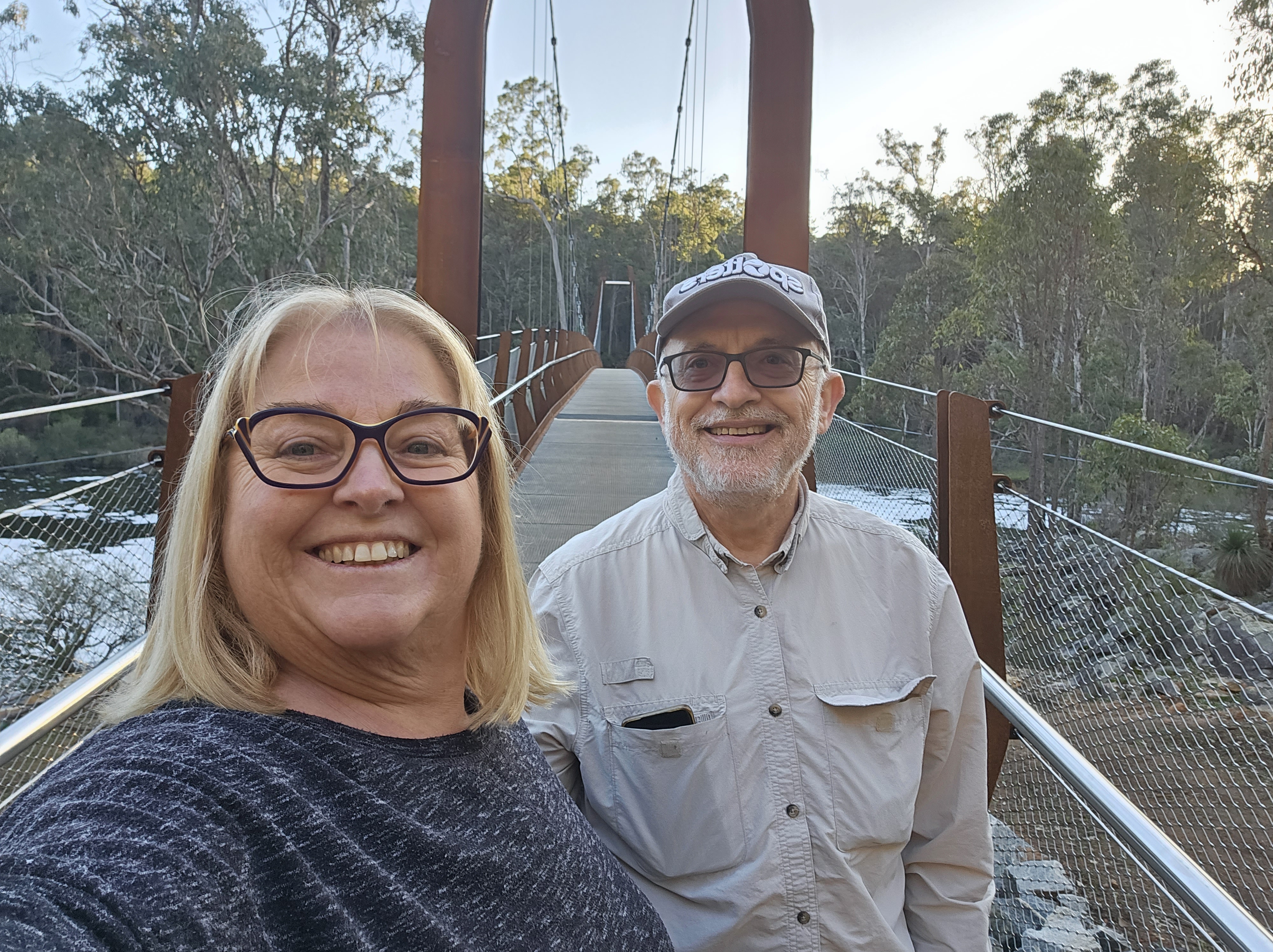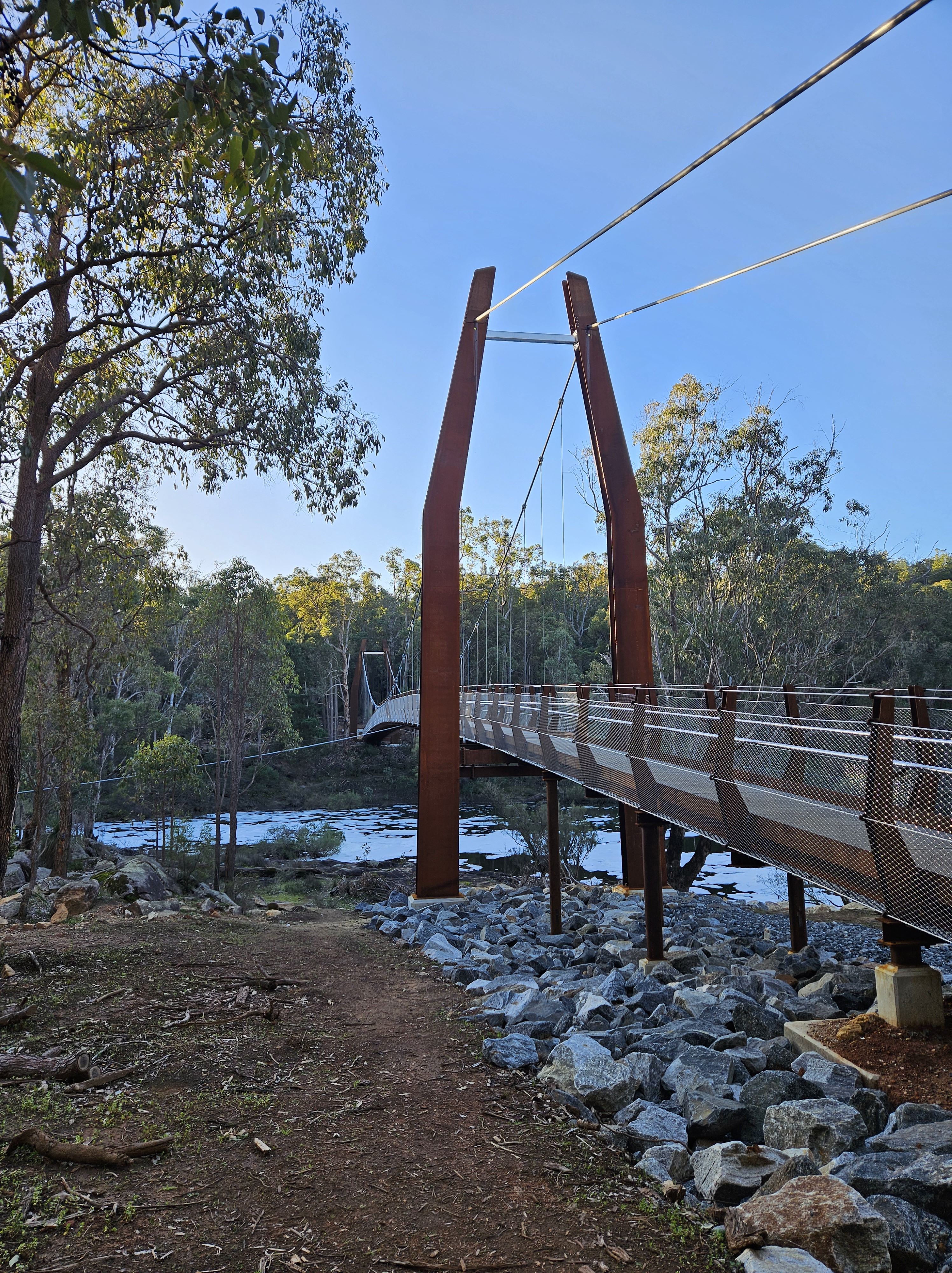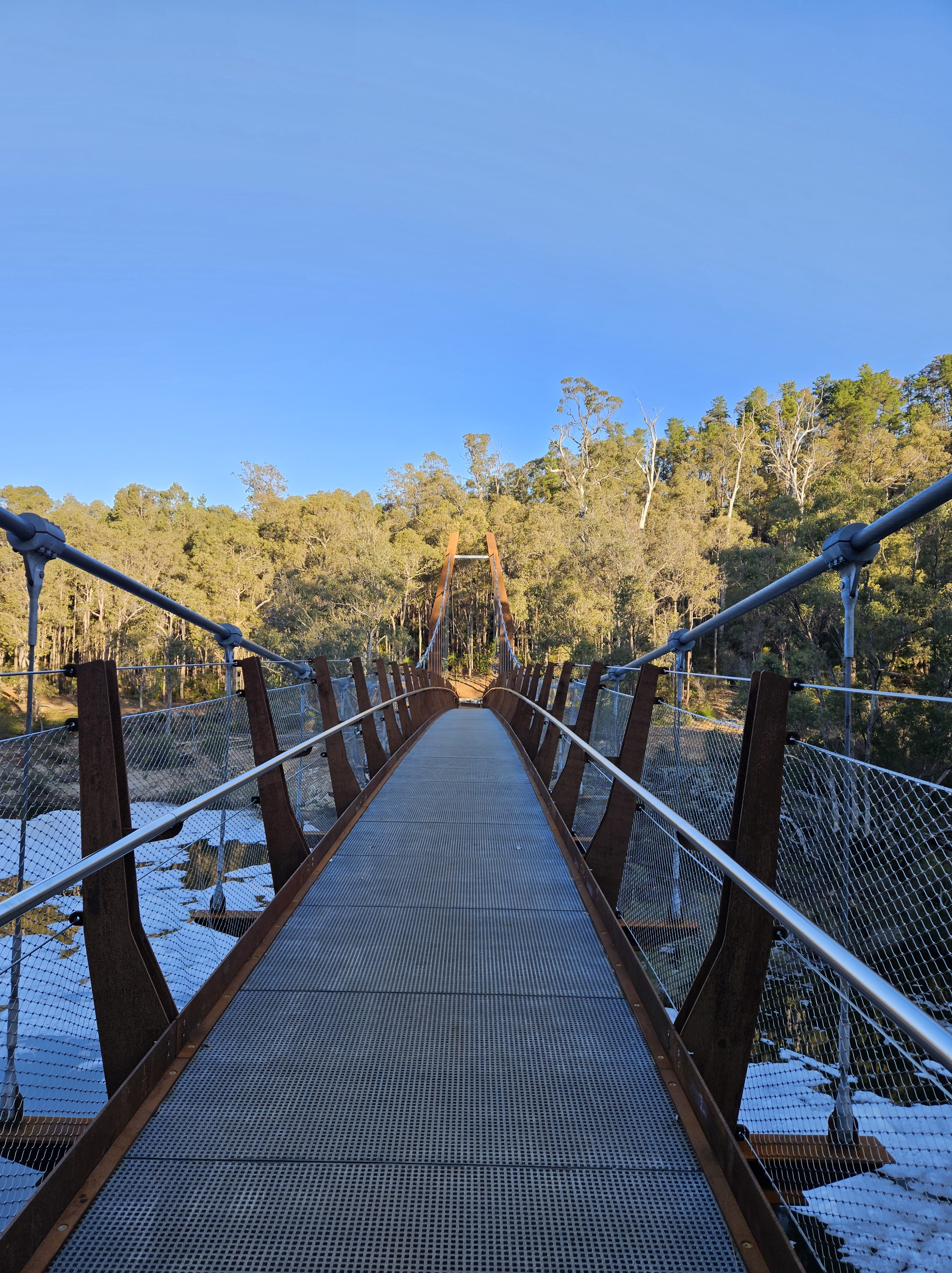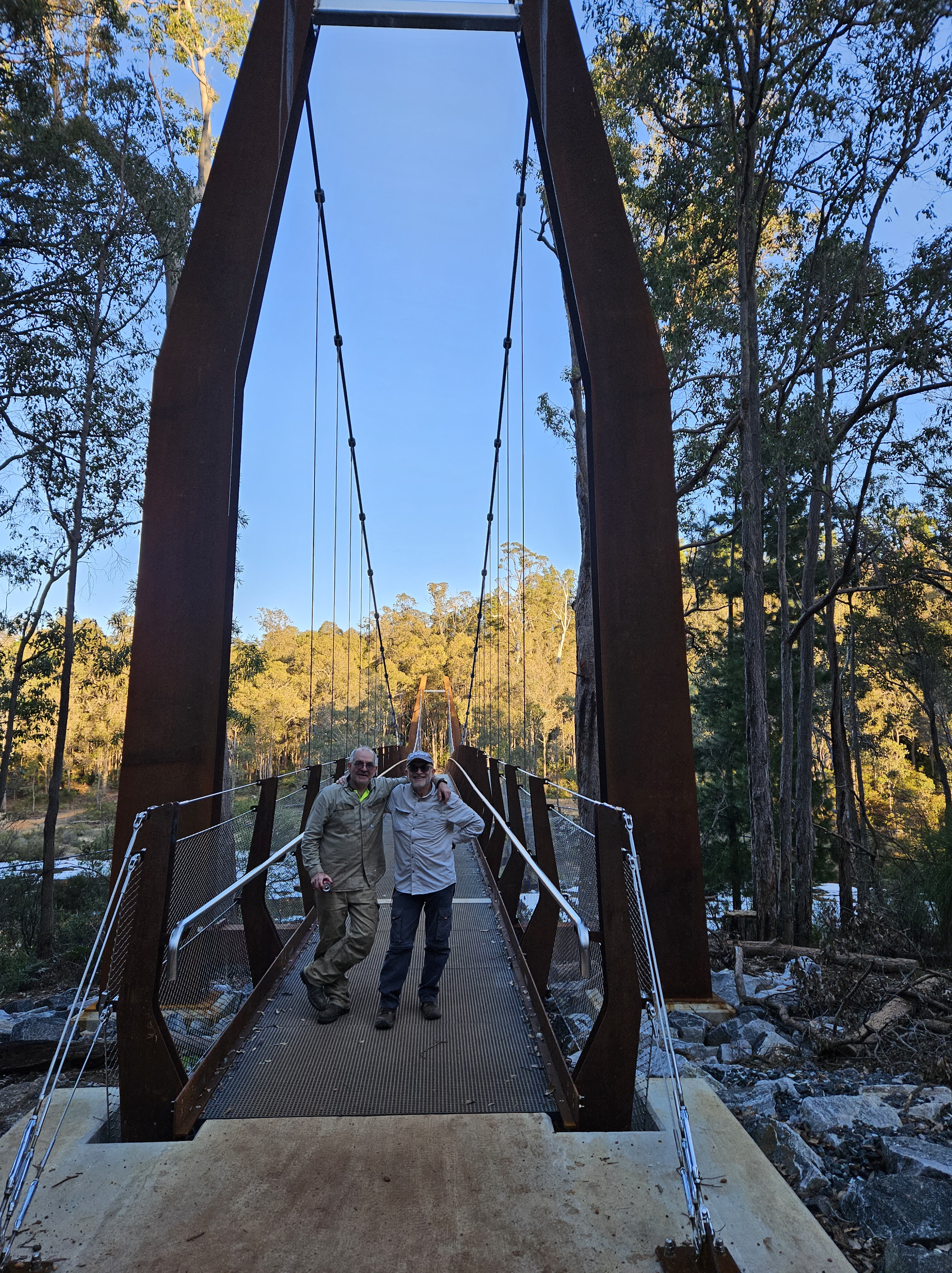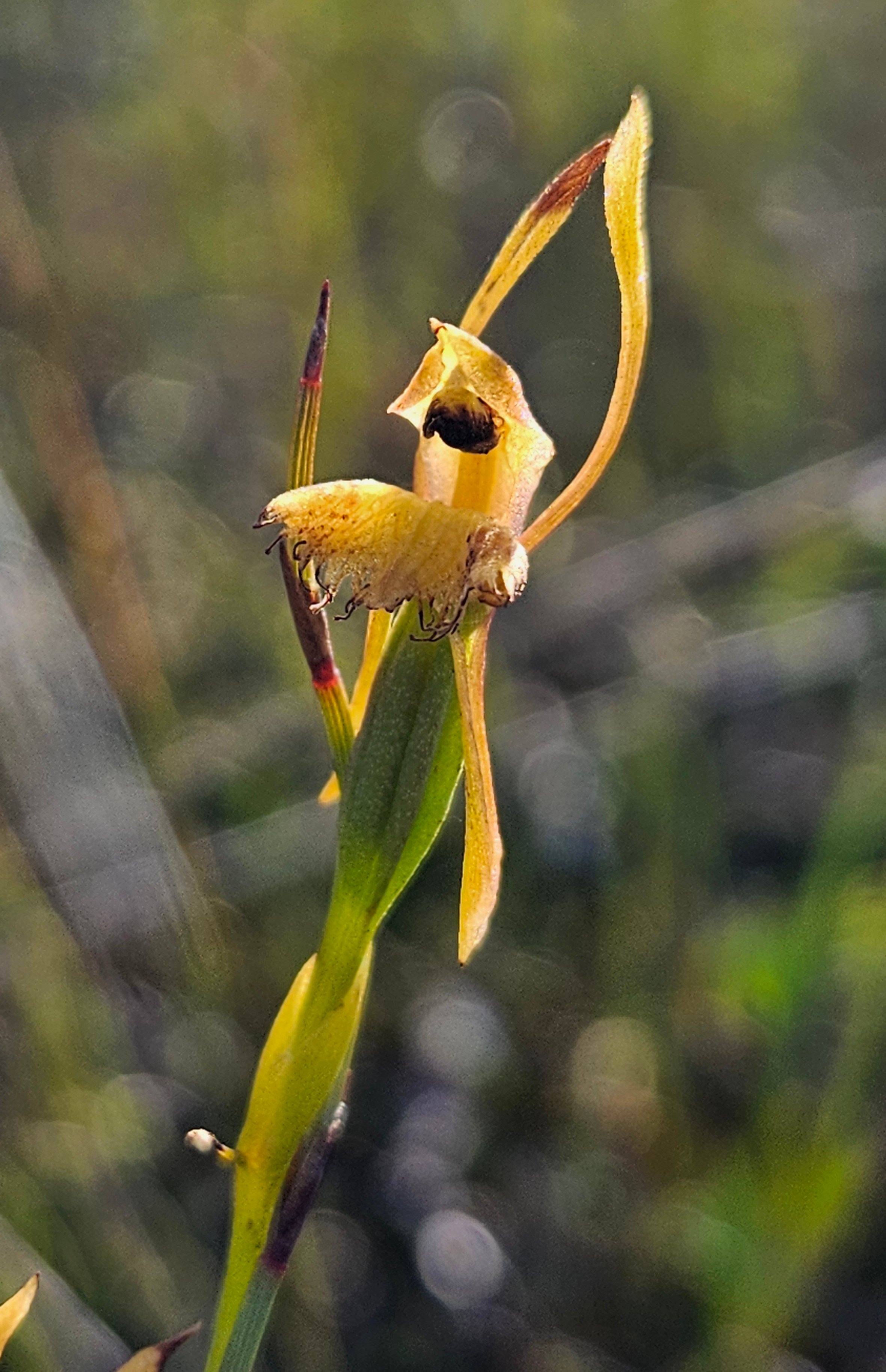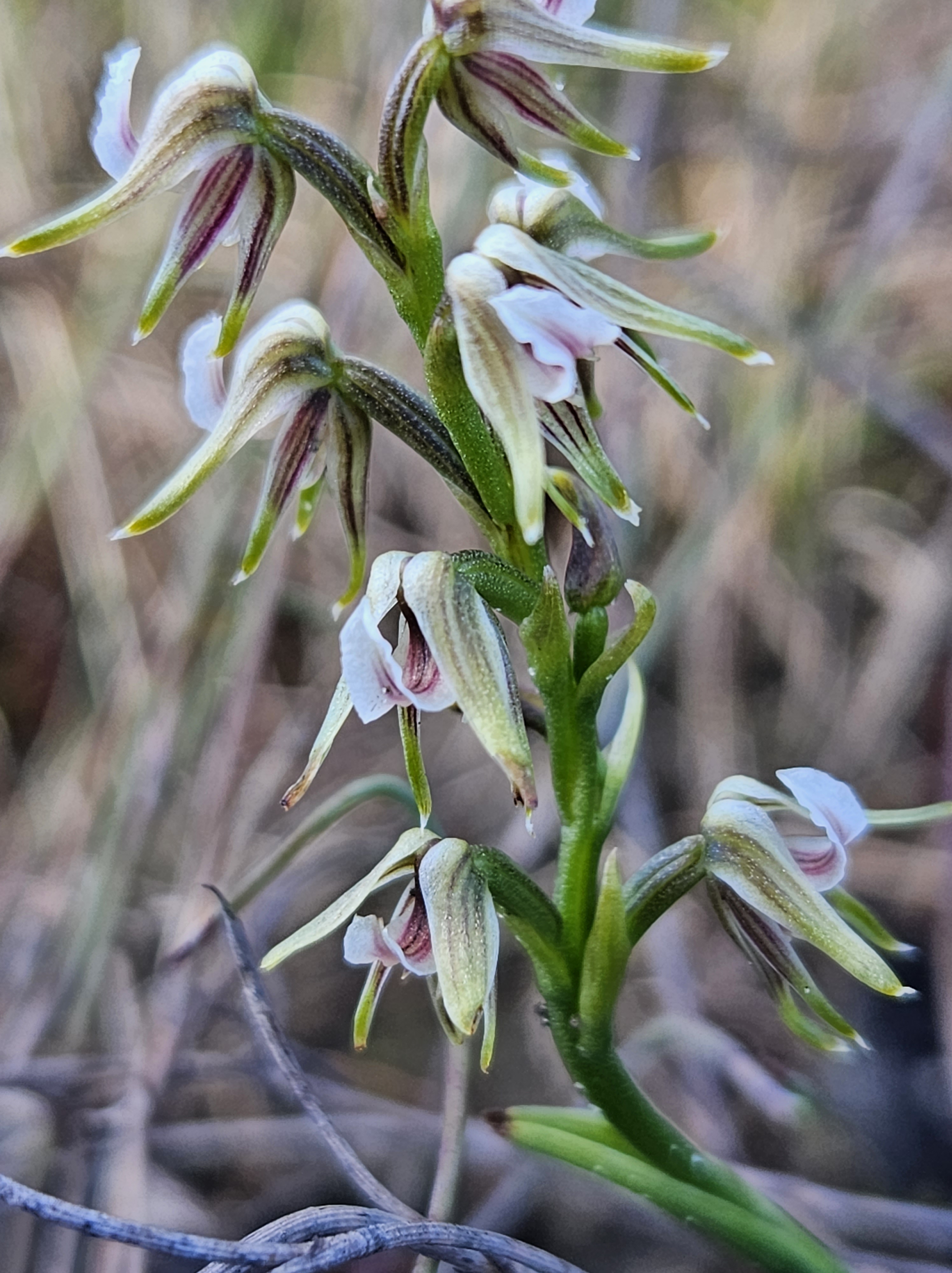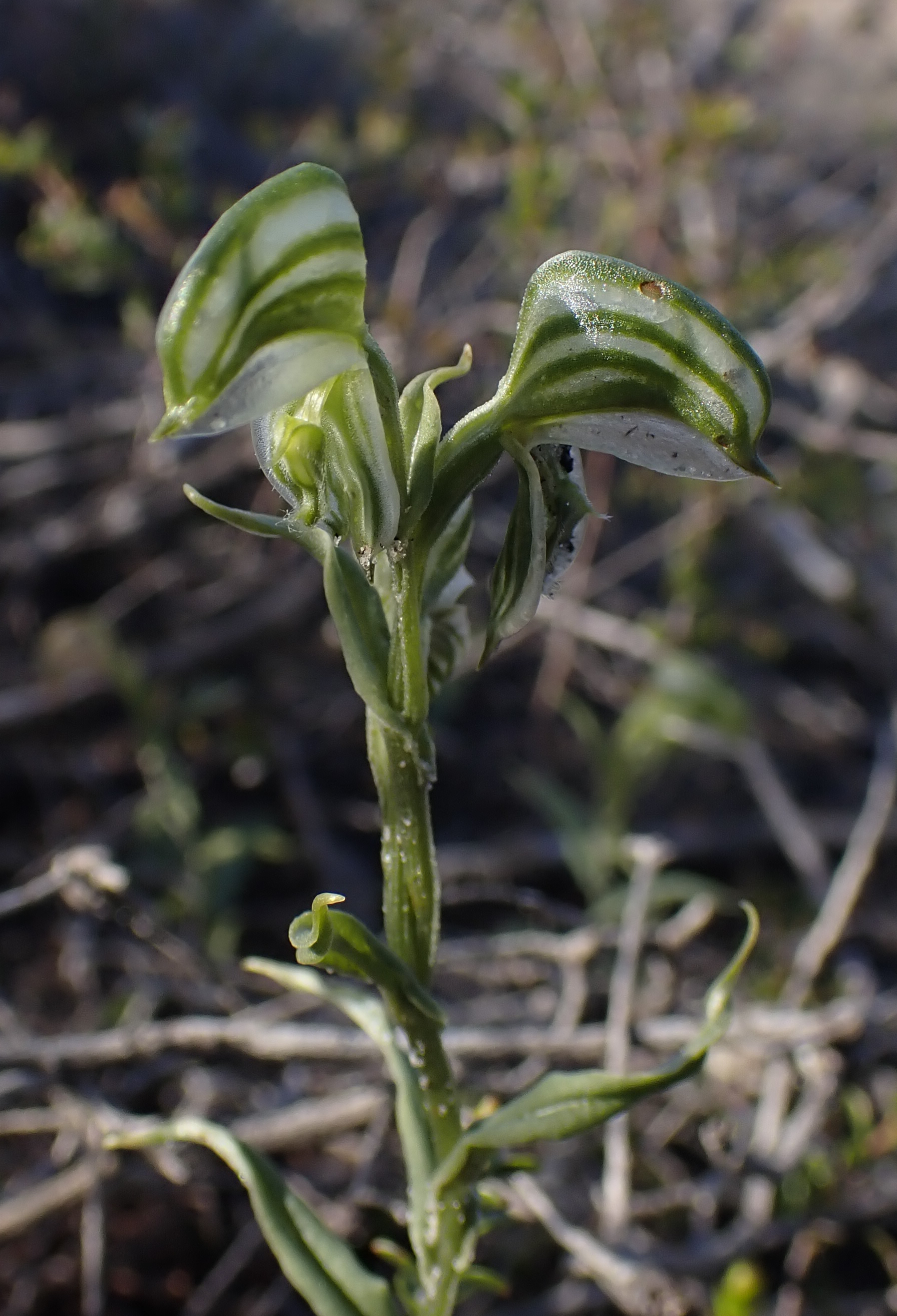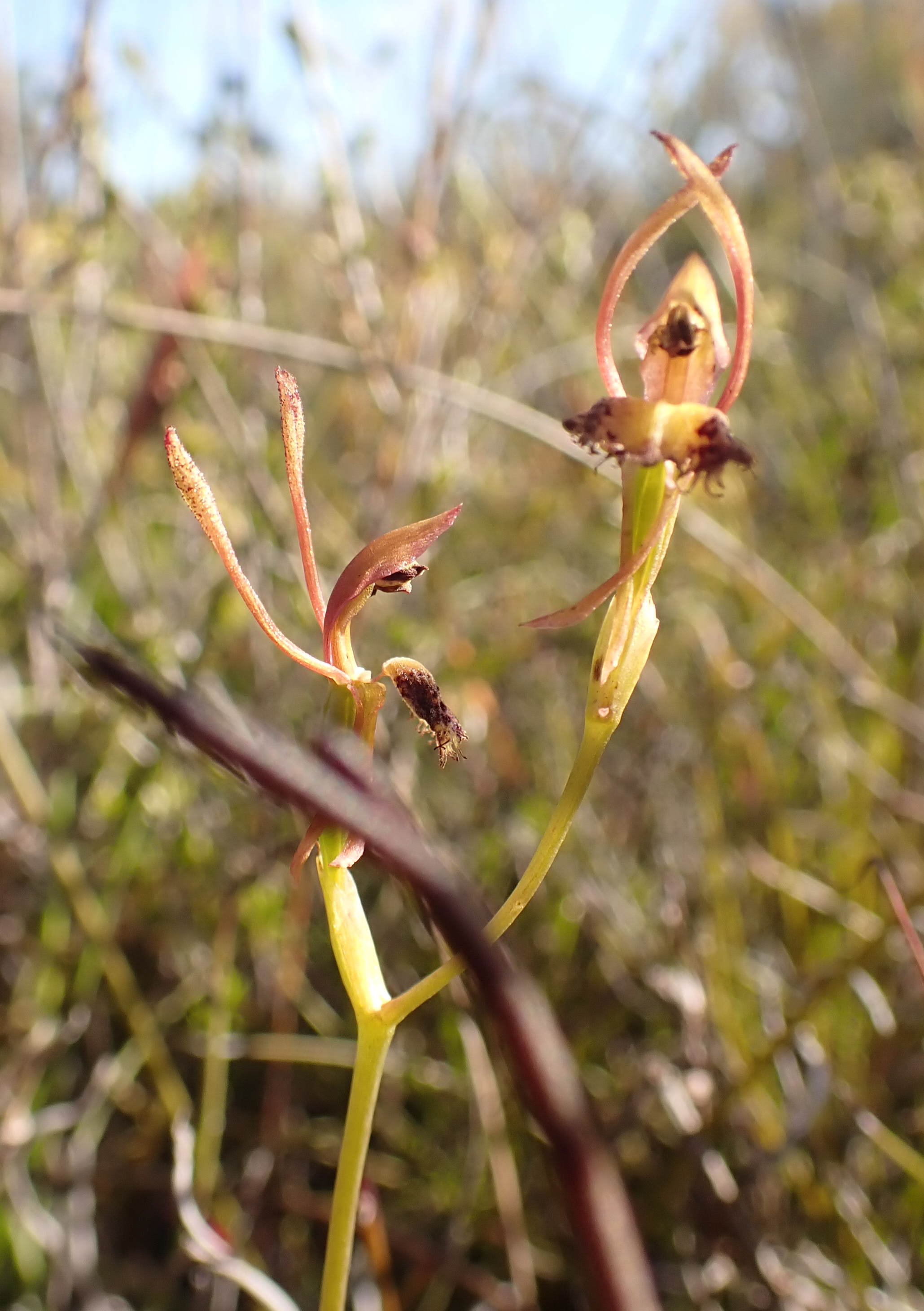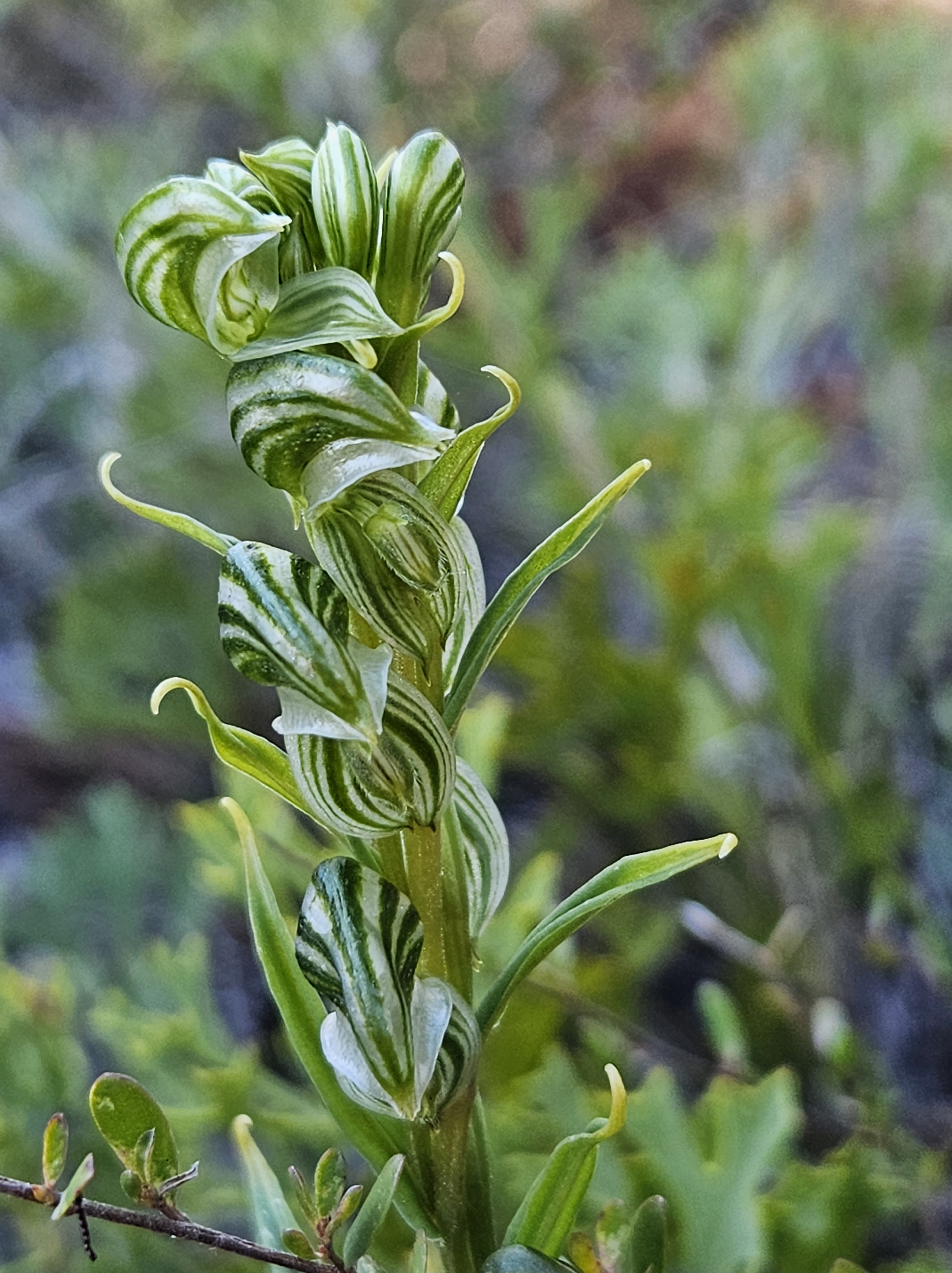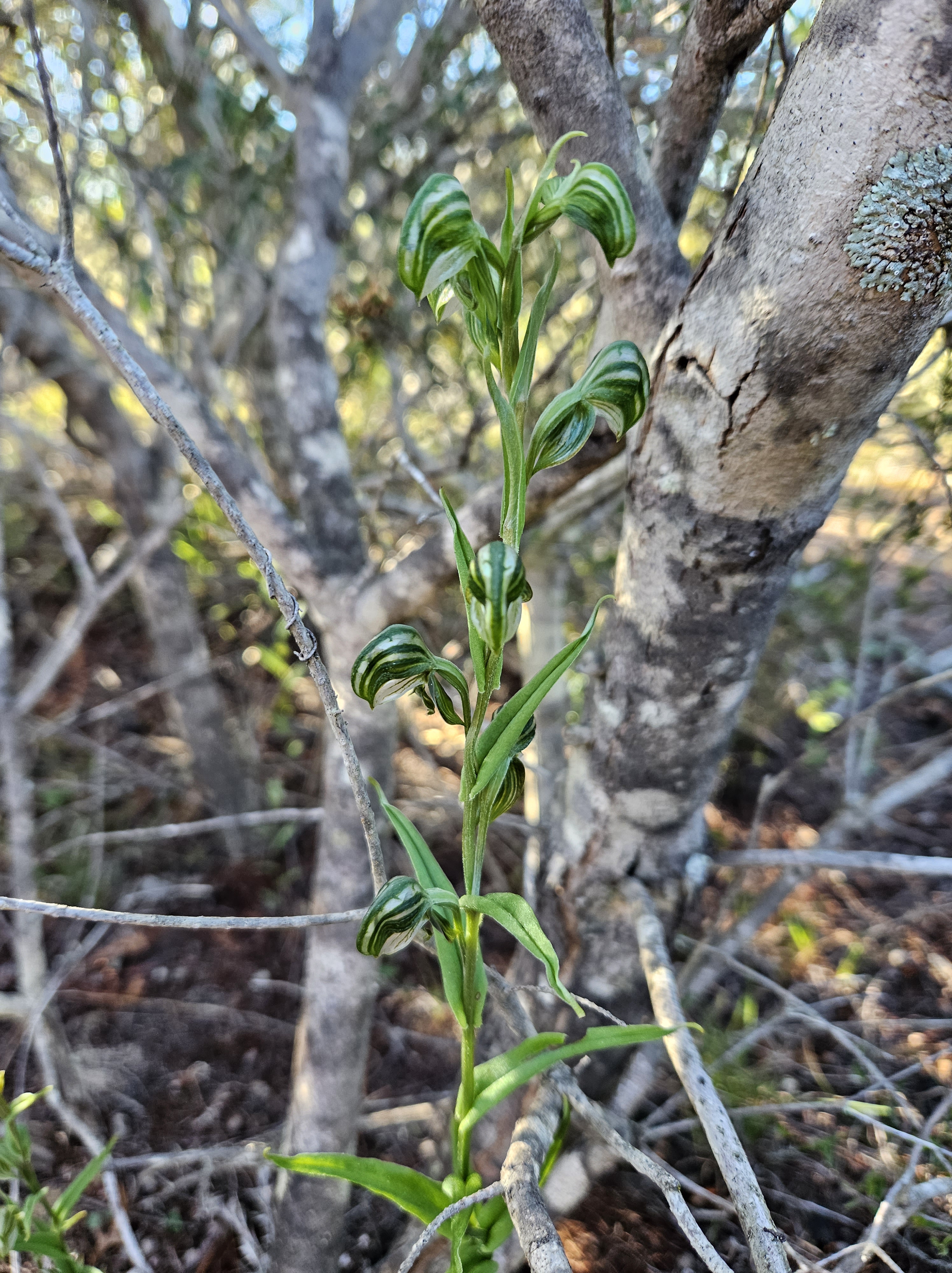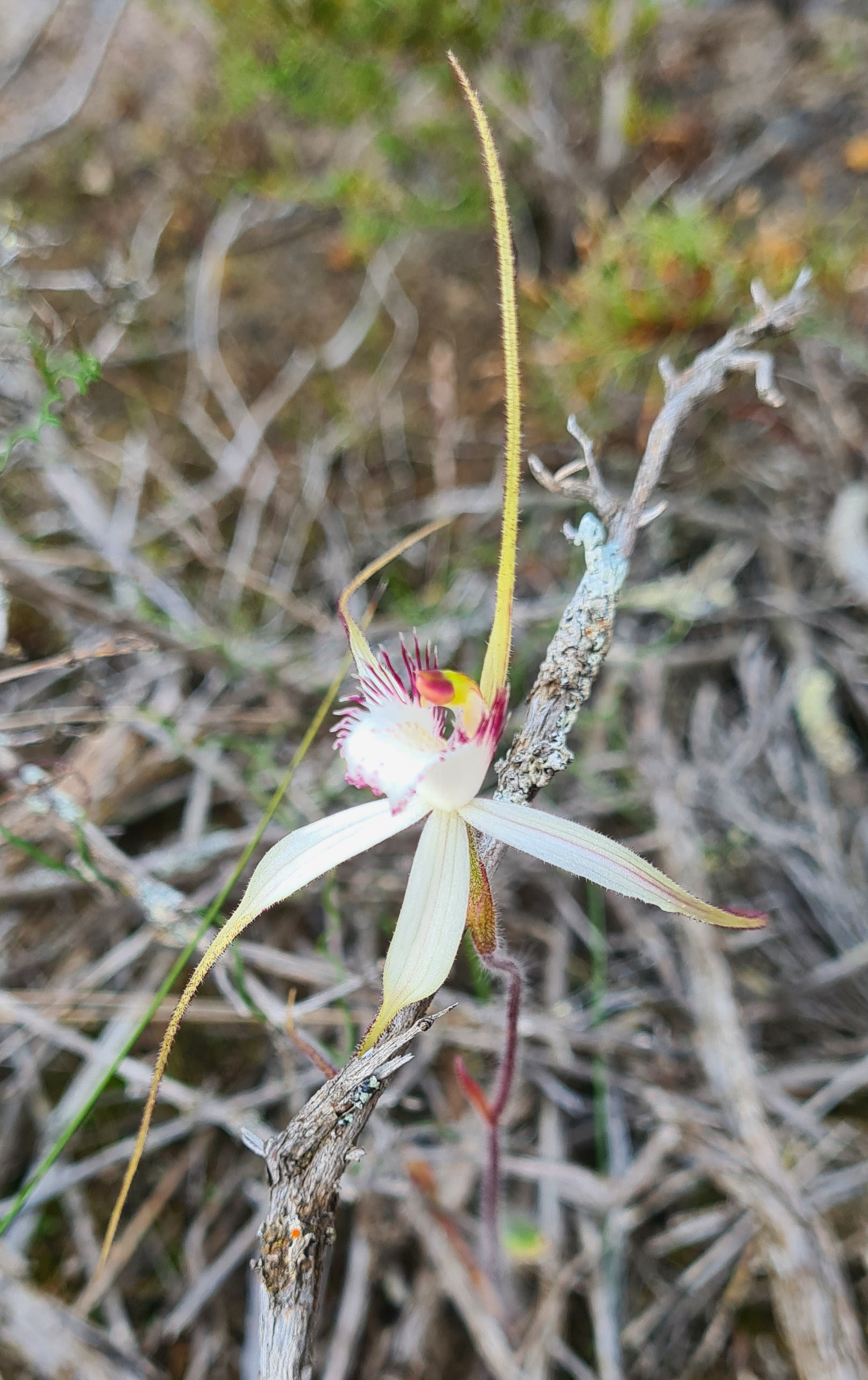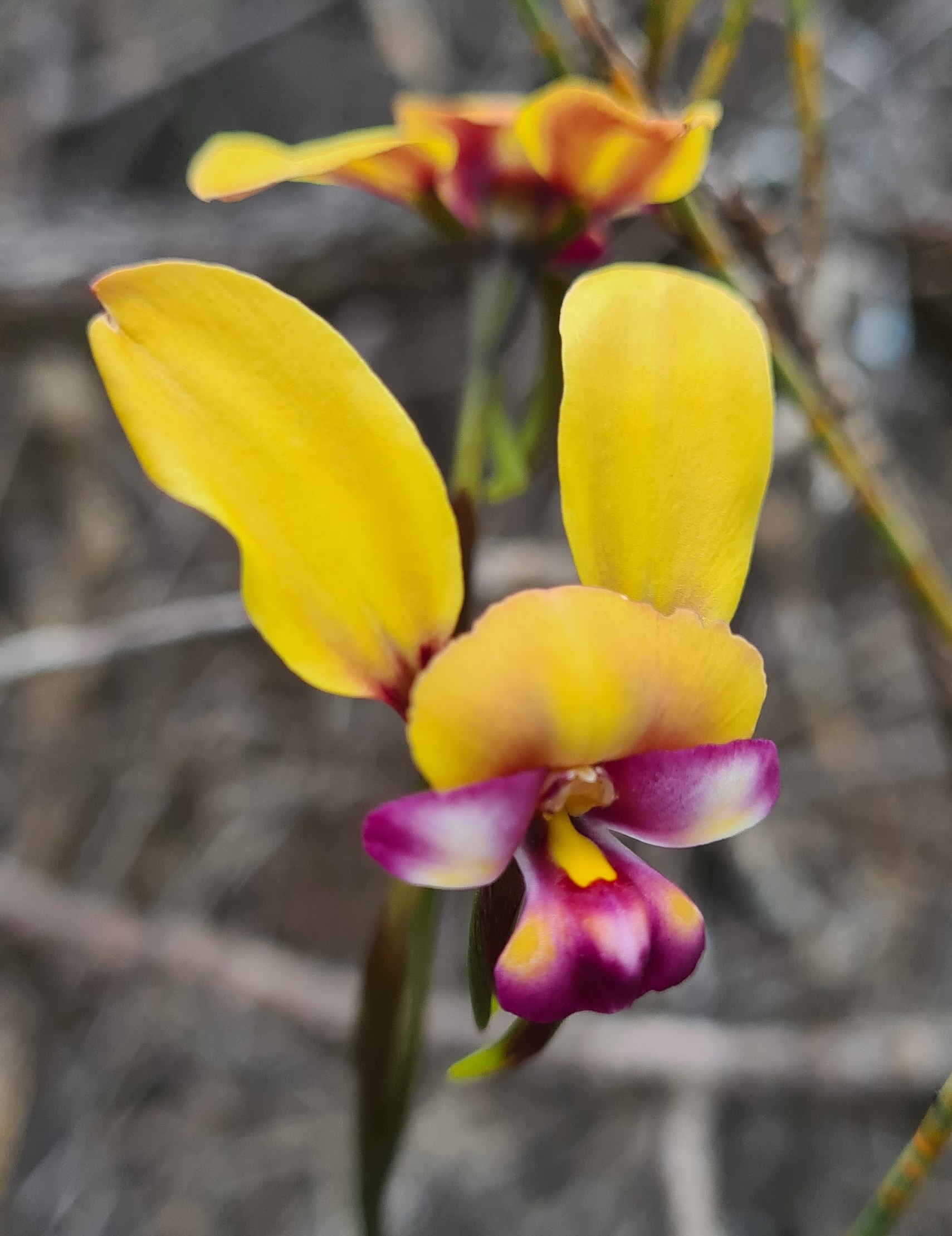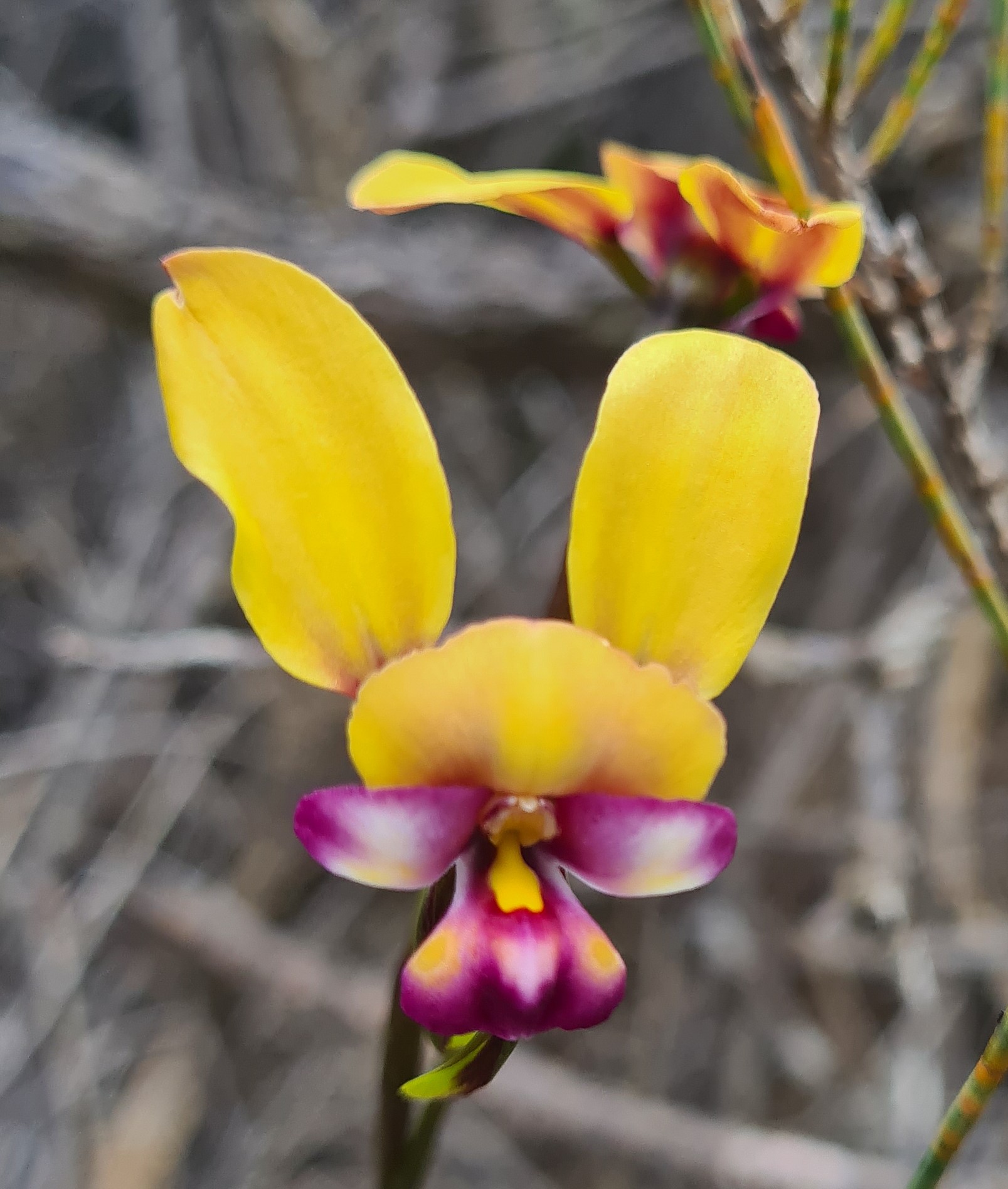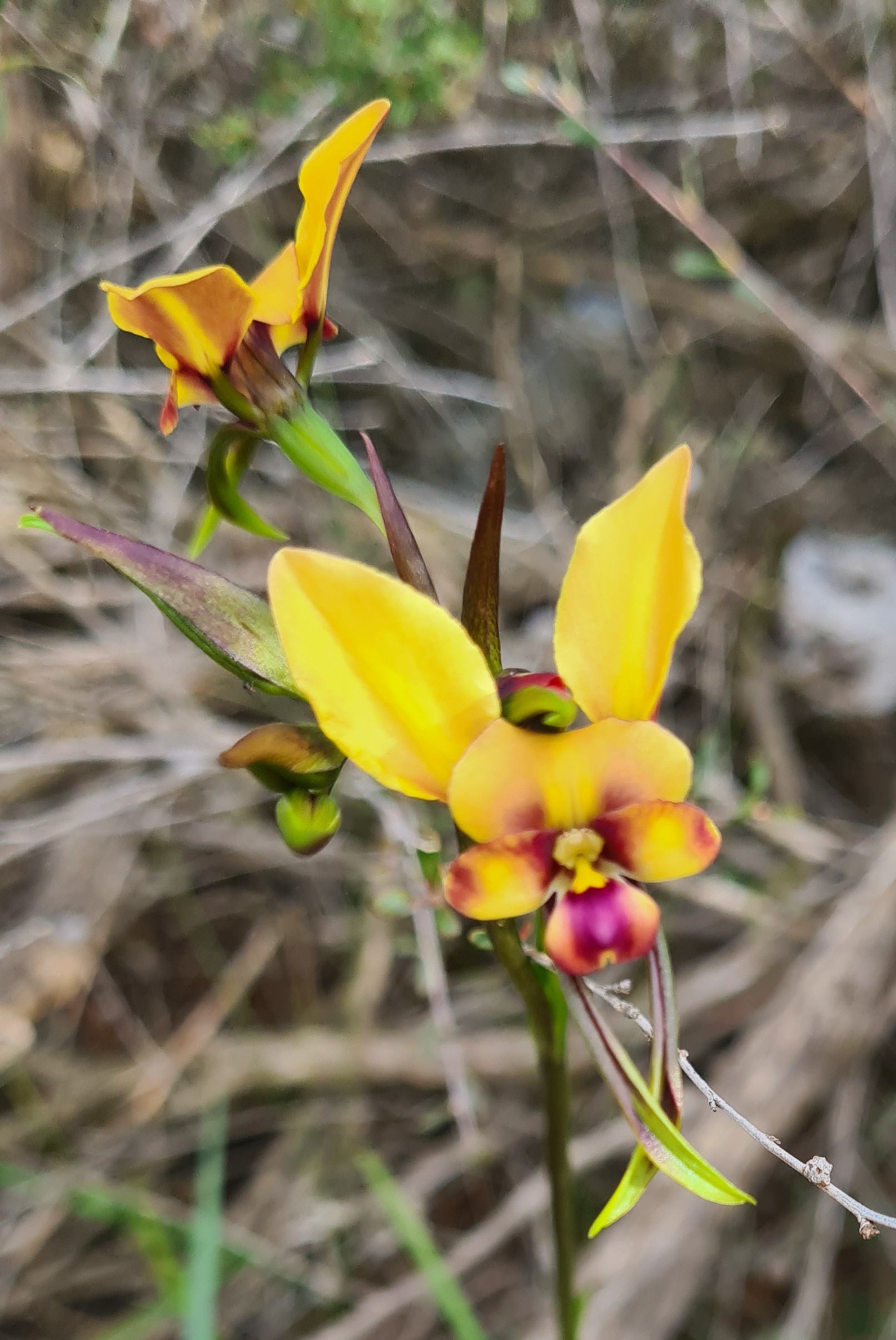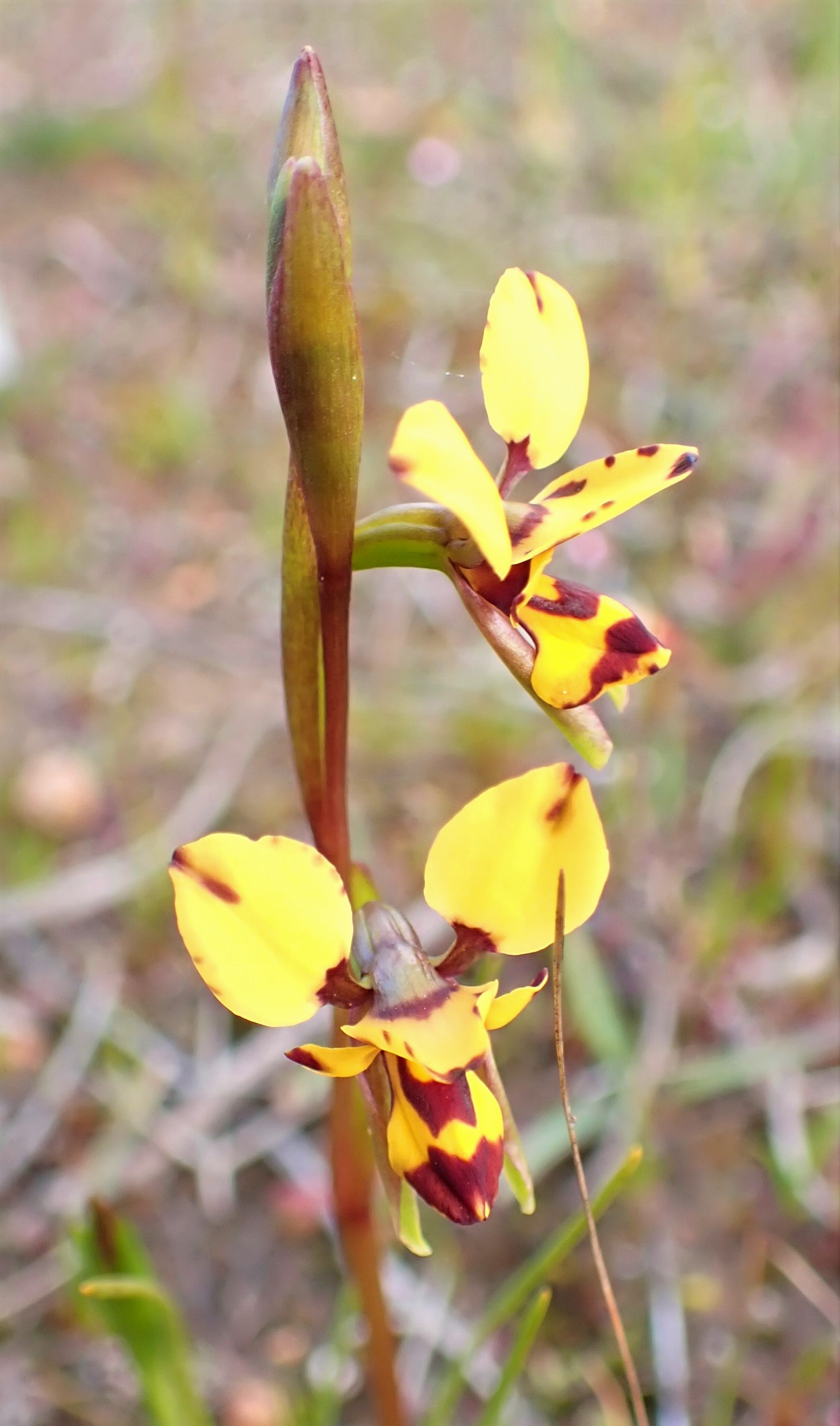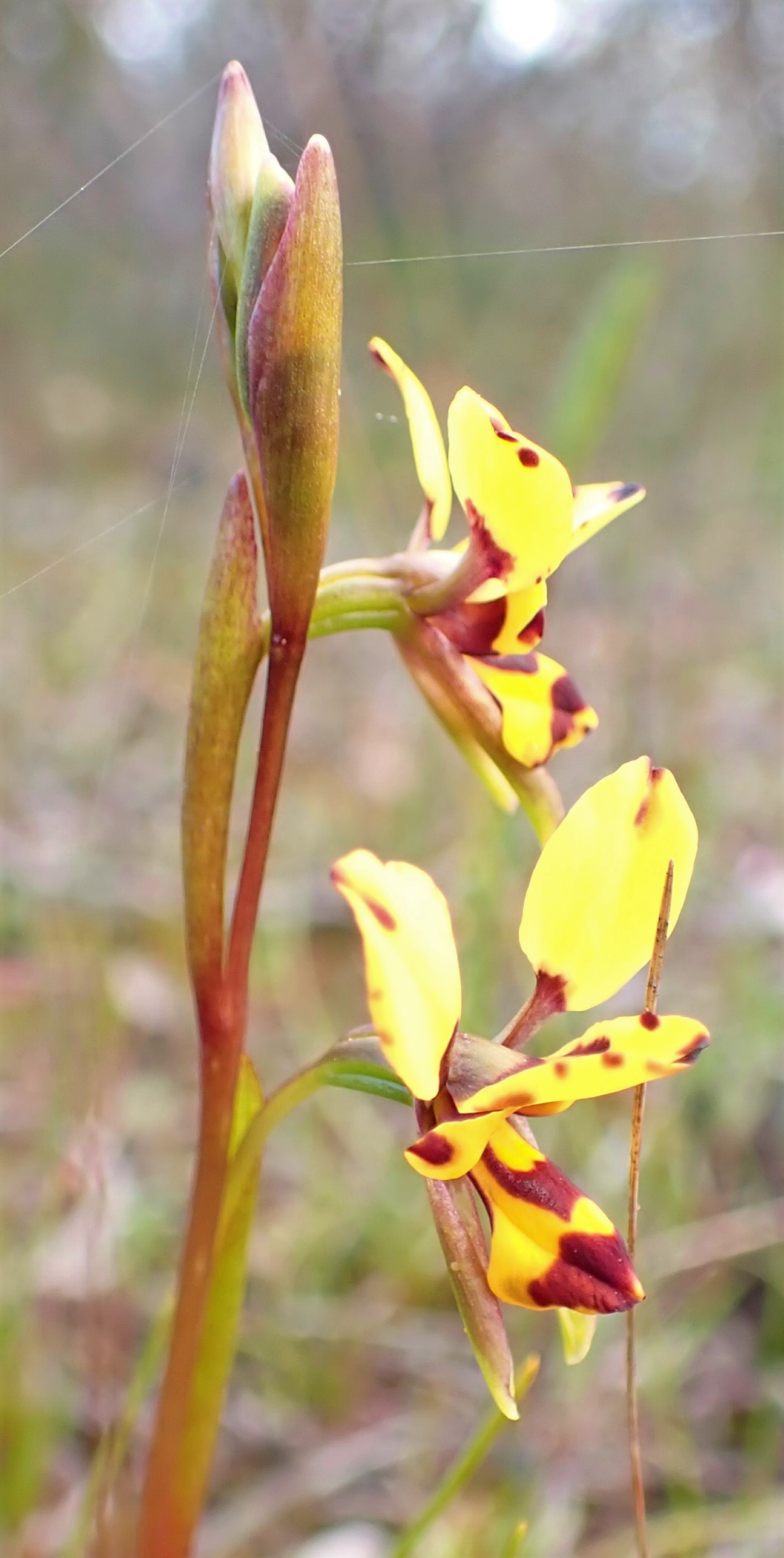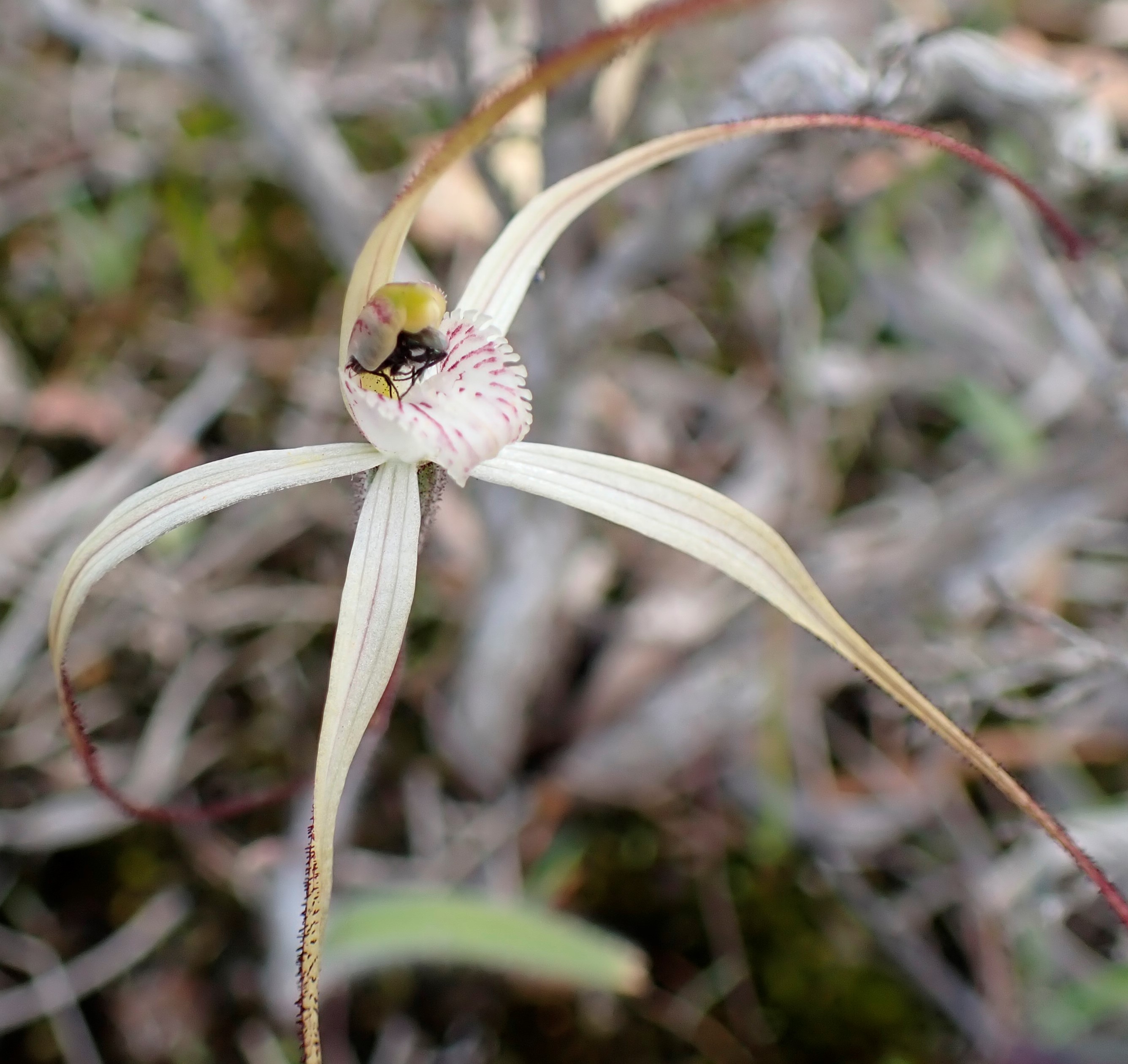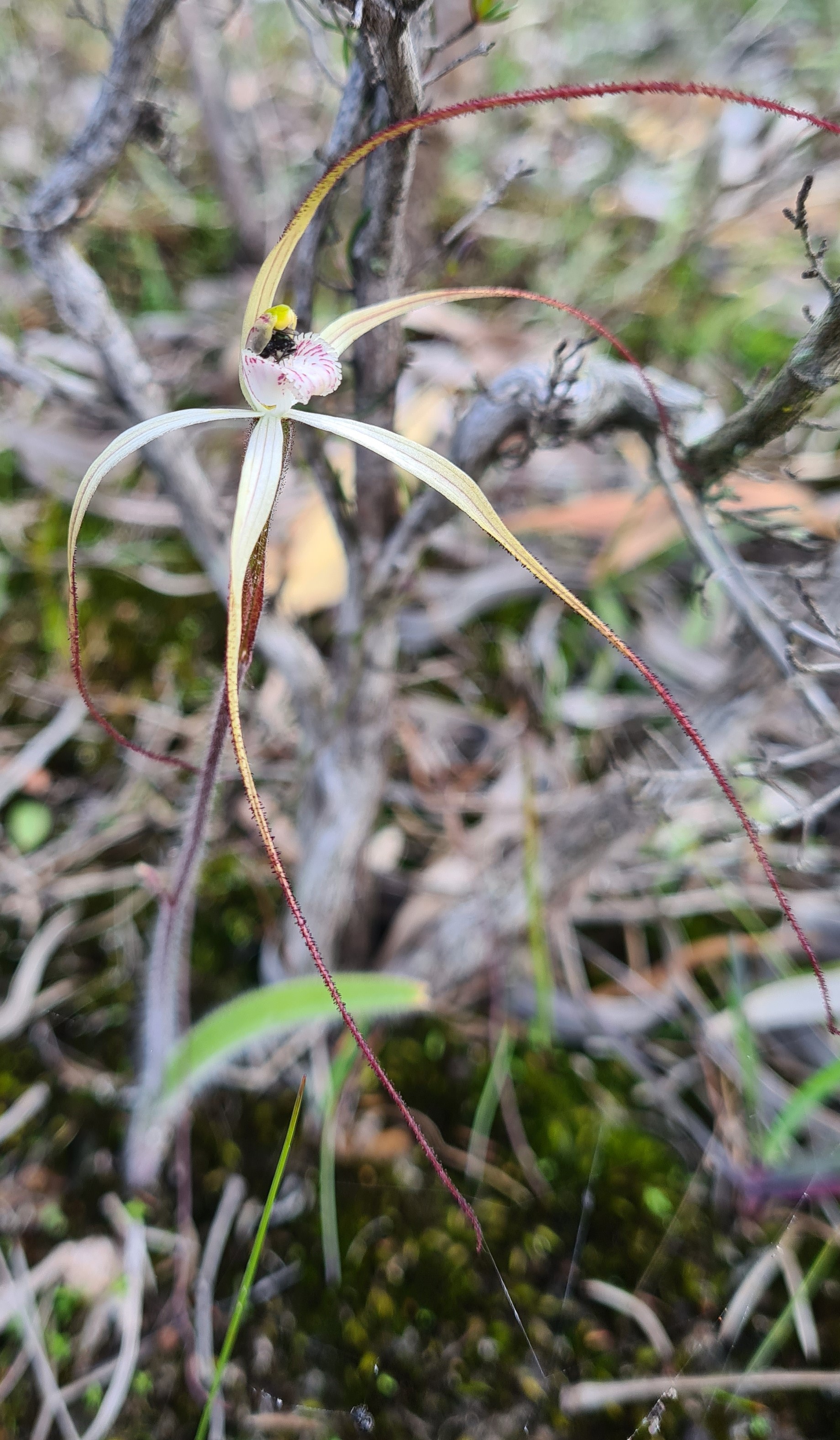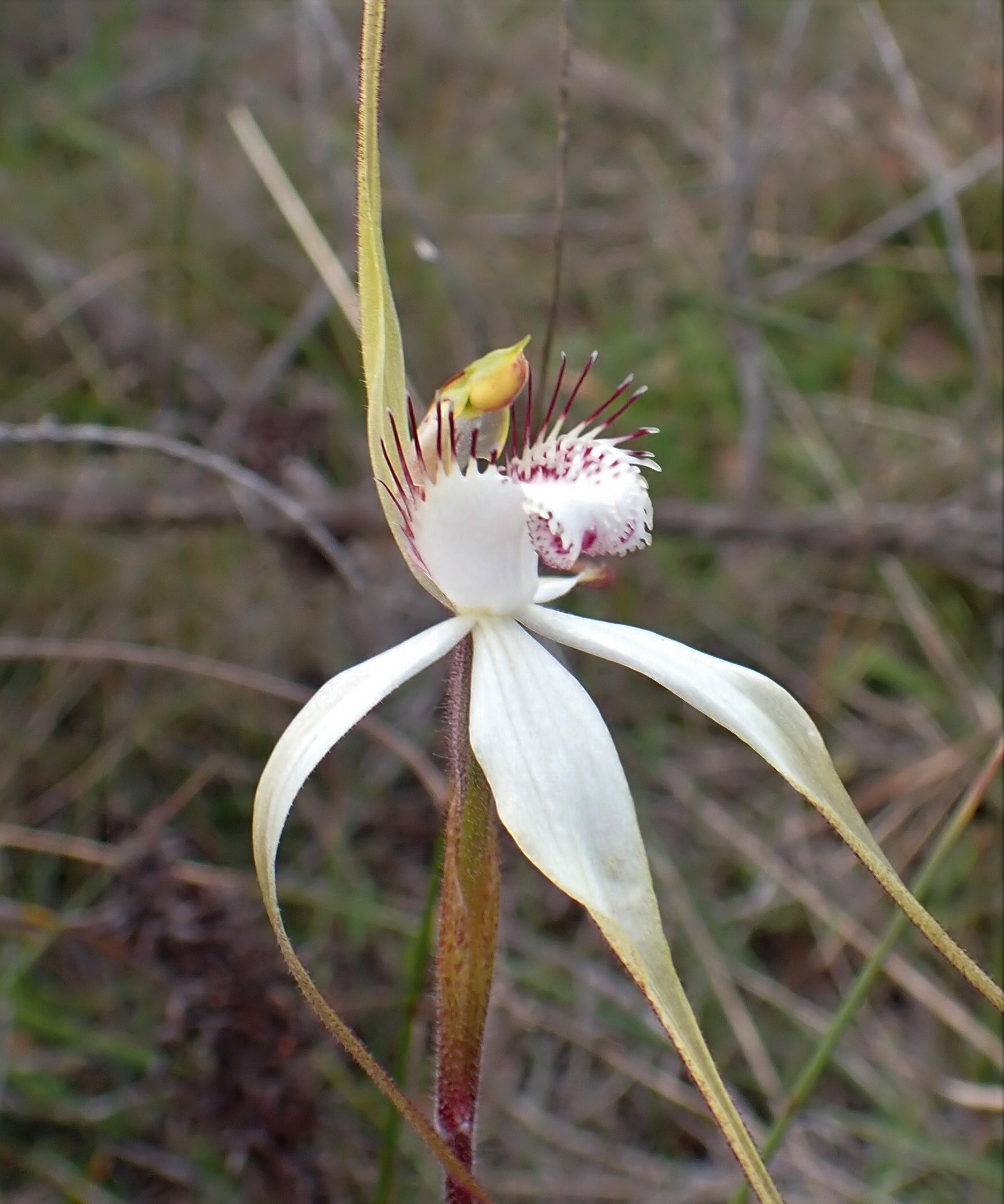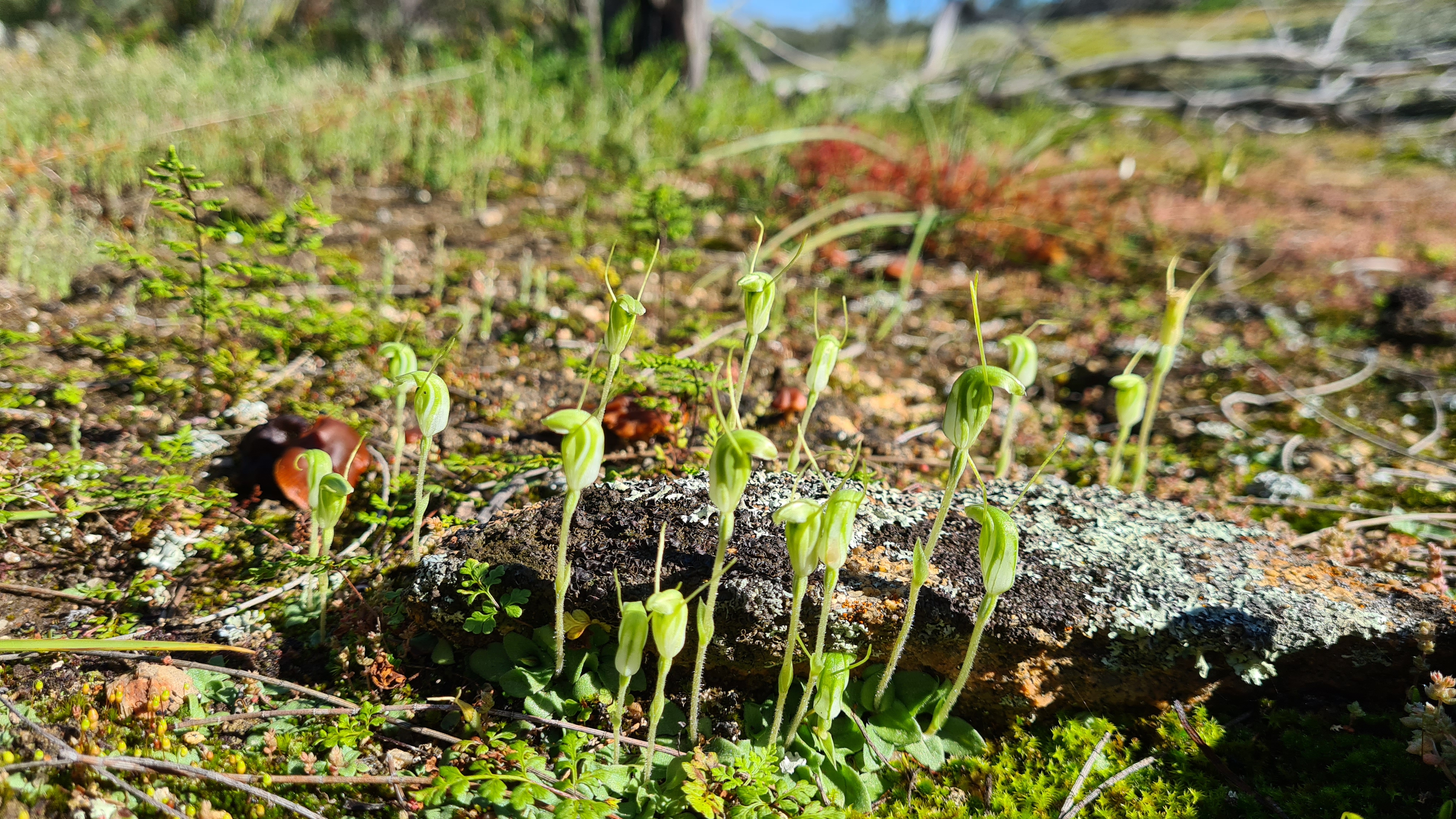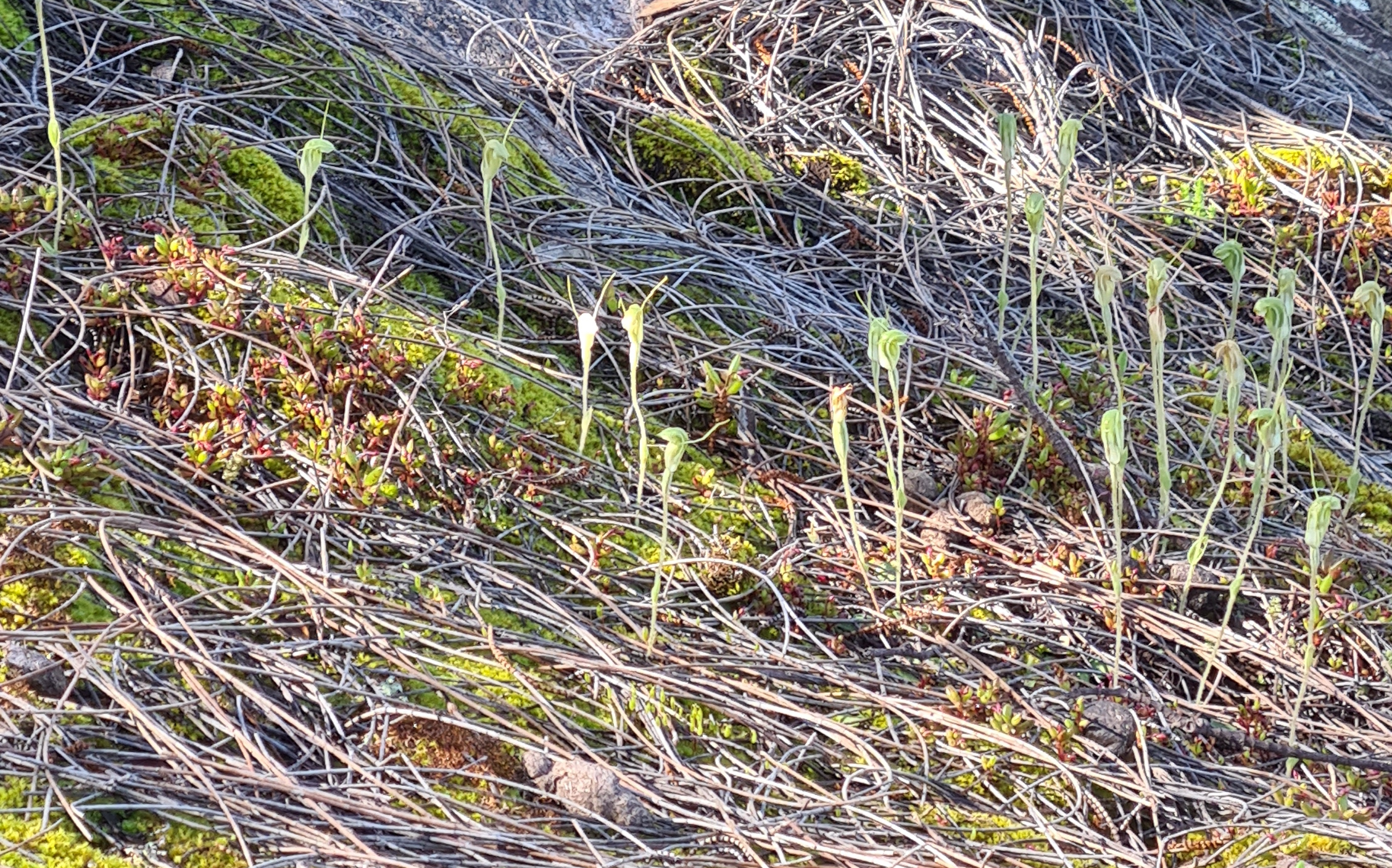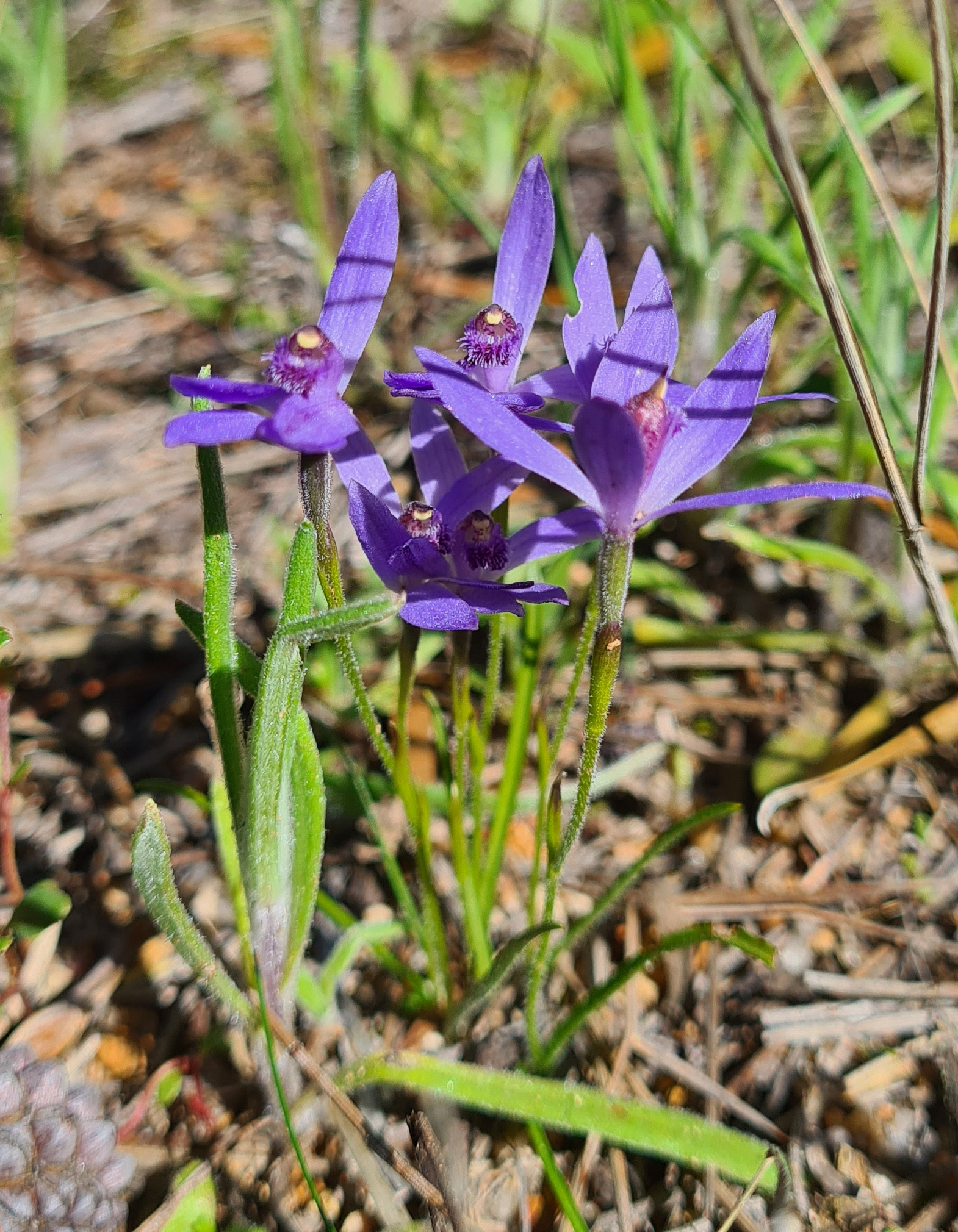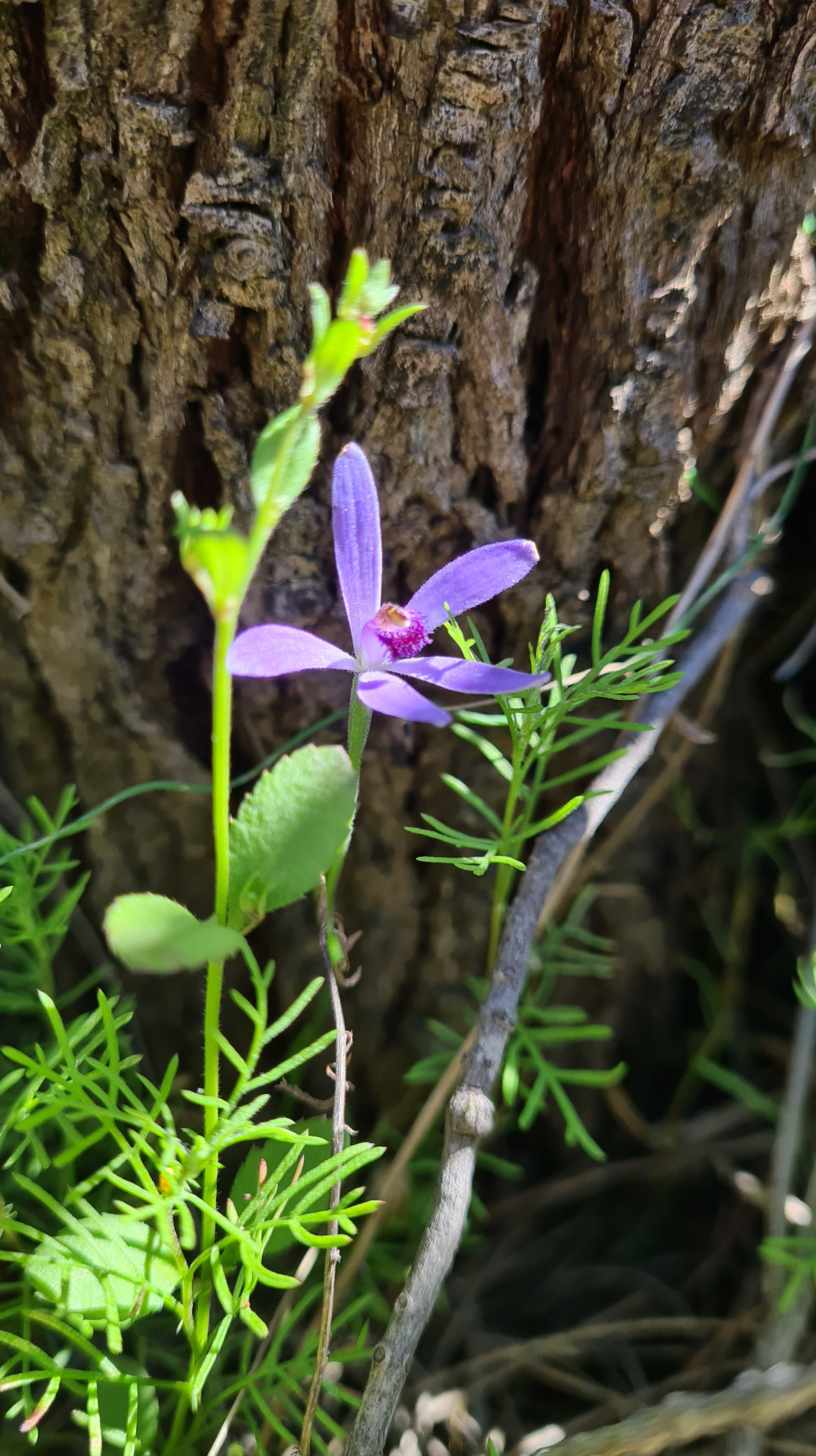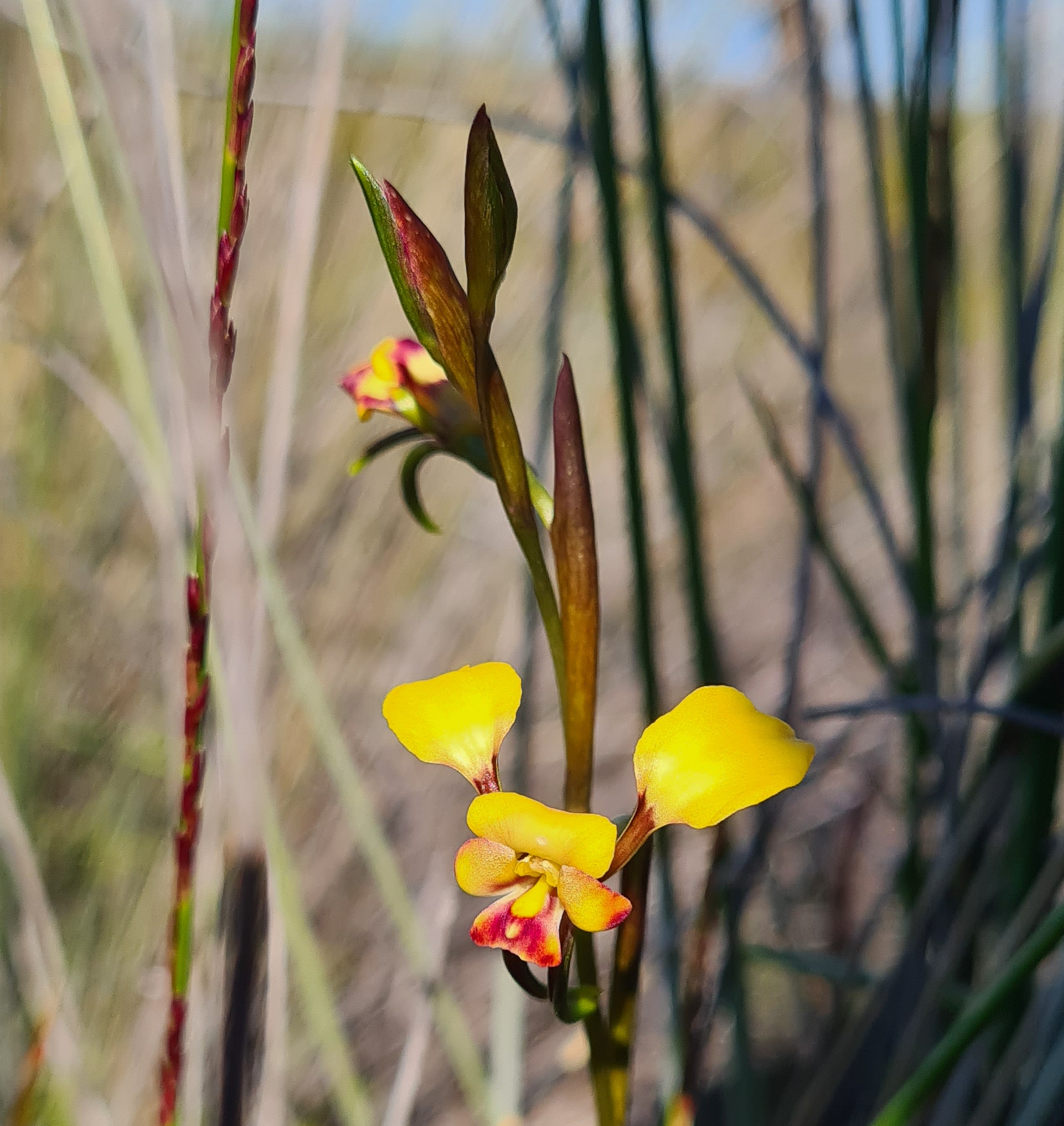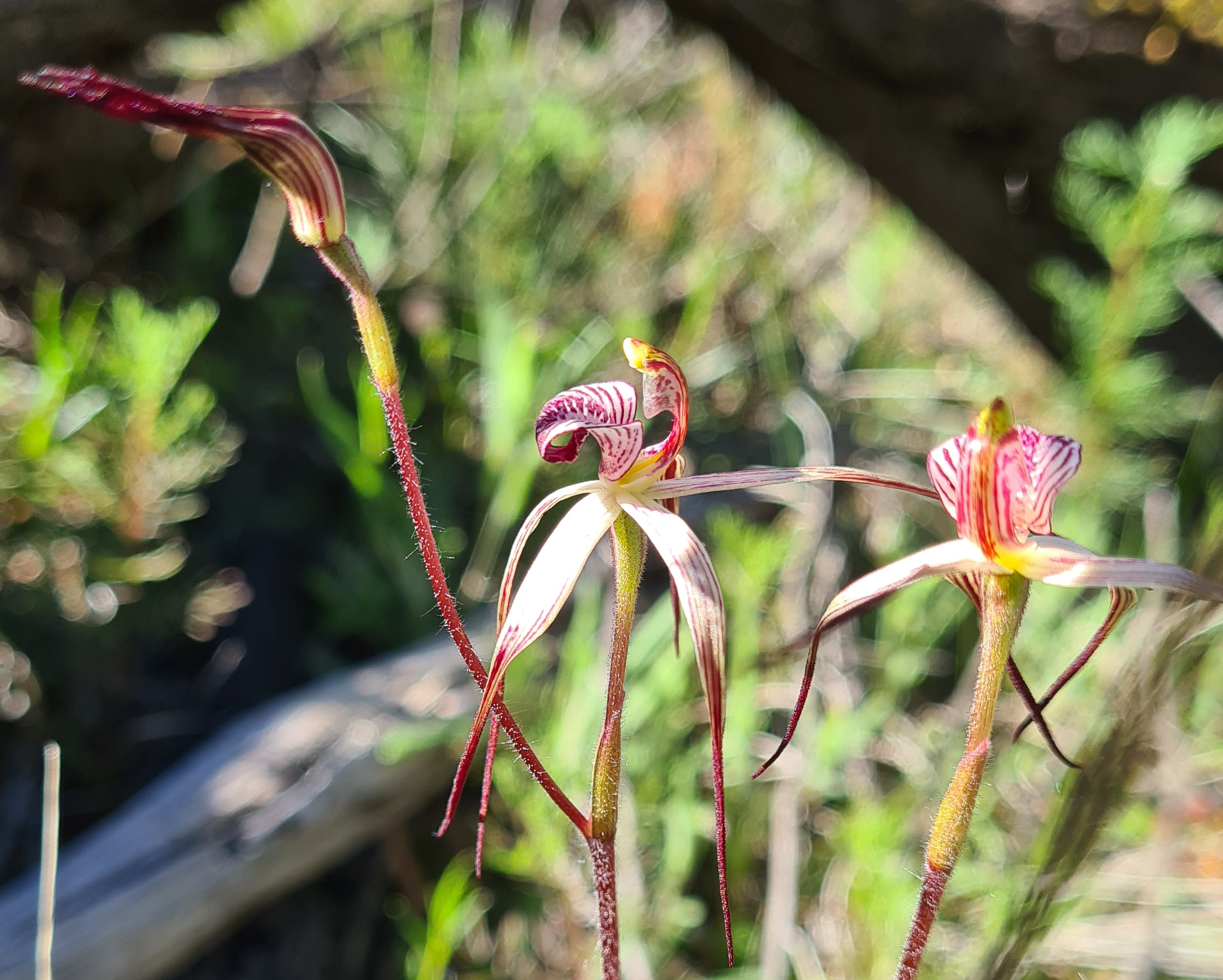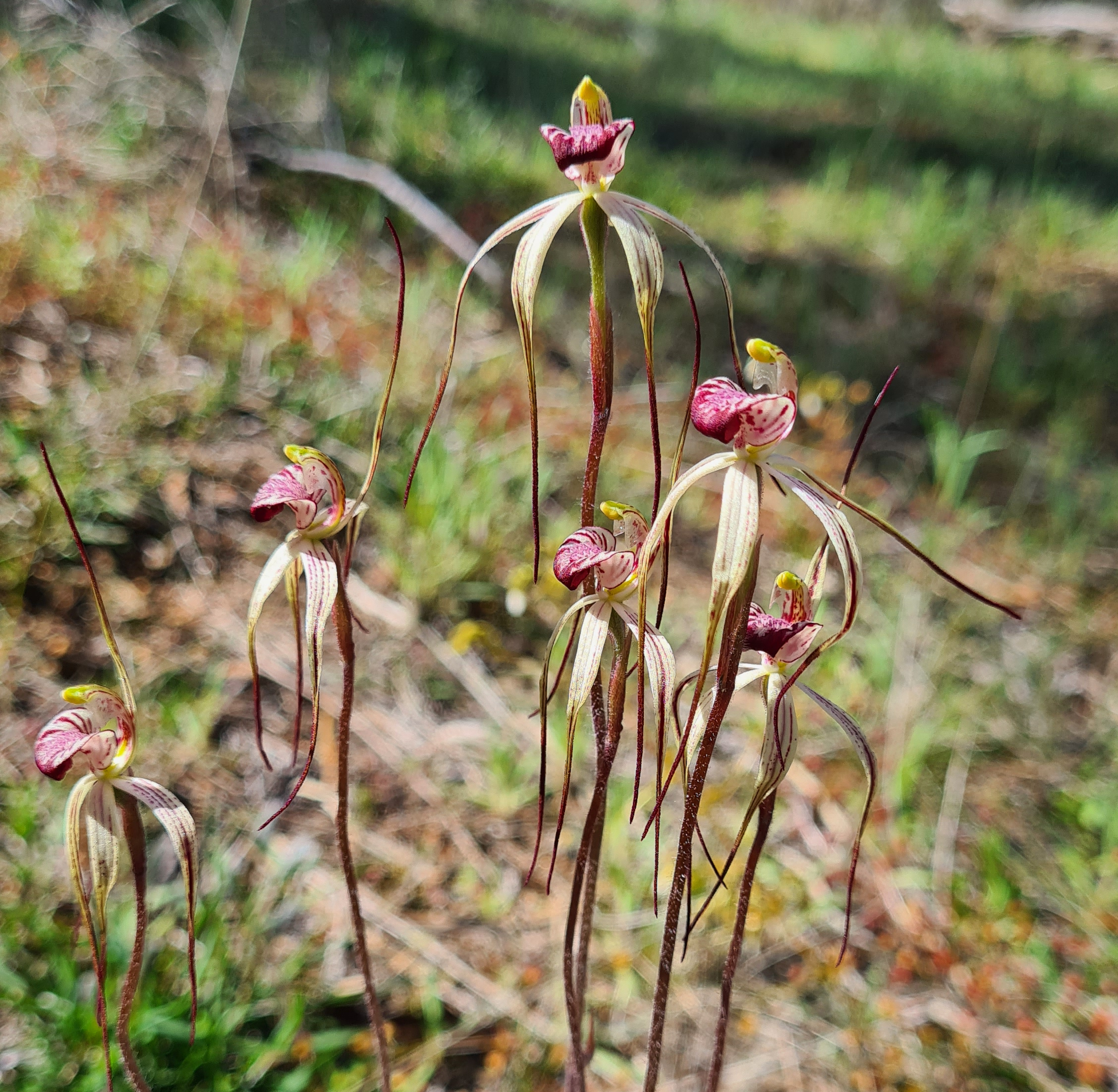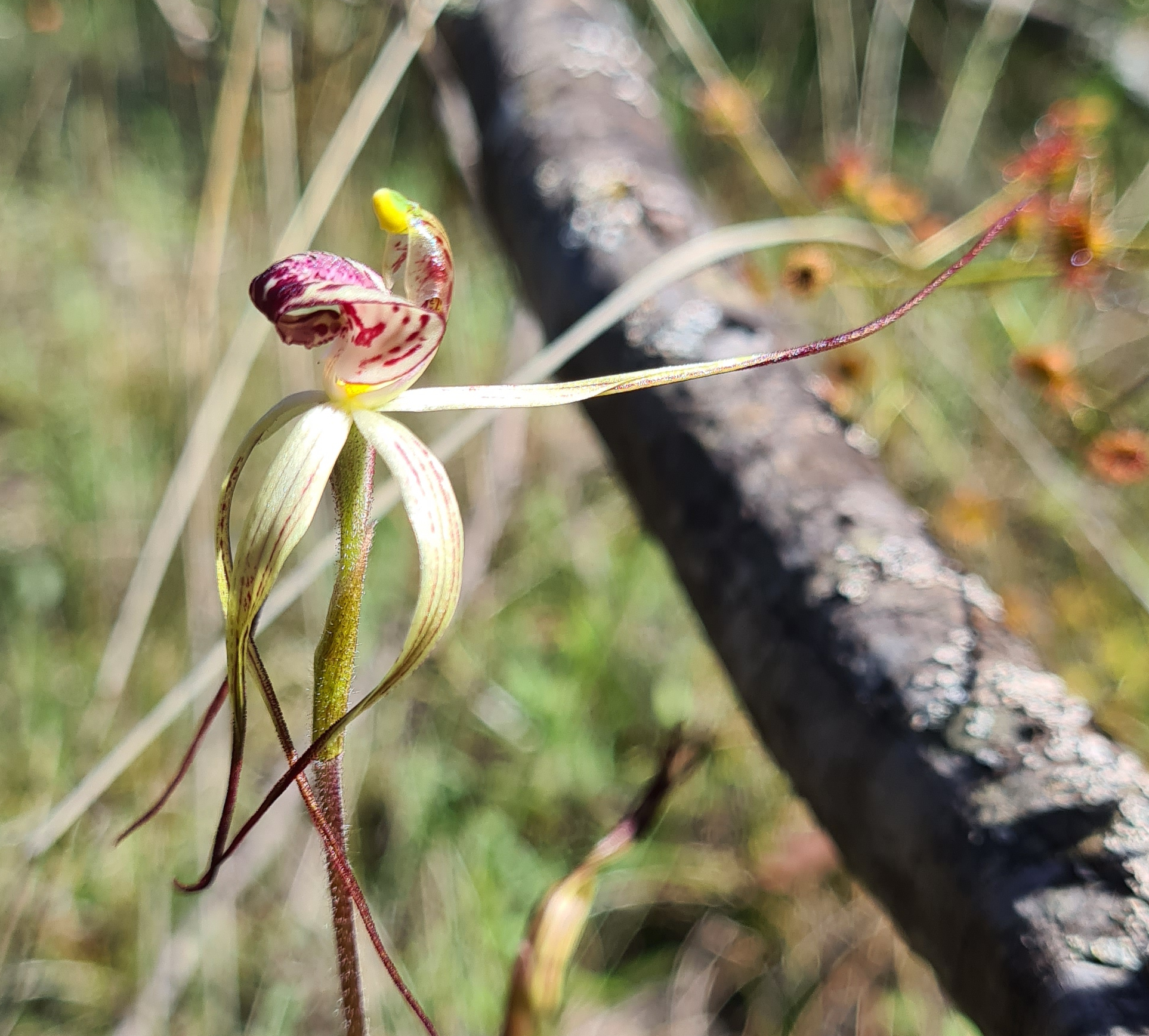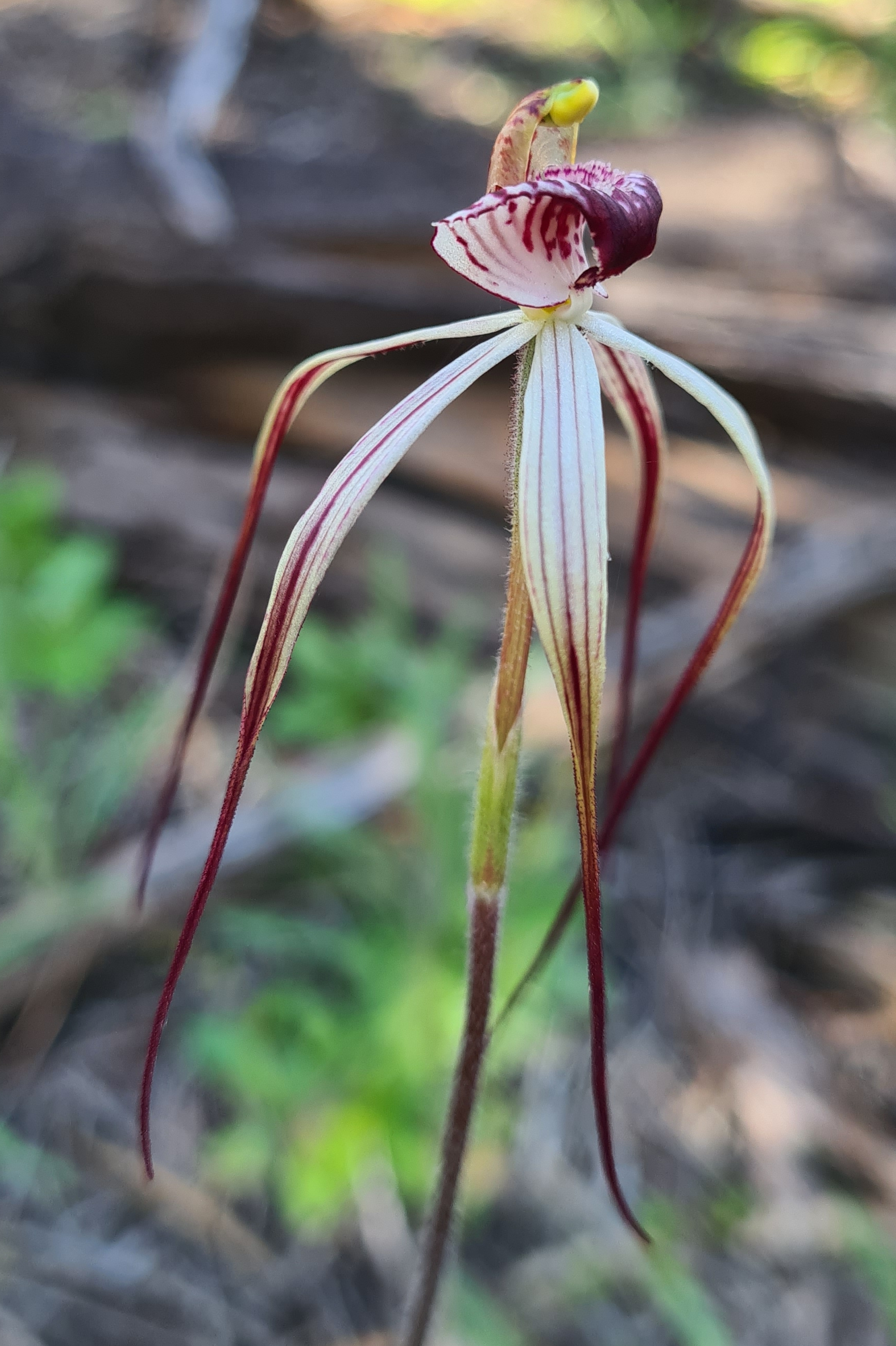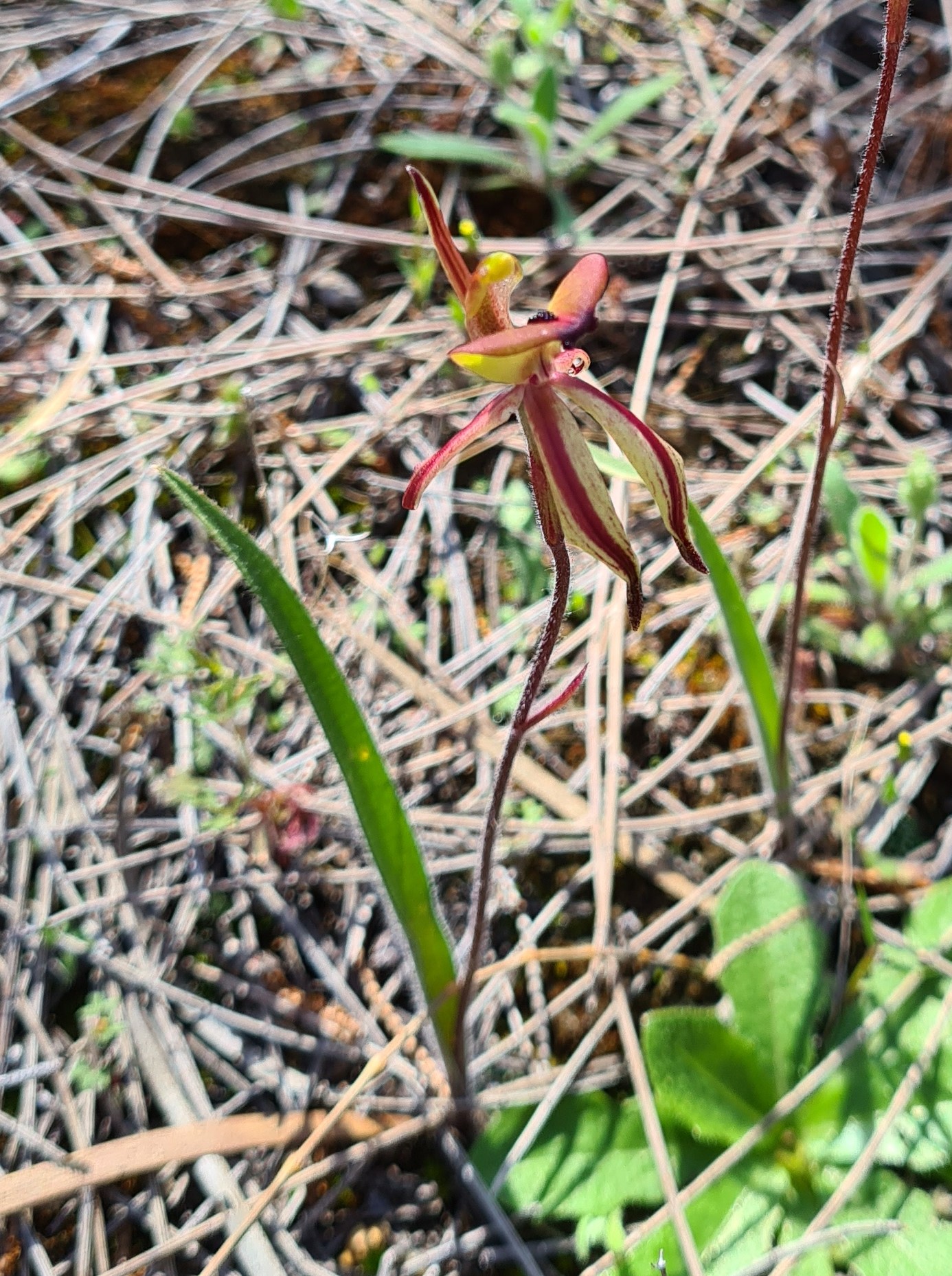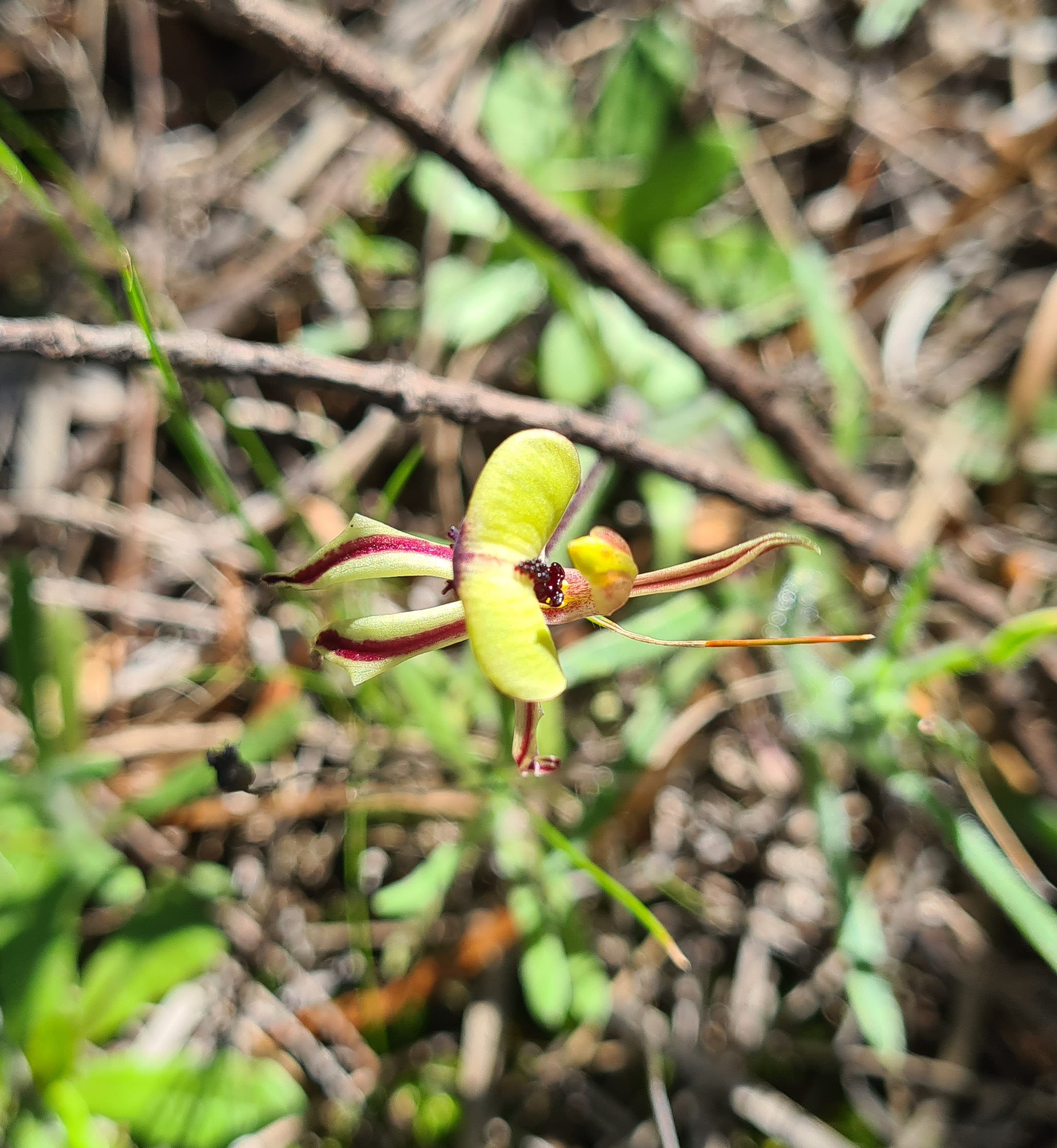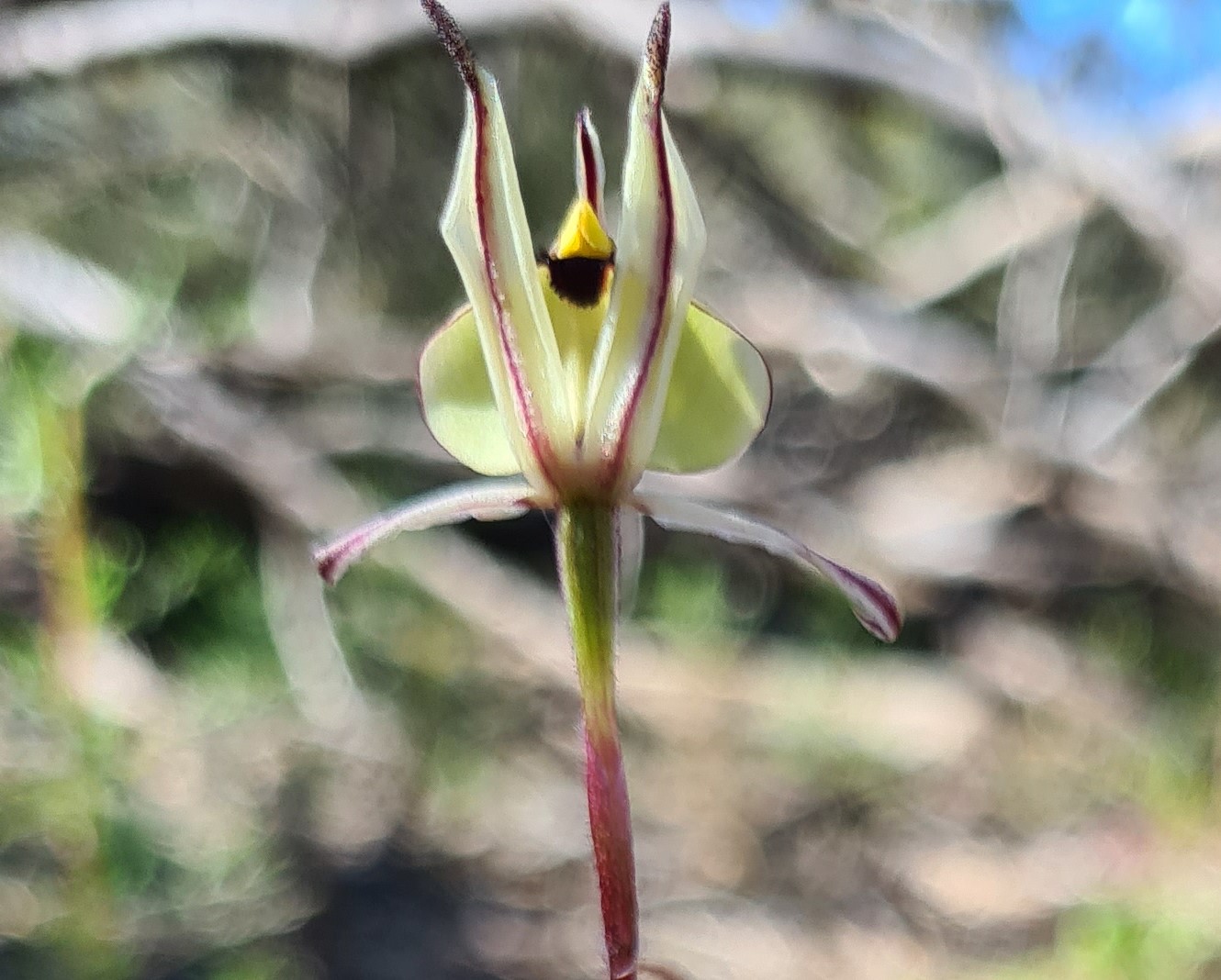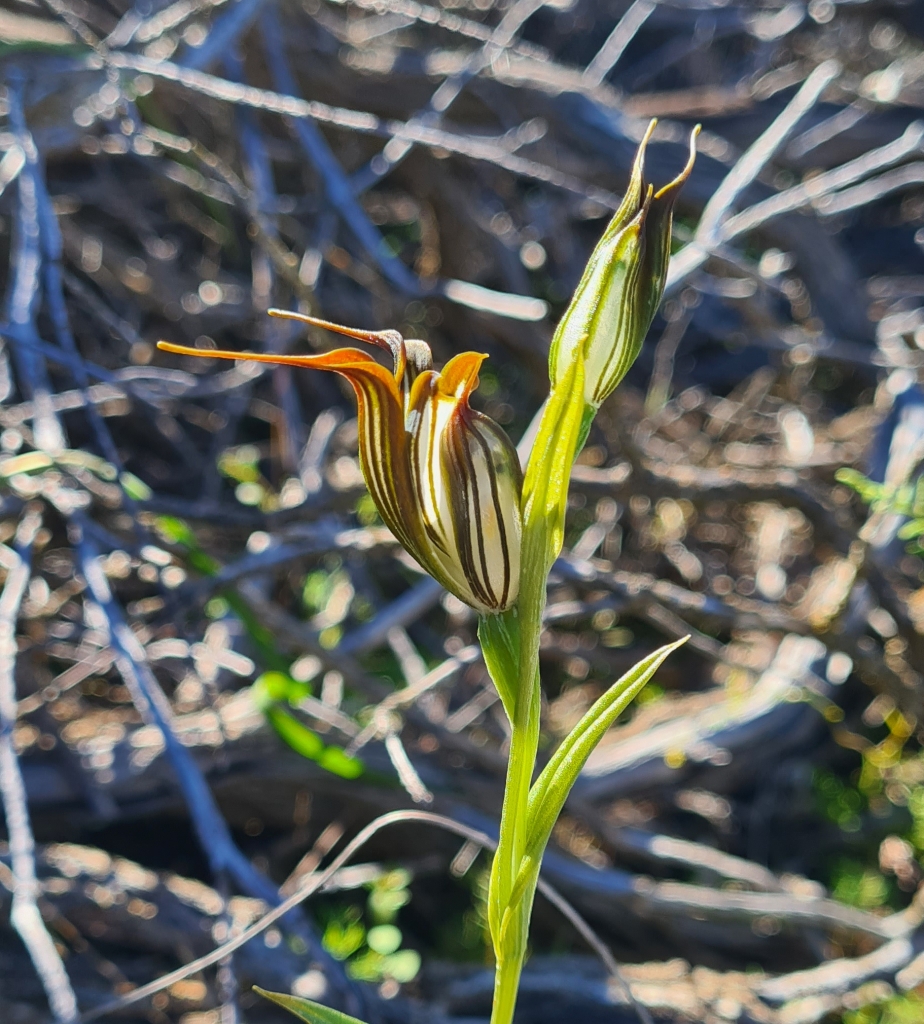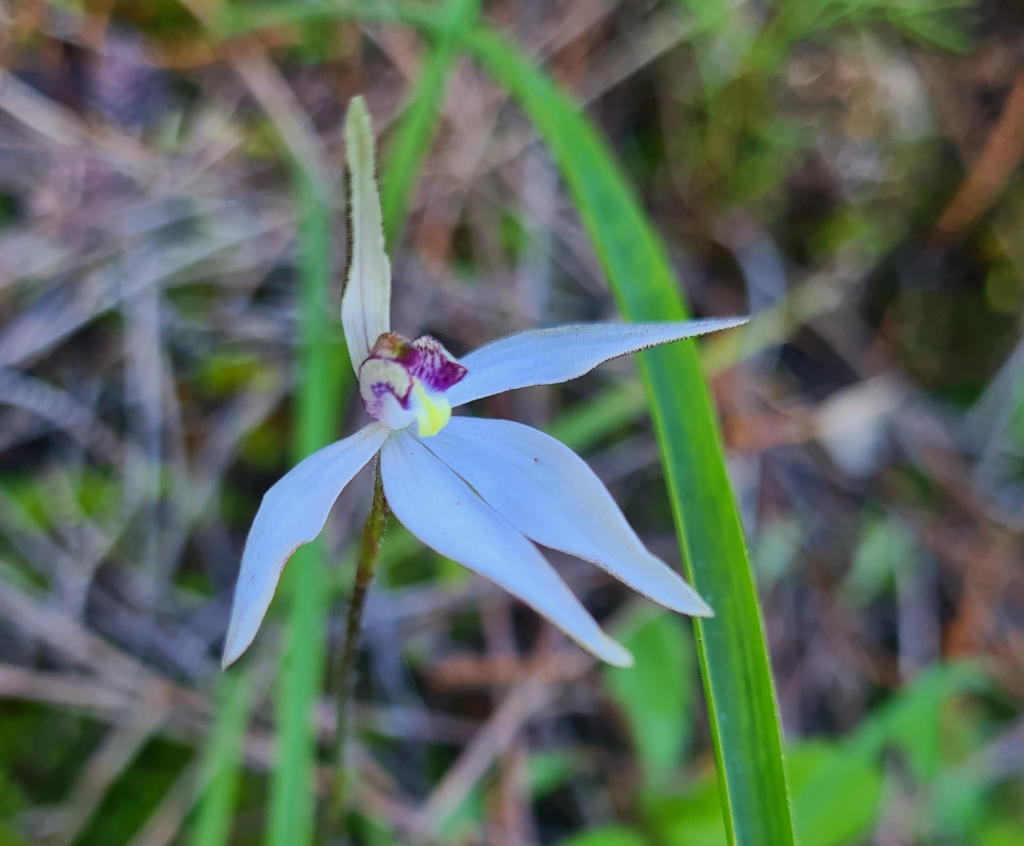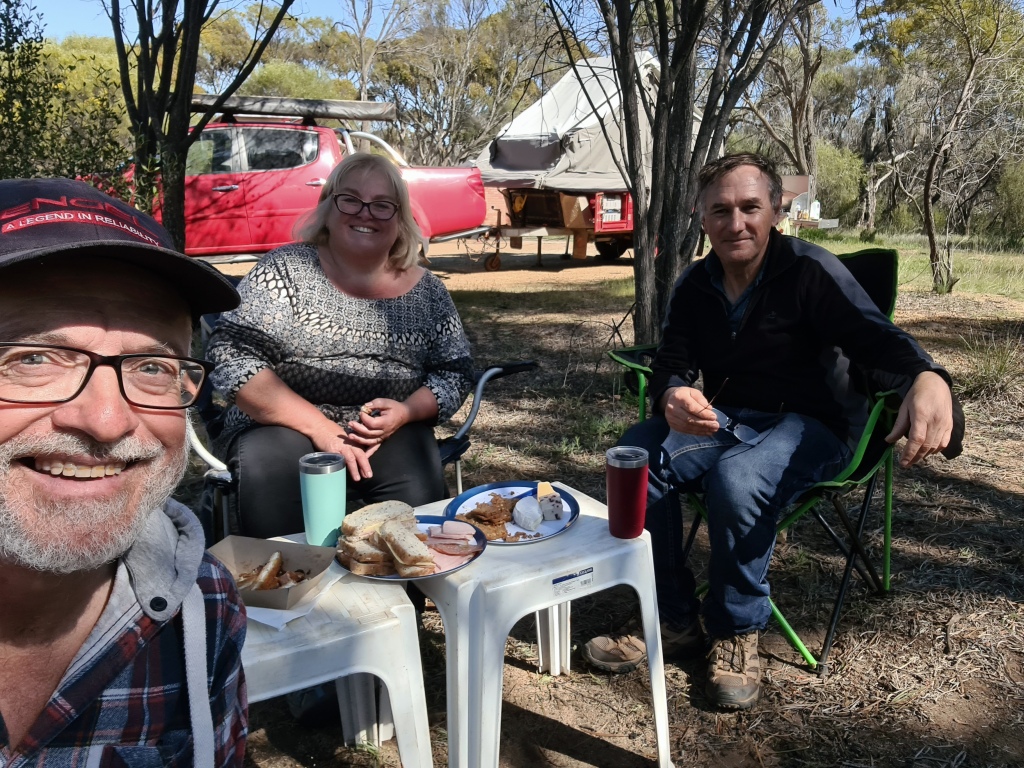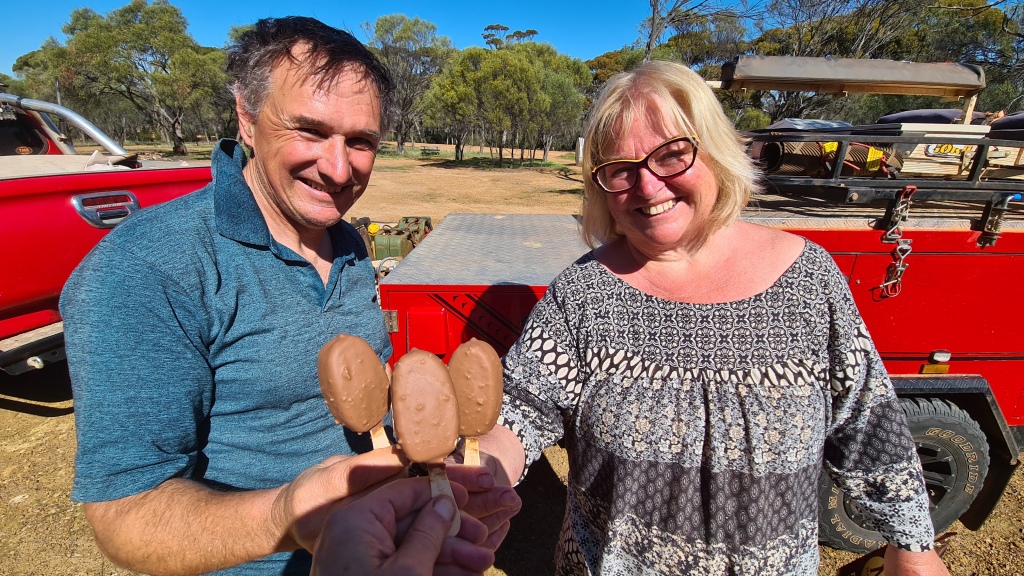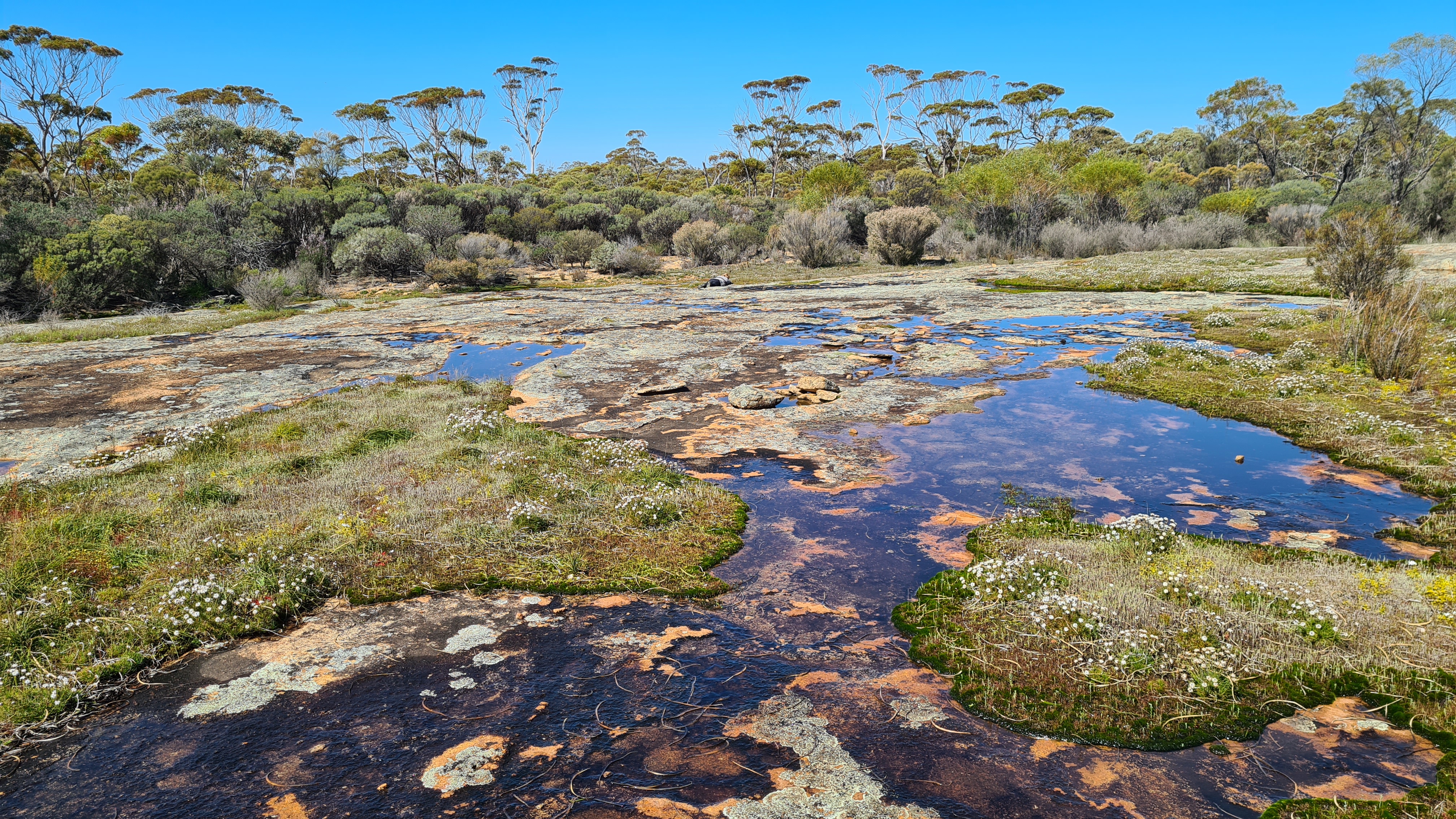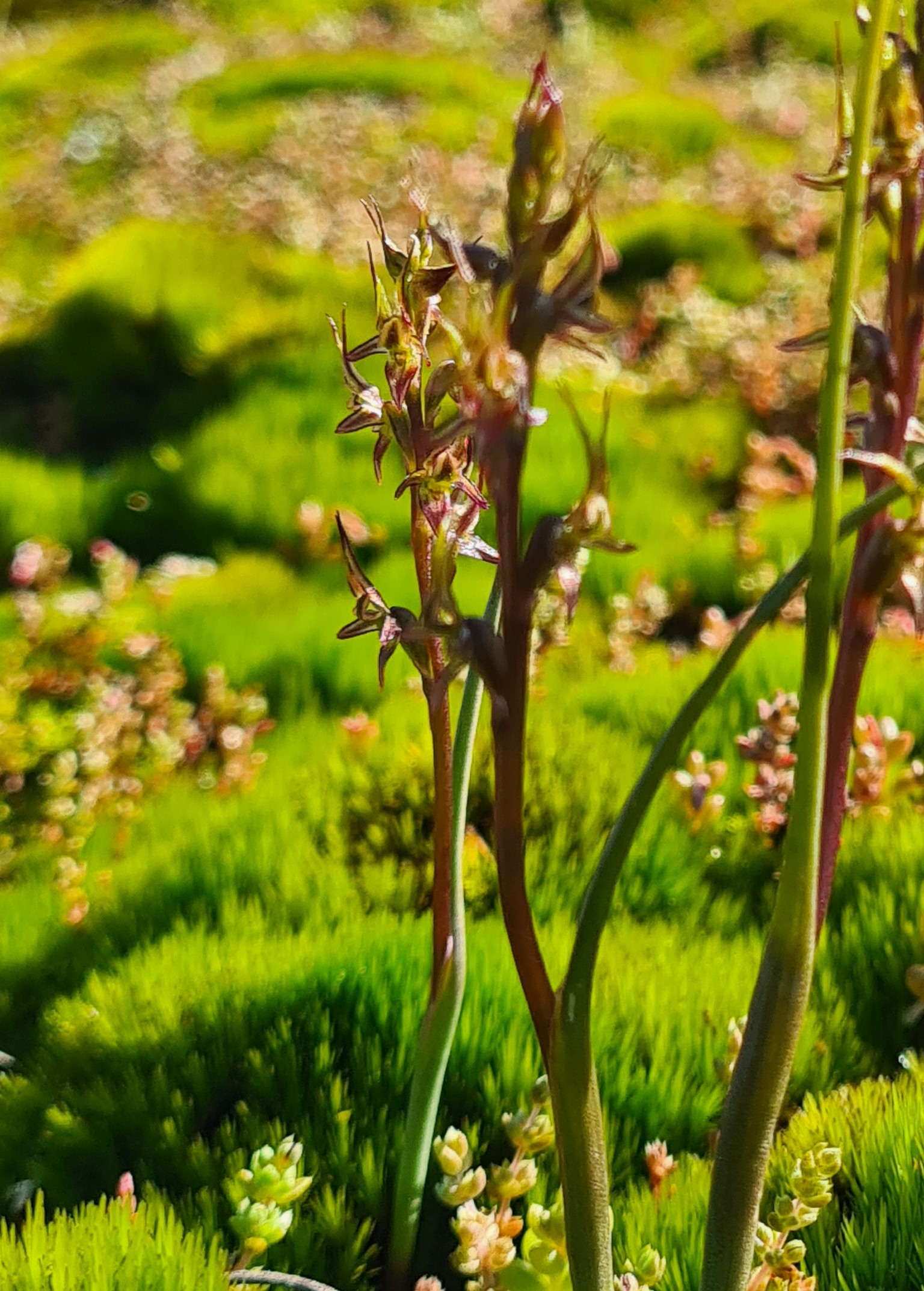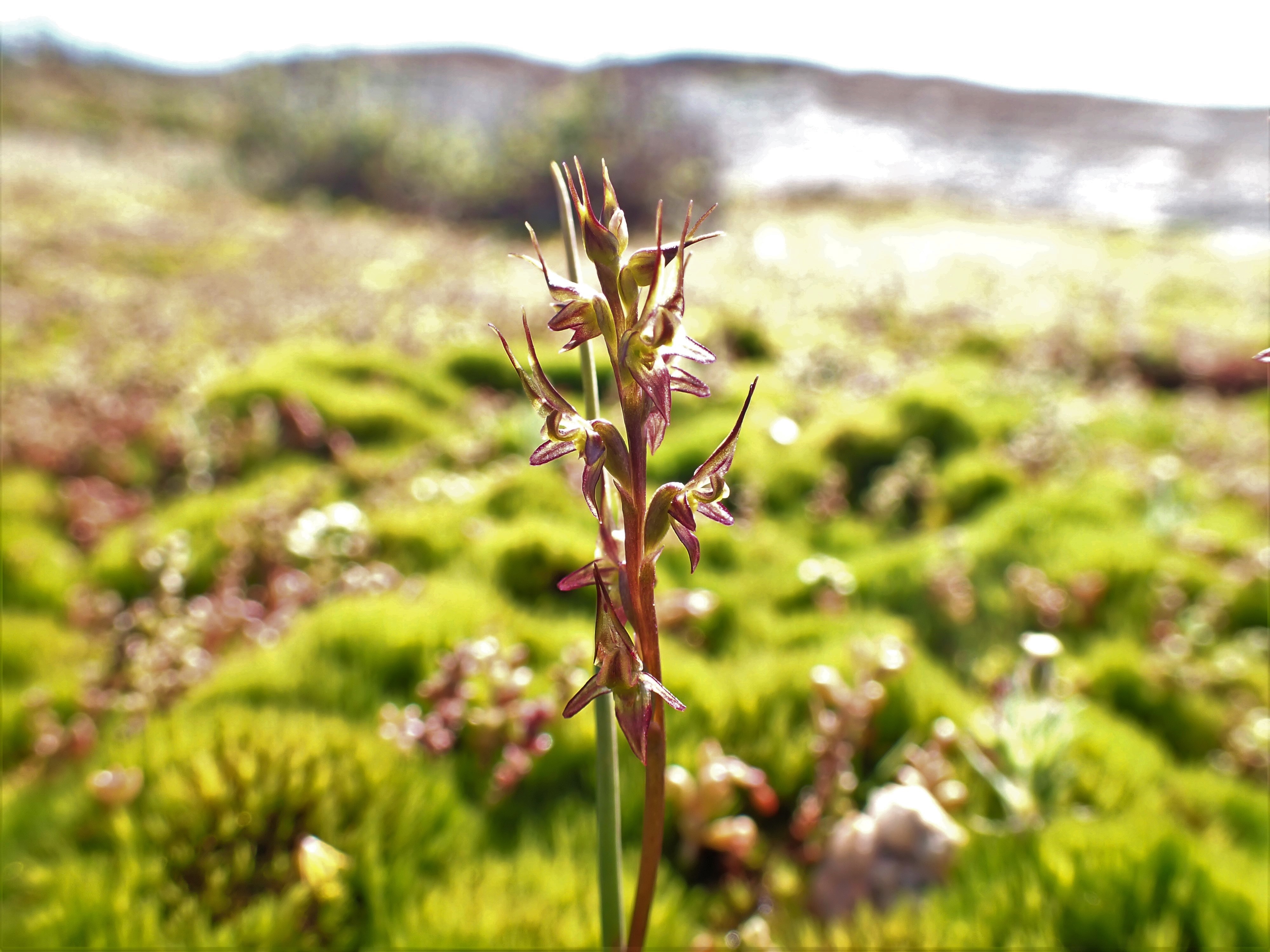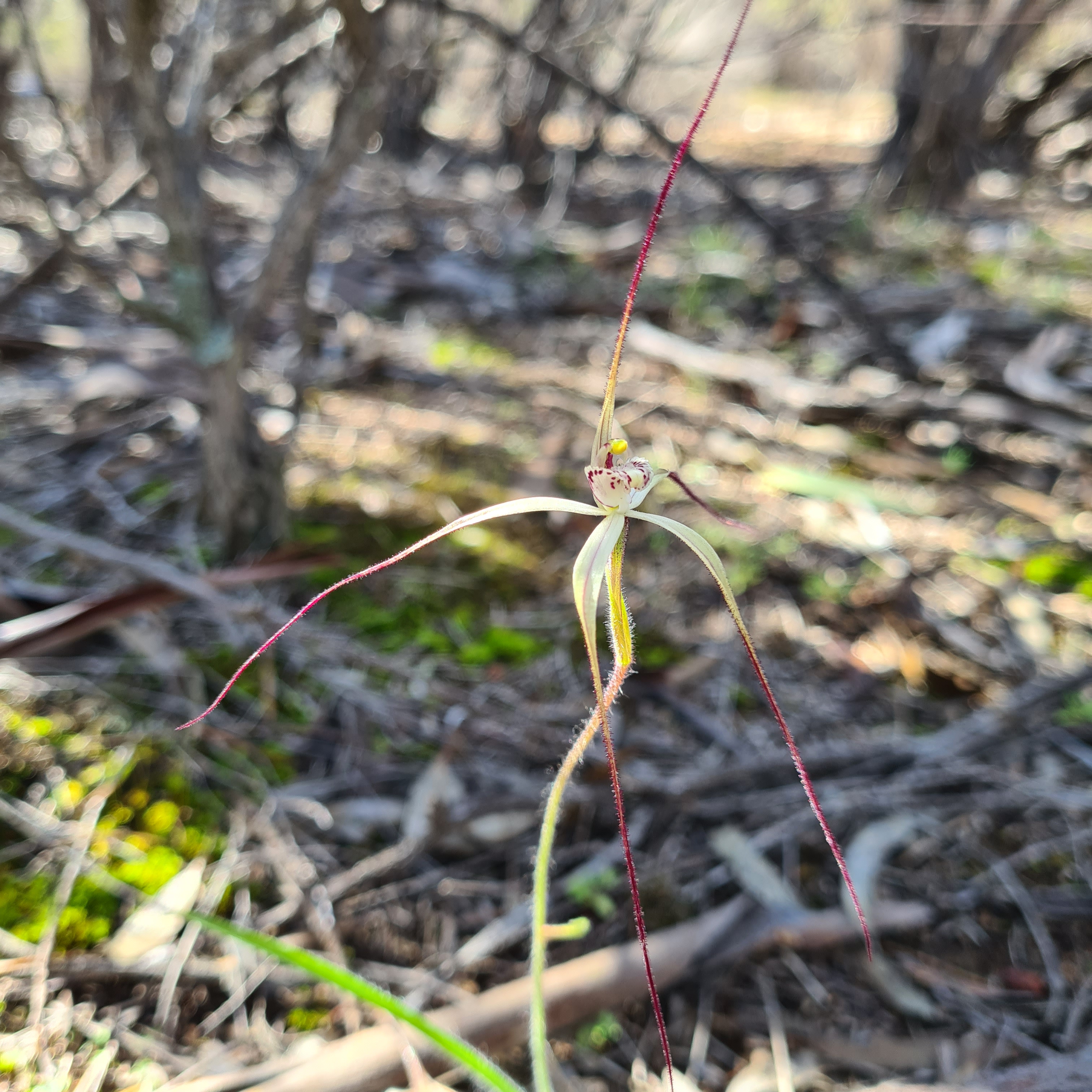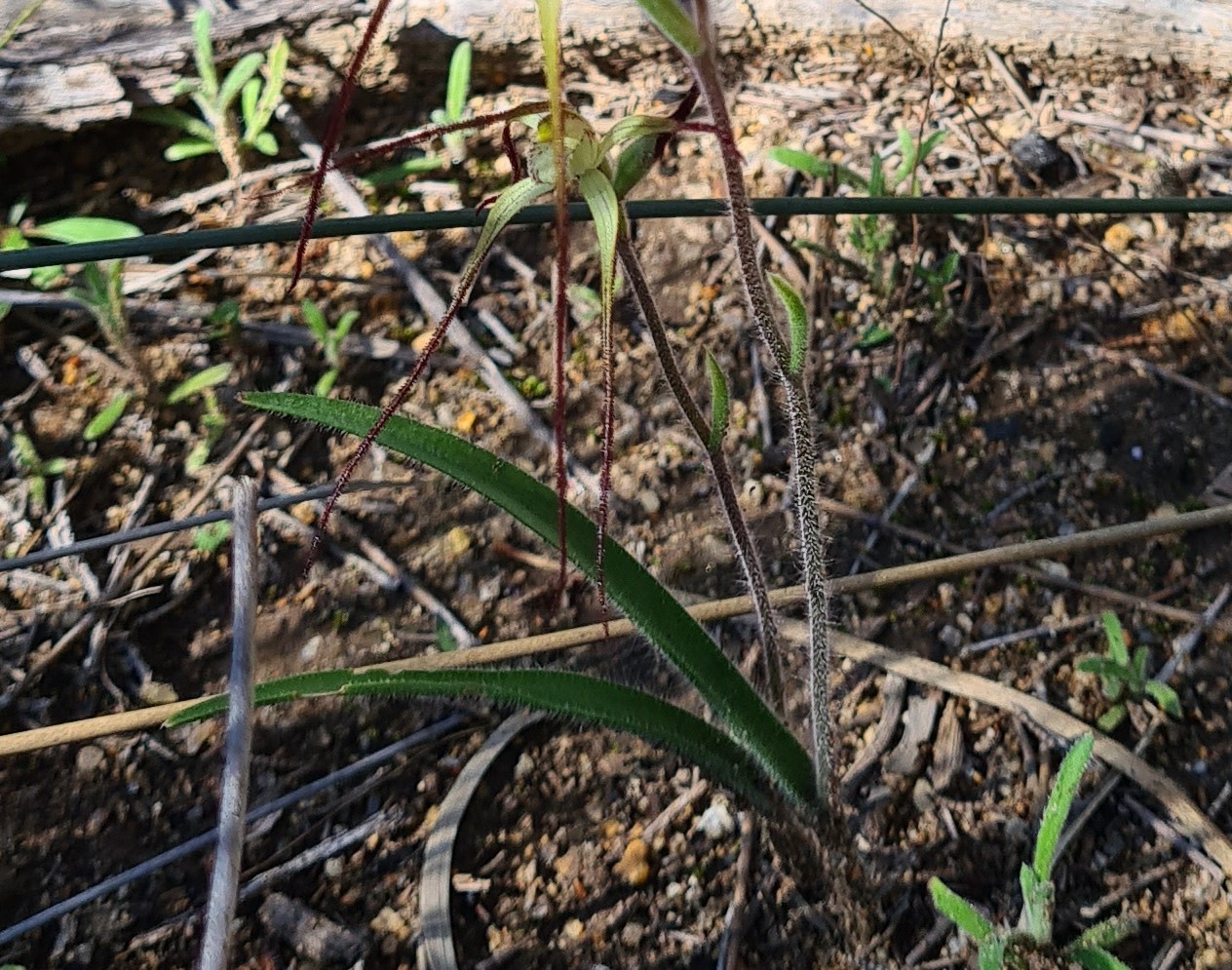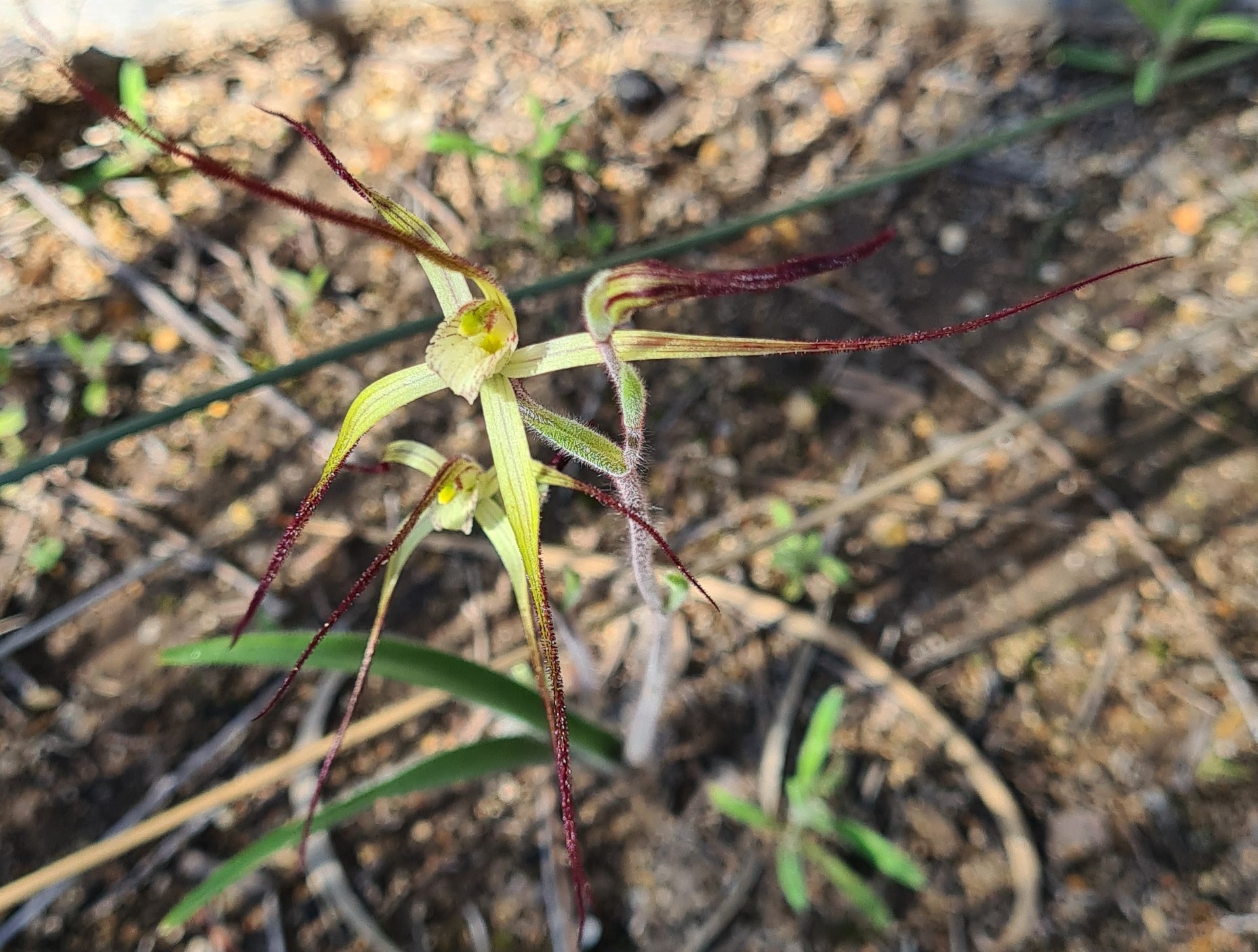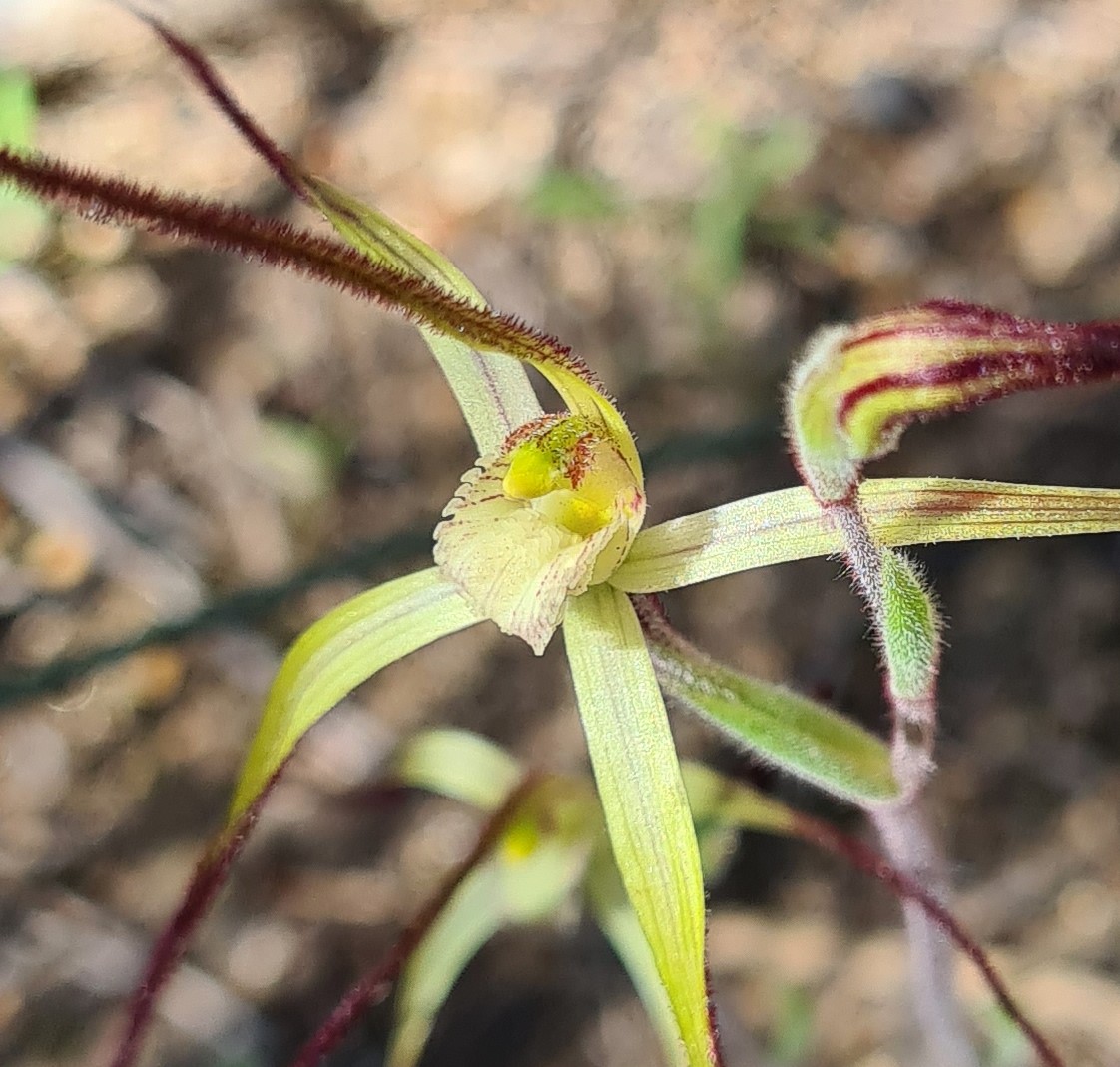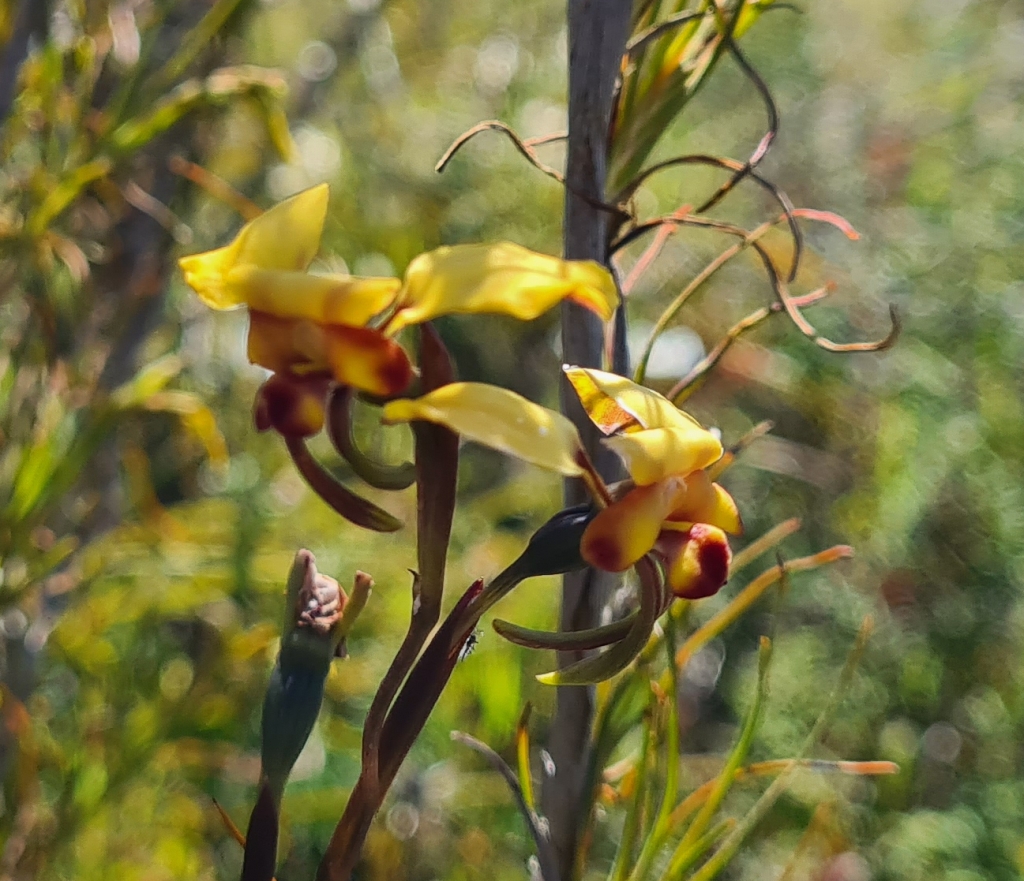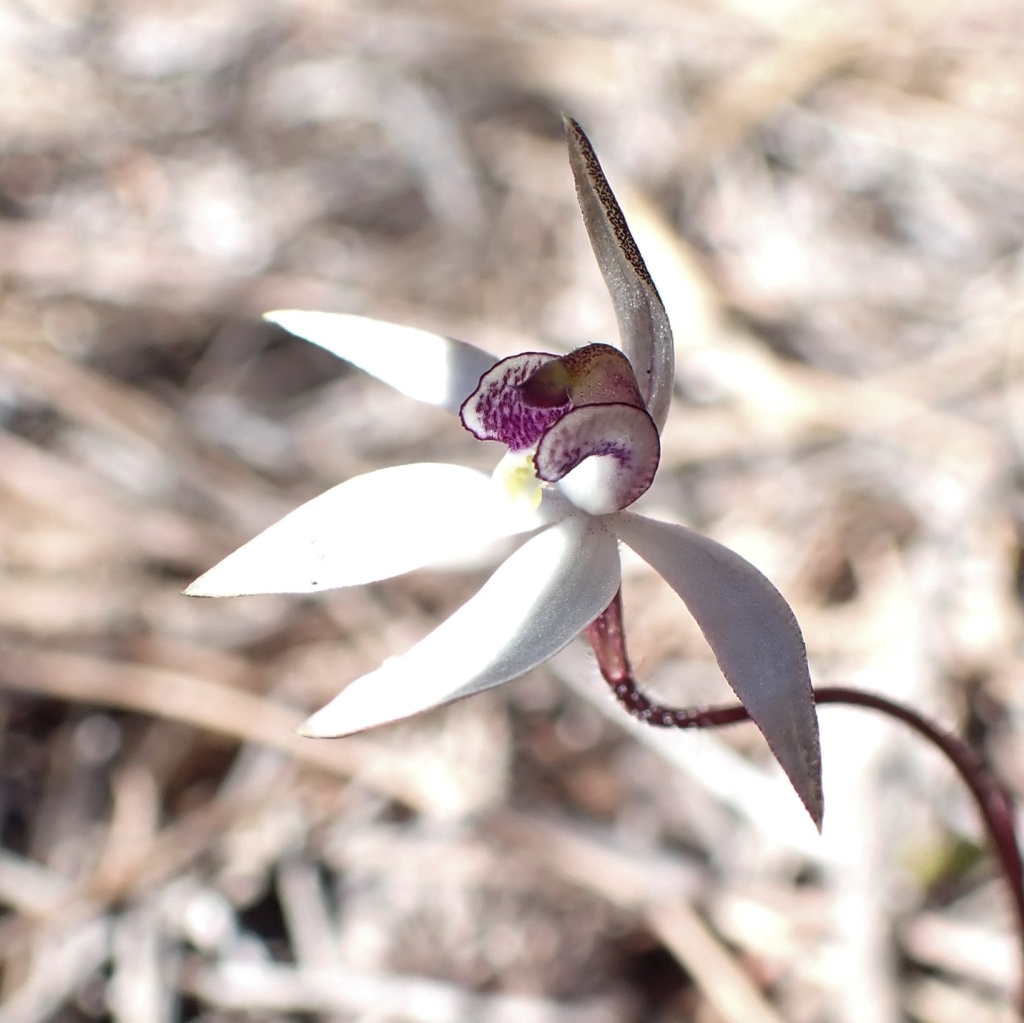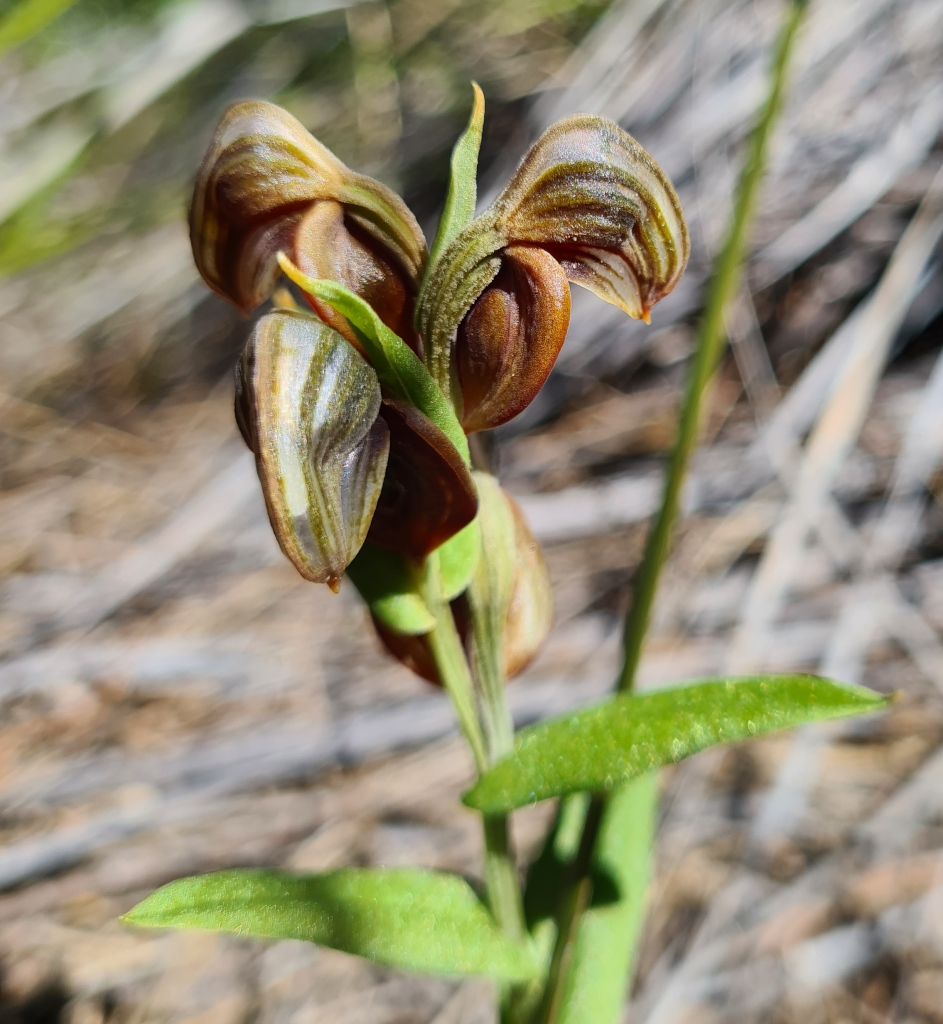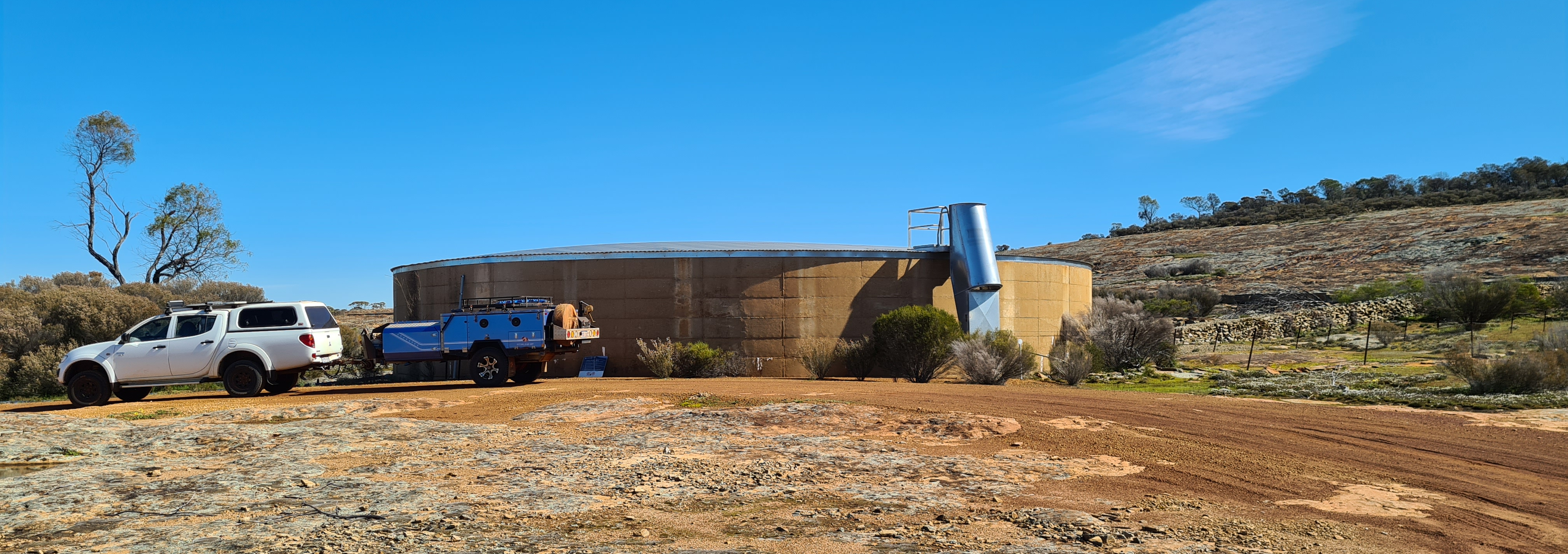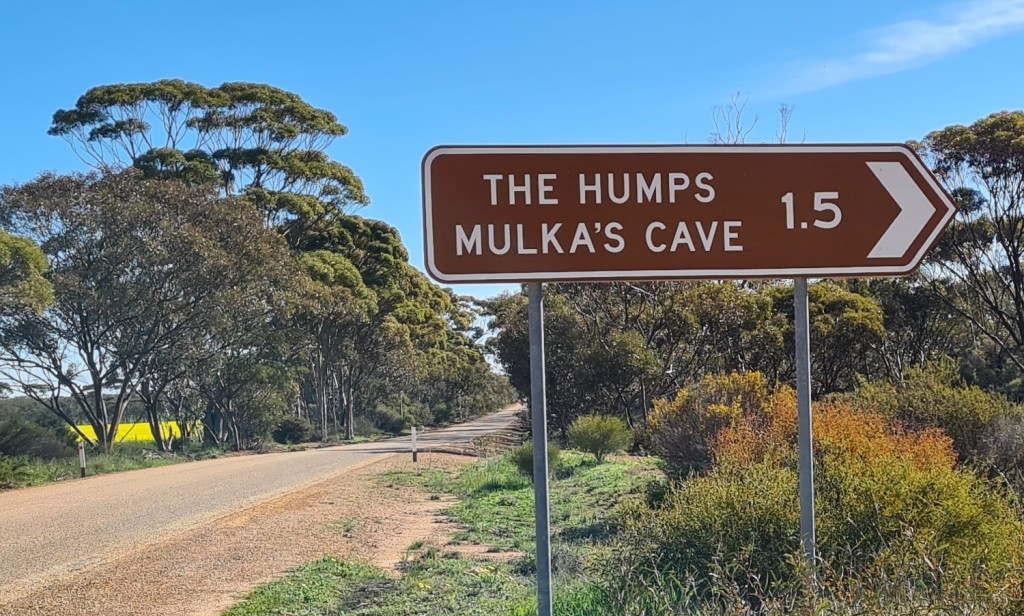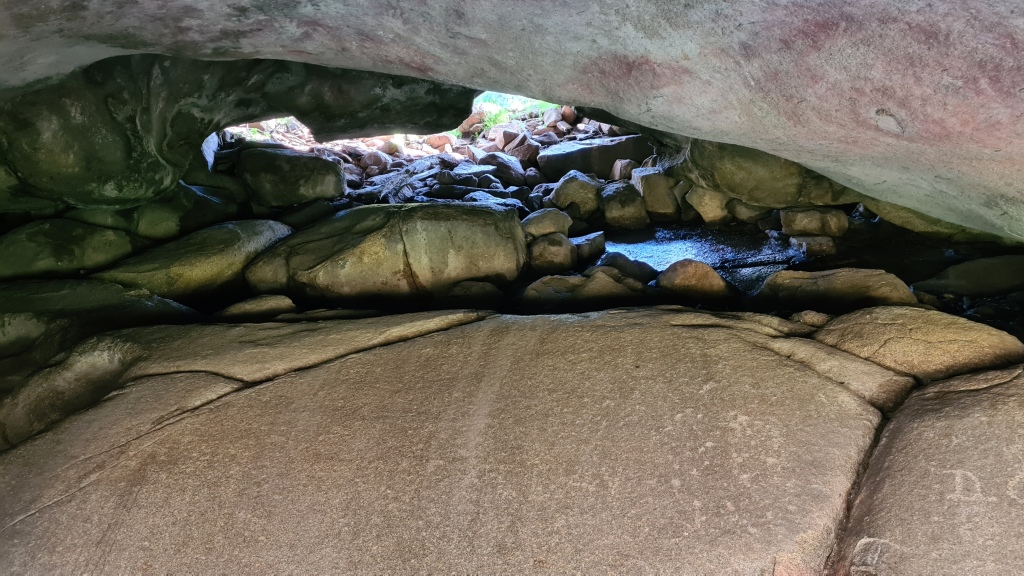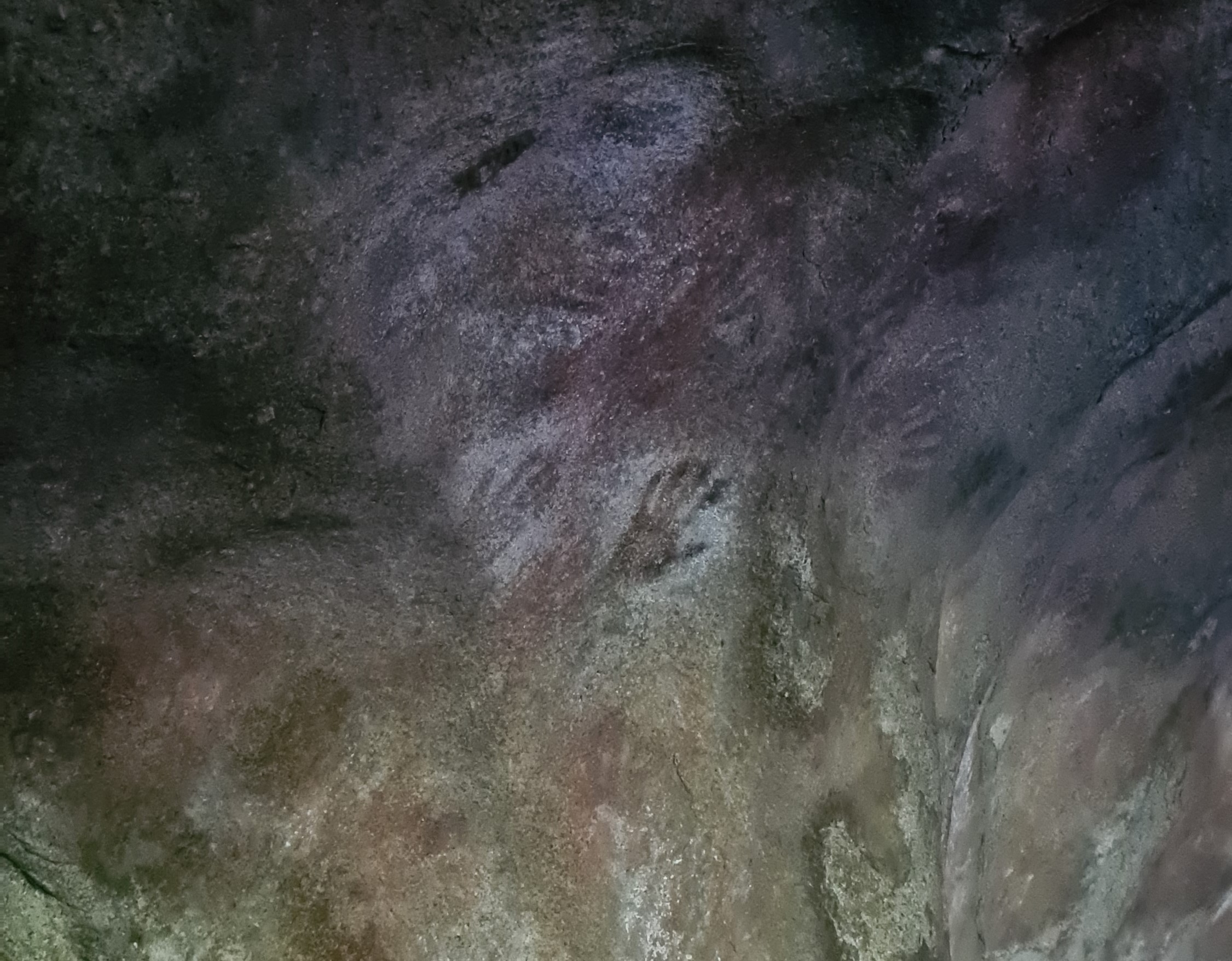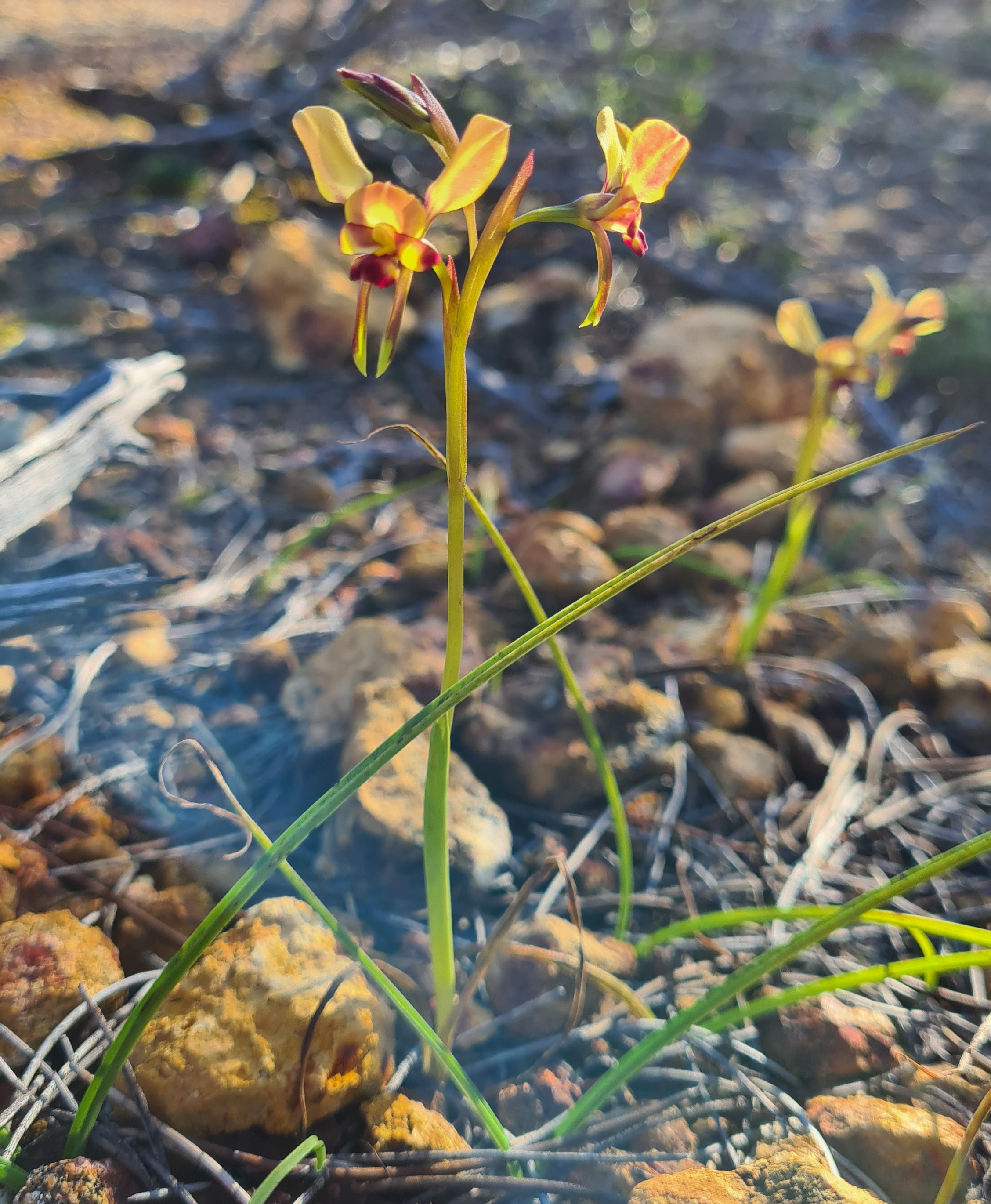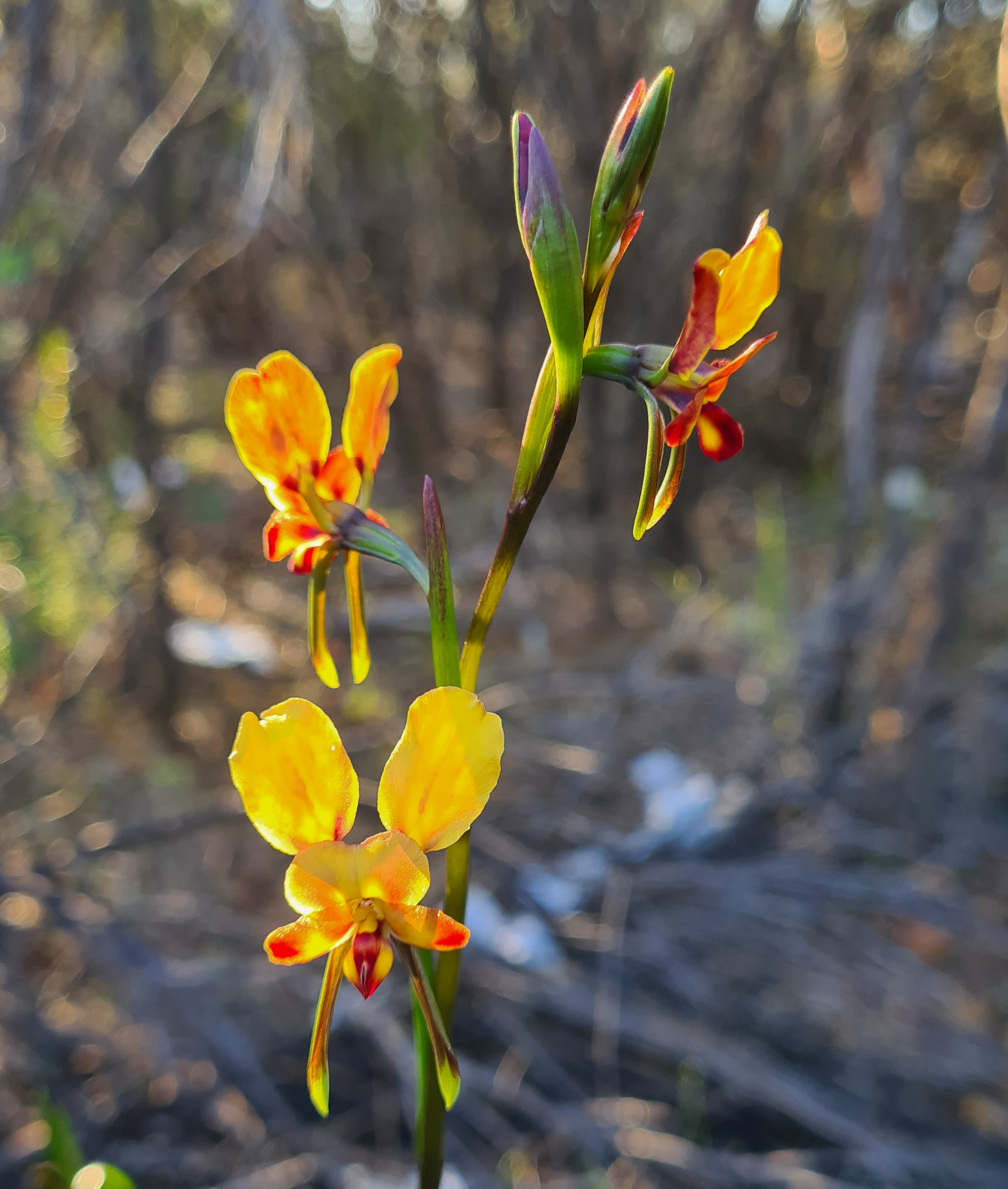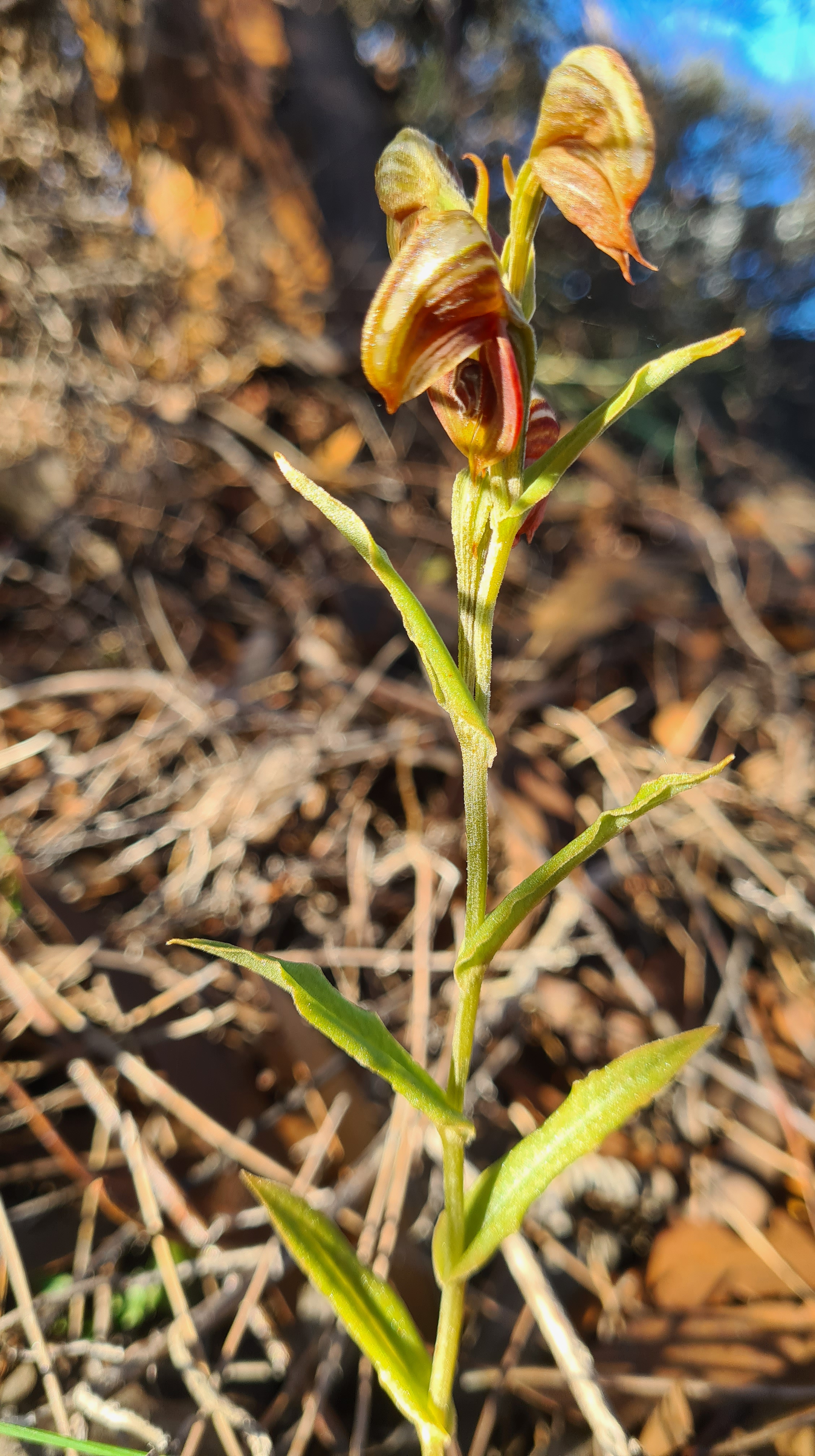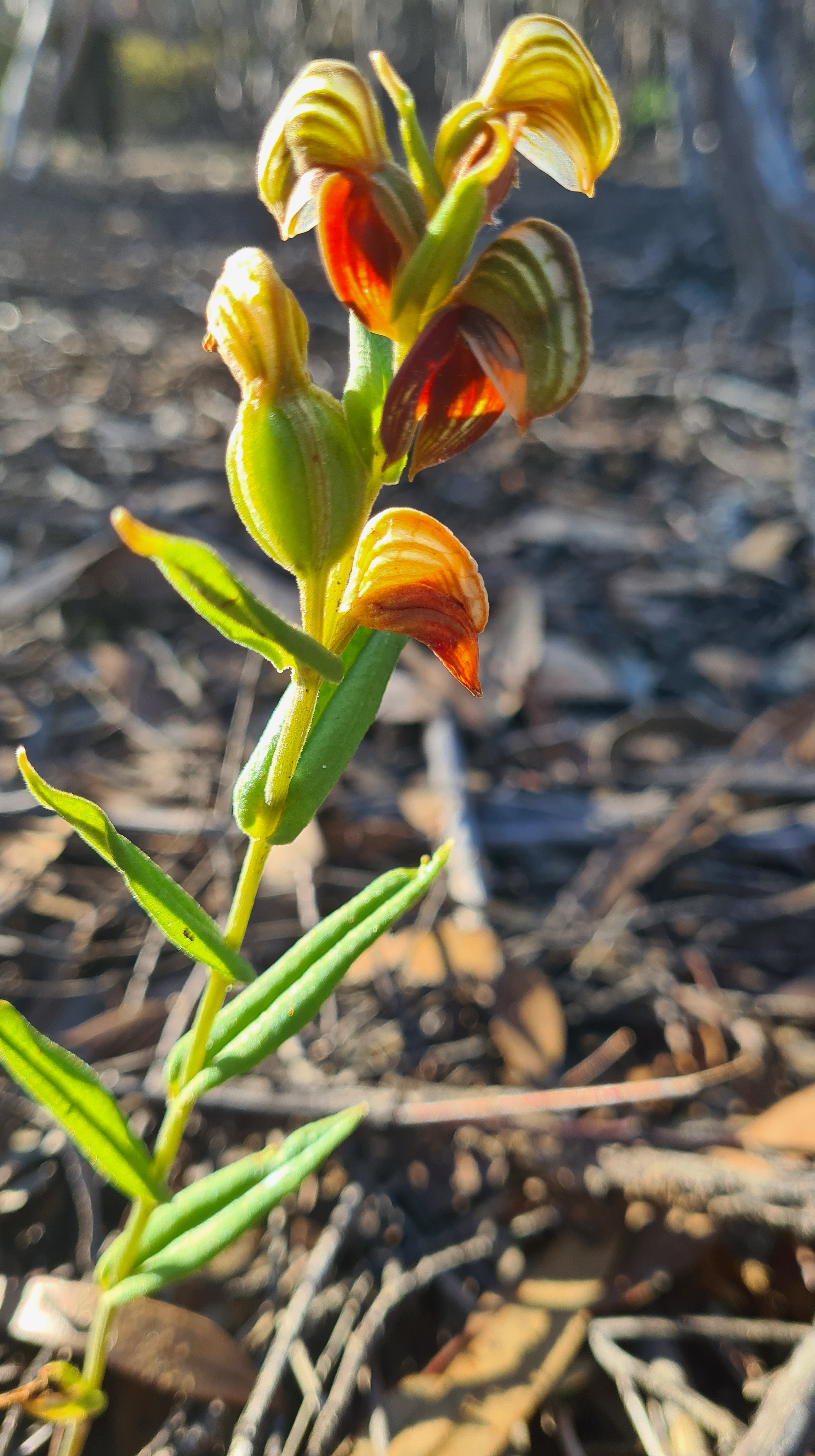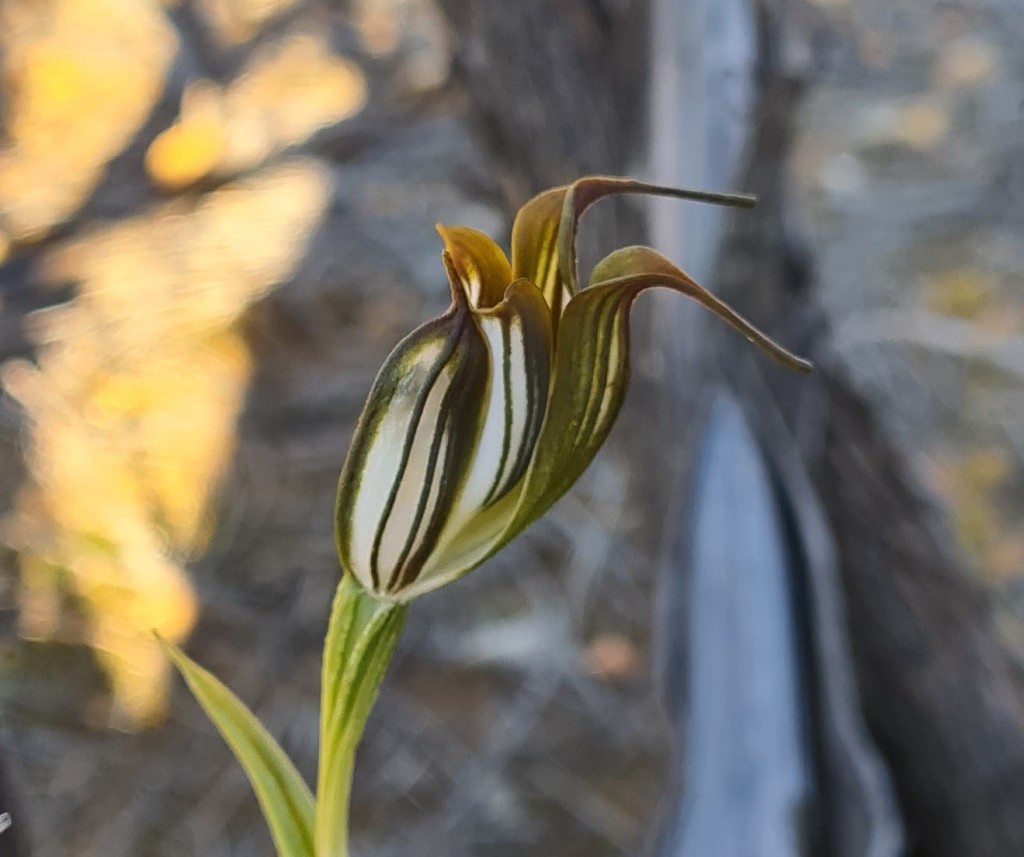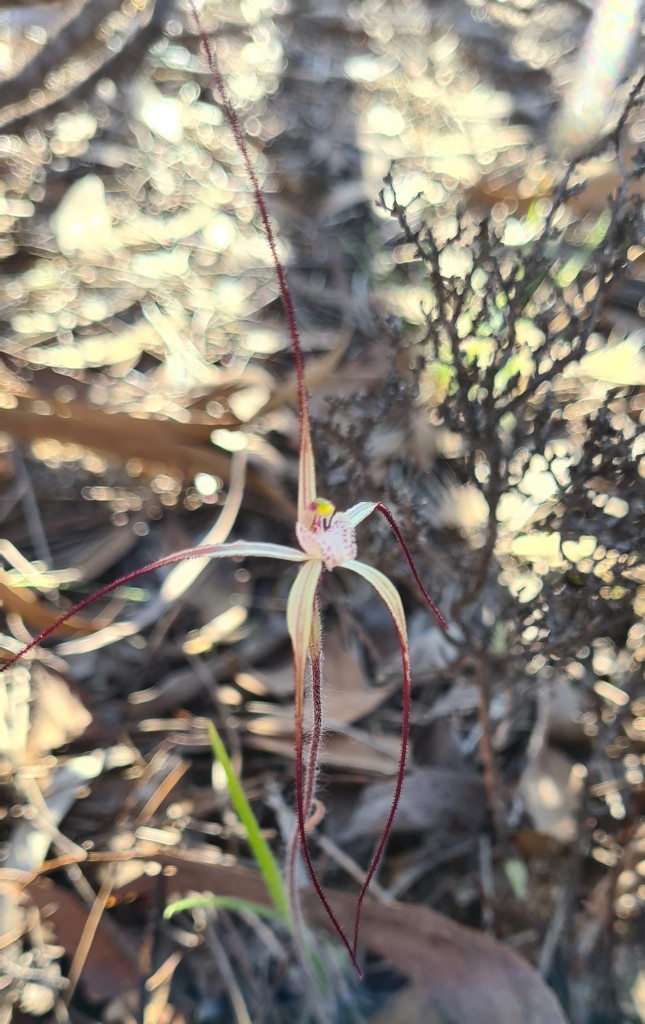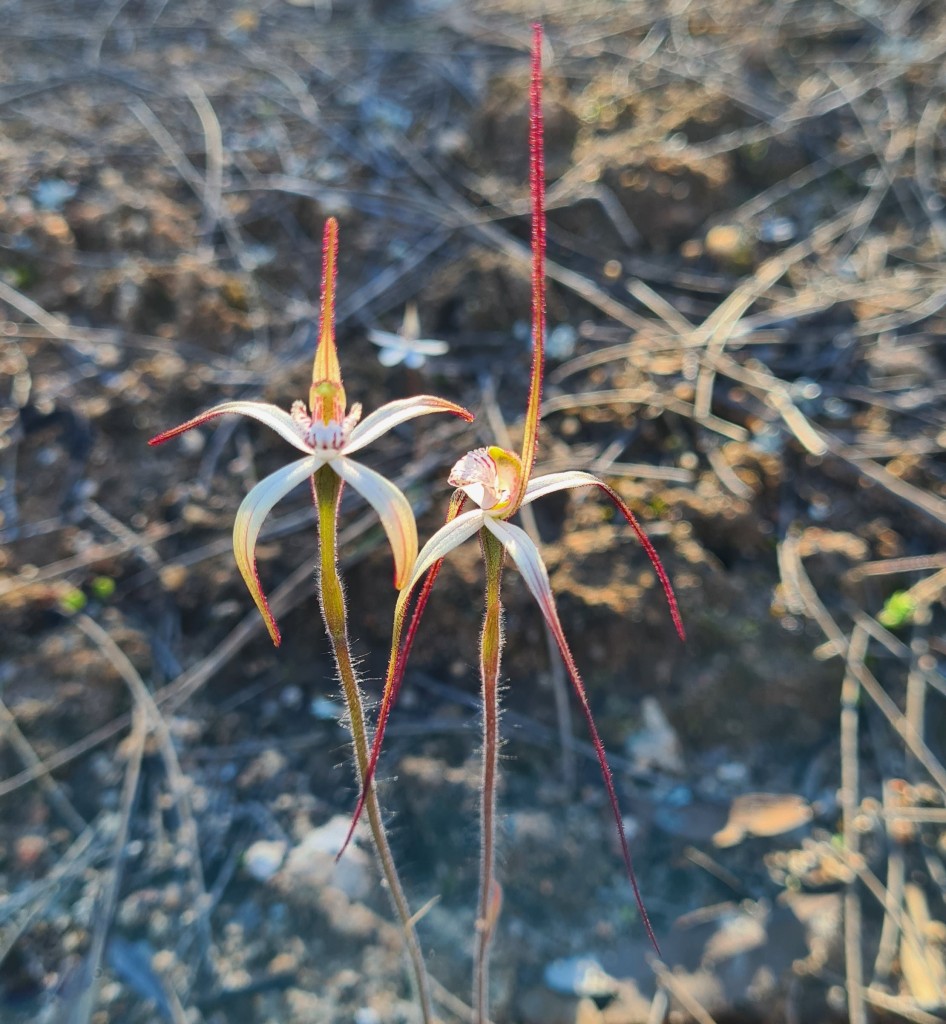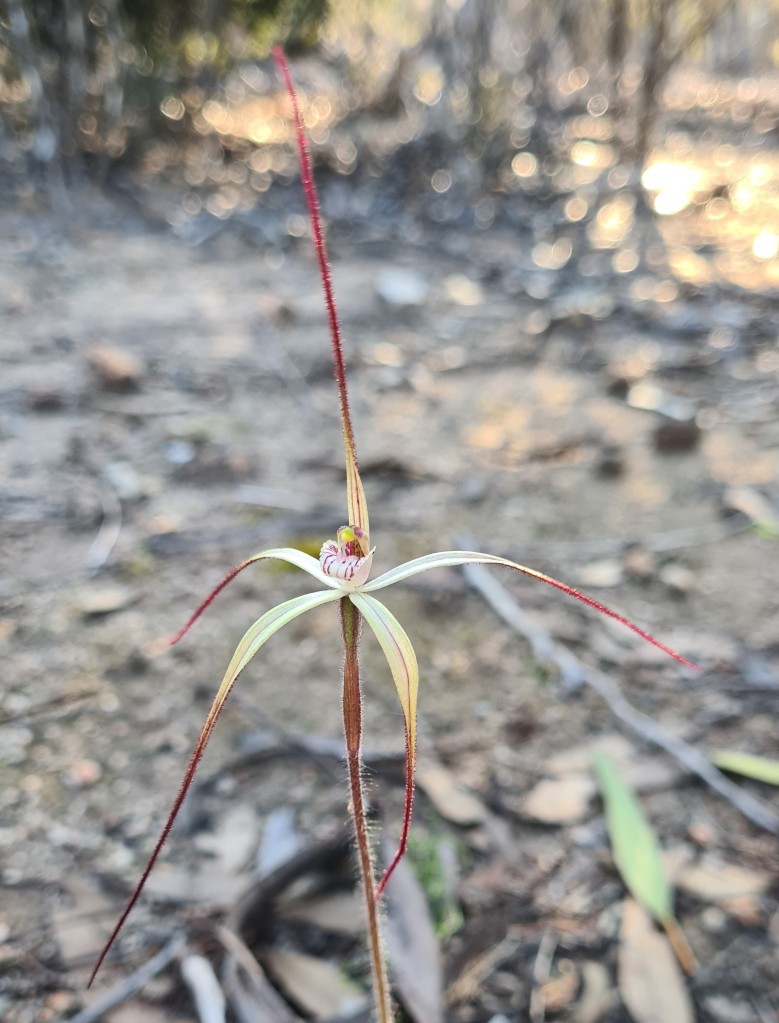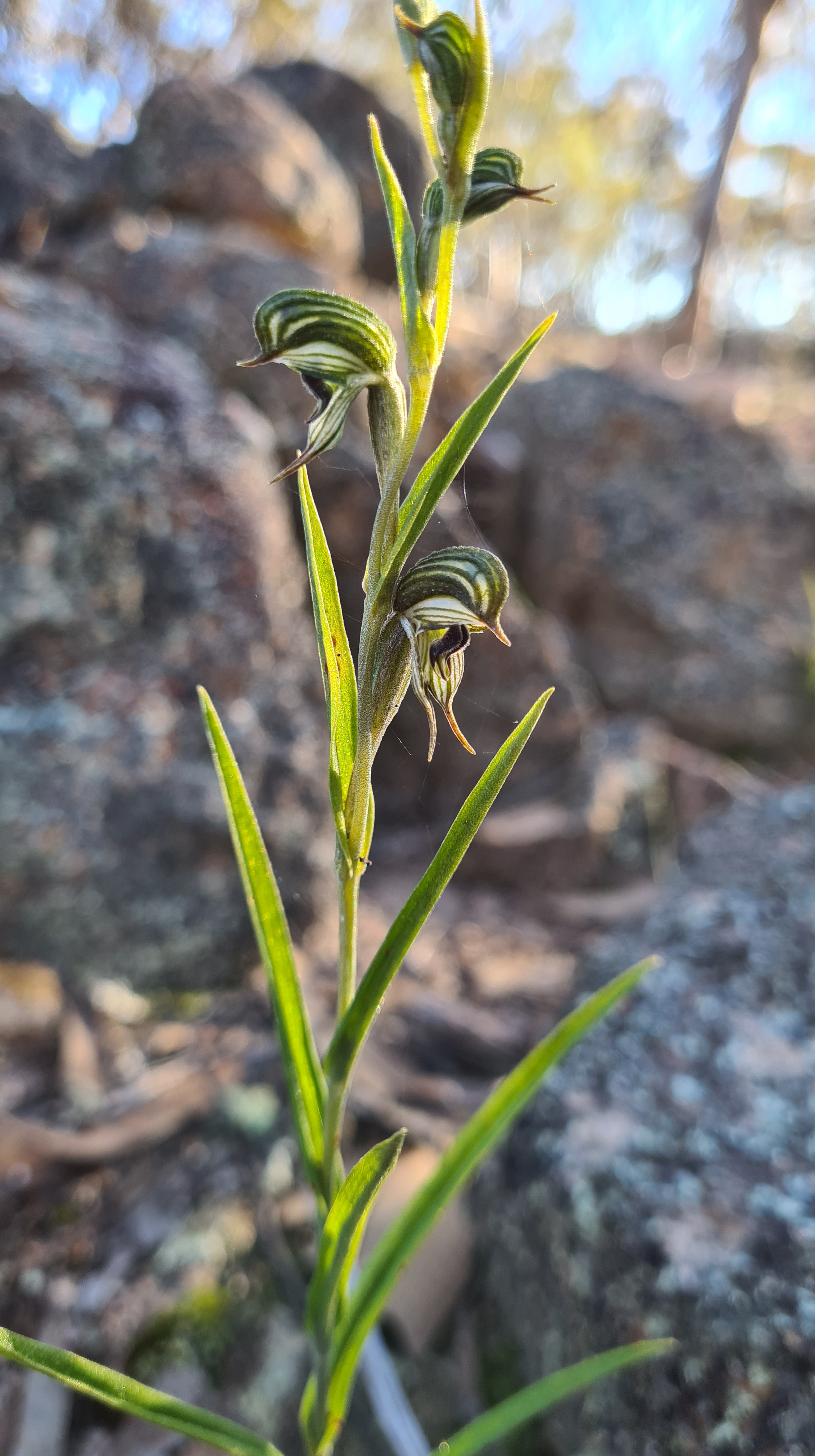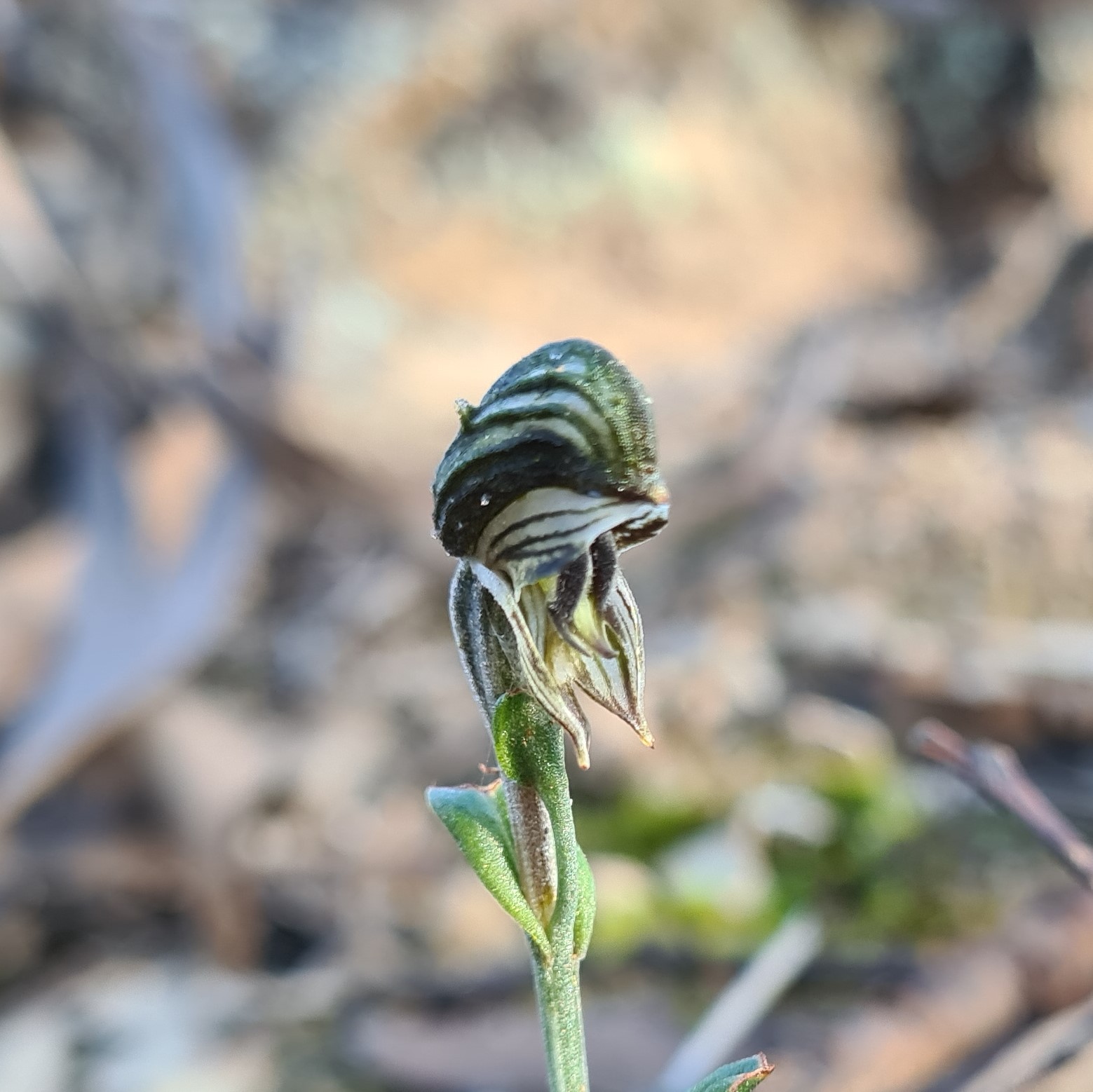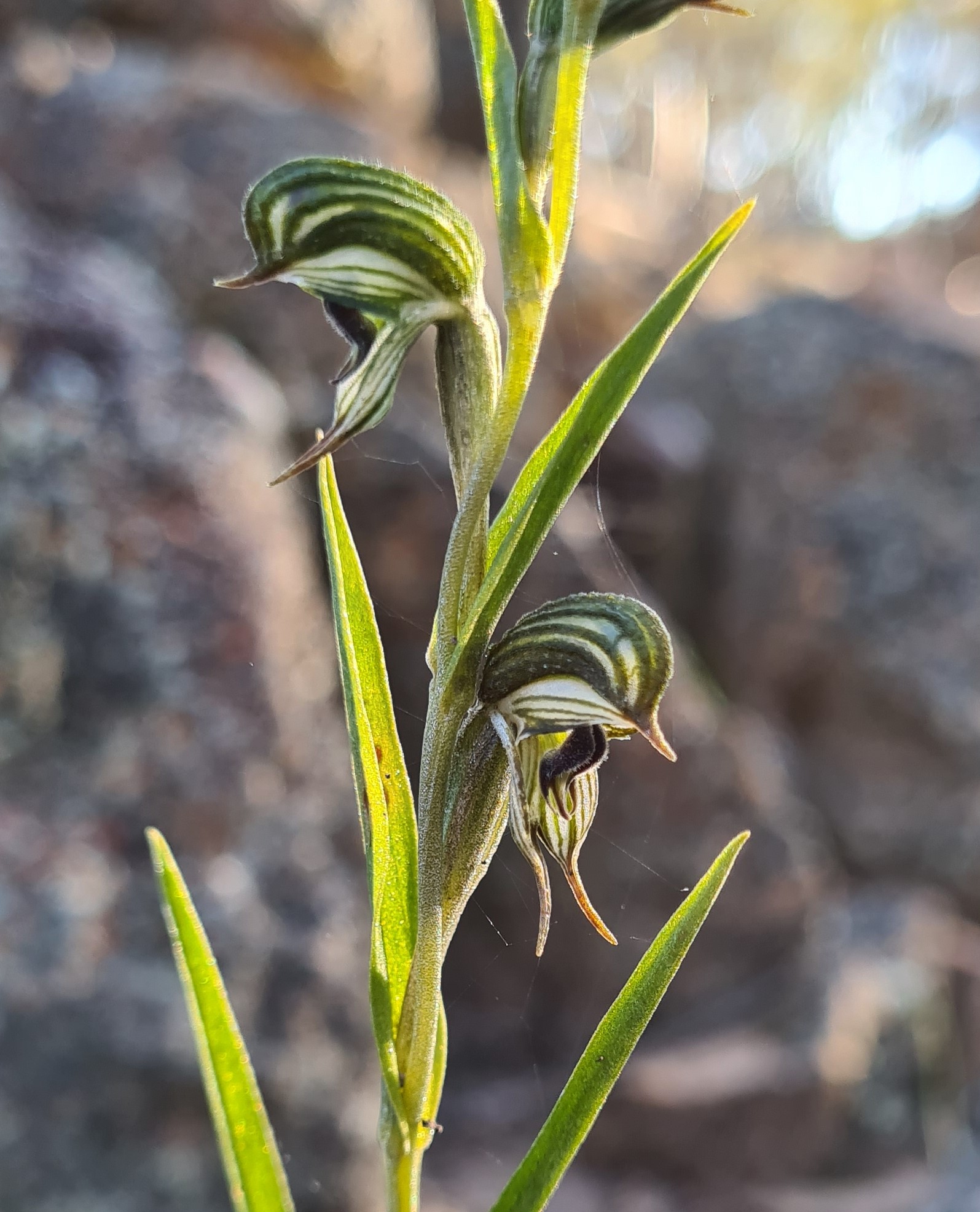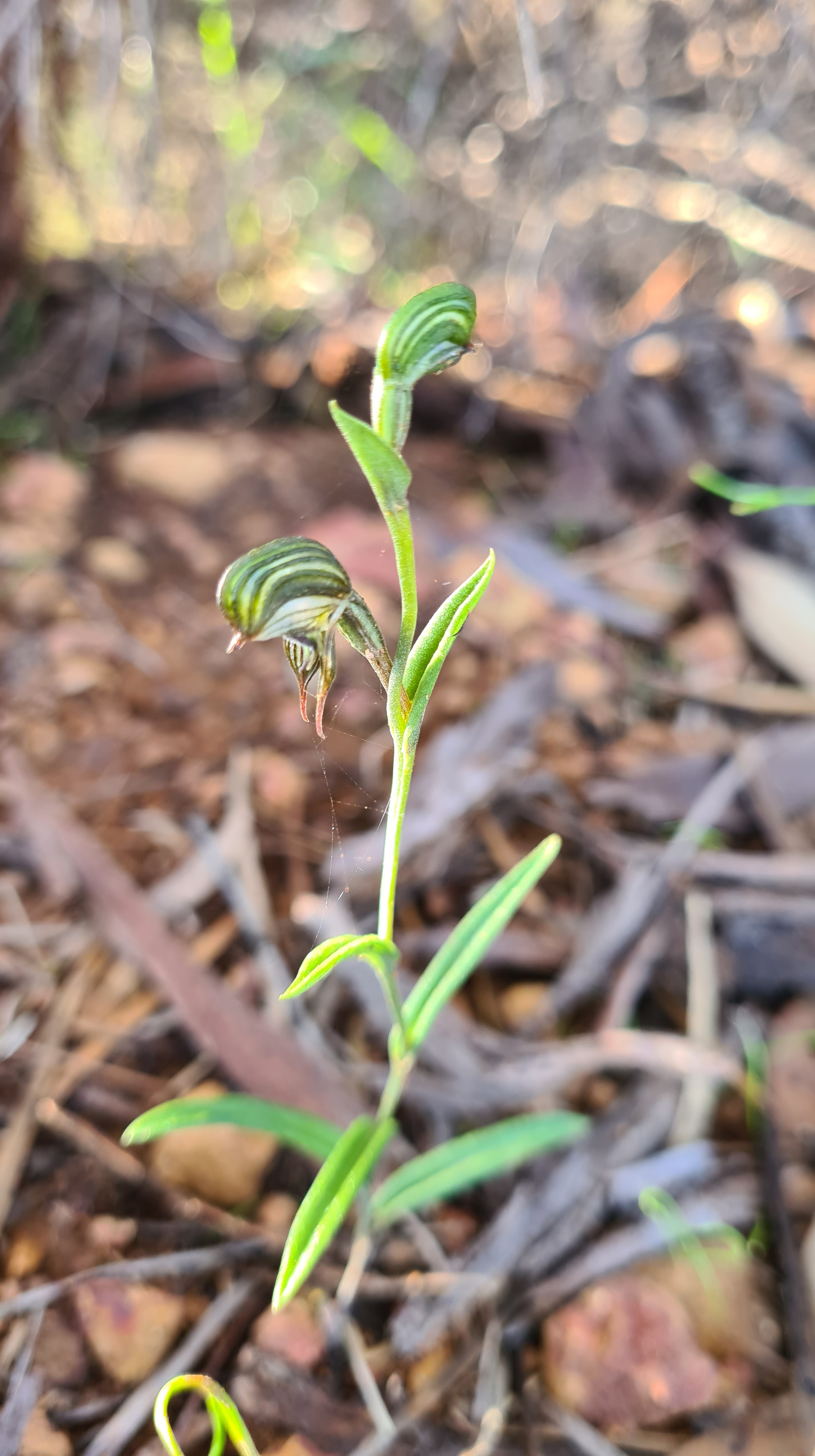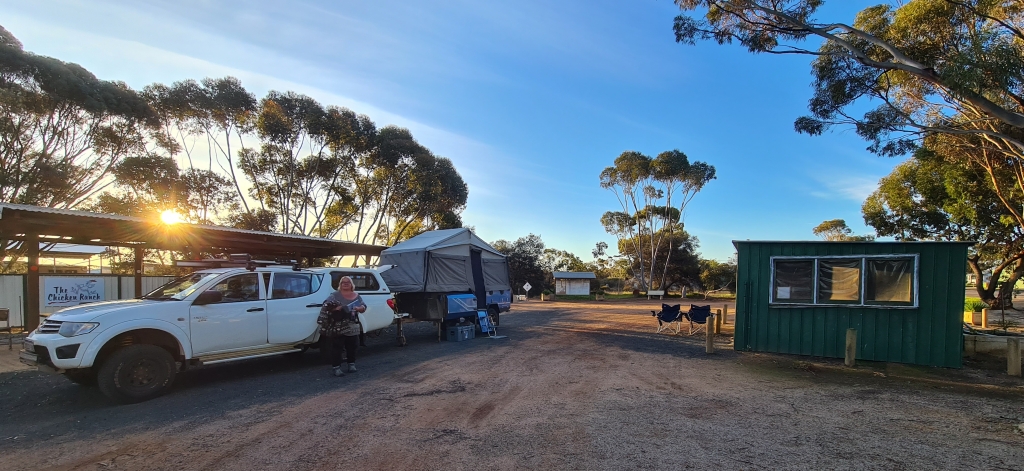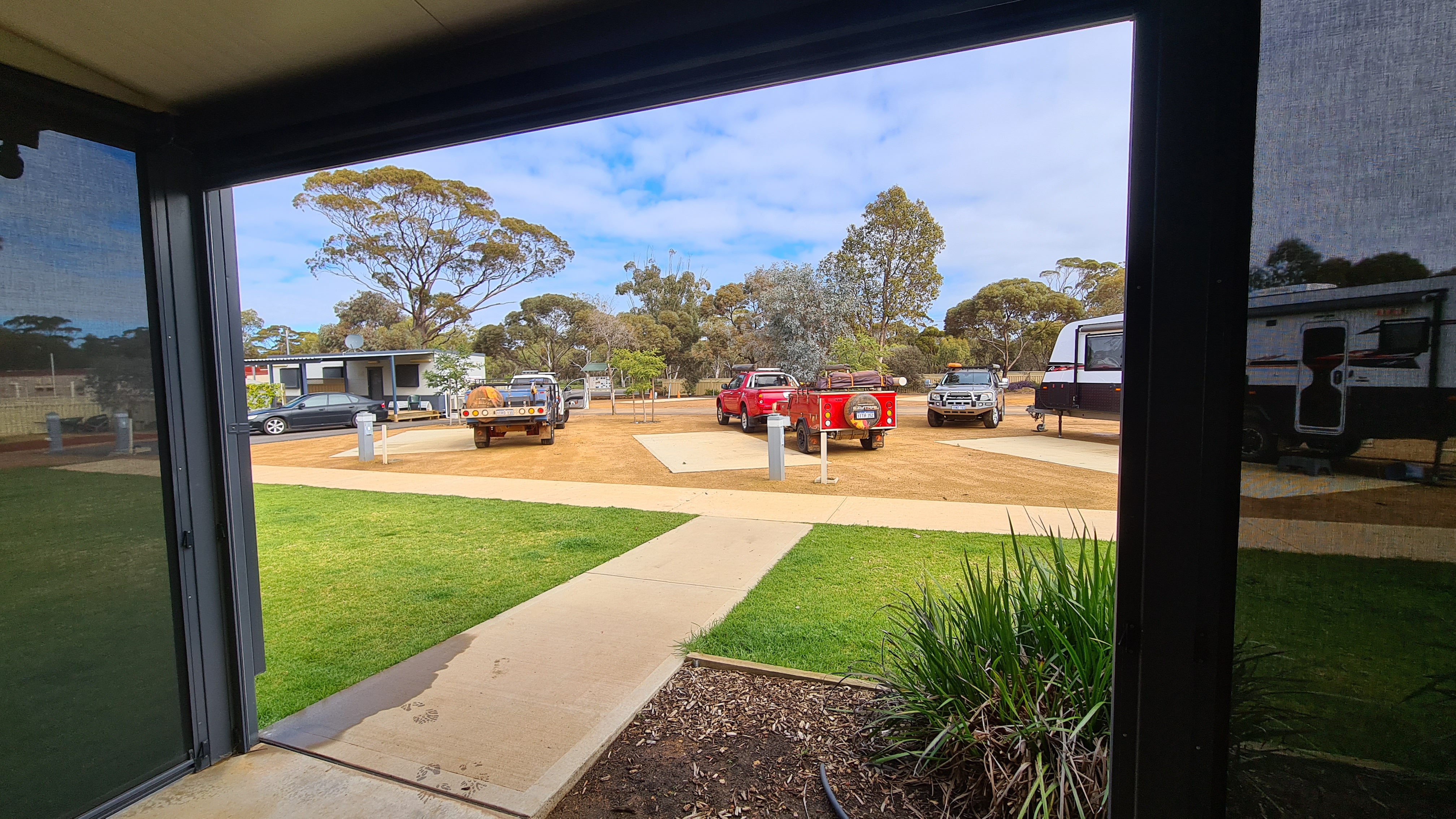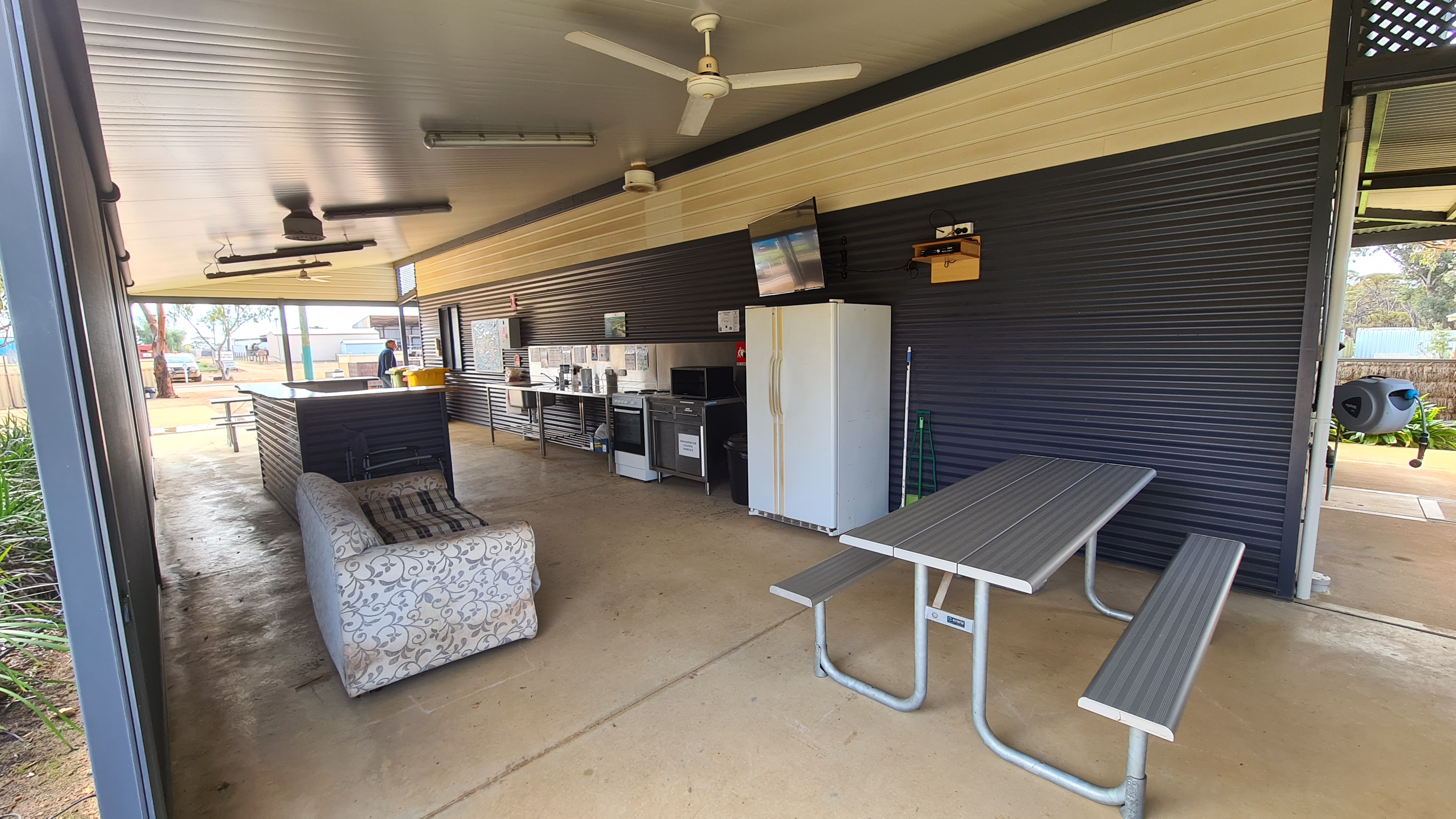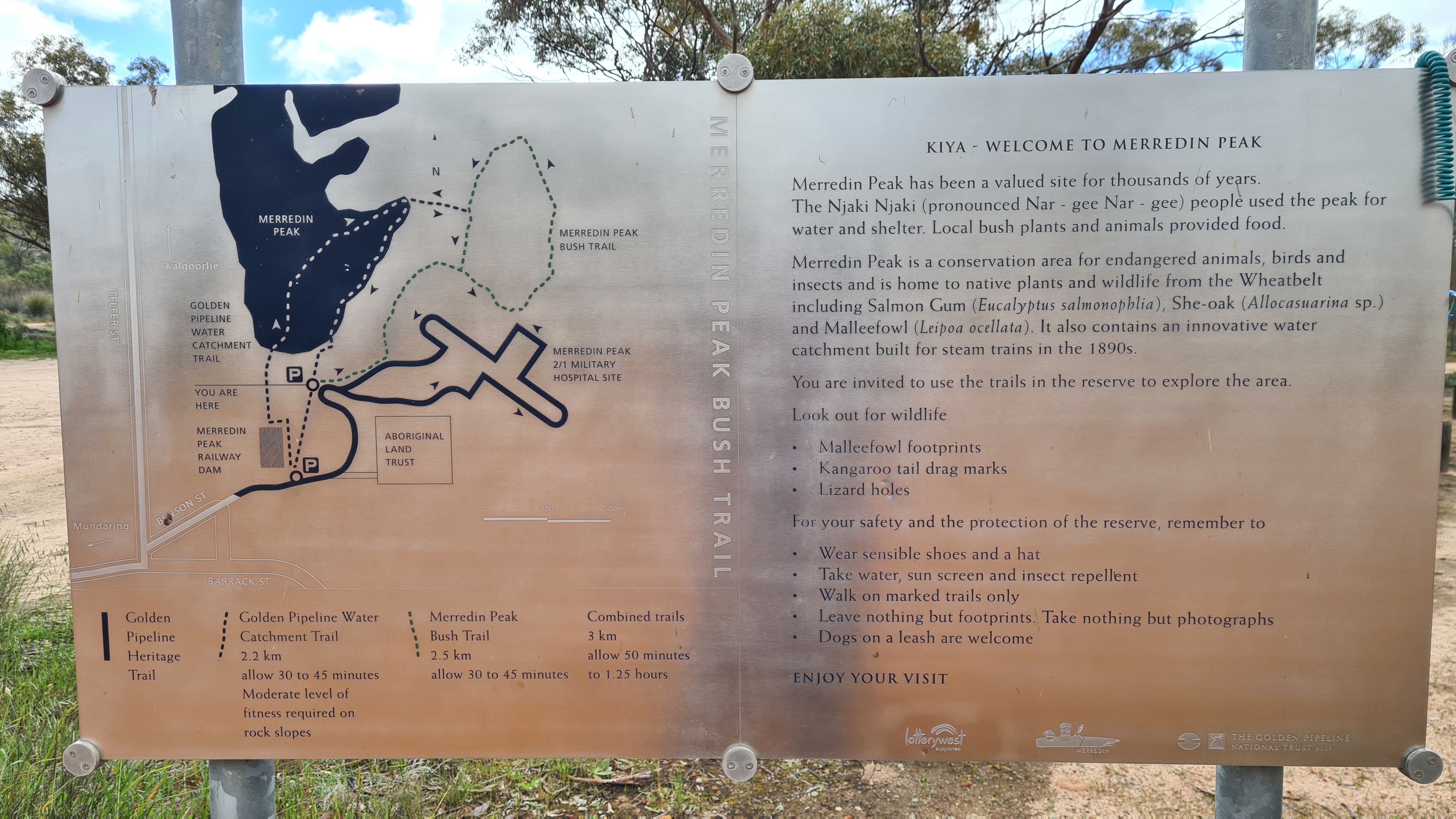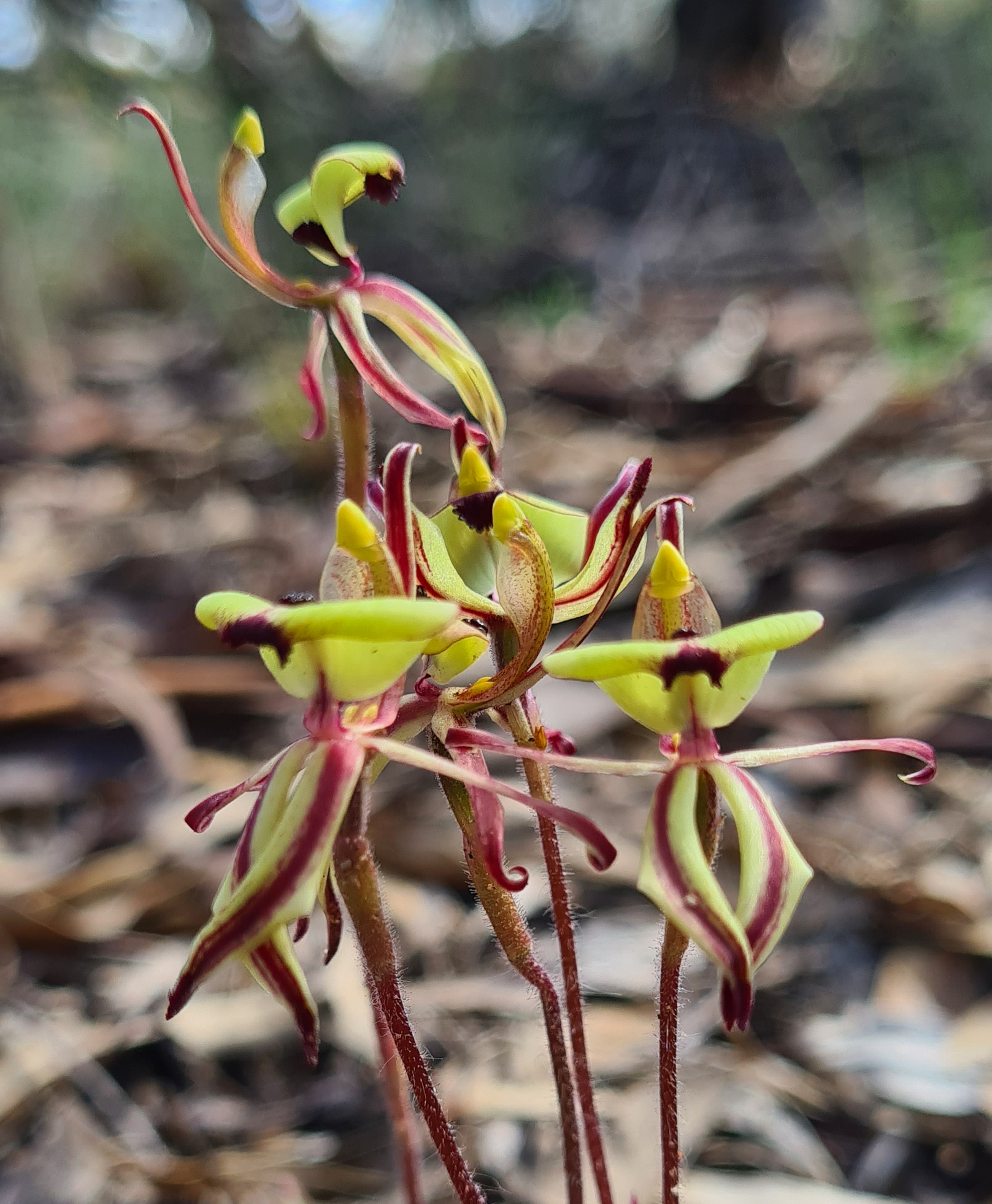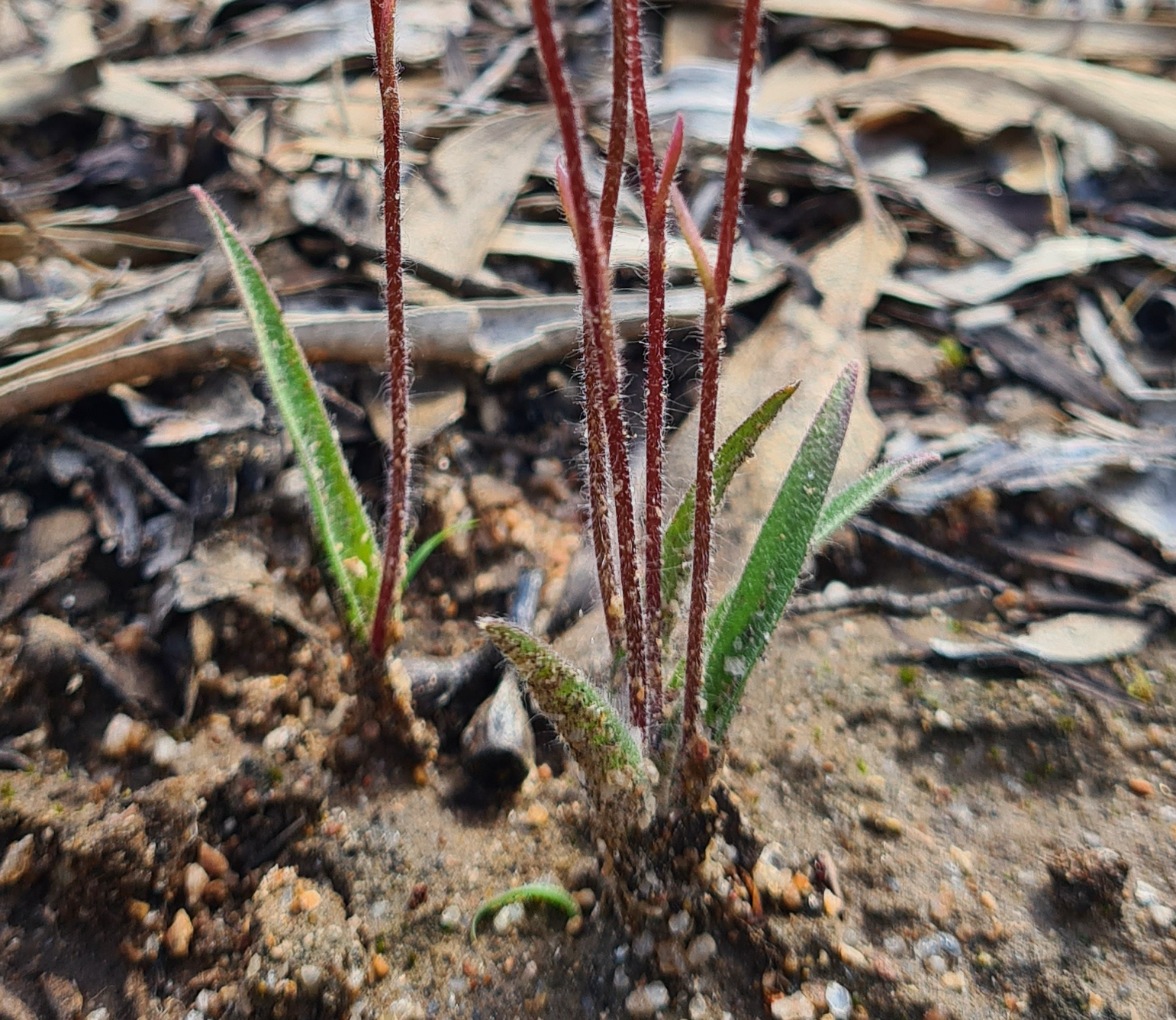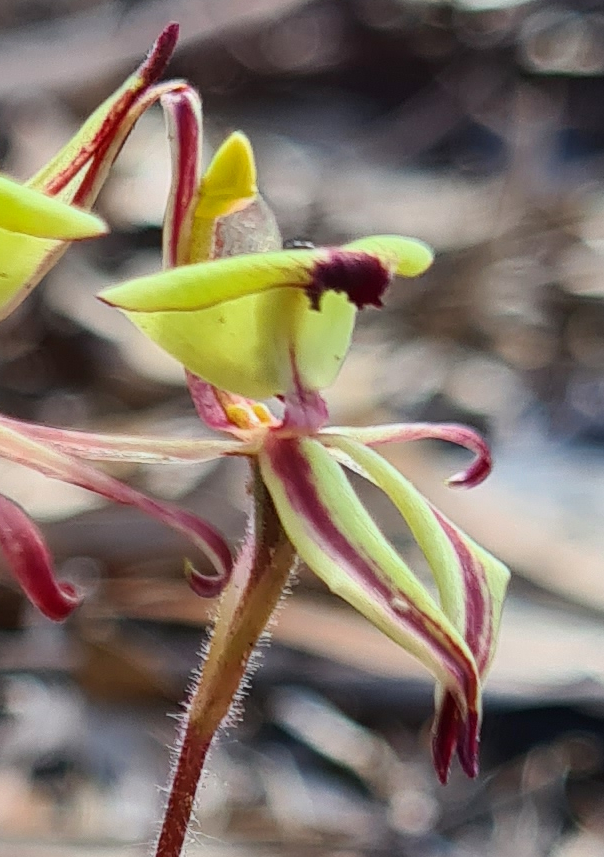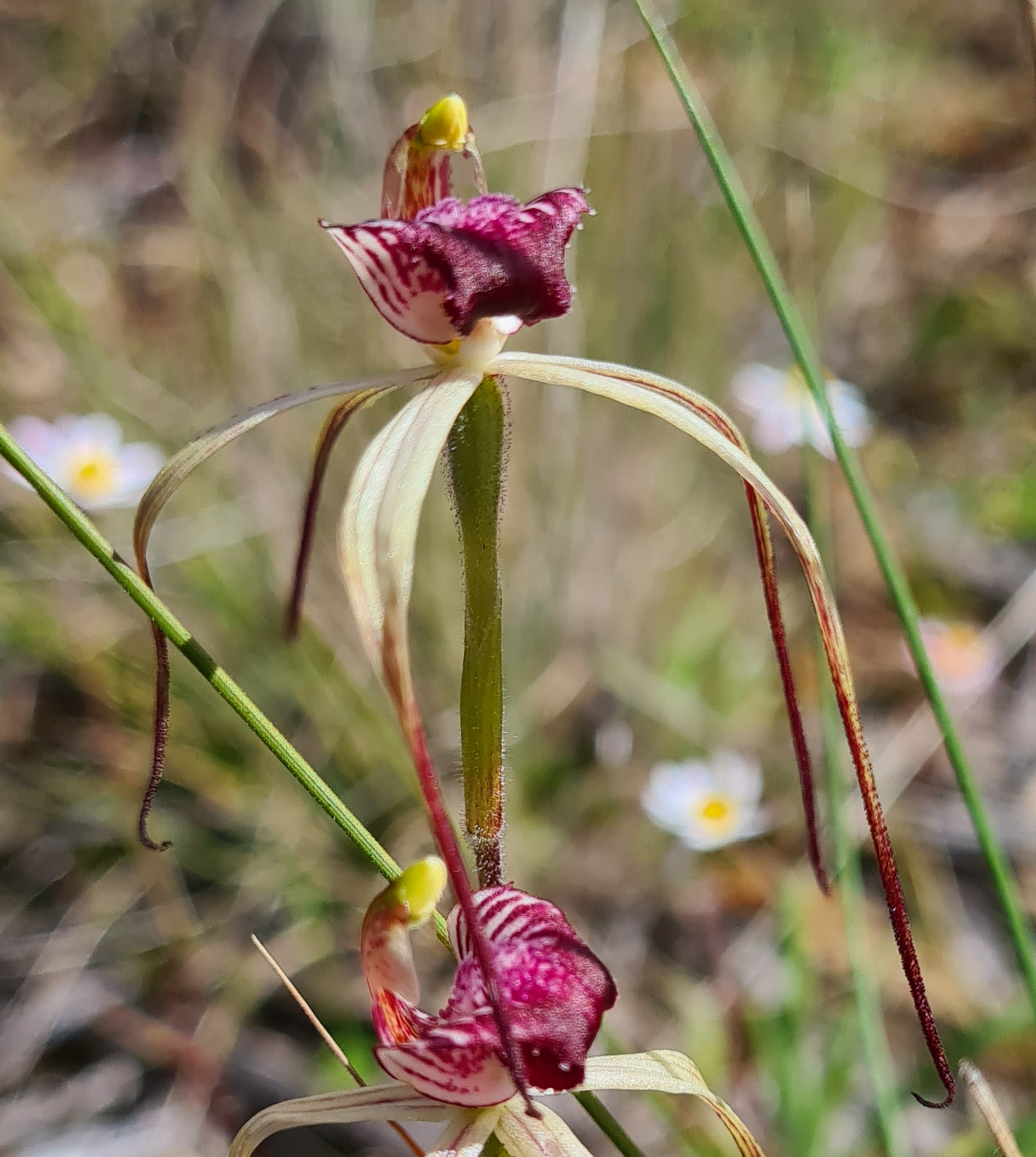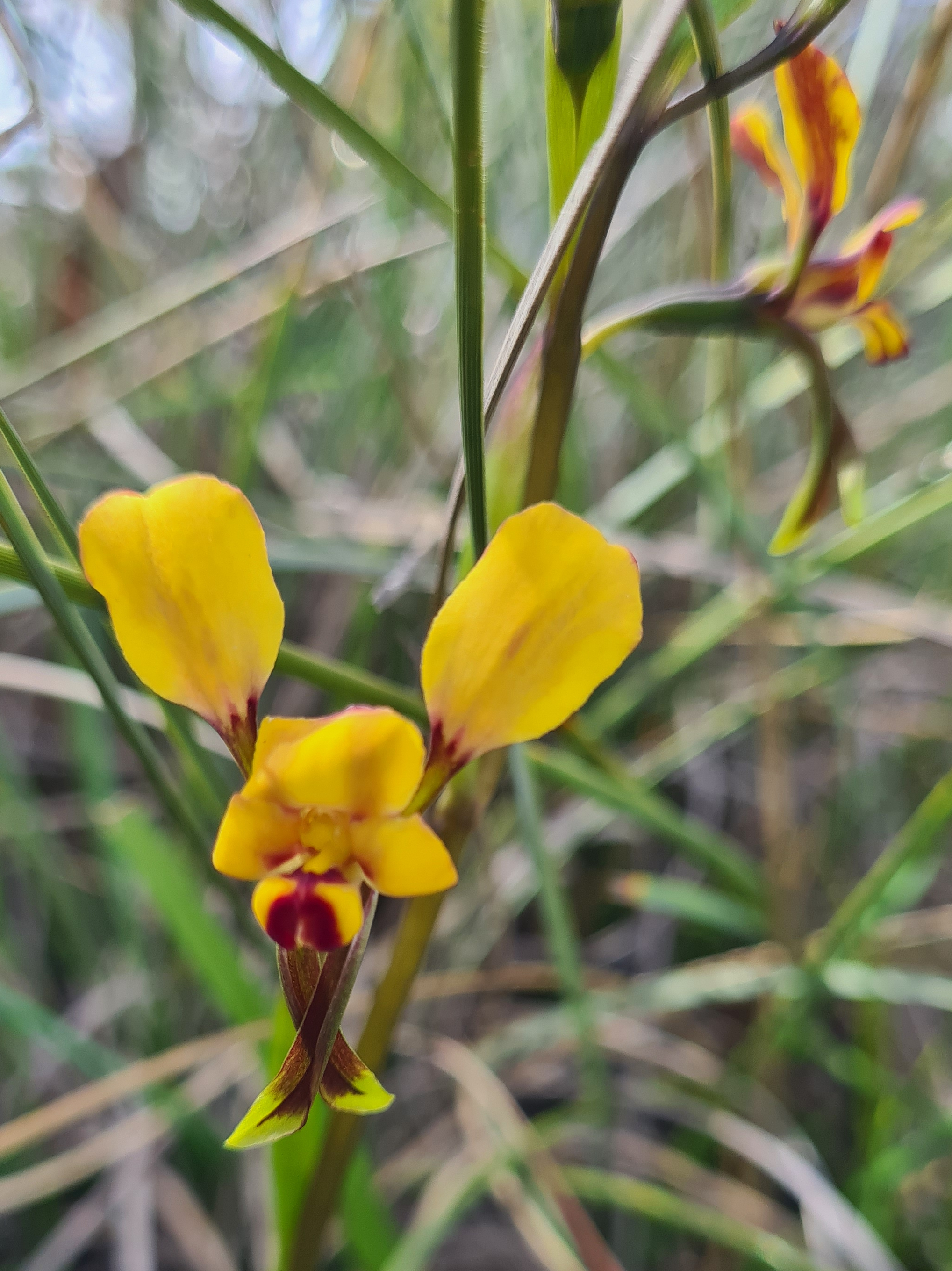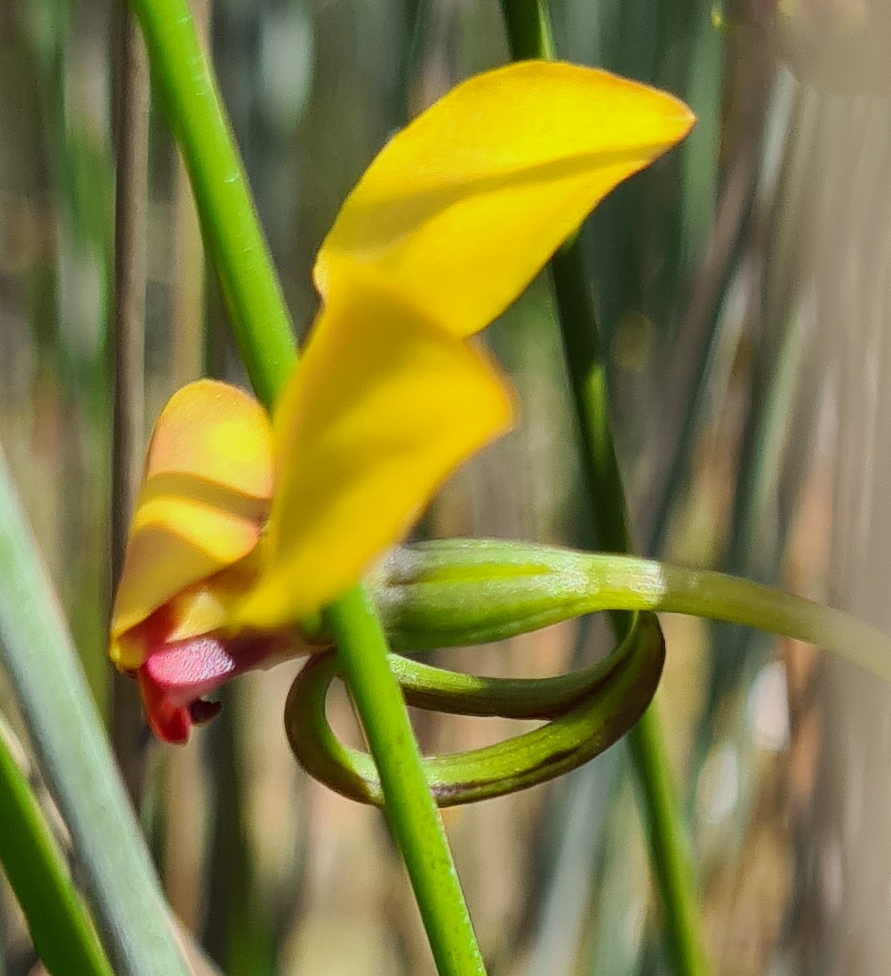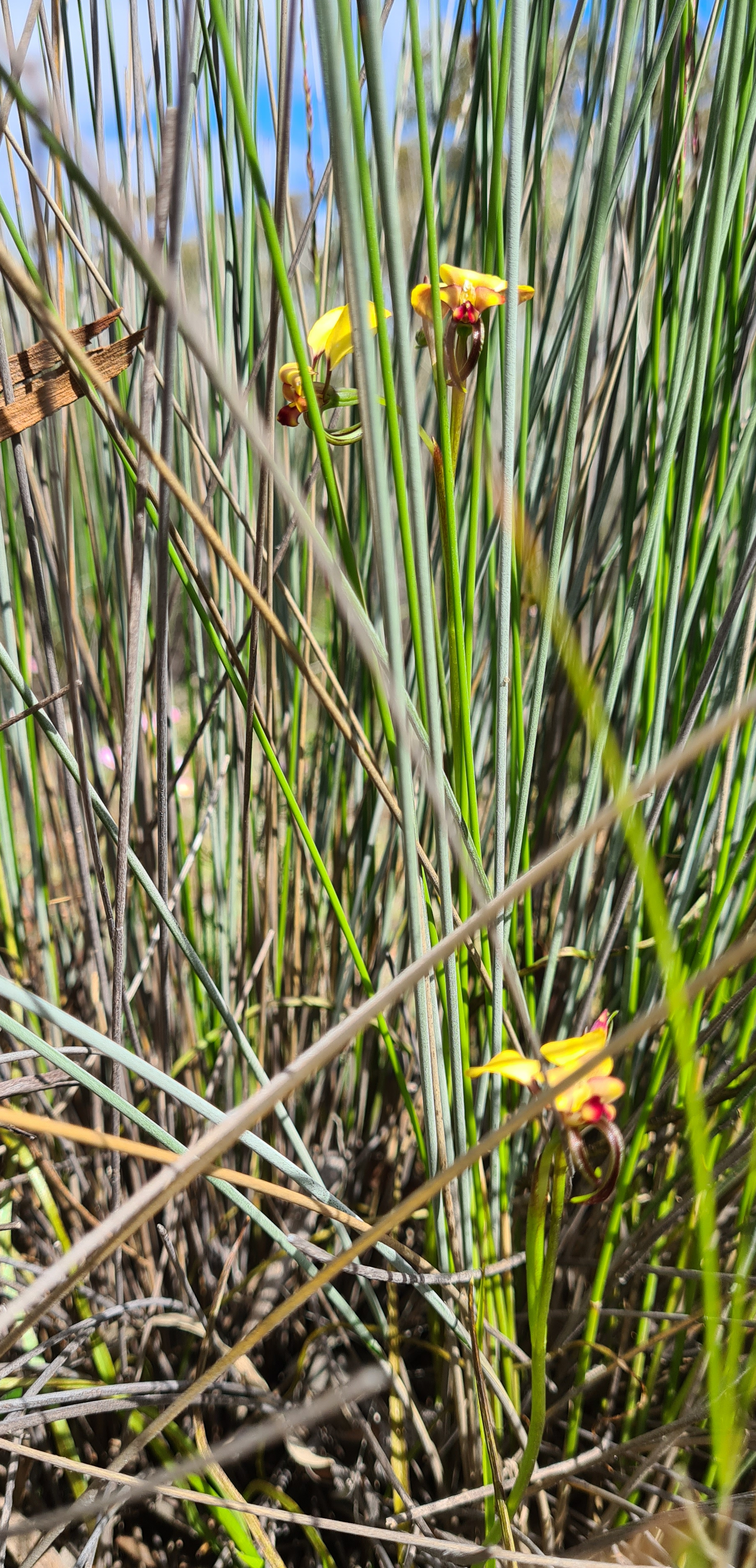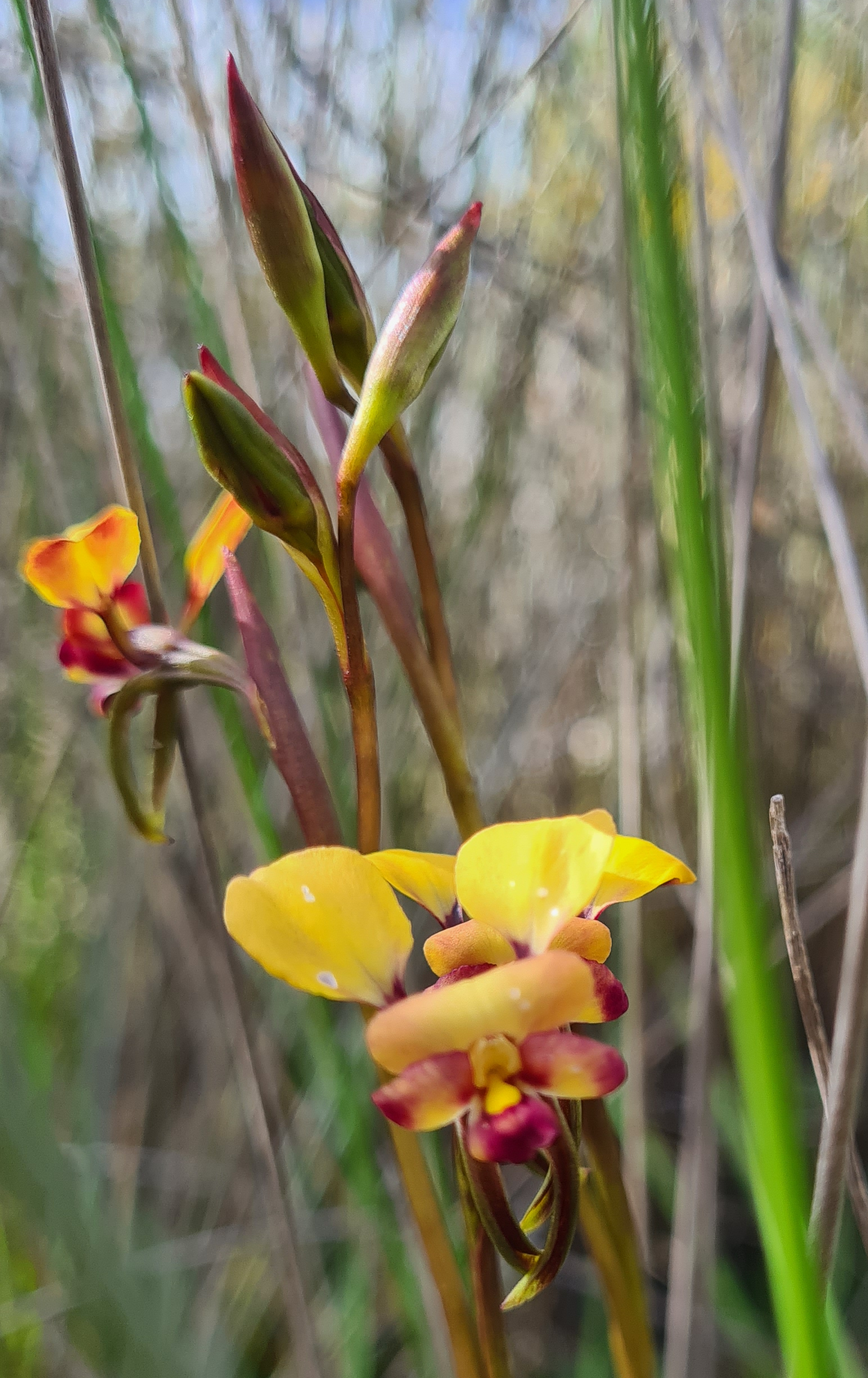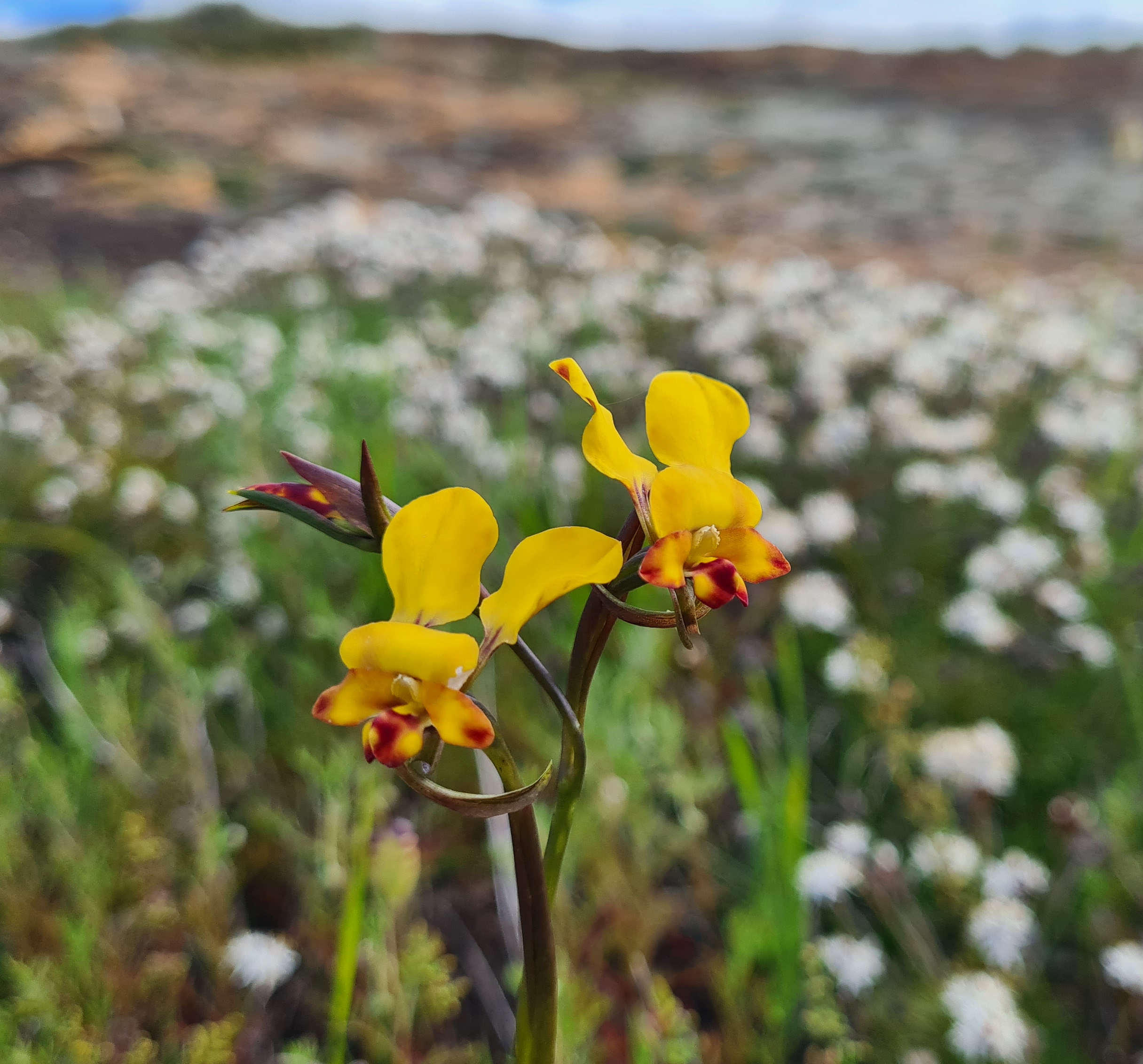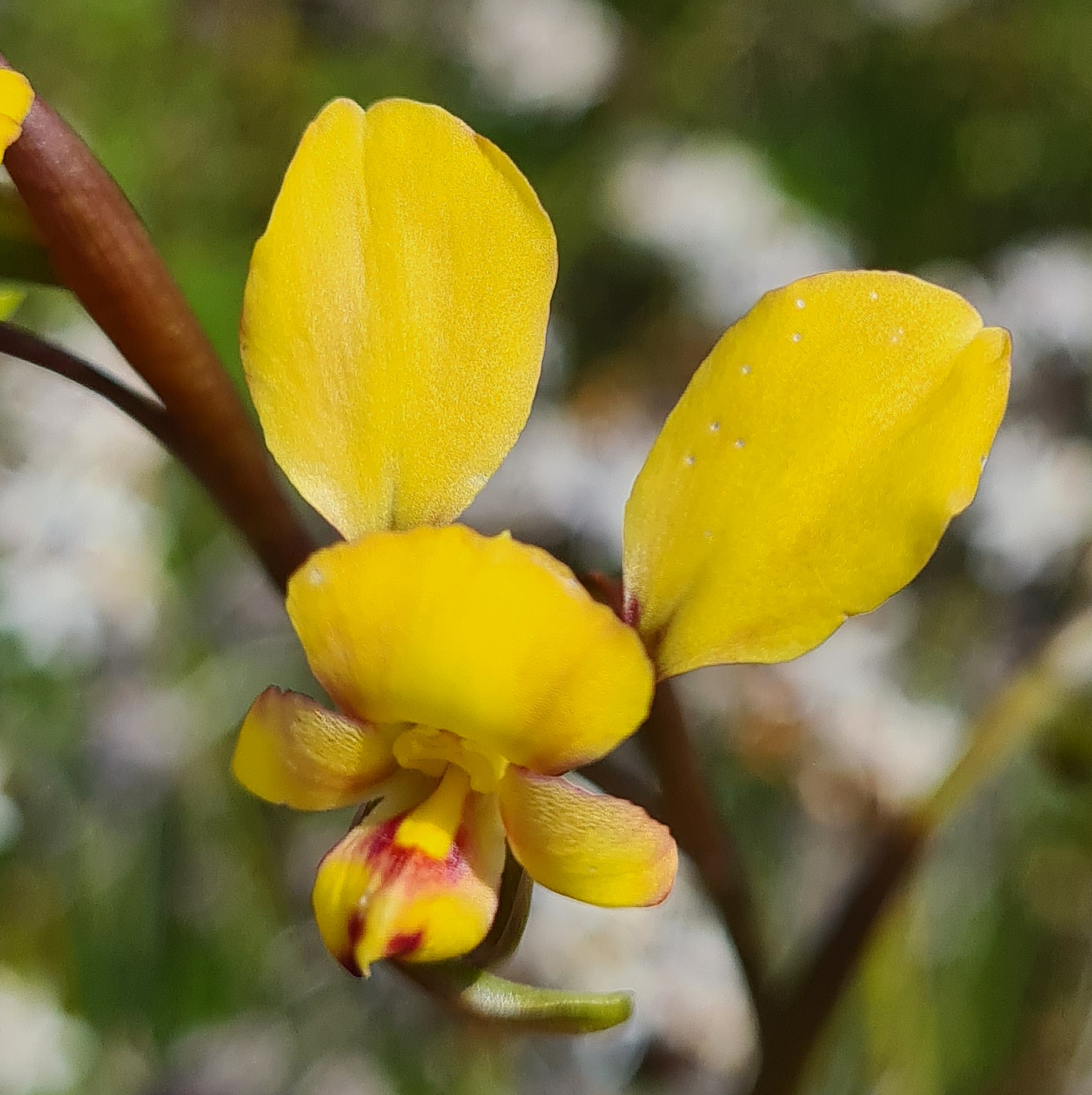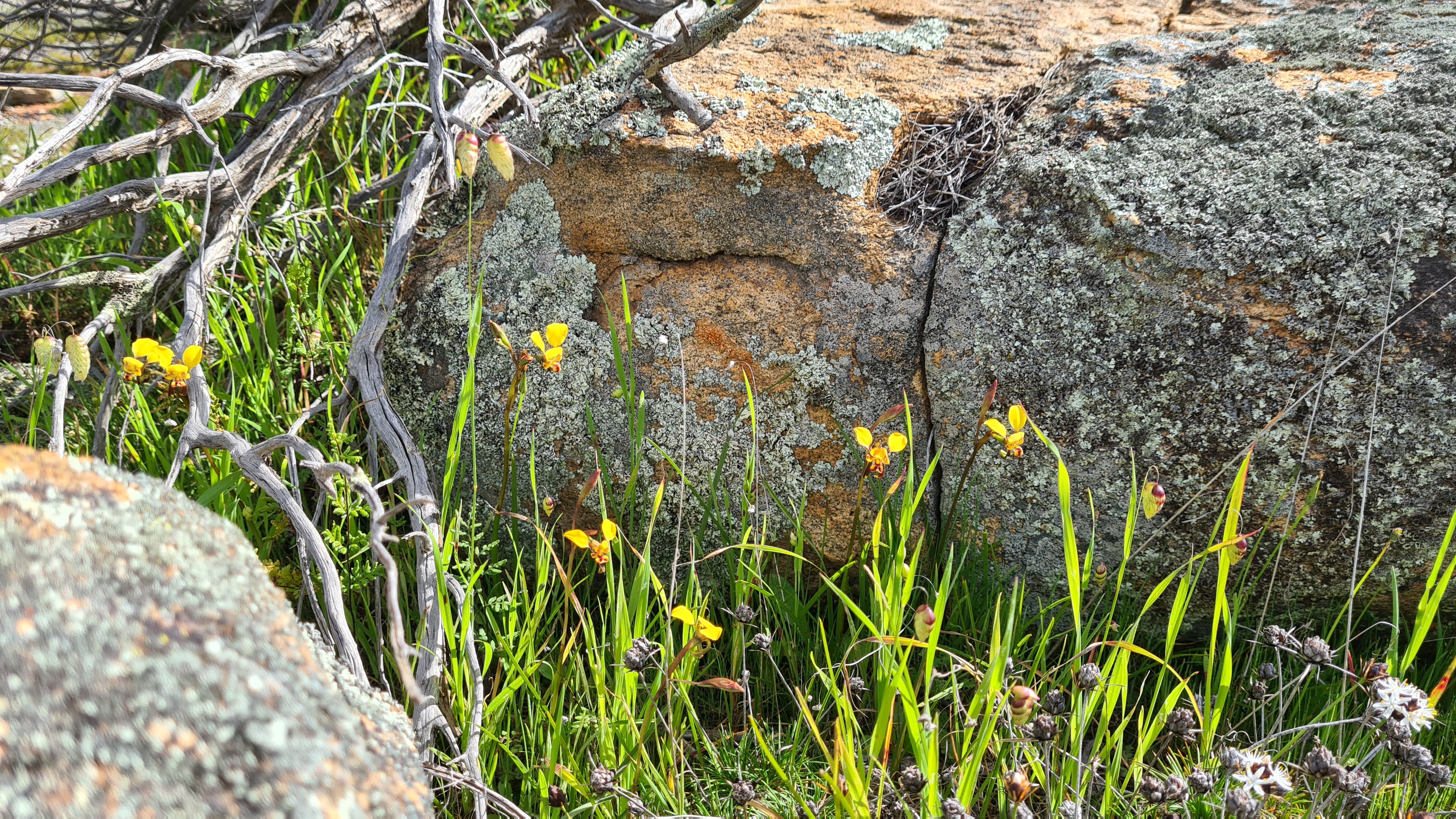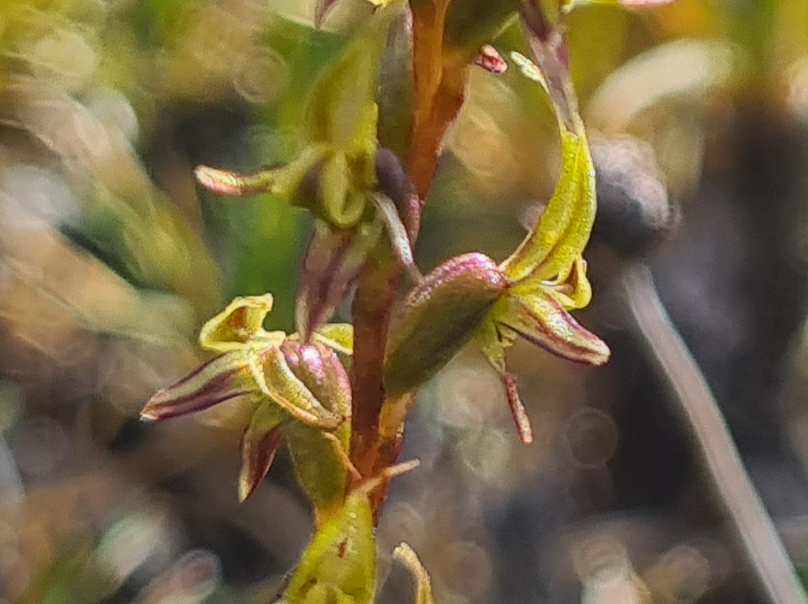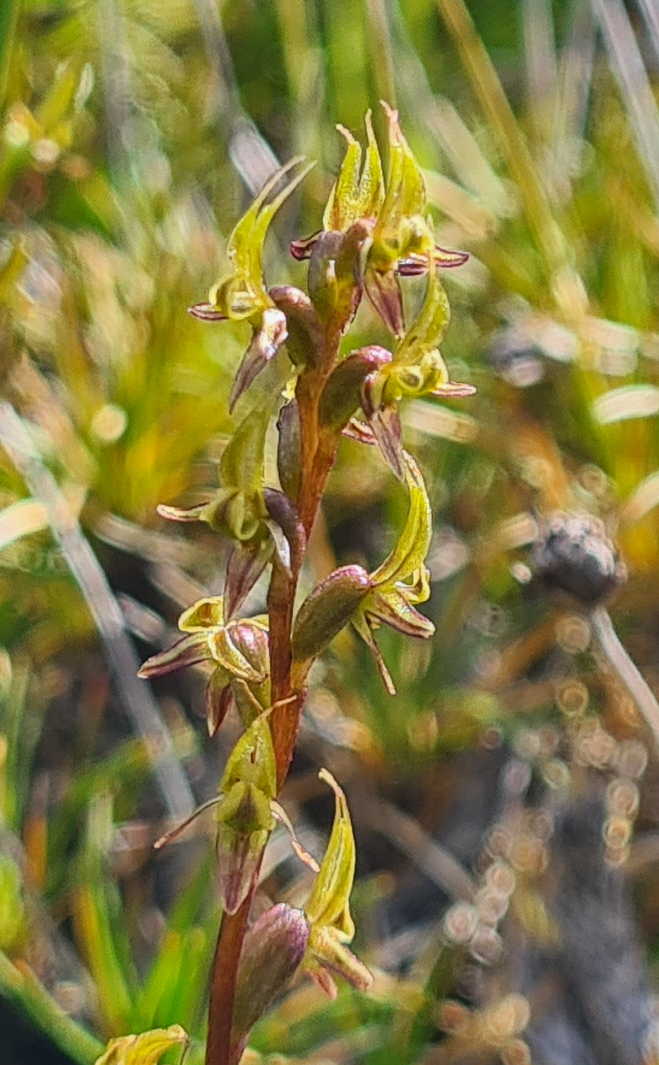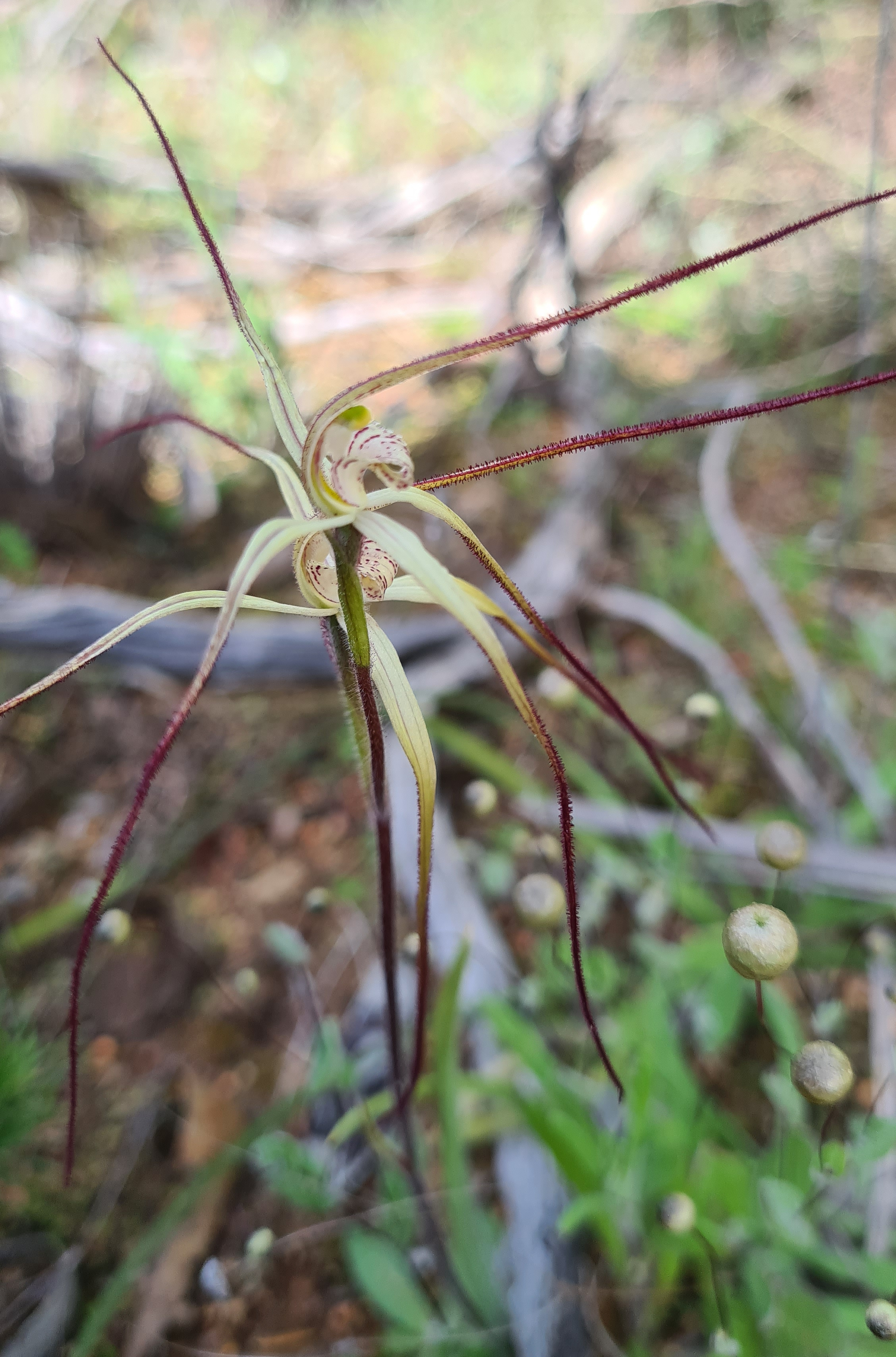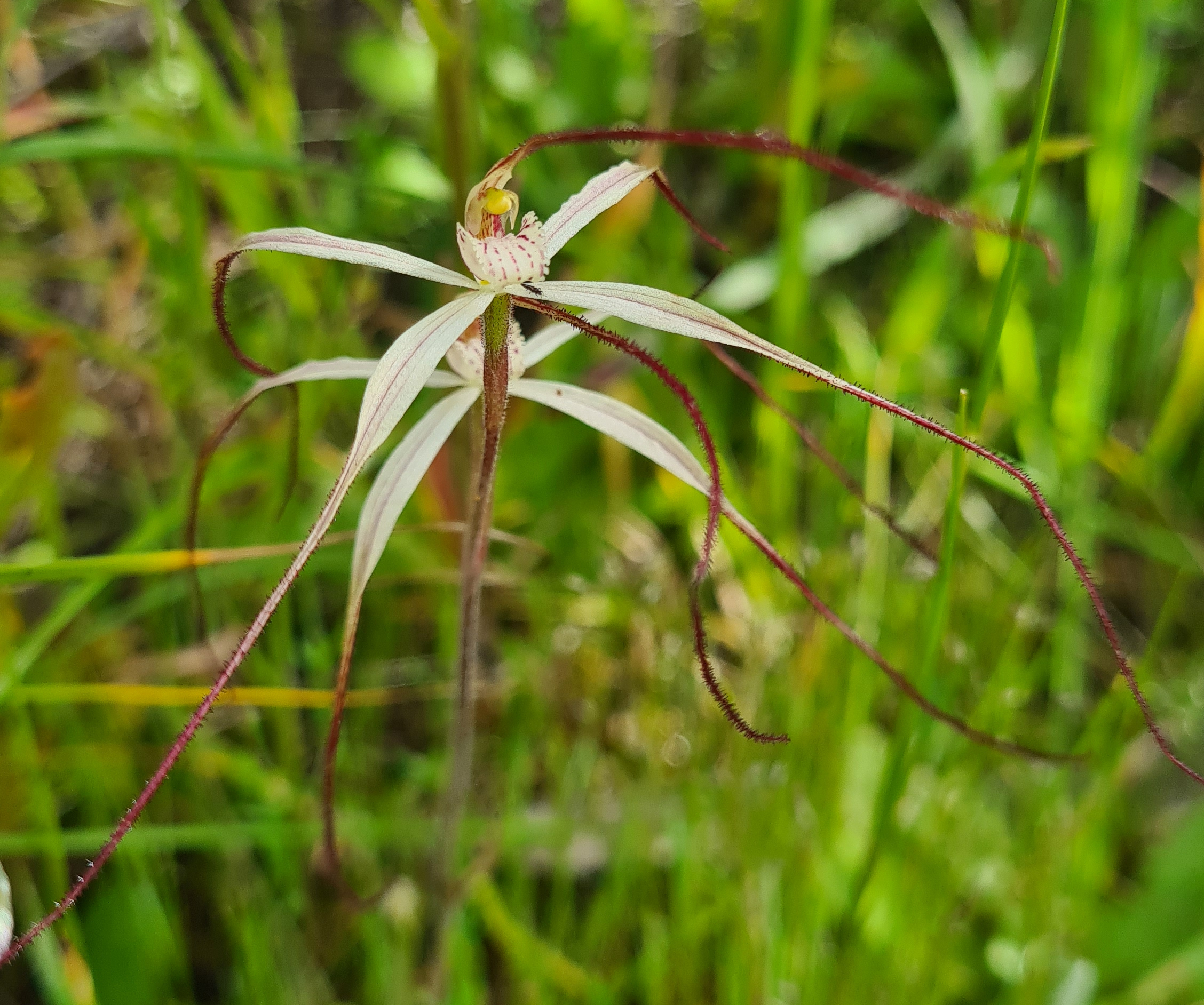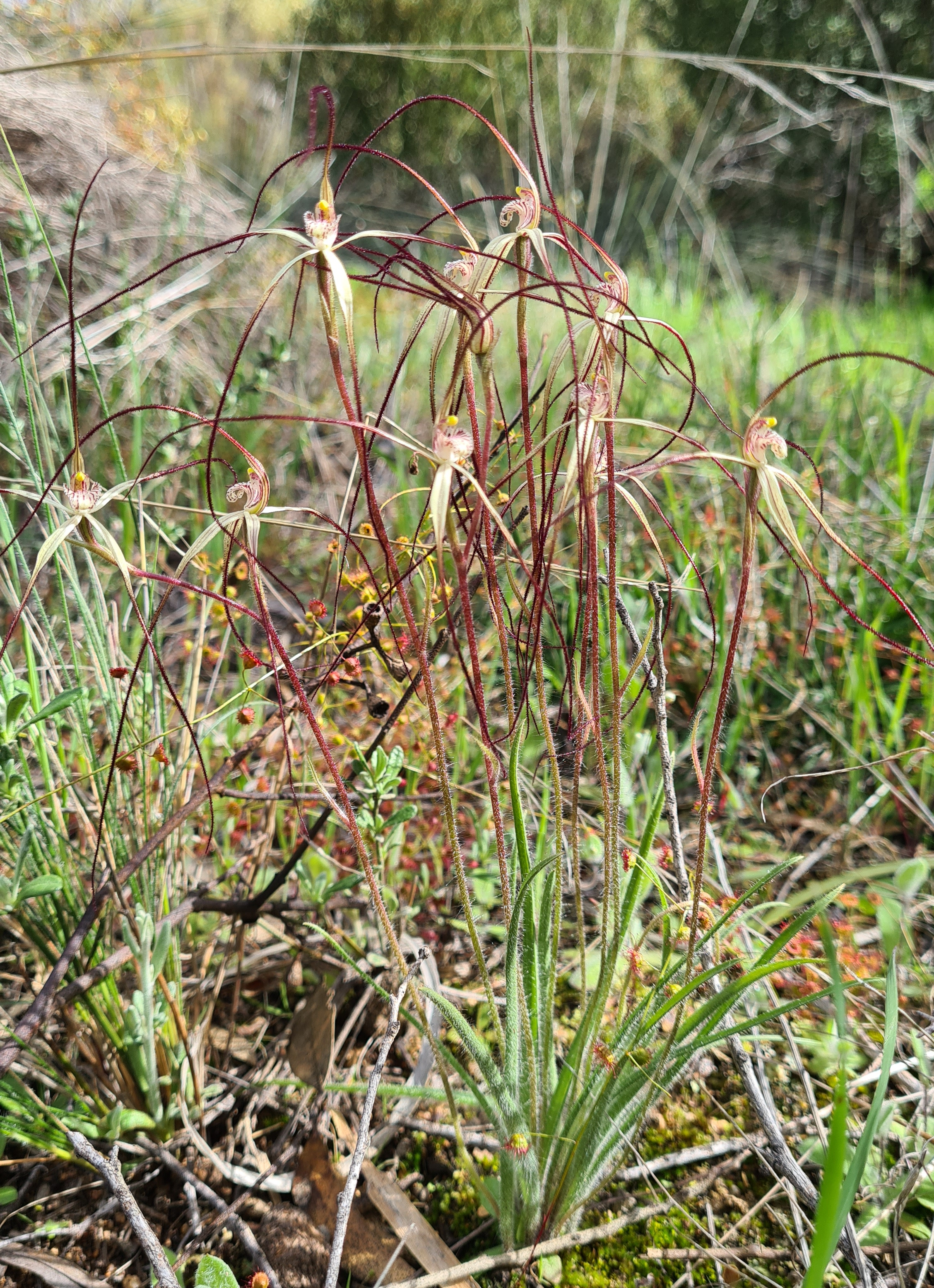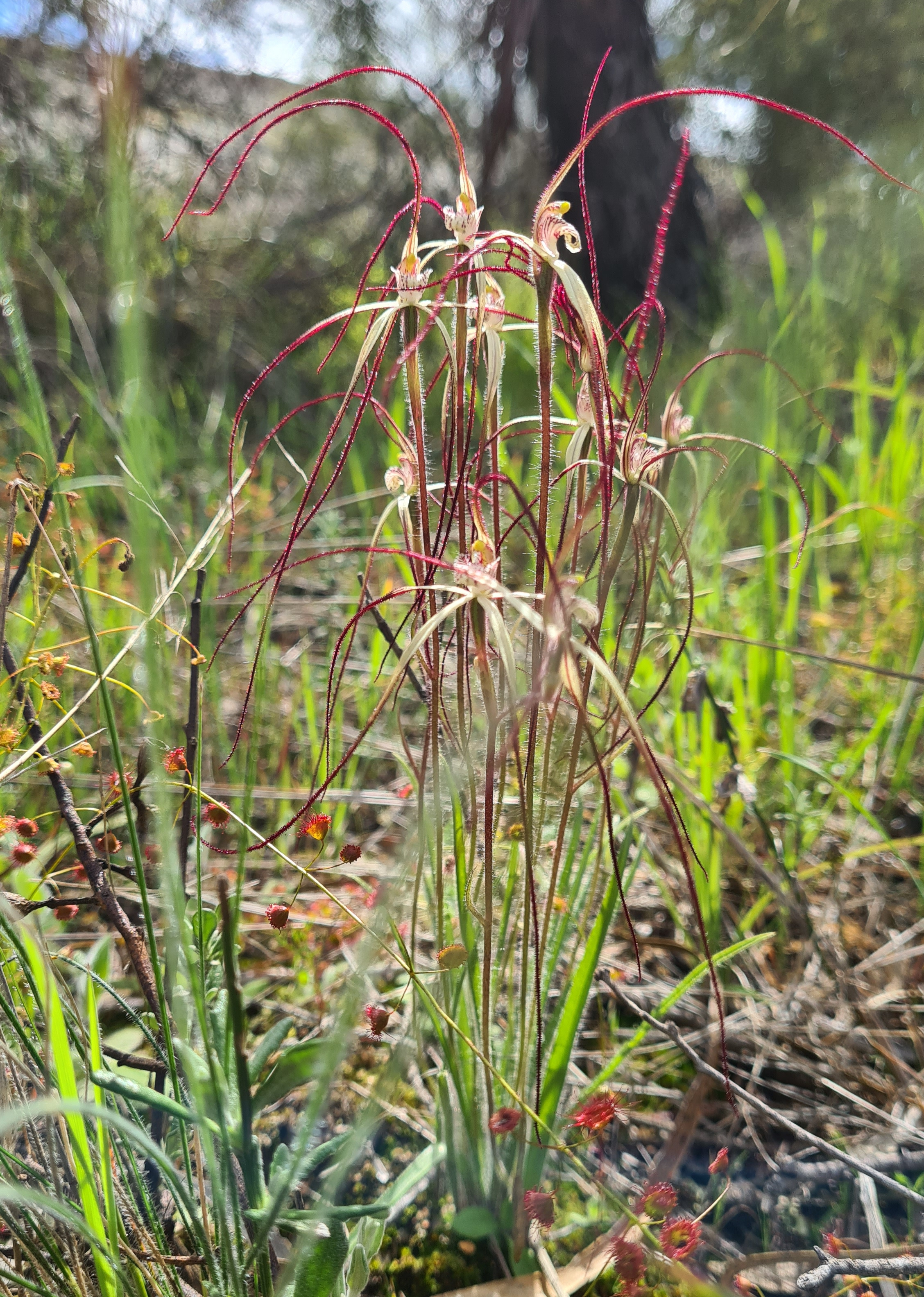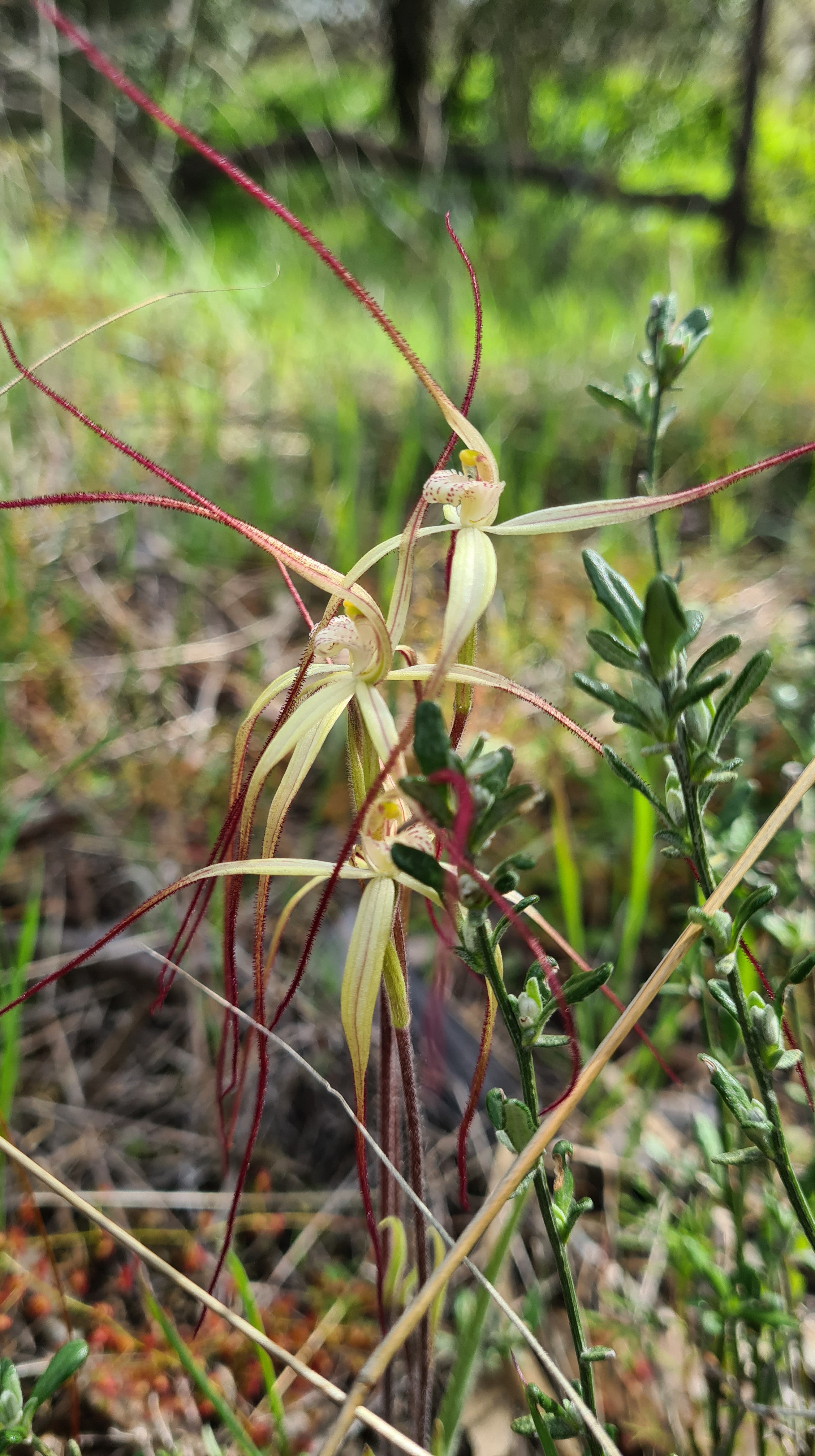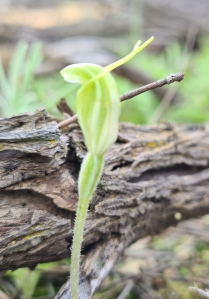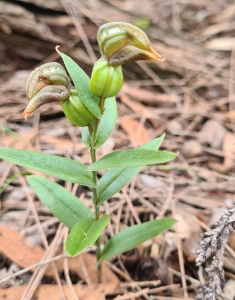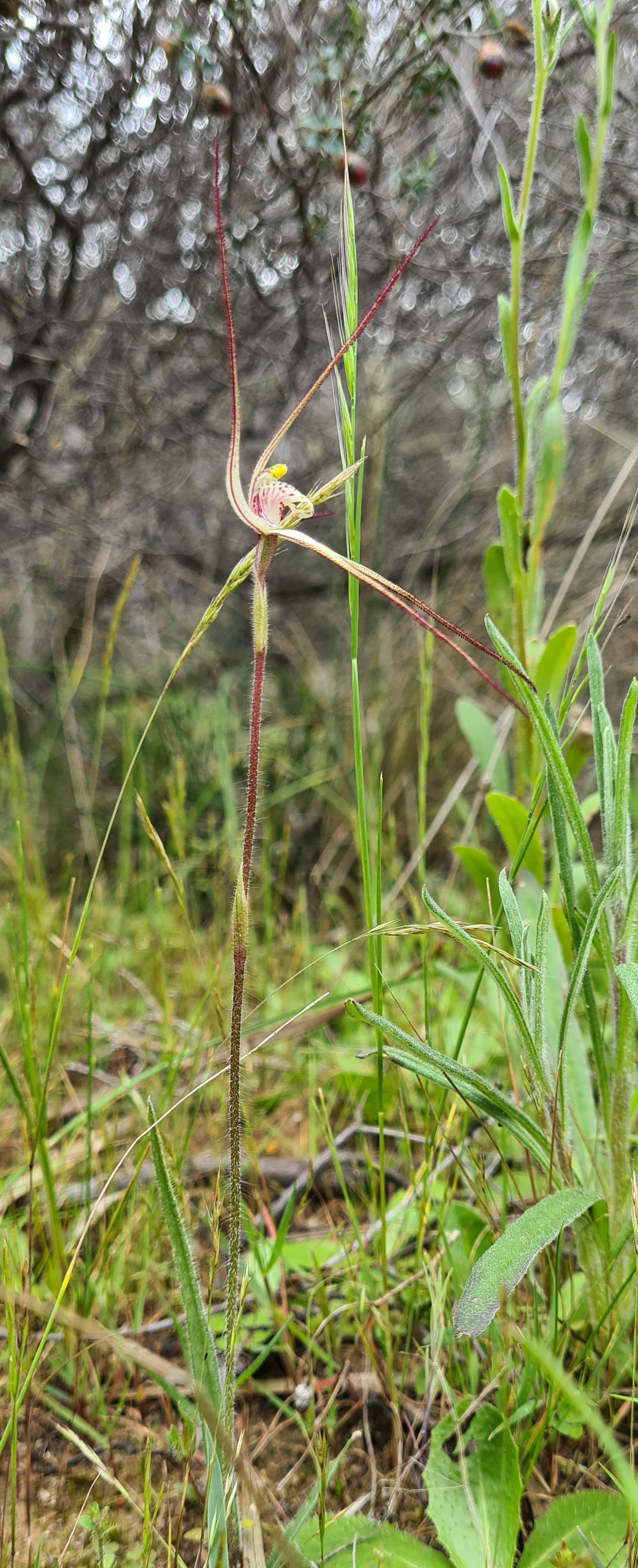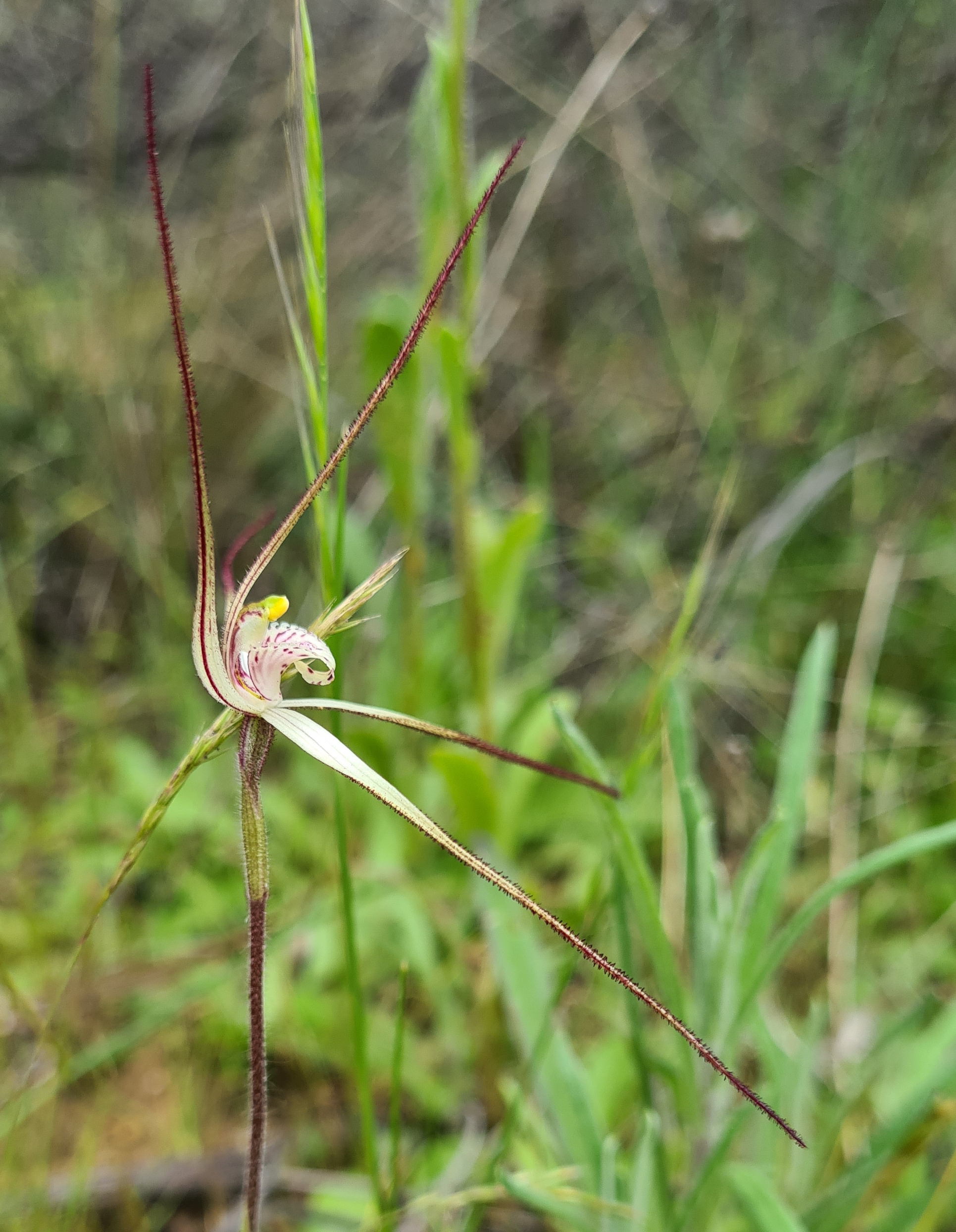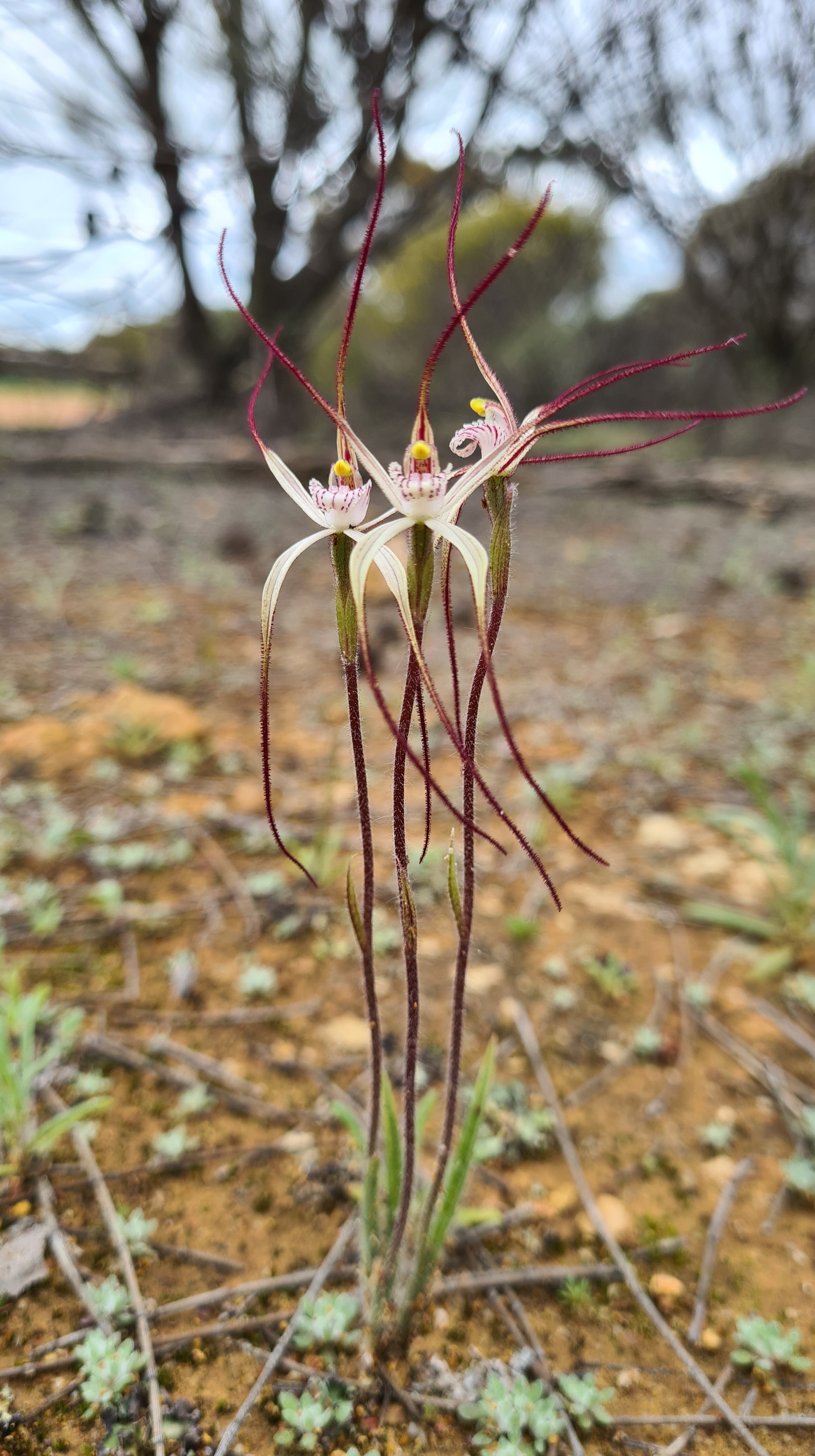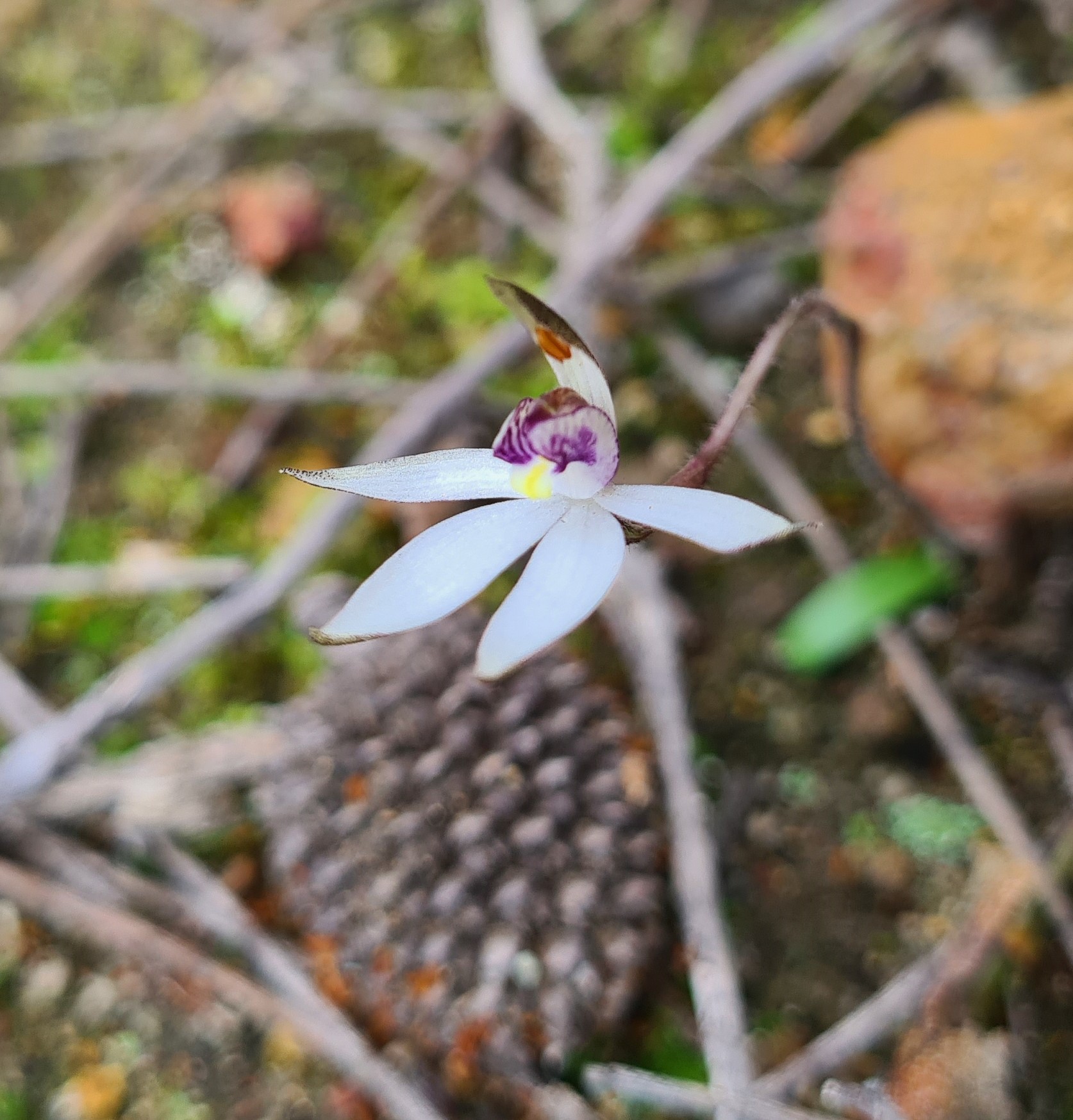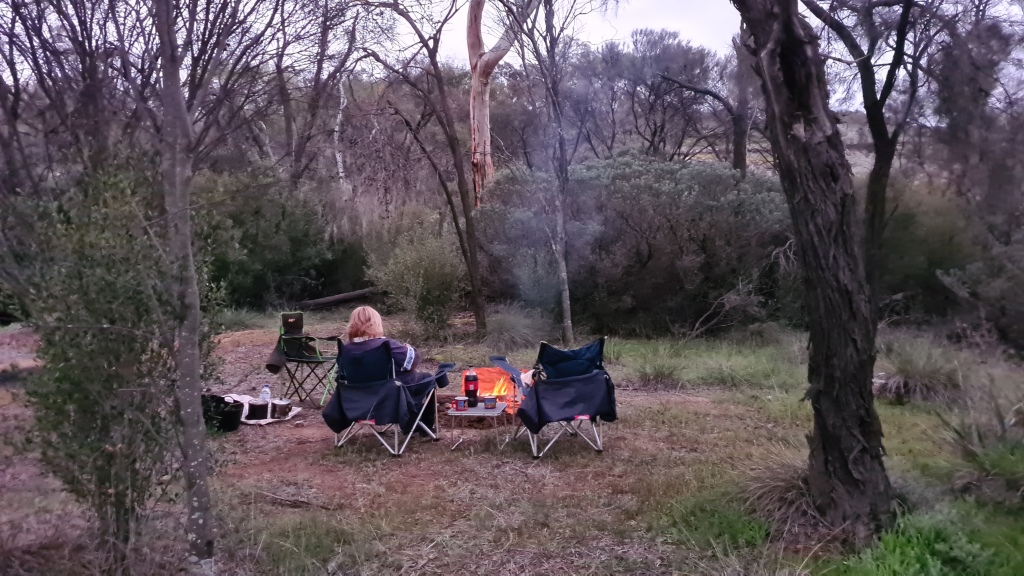Today we go on our planned quest to find the elusive Queen of Sheba orchid which has been recorded from Gull Rock National Park by many people in the Western Australian Native Orchids Facebook group. We may be too early however as the one around Albany is recorded as flowering from August, so fingers crossed.
First off, we head down Ledge Beach Rd and check out the beach. From here we walk around the parking area, and it is here we find our first orchids for the day.
Just for a change, NOT, our first orchid found is the Banded greenhood (Pterostylis vittata).
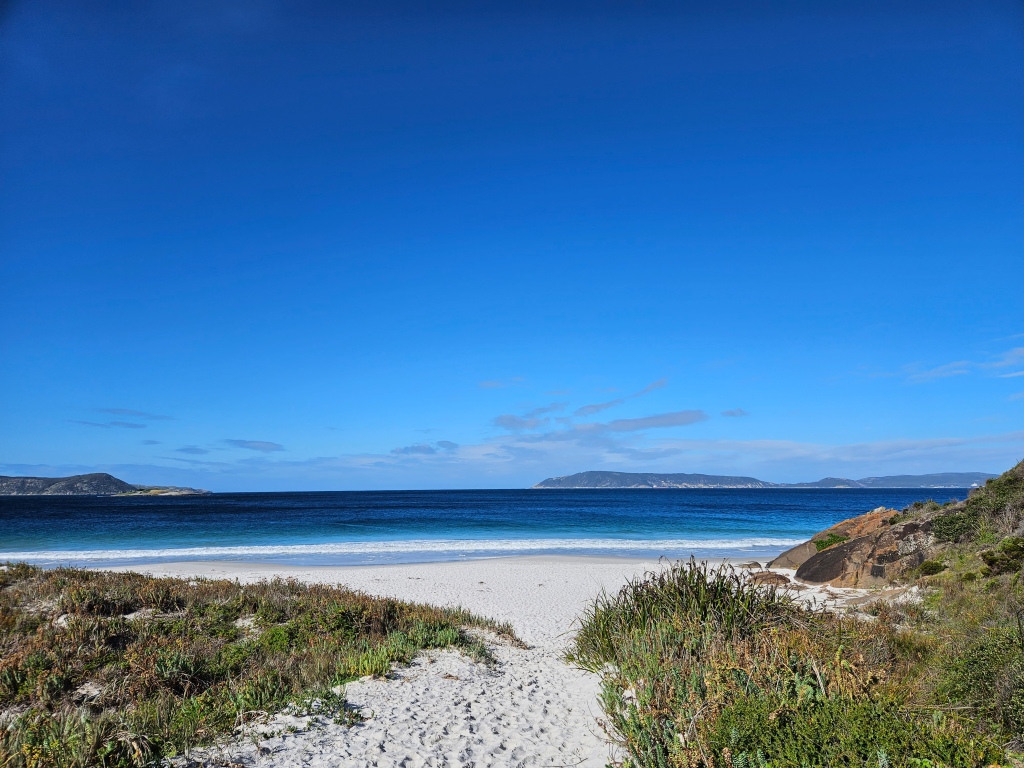
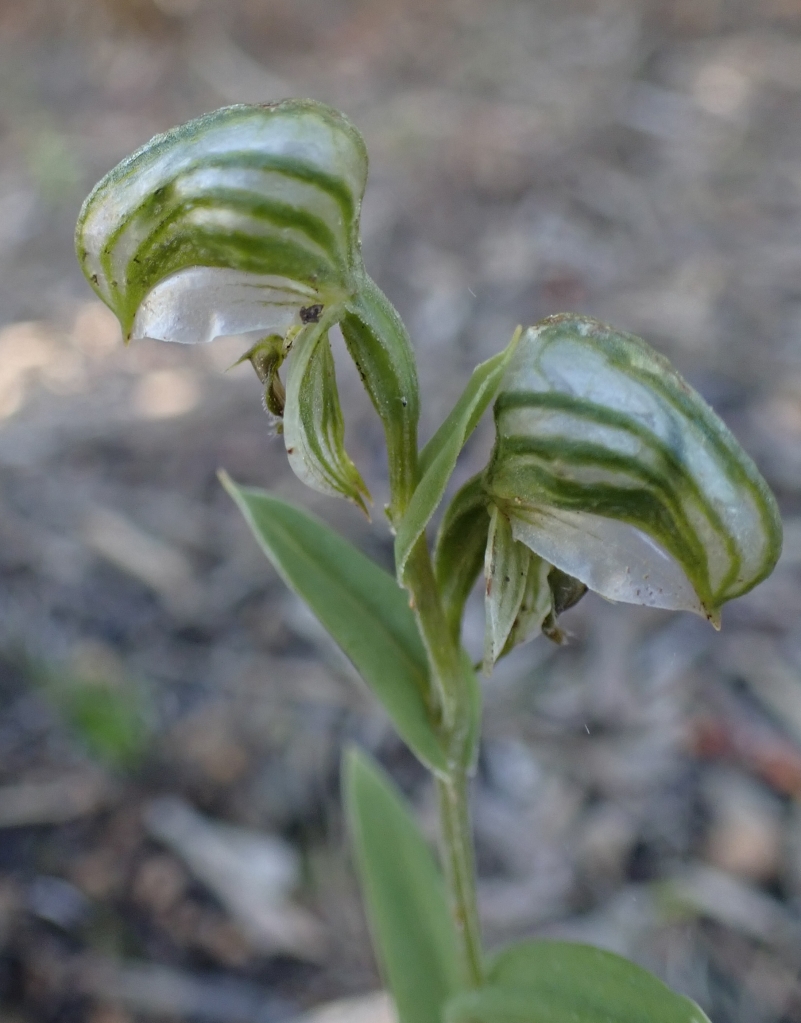
Then some other Pterostylis orchids are found. These small snail orchids could be the Coastal short-eared snail orchid (Pterostylis actites) given the short backswept lateral sepals. They are recorded as occurring from Capel to Duke of Orleans Bay and flower from July to September. The rosette has 4 to 7 leaves, and they stand up to 100mm in height.

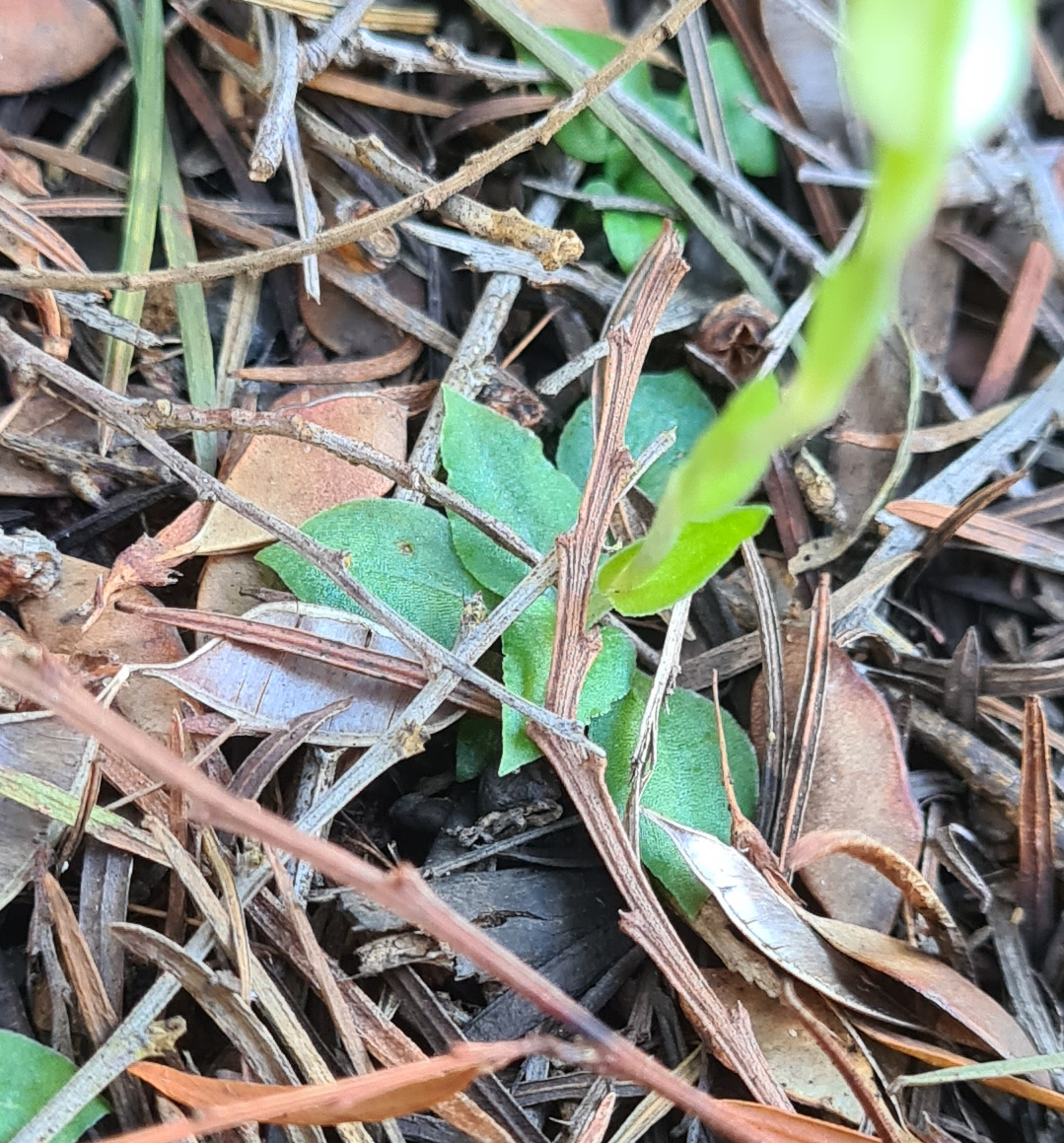
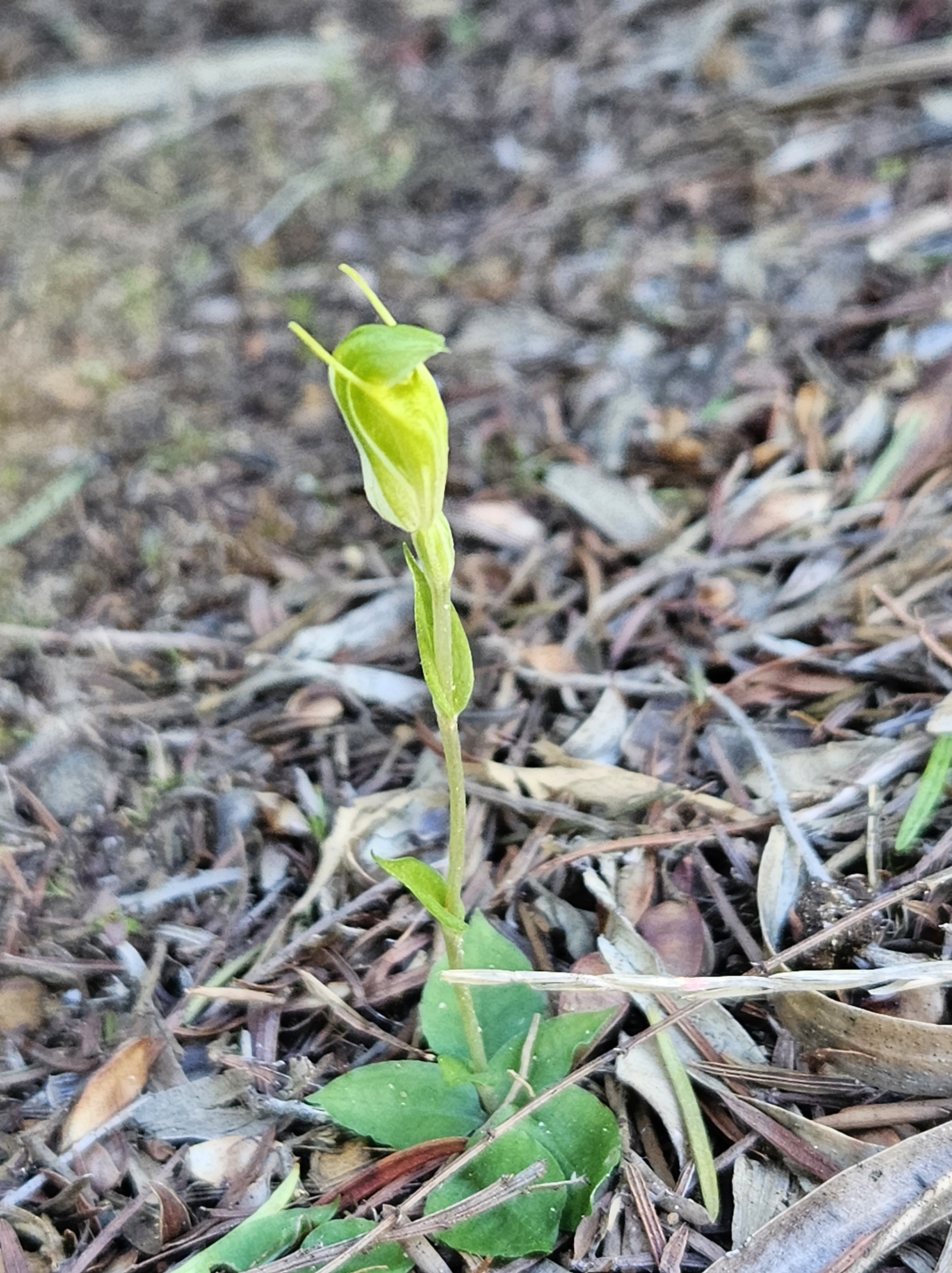

Another exciting find here was a further patch of the Common helmet orchid (Corysanthes recurva) hiding under an overhanging shrub. Harder to get a clear shot but tried my best. These orchids are found between Mandurah and Albany and flower from June to September.
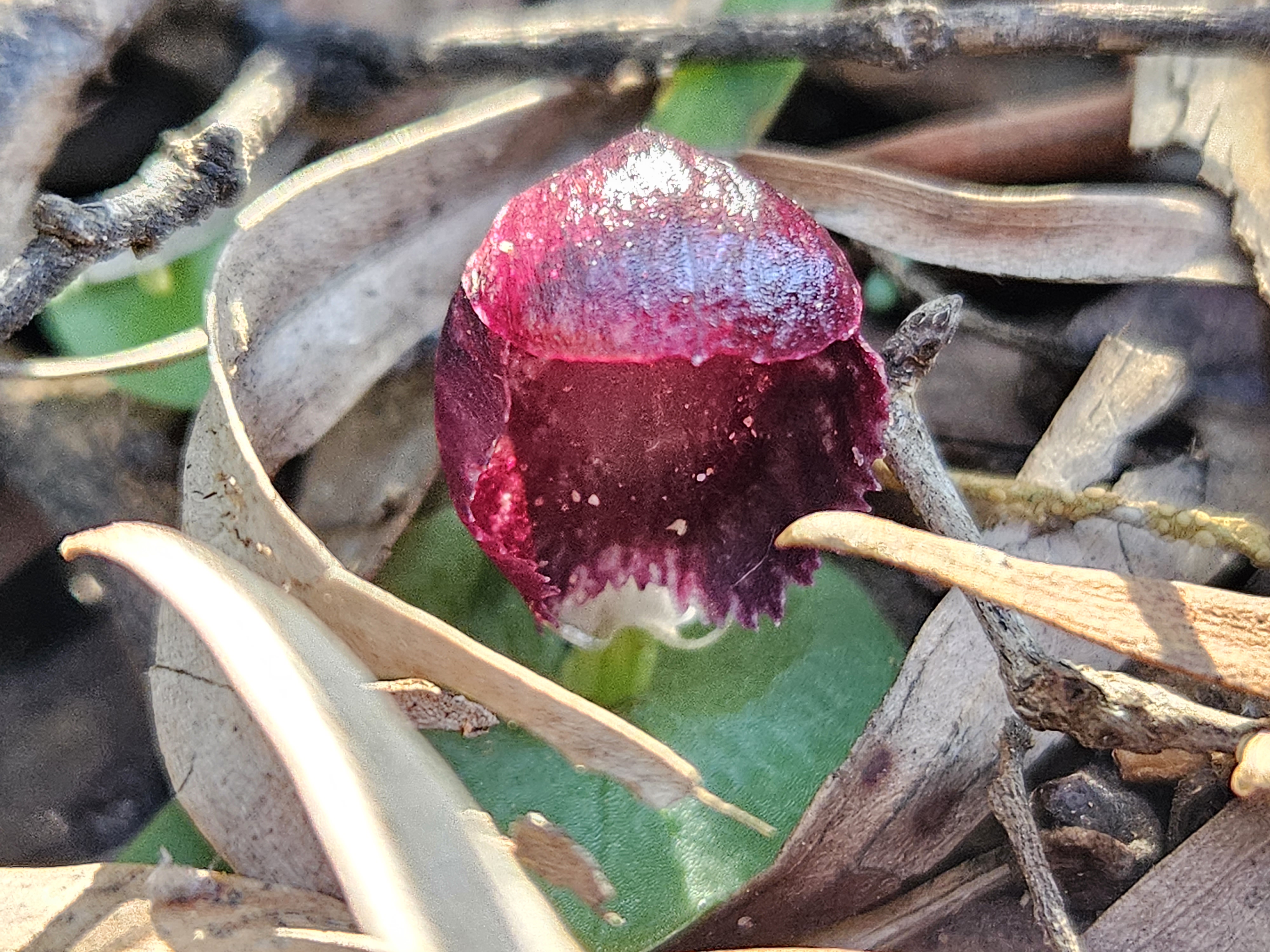

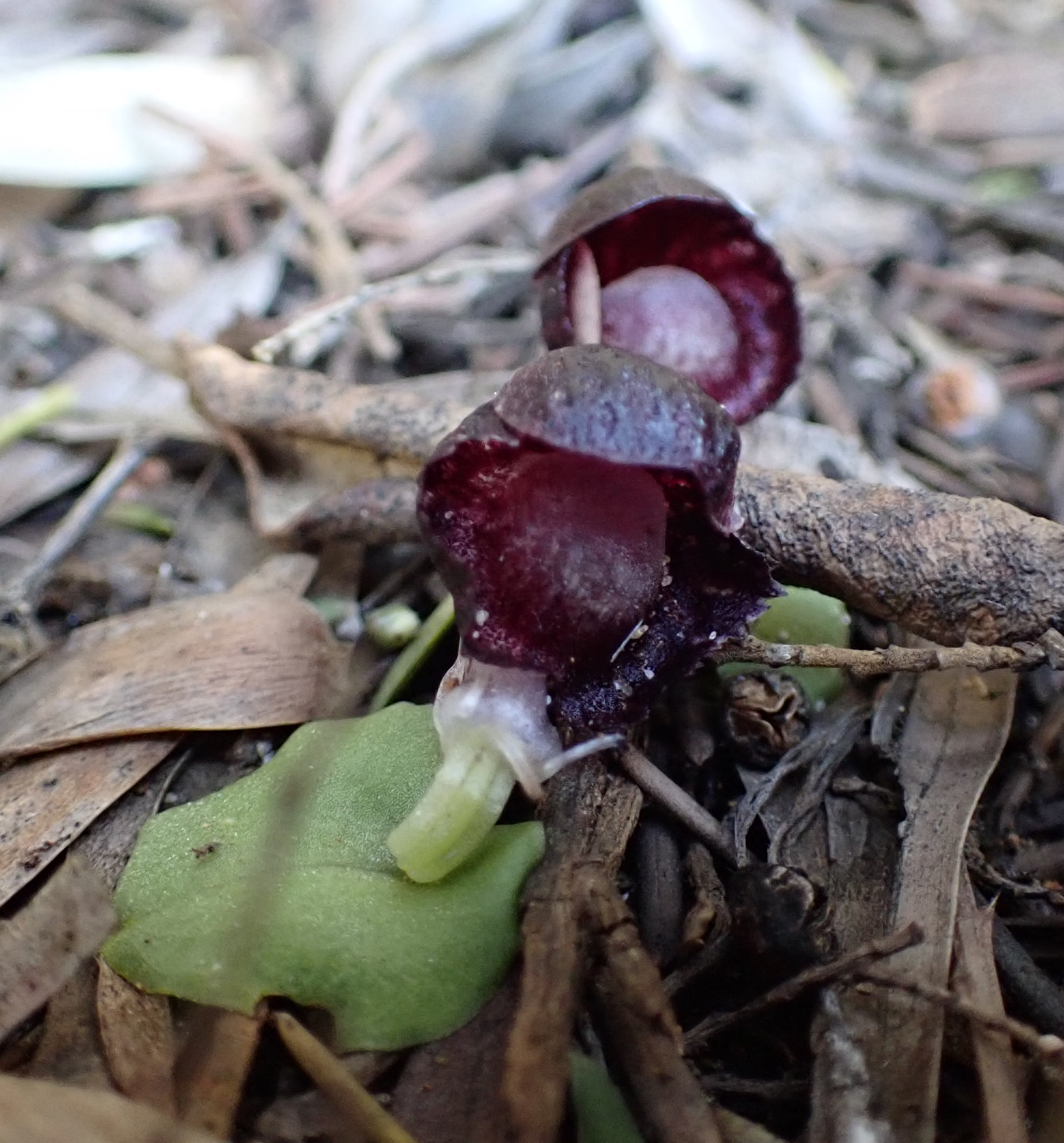



We now decide to head off on the Mount Martin walk trail which starts from the Ledge beach carpark which is in the National Park however the majority of the walk trail is in the Mount Martin Botanical Reserve. We do not do the entire trail, so I have attached a snip showing approximately where we walked. Arrows show direction and X marks turnaround spots. First orchids found on the walk were further Banded greenhoods together with Slipper orchid leaves and a Redbeak leaf.
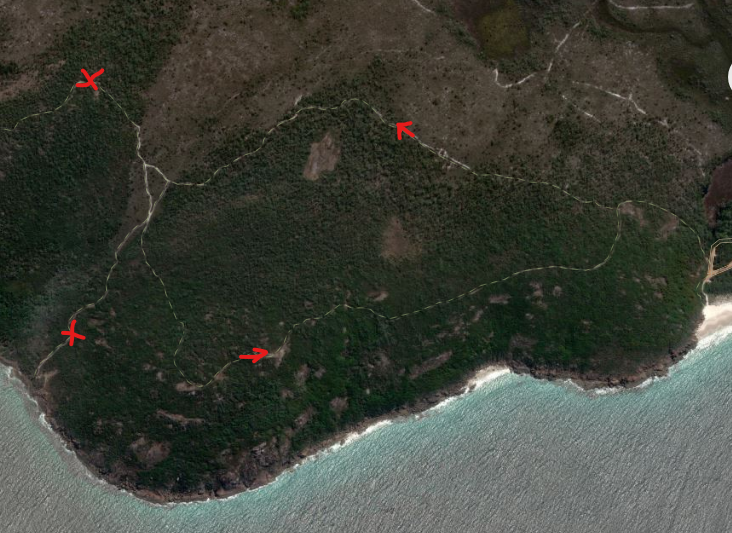

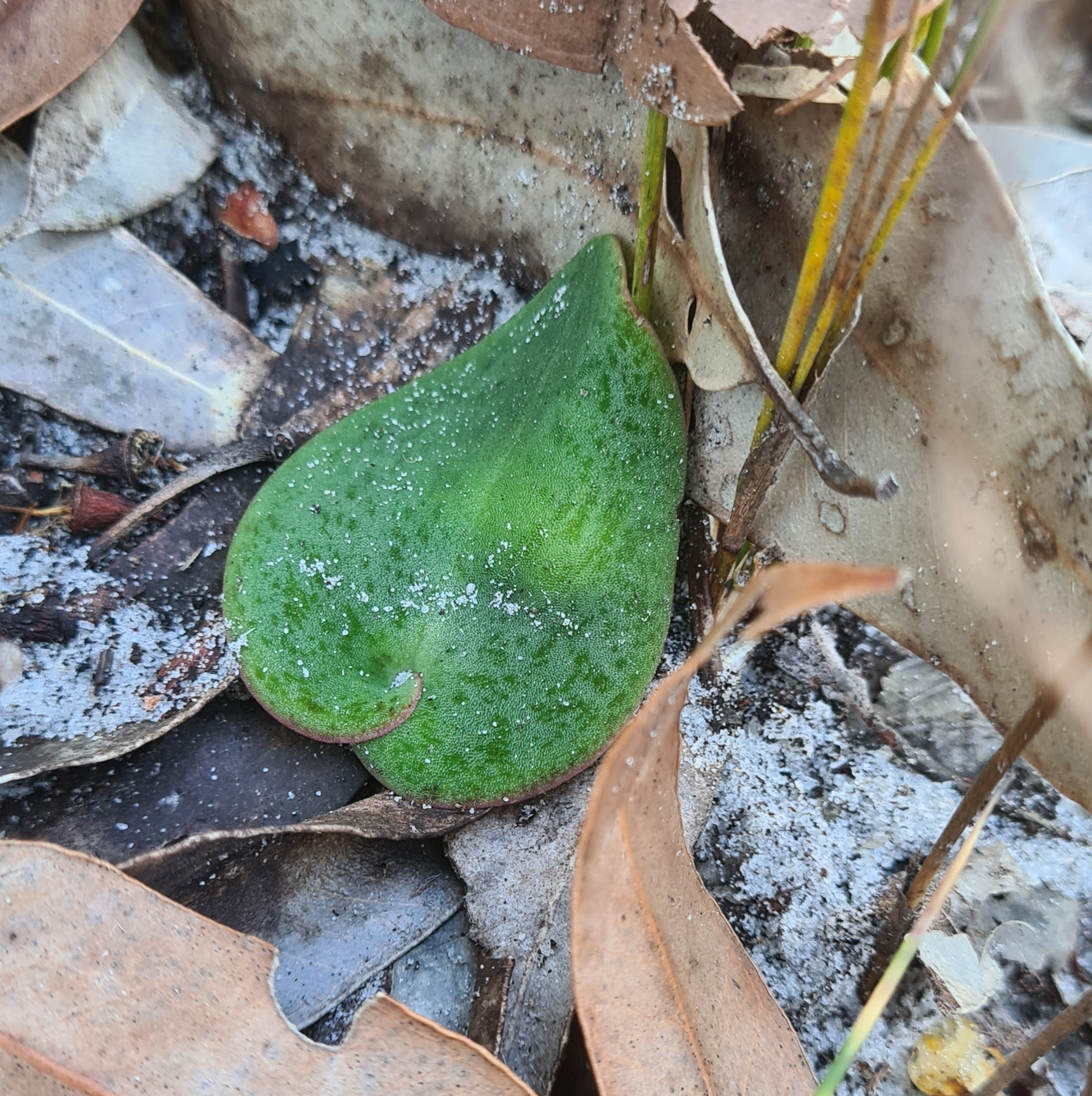
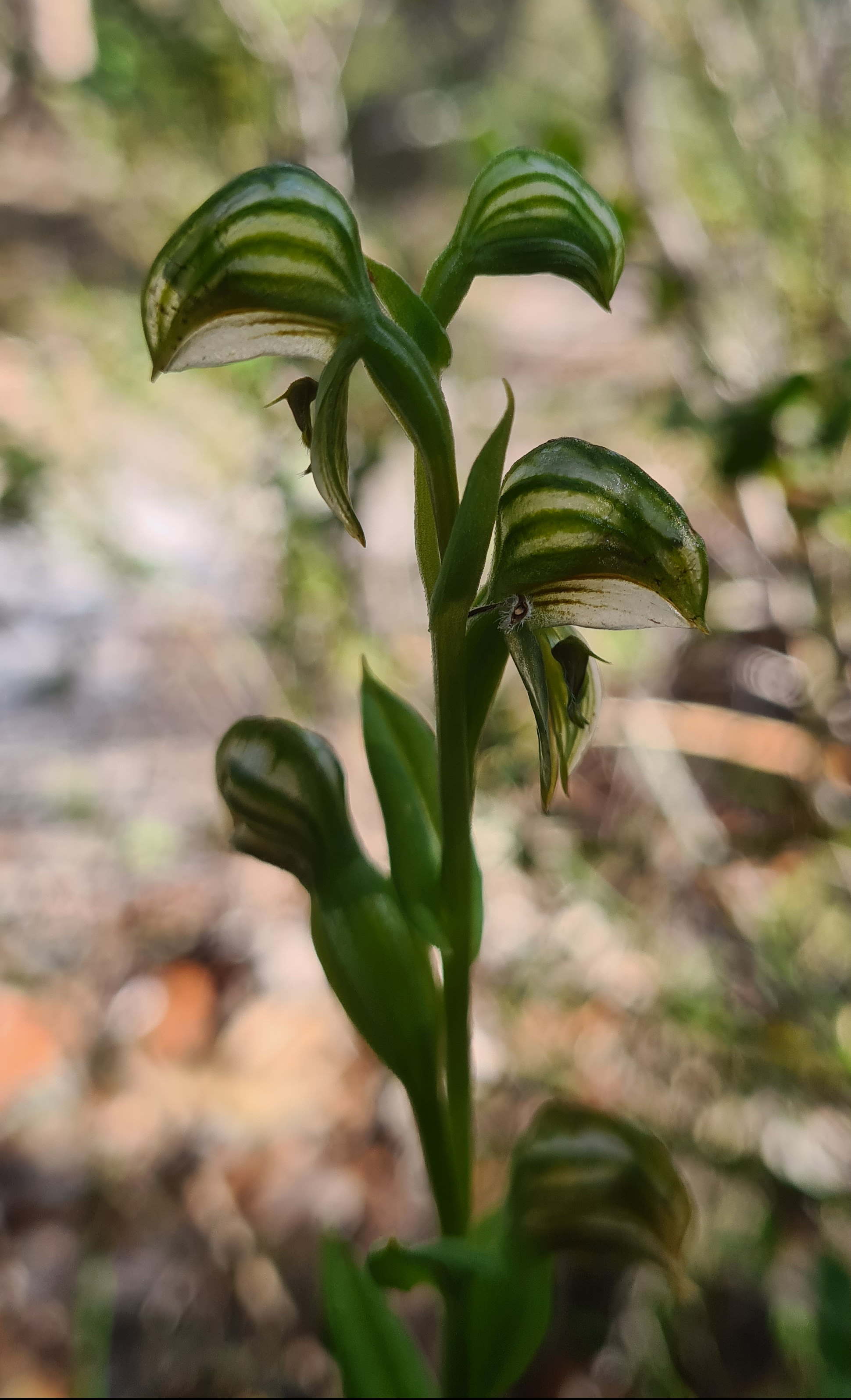
Then we nearly step on those things we have come to find. We find very small spiral leaved orchids in bud. A few patches found however none were in flower. Oh well they may be the Queens or possibly just some Curly Locks. We now know to come early August for a better chance of finding them in bloom. Pics taken as proof of the find.



Orchids may be few and far between however the coastal views and other wildflowers make up for it.
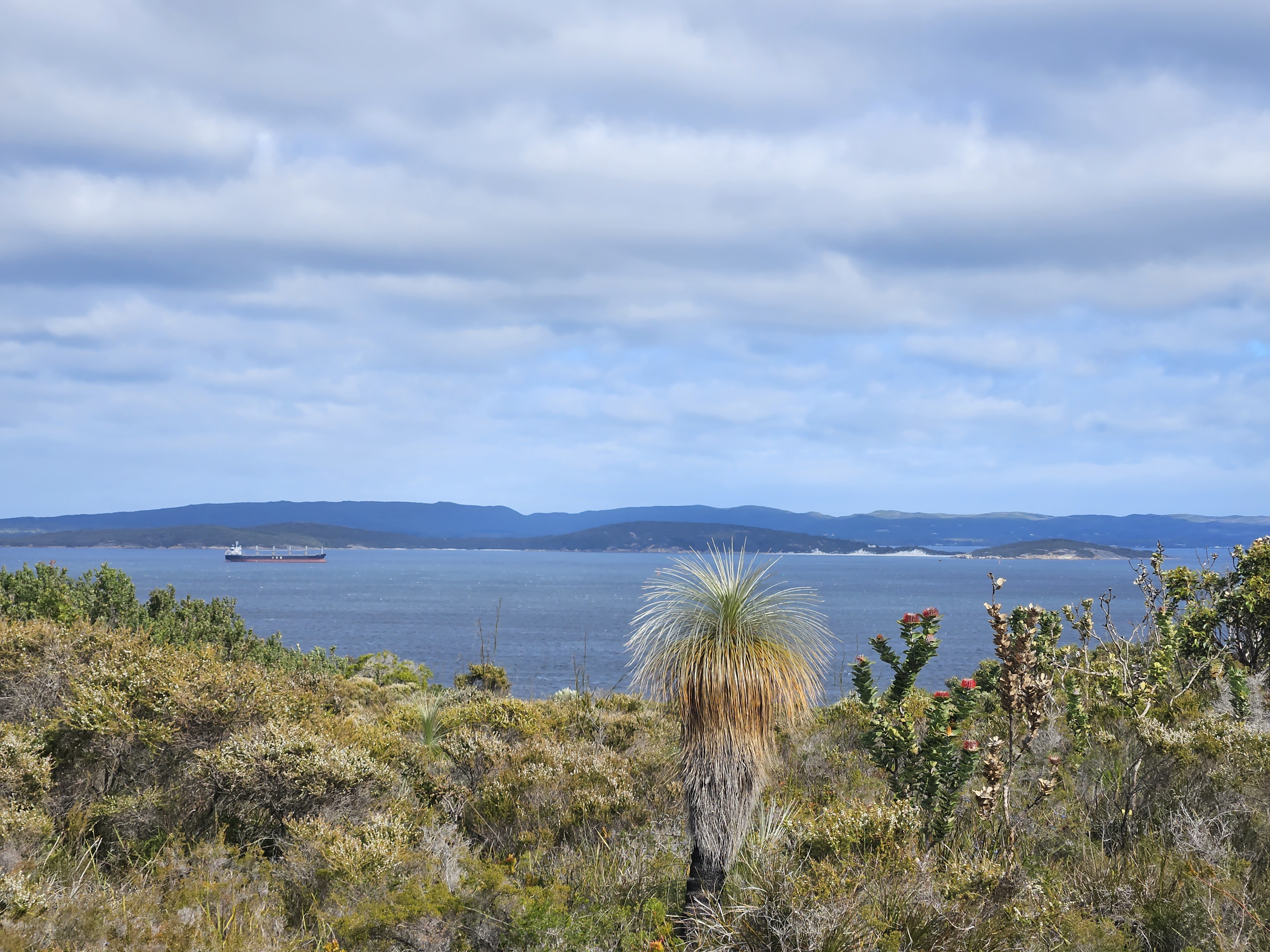


We are heading down toward Coal Basket Bay when at a patch of granite, we find some Autumn Leek orchids (Prasophyllum parvifolium) in flower. These orchids flower over the winter months, so the common name seems a bit off.

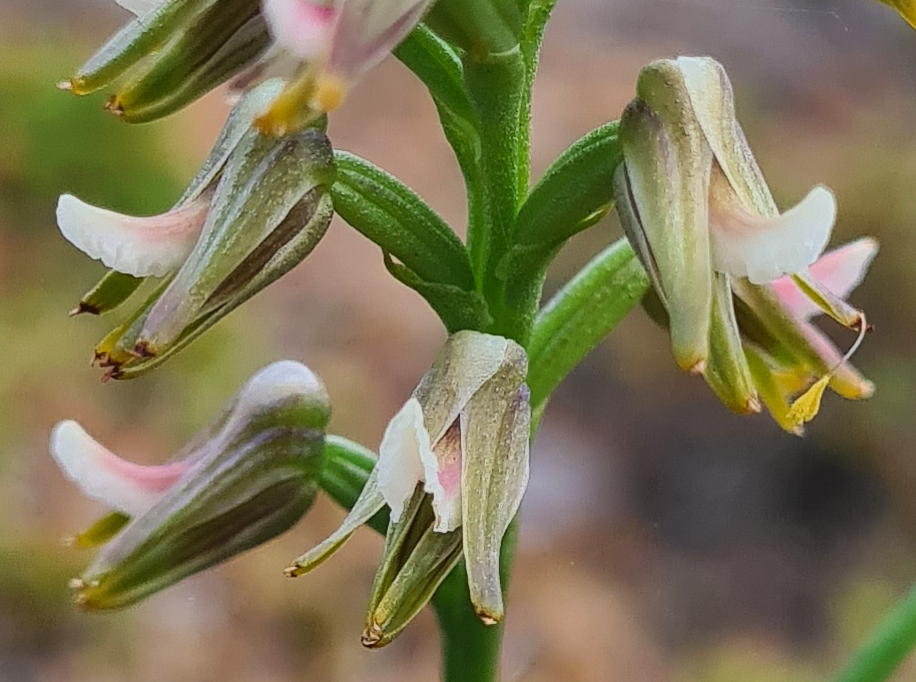
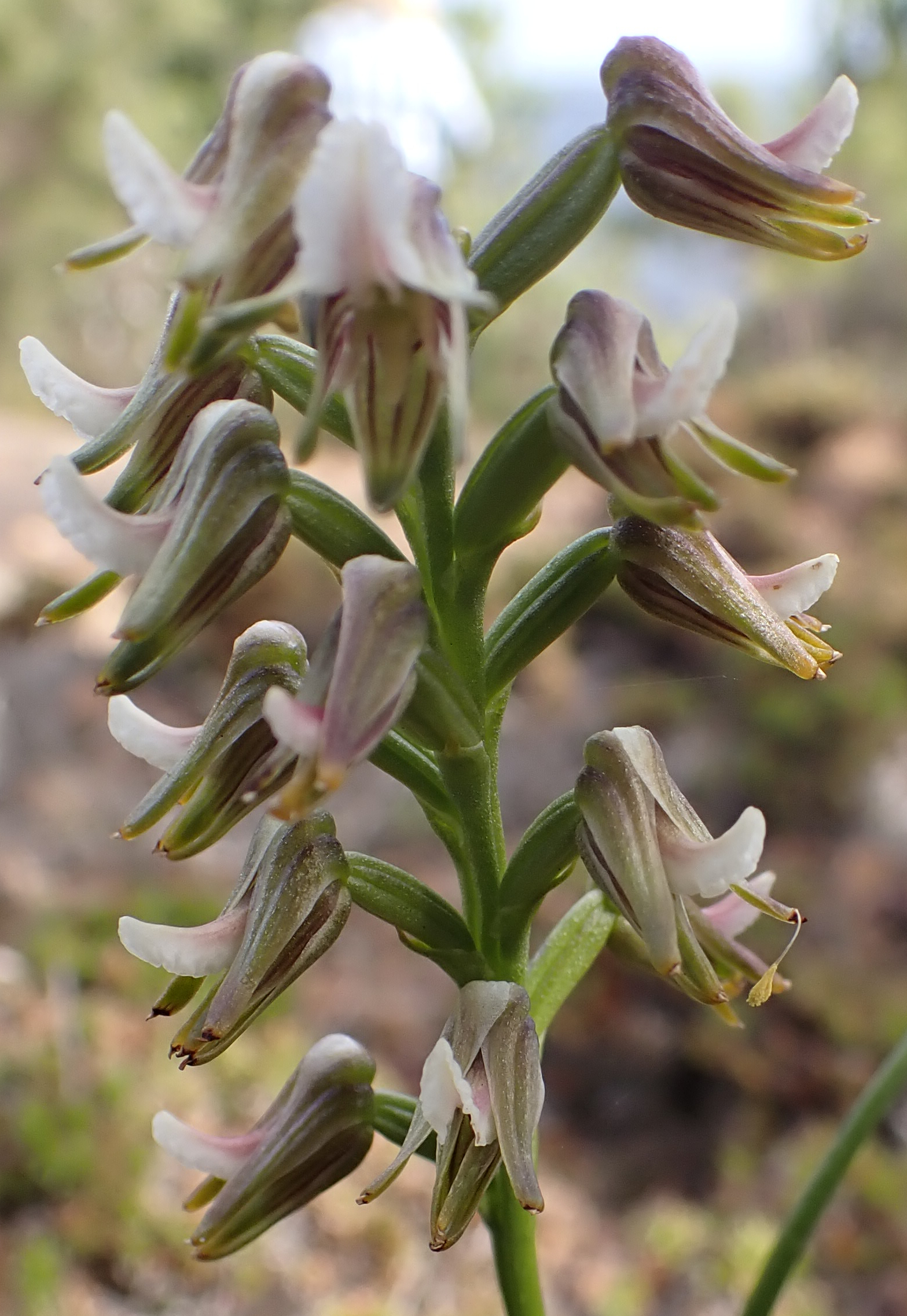

It is here we turn around as the track is getting rather steep and as orchids are so rare we decide we need to get back to check out other areas of the National Park. At another granite location possibly called Mount Eileen Lookout we find more Banded greenhoods and a nice patch of spent Mosquito orchids.

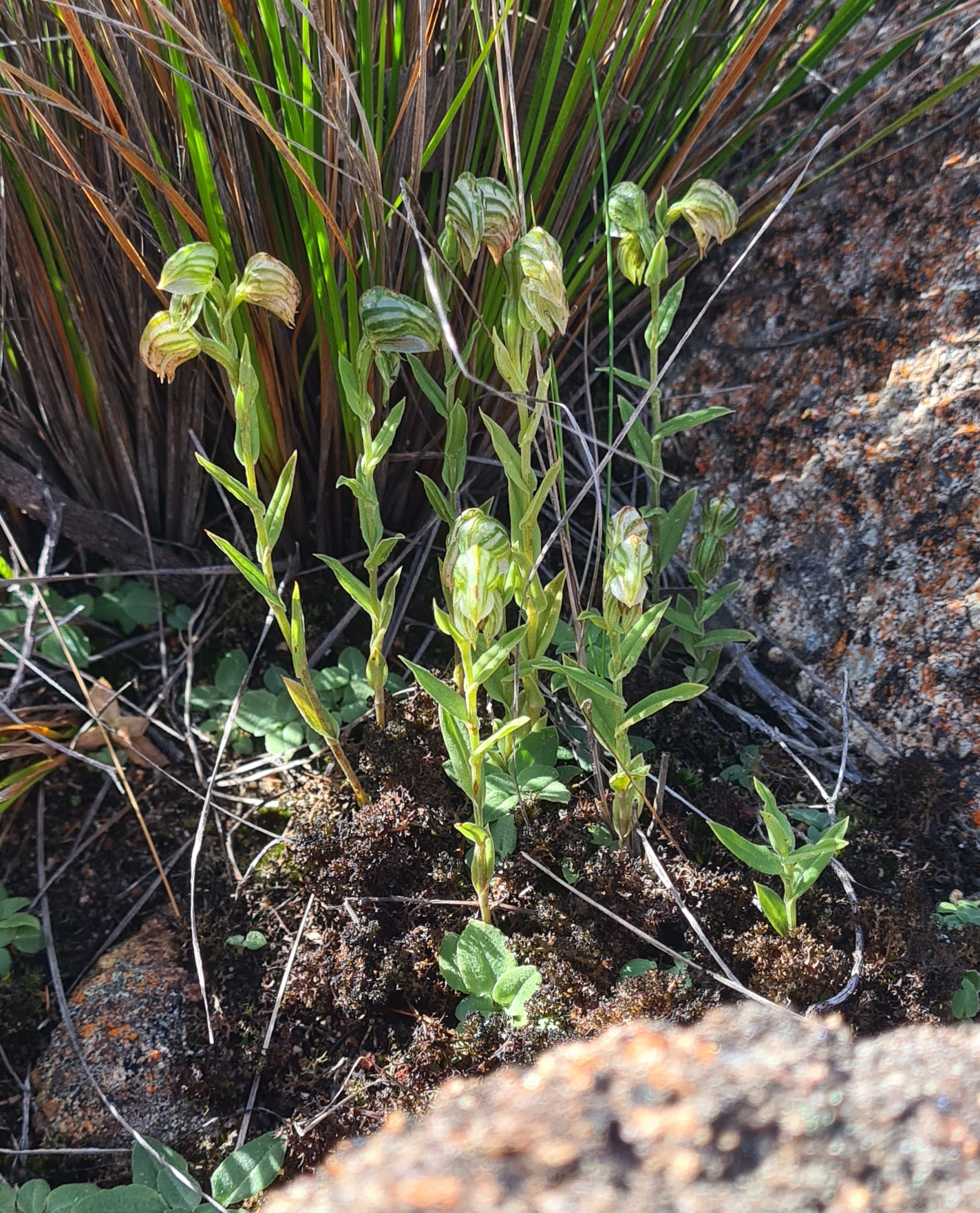


At the next little patch of granite crossed we are excited to find the Pink bunny orchid (Eriochilus scaber subsp. scaber) flowering. These small orchids are found during the months of July to September and are usually found the season after a summer bushfire. Without a summer fire they are flowering much more rarely.

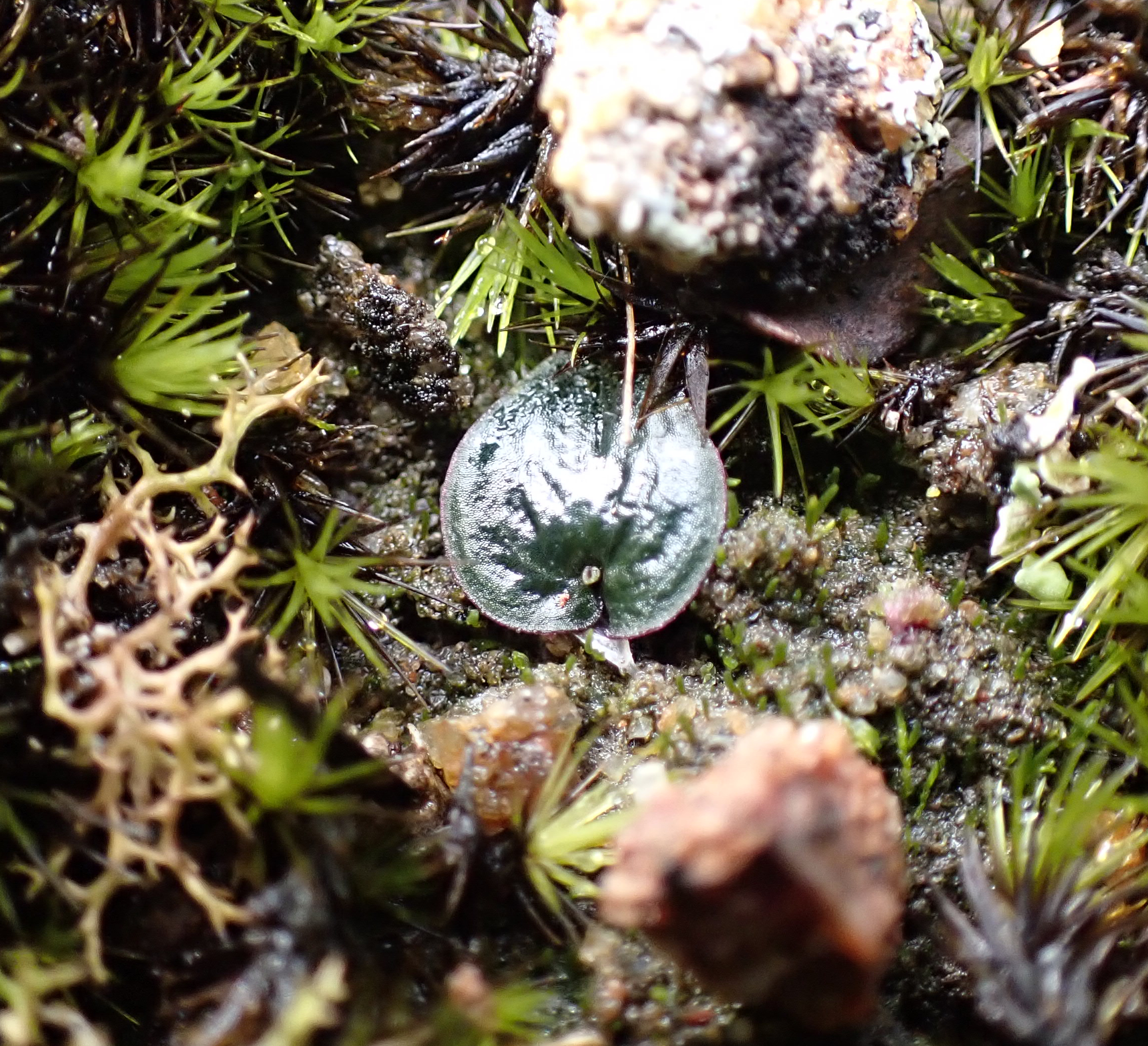
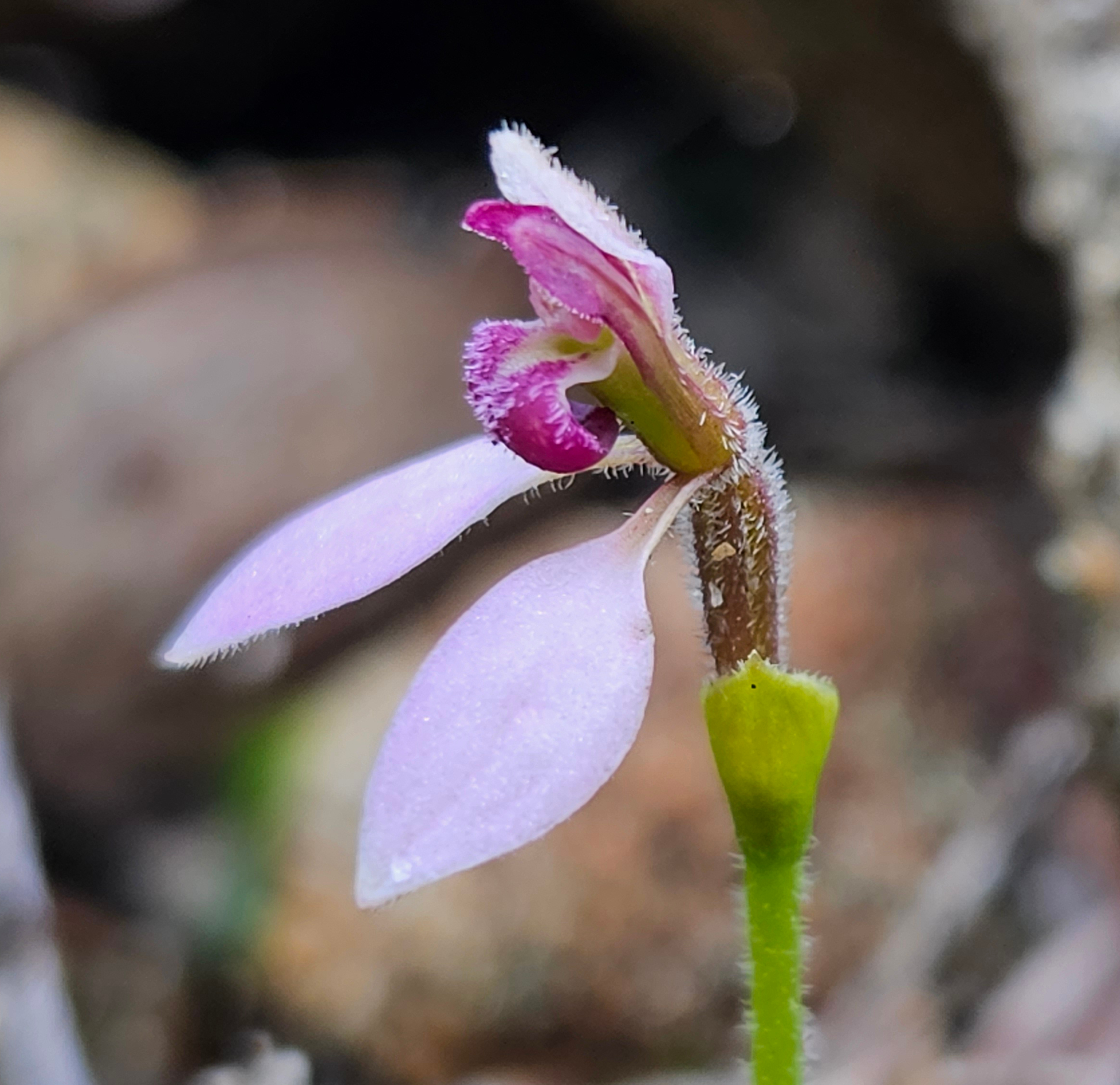
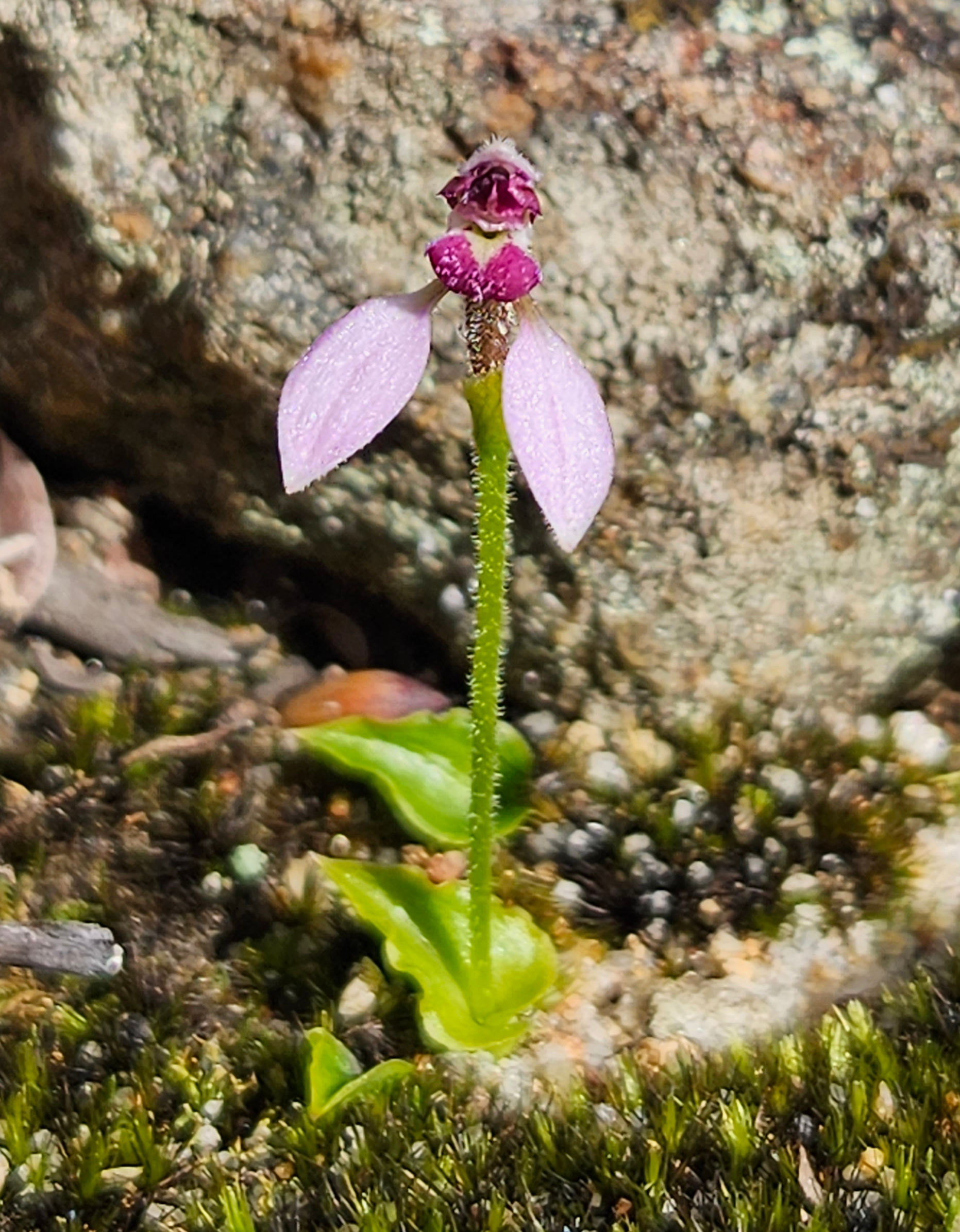

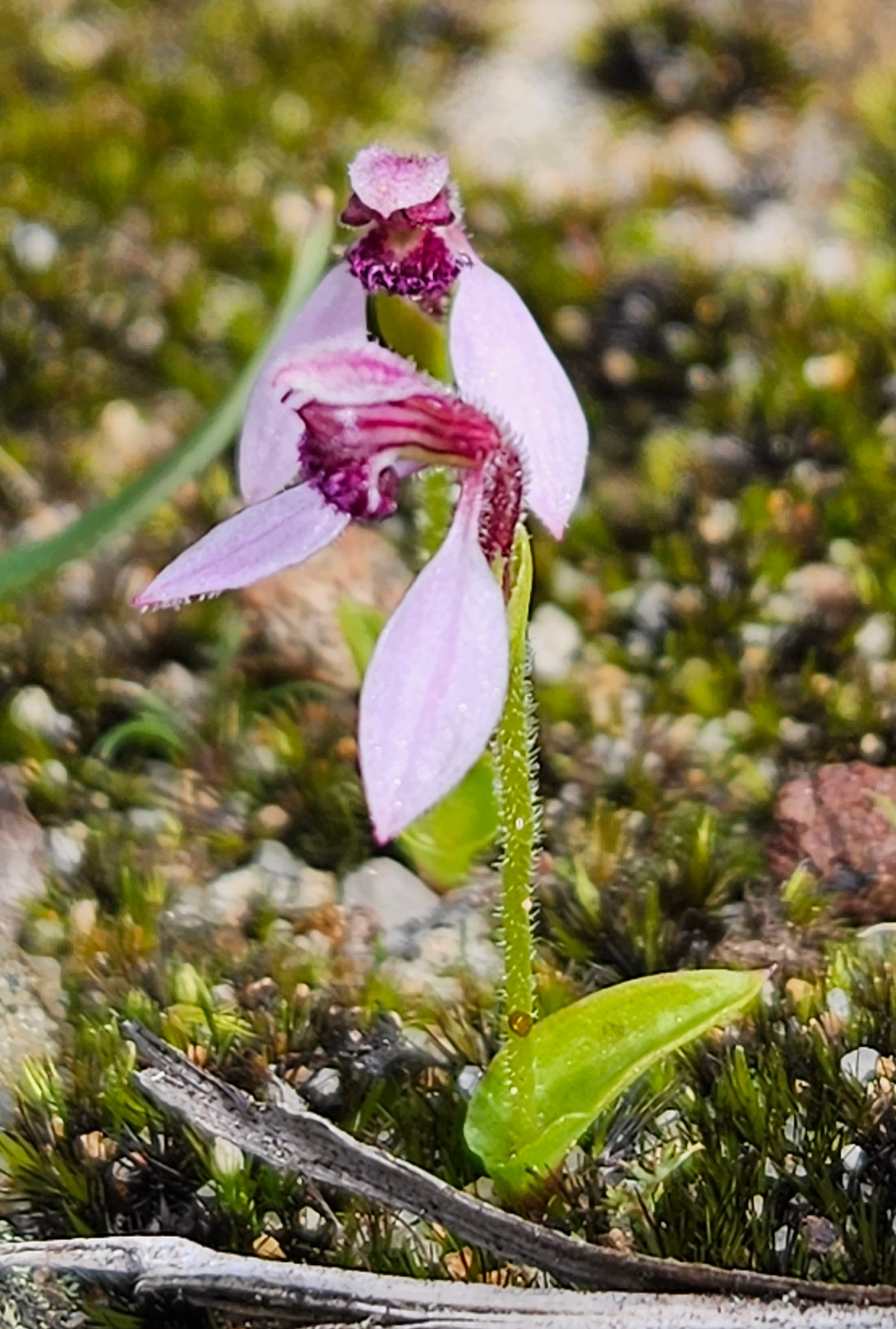
Upon arriving back at the carpark, we make tracks for Ledge Point Road and checked out Gull Rock Beach carpark. Seemed more peppermint trees around with no picnic table so we again had a tailgate lunch. A quick check whilst eating turned up some snail orchids. These ones however have long thin lateral sepals so are a different species to those found earlier today. Possible ID – Brittle snail orchid (Pterostylis timothyi) or Slender snail orchid (Pterostylis crispula). Both have long lateral sepals, flared petals and flower from July. P.timothyi though is not recorded as being found in the Albany shire, however it is the shorter of the two and has fewer cauline leaves, so I am confused. Any help in the ID would be appreciated.
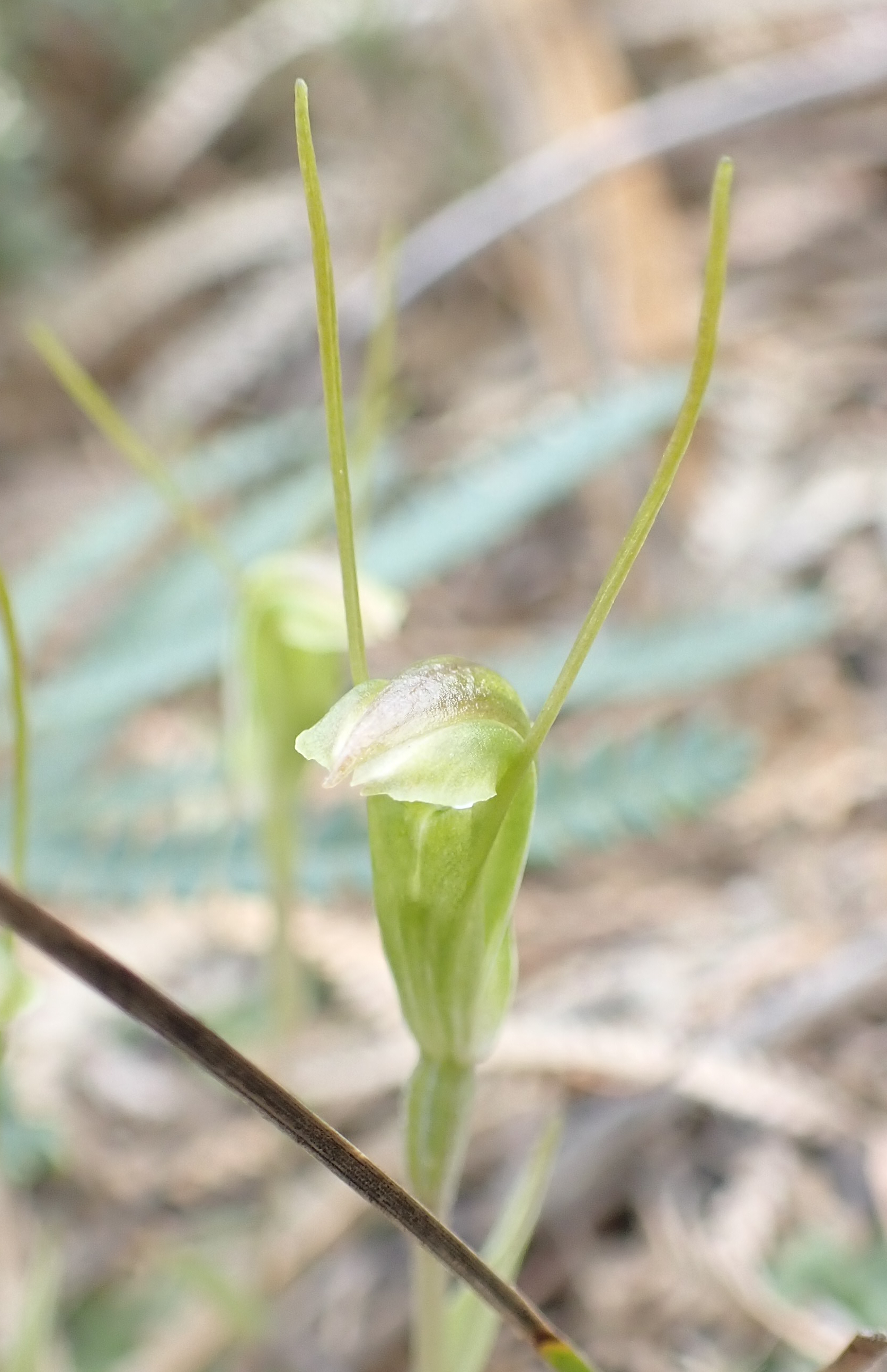
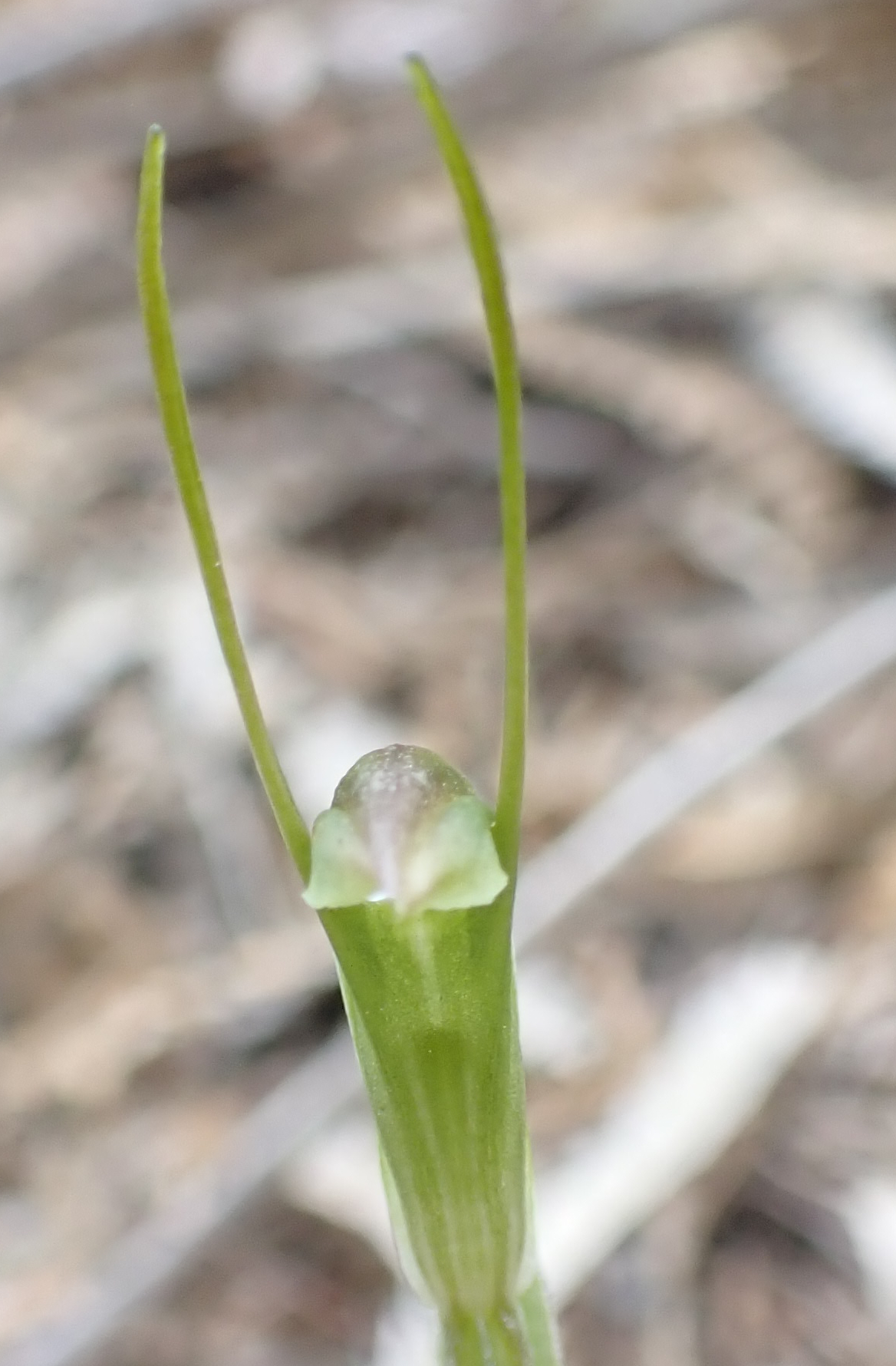



Now to check out some other spots in the National Park. We pull over at a gate off of Gull Rock Road and go for a hike up the track. The track goes through some differing habitats but unfortunately, we only find a few Banded greenhoods flowering.
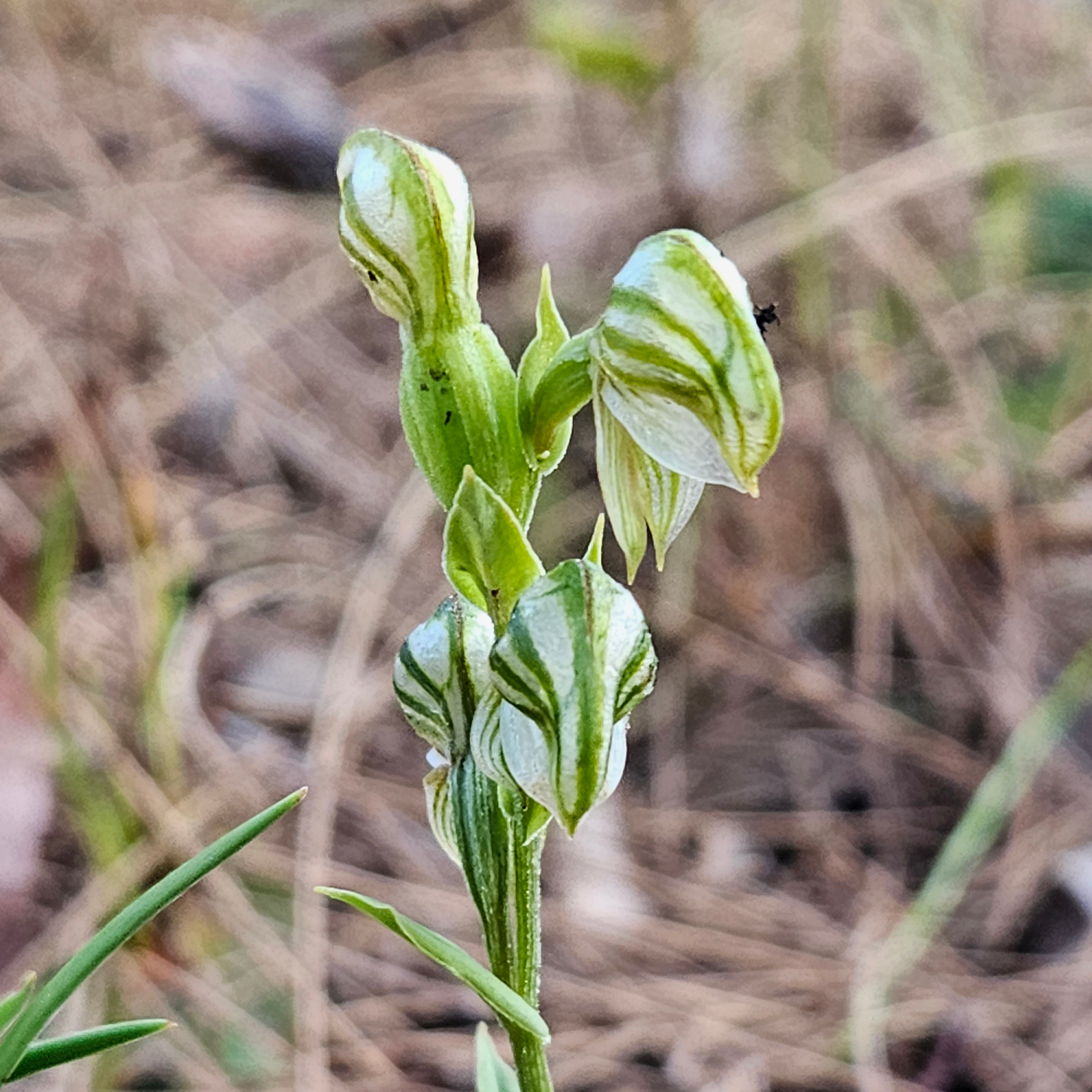


Further along the road we get excited to actually find a common orchid but one we had not seen so far today. The Jug orchid (Pterostylis recurva) is recorded as flowering from August, so we were lucky to find an early twin. Another single specimen was found together with another beautiful Scarlet banksia surrounded by blue flowers.

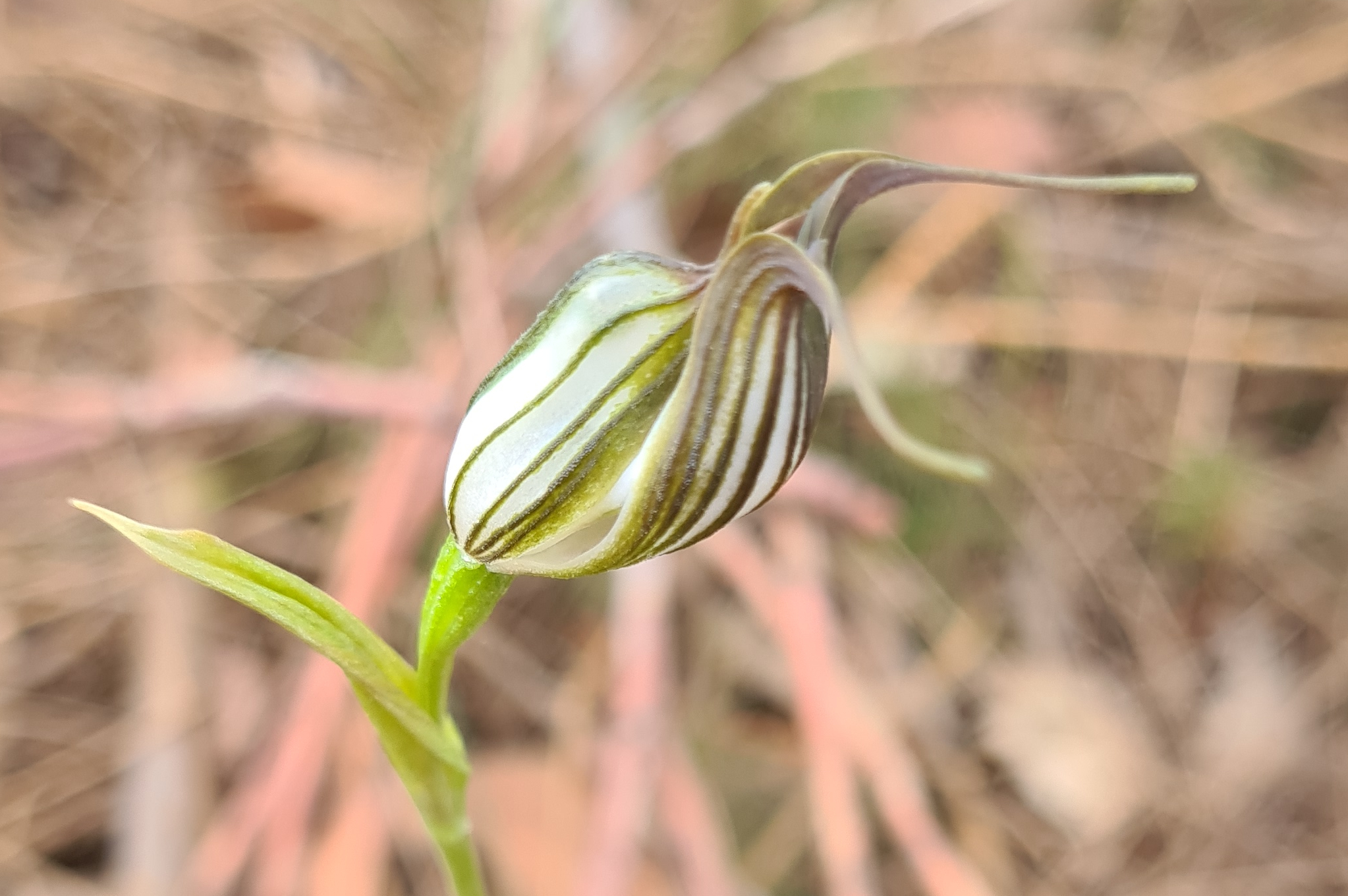
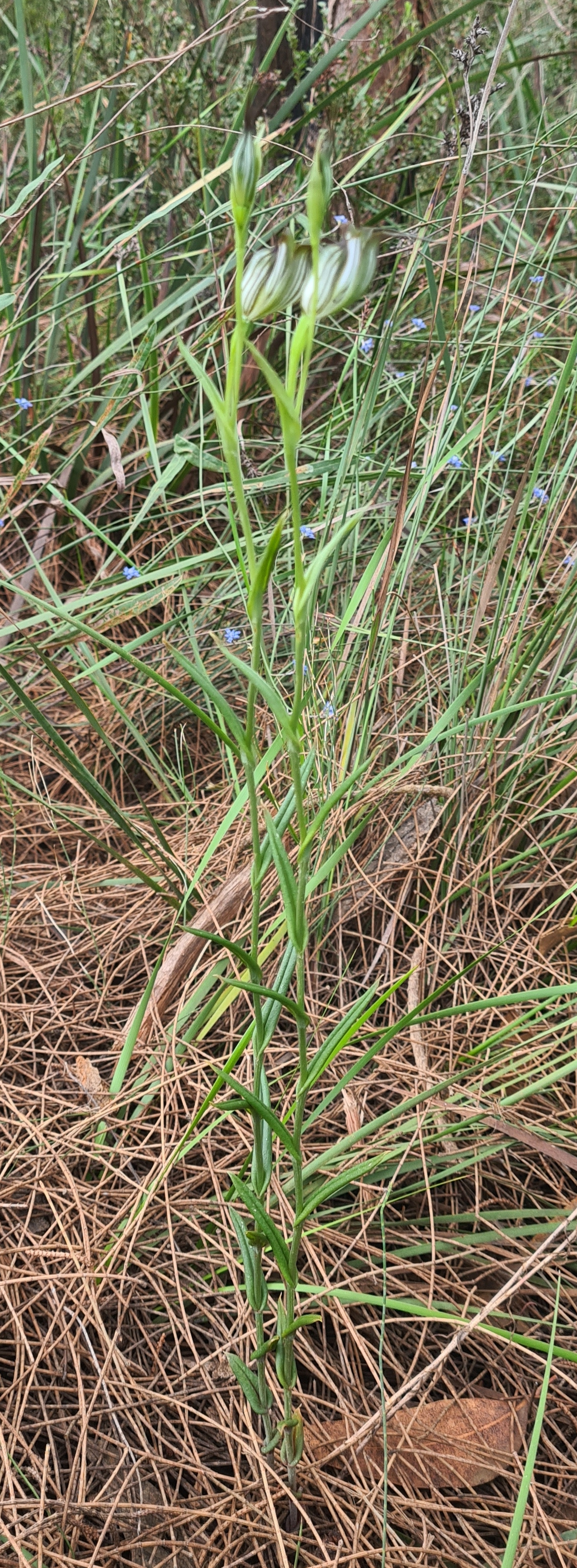

It was at this sole Jug orchid where we took a very overgrown track into the bush as it provided a much easier pathway off the road. We arrived at a sort of clearing with quite large boulders and pushed up mounds of dirt. It is around this disturbance that we find a few Autumn leek orchids in flower.
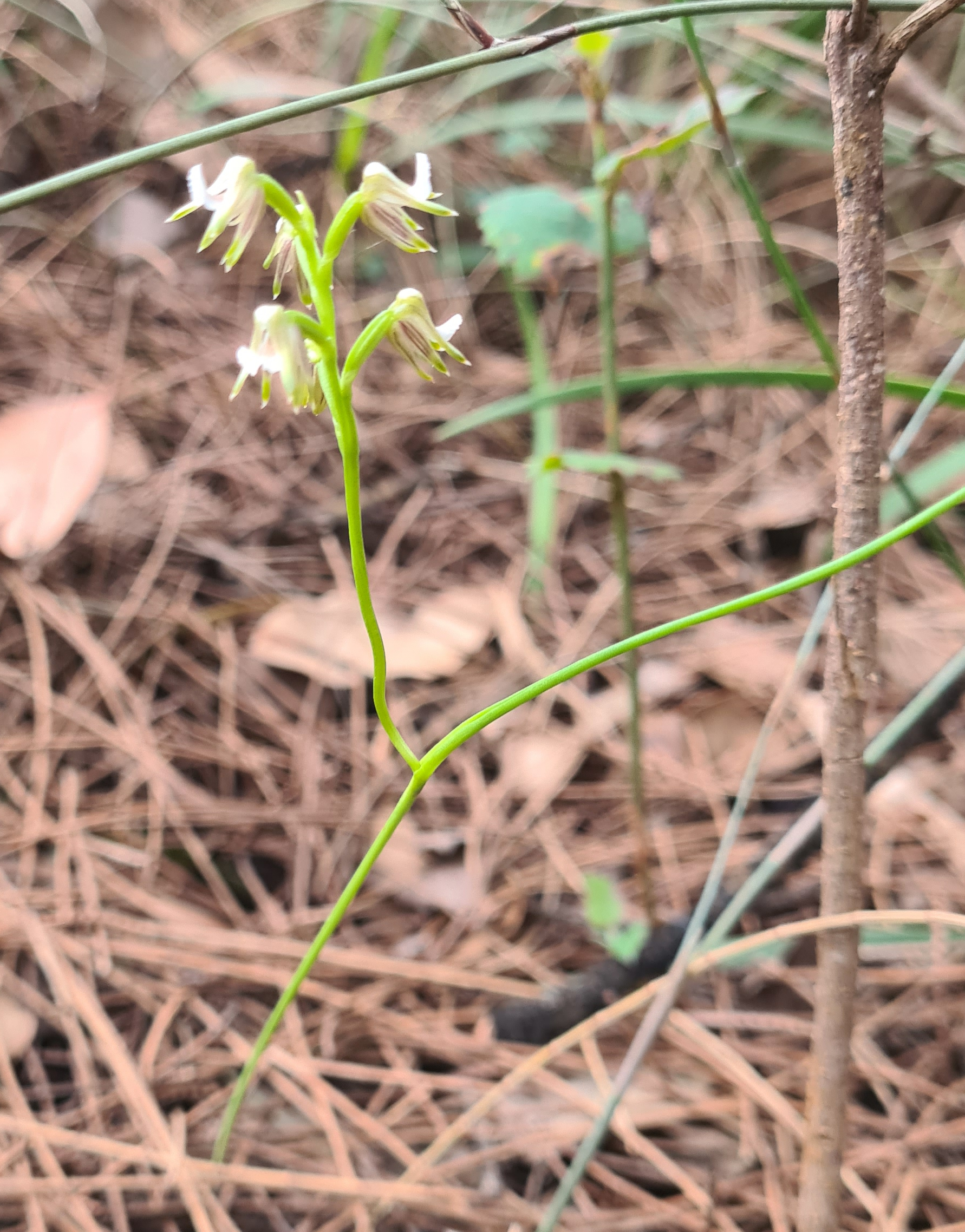

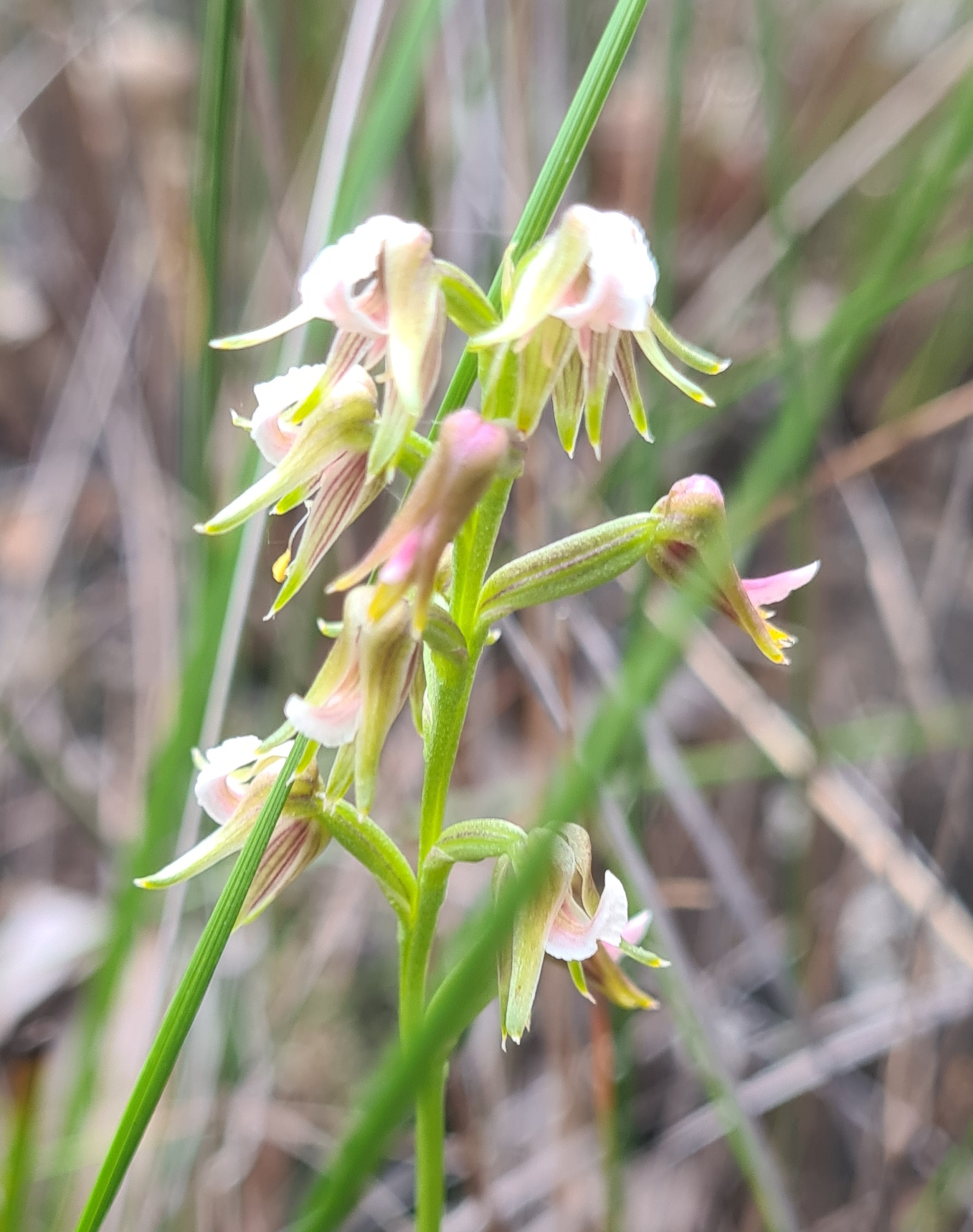



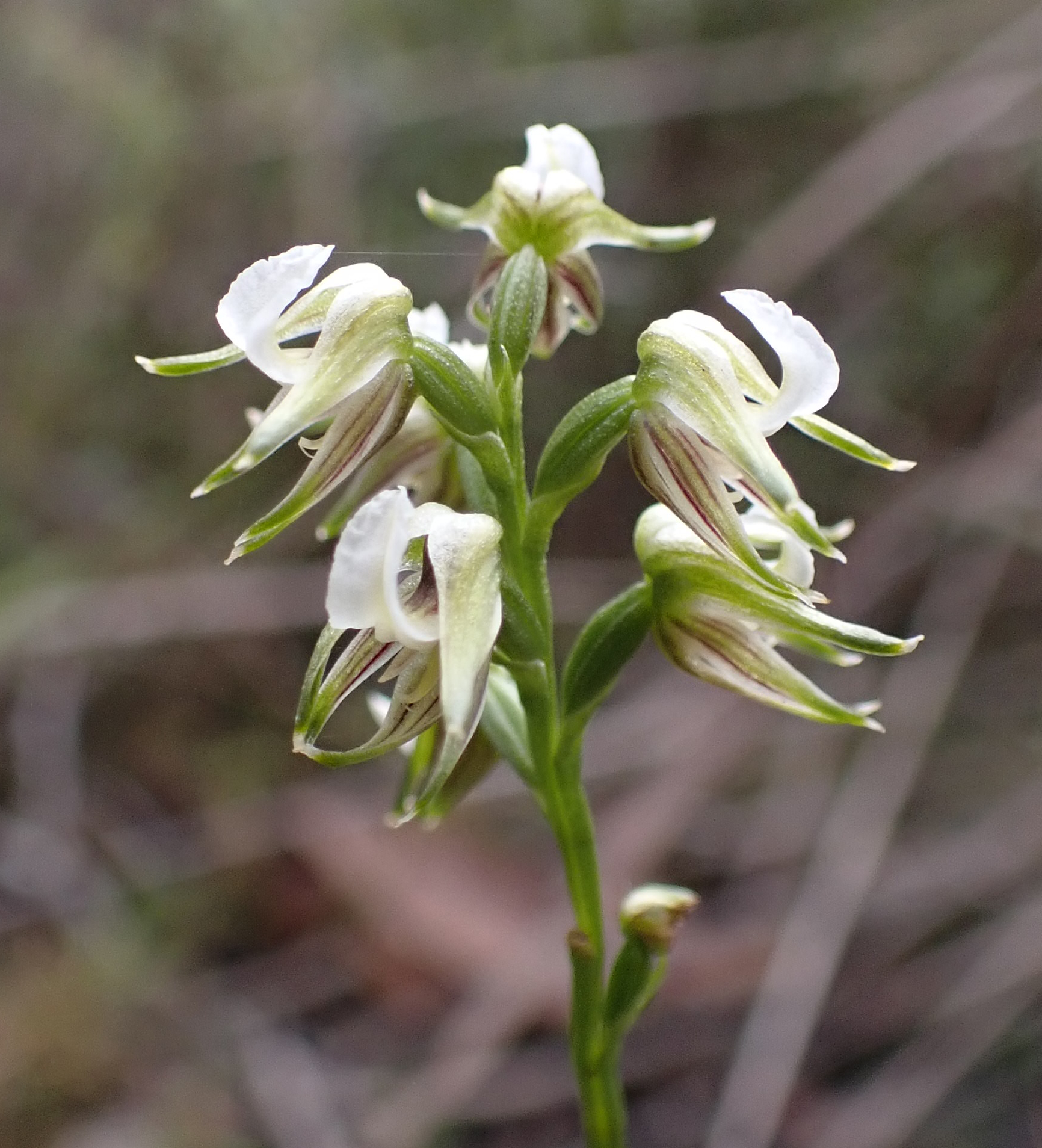
Well, that is the last of our orchid finds for today! Back in Albany we have the hard task of where to go for dinner. We decide to try out Little Italy in York Street and enjoy some beautiful pasta.
